
|
 |
 |
 |
 |
 |
EGG‑NEWS.com
Egg Industry News, Comments & More by
Simon M.Shane
|
 |
 |
 |
 |
 |
 |
Shane Commentary
Canada Concludes Supply Agreement with the Philippines
|
12/19/2025 |
|
 The Canadian Food Inspection Agency has announced an agreement for the Philippines to accept zoning in the event of an outbreak of African swine fever (ASF) in Canada. A similar agreement is in effect between the U.S. and Canada with respect to HPAI. Animal health regulators in both Canada and the Philippines are to be commended on their preemptive action with pork exports to the Philippines valued at $200 million annually. The Canadian Food Inspection Agency has announced an agreement for the Philippines to accept zoning in the event of an outbreak of African swine fever (ASF) in Canada. A similar agreement is in effect between the U.S. and Canada with respect to HPAI. Animal health regulators in both Canada and the Philippines are to be commended on their preemptive action with pork exports to the Philippines valued at $200 million annually.
In addition to the U.S., zoning agreements covering ASF have been concluded preemptively with the EU, Singapore, Hong Kong, Vietnam and the UAE.
The question arises as to why USDA has not initiated and concluded agreements with nations importing U.S. broiler parts in advance of the possible introduction of preventive vaccination since many nations trading with the U.S. and other exporters accept the World Organization of Animal Health principle of zoning (regionalization).

|
Effectiveness of mRNA Human Influenza Vaccines Confirmed
|
12/03/2025 |
|
Extreme proponents of MAHA consider vaccination of populations as deleterious. In addition in their universe, mRNA technology is condemned despite the obvious benefits and proven effectiveness in suppressing the COVID-19 pandemic.

A recent publication in the New England Journal of Medicine* confirmed the effectiveness of an mRNA influenza vaccine prepared by industry leader Pfizer in a Phase 2a trial. The mRNA vaccine was totally effective in suppressing fever and symptoms of influenza in participants challenged with H1N1 virus. Recipients of the seasonal quadrivalent egg-propagated vaccine showed 85 percent protection.
In a separate trial, a Moderna-prepared mRNA vaccine completely suppressed symptoms of influenza compared to 4.2 percent of the participants receiving the quadrivalent vaccine and 26.9 percent of nonvaccinated controls.
The Pfizer mRNA vaccine was not associated with undesirable side effects. Some reactogenicity occured with the Moderna vaccine including pain at the site of injection and transitory malaise.

Despite the condemnation of mRNA vaccines by uninformed public health Luddites citing spurious and unsubstantiated research and cherry-picked anecdotal reports, mRNA vaccines are safe and effective. Their greatest virtue is that they can be manufactured in large volume rapidly, and inexpensively and can be tweaked to respond to changes in viral exposure.
It is noted that the strains in the quadrivalent egg-propagated seasonal influenza vaccine are selected six months in advance of availability and deployment, precluding a rapid response to an emerging strain. Generally, world populations have been previously exposed to H1 and H3 influenza viruses and can mount an anamnestic response. The emergence of a zoonotic H5 virus currently circulating in commercial and migratory waterfowl reservoirs represents a challenge to public health authorities. A suitable mRNA vaccine could be rapidly manufactured and deployed to raise population immunity and suppress an epidemic or in a worst-case scenario, a pandemic.
Regrettably unfounded ideology and proven science cannot coexist to the ultimate detriment of our health and economy.
*Lindert, K. Human challenge trial of a nucleoside-modified messenger ribonucleic acid influenza vaccine. NEJM Evid. 2025; 4(12). doi:10.1056/EVIDoa2500087.

|
Mutations in H5N1 Characterized
|
11/24/2025 |
|
Mutations affecting pathogenicity and host range of H5N1 clade 2.3.4.4b represent the potential for emergence of a zoonotic strain. Studies conducted in South Korea in collaboration with virologists at St. Jude Children’s Hospital have demonstrated cell-mediated systemic dissemination, neural involvement and mortality in a ferret model.
The strain GA/W22-145E/22 derived from a scaup was subjected to molecular evaluation. The studies demonstrated mutations PB24718 and NP450N. These changes were responsible for enhanced polymerase activity and replication in both human peripheral blood mononuclear cells and in bovine mammary gland tissue. The markers that were identified by single cell rNA sequencing in combination with reverse genetics demonstrated that mutations in the PB2 and NP genes can vastly alter pathogenicity.
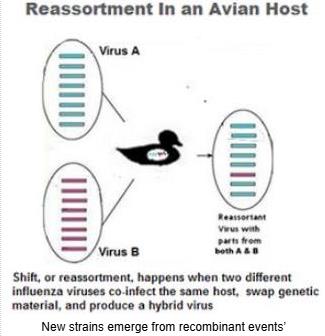 It is presumed that mutations arose from reassortment of Eurasian 2.3.4.4b H5N1 viruses with North American low-pathogenicity strains to incorporate gene segments into virus circulating among wild birds with spillover to commercial flocks and dairy herds. It is presumed that mutations arose from reassortment of Eurasian 2.3.4.4b H5N1 viruses with North American low-pathogenicity strains to incorporate gene segments into virus circulating among wild birds with spillover to commercial flocks and dairy herds.
Emergence of enhanced virulence with neurotropism suggest enhanced measures to control and prevent avian influenza in commercial poultry flocks. The greater the number of birds infected especially on large egg-production complexes and in areas with a high density of turkeys will contribute to the emergence of mutant viruses with increased pathogenicity.
Extensive outbreaks of H5N1 B3-13 strain in dairy herds coupled with devastating mortality among marine mammals should serve as a warning to public health regulators of the risk of H5N1 zoonosis. The implications of a human outbreak with the costs and disruption as experienced during the COVID pandemic should be considered in relation to current policy relating to control that excludes vaccination of commercial flocks at risk. Preservation of the current export market for broiler leg quarters is a valid consideration, but the risks and consequences of a human pandemic should be considered in developing a strategy for deployment of vaccines.
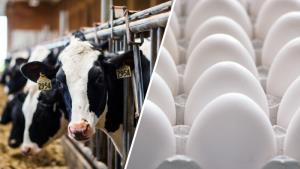 In the unfortunate event of extension of H5N1 to human populations, those opposing vaccination based on retention of exports applying spurious scientific interpretations will have to answer to a higher authority. In the unfortunate event of extension of H5N1 to human populations, those opposing vaccination based on retention of exports applying spurious scientific interpretations will have to answer to a higher authority.
*Young-Il Kim et al., North American H5N1 viruses with mutations infect immune cells. Science Advances doi:10.1126/sciadv.adv1208 September 2025.

|
Rebuttal of Proposal on HPAI by Secretary Kennedy
|
09/18/2025 |
|
On March 18th Robert F. Kennedy Jnr. Secretary of the Department of Health and Human Services (HHS), opined that outbreaks of highly pathogenic avian influenza should be allowed to run their course without federal or state intervention. This misinformation generated by Secretary Kennedy in his Fox News interview was immediately endorsed by Brook Rollins, Secretary of the Department of Agriculture, charged with the responsibility to prevent and control livestock and poultry diseases.

The statement by Secretary Kennedy evoked a negative response from Congress and general opprobrium from epidemiologists, virologists and practicing poultry veterinarians. A rebuttal was published in early July in Science* authored by epidemiologists and infectious disease specialists affiliated with the Bloomberg School of Public Health, Johns Hopkins University.
The implication in the Kennedy statement was that any survivors, possibly less than five percent of the flock, would be resistant to avian influenza and might be suitable to propagate ‘resistant chickens.’ Breeding from survivors would be impractical given that commercial laying strain hens and turkeys are hybrids and any attempt at propagation would result in profound loss of commercial traits. Those following Secretary Kennedy’s proposal may be left with a few chickens or turkeys at the end of an outbreak, but their progeny would be grossly inferior to commercial product. In any event the likelihood that they would be refractory to HPAI is remote. Chicken strains producing either eggs or meat represent the genetic contribution of at least three generations of highly selected male and female lines. The proposed program analogous to ‘genetic suicide’ would revert the U.S. poultry to the early 1900s and place the industry at an extreme disadvantage. Failure to effectively suppress HPAI will inevitably create shortages, benefiting potential exporters to the U.S. and result in higher prices to consumers.
The second consequence of the Kennedy “Let er’ rip” approach would be widespread dissemination of virus from affected farms. The companion article in this edition makes reference to the 2020 and 2021 outbreaks of H5N8 HPAI in commercial waterfowl in France. It was determined that the period between infection initiating propagation of virus and an eventual diagnosis extended to nine days. The USDA-APHIS in cooperation with state regulators and industry veterinarians has refined and expedited preliminary and confirmatory procedures for diagnosis, followed by depopulation of flocks to limit spread. This has limited outbreaks as evidenced by field investigations suggesting that in early 2025 seventy percent of outbreaks were associated with direct or indirect introduction of virus from wild bird reservoirs and were less associated with farm-to-farm transmission. Allowing perpetuation of infection on large complexes some of which exceed two million laying hens would inevitably result in infection of neighboring farms in addition to free-living mammals and non-migratory resident birds. This has occurred following infection of dairy herds with bovine influenza attributed to the H5N1 B13.3 strain.
 Willful failure to control avian influenza would result in universal embargos on U.S. exports of broiler, turkey and egg products. Compliance with WOAH standards require rapid control of outbreaks through quarantine, depopulation and appropriate structured surveillance. The risk of losing export markets is the major justification of opposition to vaccination. This modality as an adjunct to biosecurity has been proposed for egg-production and turkey flocks in high-risk areas geographically removed from the main centers of broiler production. The policy suggest by Secretary Kennedy with initial concurrence by Secretary Rollins, is a negation of all that USDA has achieved over decades and ignores progress exemplified by the National Poultry Improvement Plan and establishment of WOAH compartments free of infection. The Kennedy approach would destroy the confidence established in the APHIS by veterinary regulators in importing nations. Willful failure to control avian influenza would result in universal embargos on U.S. exports of broiler, turkey and egg products. Compliance with WOAH standards require rapid control of outbreaks through quarantine, depopulation and appropriate structured surveillance. The risk of losing export markets is the major justification of opposition to vaccination. This modality as an adjunct to biosecurity has been proposed for egg-production and turkey flocks in high-risk areas geographically removed from the main centers of broiler production. The policy suggest by Secretary Kennedy with initial concurrence by Secretary Rollins, is a negation of all that USDA has achieved over decades and ignores progress exemplified by the National Poultry Improvement Plan and establishment of WOAH compartments free of infection. The Kennedy approach would destroy the confidence established in the APHIS by veterinary regulators in importing nations.
The Science article did not adequately stress the consequences of even the remote possibility of emergence of a zoonotic strain of H5N1. It is axiomatic that the quantum of virus circulating among infected flocks will predicate mutations or even facilitate a recombinant event that may establish H5N1 as a human pathogen. Although the World Health Organization and USDA regard the emergence of a strain capable of human-to-human transmission as remote, the consequences would be catastrophic. Any future conformation of sustained transmission from cattle or poultry to humans would be regarded with concern by consumers, potentially depressing the sale of eggs and poultry meat. To date humans diagnosed with mild symptoms of H5N1 as a result of intimate contact with infected flocks or herds have represented end-hosts with no contagion among their contacts.
The economic and social impacts of the COVID pandemic extending from 2020 through to effective immunization, suggest the magnitude and consequences of emergence of a zoonotic strain of H5N1. This is especially relevant with the prevailing reluctance to promote human vaccination. The achievements of “Operation Warp Speed” appear to have been negated through cancellation of research on mRNA vaccines by Secretary Kennedy. This is attributed to the embrace of pseudo-science, sophistry and misinformation in HHS agencies, driving public health policy. In the absence of a fully staffed CDC with appropriate funding and resources, including outreach to state and regional departments of health, the emergence of an H5N1 outbreak among humans would be delayed to the detriment of control measures. Distrust of public health and rejection of masking and quarantines would promote dissemination of infection. Irrespective of species, control of avian influenza in poultry should be based on current control measures supported by localized tactical vaccination.
To paraphrase Dr. Mandy Cohen, previously Director of the CDC and the North Carolina Department of Health, facts and science must determine policy, independent of politics. Secretary Kennedy is entitled to his opinions but not his facts or established scientific principles.
To review previous postings on HPAI and the risks of emergence of a zoonotic strain enter "avian influenza" in the SEARCH button
Sorrell, E. et al. The consequences of letting avian influenza run rampant in US poultry. Science July 3, 27-29

|
Meaningless APHIS Action on Importation of Ducks From France is Ingenuous
|
01/19/2025 |
|
 This past week, the USDA-Animal Health and Plant Inspection Service (APHIS) lifted trade restrictions on live poultry from France, provided these flocks were not vaccinated against HPAI. The release indicated “The U.S. can maintain safe trade with fewer restrictions on poultry from unvaccinated flocks that aligns with World Organization for Animal Health (WOAH) guidelines.” This is a self-serving misstatement of WOAH policy. The Organization accepts vaccination as an adjunct to biosecurity to control avian influenza. This past week, the USDA-Animal Health and Plant Inspection Service (APHIS) lifted trade restrictions on live poultry from France, provided these flocks were not vaccinated against HPAI. The release indicated “The U.S. can maintain safe trade with fewer restrictions on poultry from unvaccinated flocks that aligns with World Organization for Animal Health (WOAH) guidelines.” This is a self-serving misstatement of WOAH policy. The Organization accepts vaccination as an adjunct to biosecurity to control avian influenza.
The restriction on importation of live poultry and products from vaccinated flocks is based on the premise that “birds may not show symptoms potentially leading to the export of infected animals or contaminated products”. Emphasizing the distinction between products from vaccinated and unvaccinated flocks is intended to reinforce the U.S. policy of withholding vaccination from the segments of the industry most affected by species susceptibility and location.
 The comment that “vaccinated birds may not show symptoms potentially leading to export of the infected animals or contaminated products” is valid but in the context of available technology is a fallacy bordering on sophistry. In the age of PCR, it is possible to certify that a flock or a number of flocks intended for export as a consignment were free of avian influenza at the time of harvest. Differentiating between infected and vaccinated flocks is also possible using available DIVA vaccines. APHIS is following the lead of King Canute, the medieval Anglo-Saxon ruler who believed he could command the tides to recede, but he ended up with a wet perineum. The APHIS is not controlling HPAI as evidenced by the incidence rate and magnitude of losses due to HPAI. Infection is clearly endemic to North America and is characterized by seasonal outbreaks associated with the migratory movement of waterfowl. The comment that “vaccinated birds may not show symptoms potentially leading to export of the infected animals or contaminated products” is valid but in the context of available technology is a fallacy bordering on sophistry. In the age of PCR, it is possible to certify that a flock or a number of flocks intended for export as a consignment were free of avian influenza at the time of harvest. Differentiating between infected and vaccinated flocks is also possible using available DIVA vaccines. APHIS is following the lead of King Canute, the medieval Anglo-Saxon ruler who believed he could command the tides to recede, but he ended up with a wet perineum. The APHIS is not controlling HPAI as evidenced by the incidence rate and magnitude of losses due to HPAI. Infection is clearly endemic to North America and is characterized by seasonal outbreaks associated with the migratory movement of waterfowl.

Apart from the reality that USDA has failed in their attempt to either control or eradicate HPAI based on a slaughter-out policy, expenditure on indemnity and logistics is draining the resources of the Commodity Credit Corporation. Drawing on this bottomless piggy bank to support an ineffective program is probably illegal use of funding. The public sector expenditure pales in comparison to the immense cost to consumers of high-priced eggs, reflecting the  disequilibrium between supply and demand. During the 2015 epornitic consumers paid approximately $2 per dozen more for seven billion dozen eggs than they would have in the absence of depopulation due to HPAI amounting to an estimated $15 billion. The cost in 2024 is considerably higher given the wider differential in shelf price driven by a five percent reduction in the producing flock. disequilibrium between supply and demand. During the 2015 epornitic consumers paid approximately $2 per dozen more for seven billion dozen eggs than they would have in the absence of depopulation due to HPAI amounting to an estimated $15 billion. The cost in 2024 is considerably higher given the wider differential in shelf price driven by a five percent reduction in the producing flock.
Vaccination against avian influenza is not a panacea and will require continued biosecurity and ongoing surveillance to support exports. Immunization is accepted by the World Organization of Animal Health as an adjunct to biosecurity procedures to control HPAI. Immunization is applied with evident epidemiologic and economic benefits to reduce the incidence rate of HPAI in specific segments of the world poultry industry. Adoption of preventive vaccination for U.S. egg production flocks, commercial turkeys and possibly breeders in areas with a history of outbreaks should be considered as a modification of current APHIS policy. Withholding vaccination as a component of an integrated program responding to an endemic disease spread by deficiencies in biosecurity and by aerogenous route will perpetuate the disease. The longer HPAI persists in withholding immunization of U.S. poultry populations the greater will be the probability of an emerging zoonotic strain with potential for contagion. to an endemic disease spread by deficiencies in biosecurity and by aerogenous route will perpetuate the disease. The longer HPAI persists in withholding immunization of U.S. poultry populations the greater will be the probability of an emerging zoonotic strain with potential for contagion.

|
Extension of Farm Bill Imperative
|
12/16/2024 |
|
 The delayed 2023 Farm Bill was extended to September 30th based on the reality that Democratic and Republican members of the respective House and Senate Agricultural Committees could not agree on critical issues including SNAP payment and eligibility and the magnitude of farm commodity support payments. It is unlikely that the 118th Congress will frame a suitable Farm Bill and the responsibility will be passed to the 119th Congress that will take office on January 3rd. Accordingly, a continuing resolution will be required to maintain funding for federal programs. The delayed 2023 Farm Bill was extended to September 30th based on the reality that Democratic and Republican members of the respective House and Senate Agricultural Committees could not agree on critical issues including SNAP payment and eligibility and the magnitude of farm commodity support payments. It is unlikely that the 118th Congress will frame a suitable Farm Bill and the responsibility will be passed to the 119th Congress that will take office on January 3rd. Accordingly, a continuing resolution will be required to maintain funding for federal programs.

Agricultural associations are naturally lobbying for their constituencies. The National Pork Producers Council, responsible for scuttling the “Egg Bill” in 2013 is strongly advocating for inclusion of a version of the EATS Act in the delayed 2013 Farm Bill that would effectively eliminate restrictive state laws and regulations including California Proposition #12 and its clones. Some pork producers are obviously concerned over the need to replace gestation crates with group housing of sows. The industry has effectively made considerable progress in conversion based on the demands of customers. A segment of the pork industry fails to recognize that the train has long since left the station and that inexorably gestation crates and those using them will be phased out based on customer and consumer preferences. Perpetuation of the status quo cannot be propped up by inappropriate legislation.
During this period of indecision over enactment of a bipartisan Farm Bill, pork producers and other segments of livestock agriculture are at risk. This is based on restraints on funding market access and foreign market development, upgrading protection from foreign animal diseases and the application of resources that will enhance productivity and potentially reduce cost. The deadline for a continuing resolution is December 20th when all federal funding ceases.

In contrast to the pork producers, the egg industry accepted the need to satisfy the market for eggs produced in other than conventional cages through investment in new facilities. Subsequent price differentiation has confirmed the financial benefit from conversion to alternative systems that now represents forty percent of housing capacity. Responsible pork producers and packers have adopted a similar approach. This leaves a voluble minority disinclined to invest in improved housing for sows. They are attempting to influence legislation to buttress perpetuation of an inhumane housing system. They may regret their intransigence as markets for their products will shrink.

|
Recrimination in Cancelled Kroger-Albertsons Merger to Enrich Litigators
|
12/16/2024 |
|

Following the concurrent decisions by U.S. District Judge Adrienne Nelson in Oregon and King County Superior Court Judge Marshall Ferguson both ruling against the proposed merger of Kroger and Albertsons, the investment companies controlling Albertsons cancelled the proposed transaction and initiated legal action against the Kroger Company. The merger, proposed nearly two years ago involving a $24.6 billion transaction, would have combined the second and fourth largest supermarket chains, limiting competition and placing consumers, especially in western states, at a disadvantage.

The Oregon ruling granted the Federal Trade Commission a temporary injunction against the merger. The decision did not necessarily squelch the deal but informed observers suggested that continuation to completion of the transaction would be extremely difficult and expensive. Judge Ferguson characterized the proposed merger as “unlawful,” writing, “The plan to divest 579 stores to C&S Wholesale Grocers failed to provide adequate competition not because it divests too few stores but because C&S is unlikely to be able to run them in a way that restores competition.” This is a reference to the failure of Hagen that acquired stores with the acquisition of Safeway by Albertsons, only to file for bankruptcy within a year following the transaction.
Judge Nelson noted, “The overarching goals of antitrust law are not met, however, by permitting an otherwise unlawful merger in order to permit firms to compete with an industry giant” This is a refutation of the contention by Kroger that a merger was necessary to compete with Amazon, Walmart and Costco.

There was implacable opposition to the merger by the Federal Trade Commission, the Attorneys General of nine states in addition to the two unions representing workers among both chains. The adverse rulings in Oregon and Washington state obviously convinced the owners of Albertsons that the merger would not happen and that pursuing the transaction even under the incoming Administration would be disruptive and extremely expensive. The decision to terminate the proposed merger, or effectively an acquisition, was obviously justified if not delayed by awaiting the courts’ decisions.
Albertsons is now suing the Kroger Company, claiming the $900 million breakup fee and claiming extensive but unspecified damages for legal expenses, disruption and possibly loss of reputational image as a result of disclosures in the two trials. Albertsons is claiming that Kroger offered too little to placate opponents despite offers to workers and a statement to “invest” in store upgrades and to reducing prices over the short term. Tom Moriarty General Counsel for Albertsons stated, “Rather than fulfill its contractual obligations to ensure that the merger succeeded, Kroger acted in its own financial self-interest repeatedly providing insufficient divestiture proposals that ignored regulators’ concerns. He characterized Kroger actions as “Self-serving conduct taken at the expense of Albertsons and the agreed transaction that has harmed Albertsons shareholders, associates and consumers.” He concluded, “We are disappointed that the opportunity to realize the significant benefits of the merger has been lost on account of Kroger’s willful approach to securing regulatory clearance.”
The fallout between the parties will have implications beyond the immediate announcement of the termination of the agreement. Executives at Safeway will lose their golden parachutes. Rodney McMullen CEO of Kroger, the initiator and advocate for the merger/acquisition, will be subject to criticism by shareholders, if not his Board for overreach and expenditure on legal fees measured in the hundreds of millions. The winners are obviously workers at both Kroger and Albertsons stores, consumers who will benefit from competition and above all, the legal fraternity. Suppliers to Kroger and Albertson’s chains, especially in western states will be an additional cohort of beneficiaries. Failure of the proposed merger will absolve them from having to submit to the massive buying power of a single large entity representing as much as 60 percent of food purchases in some states including Washington.
FTC Competition Director, Henry Liu, characterized the court verdicts and the subsequent announcement of the termination as “A victory for the American people through protecting millions of Americans across the country from higher prices for essential groceries, ultimately allowing consumers to keep more money in their pockets”.

|
Concern over Zoonotic H5N1 Infection
|
11/27/2024 |
|
 To date, there have been 53 confirmed human cases of H5N1 avian influenza in seven states according to the U.S. Centers for Disease Control and Prevention. Half the cases were attributed to exposure to infected dairy herds in California with 385 cases confirmed. The remainder involved workers depopulating flocks infected with HPAI in Colorado, Washington State, Michigan and Oregon. All the poultry and bovine-acquired cases were characterized by conjunctivitis and in some cases mild transitory upper respiratory symptoms. To date, there have been 53 confirmed human cases of H5N1 avian influenza in seven states according to the U.S. Centers for Disease Control and Prevention. Half the cases were attributed to exposure to infected dairy herds in California with 385 cases confirmed. The remainder involved workers depopulating flocks infected with HPAI in Colorado, Washington State, Michigan and Oregon. All the poultry and bovine-acquired cases were characterized by conjunctivitis and in some cases mild transitory upper respiratory symptoms.
 The California Department of Public Health is investigating a sporadic case in a child demonstrating mild upper respiratory involvement. The case responded to antiviral and supportive therapy, unlike the case in British Colombia where the patient is receiving intensive care. The California Department of Public Health is investigating a sporadic case in a child demonstrating mild upper respiratory involvement. The case responded to antiviral and supportive therapy, unlike the case in British Colombia where the patient is receiving intensive care.
Public health authorities in numerous states recommend seasonal influenza vaccination for all personnel coming into contact with live poultry in order to avert a possible recombinant event. This may be possible between H5N1 avian influenza virus in a flock and a human strain that may result in a new zoonotic virus that may develop the capability for contagion subject to further mutations.

|
Mainstream Media Notes Rising Egg Prices
|
11/26/2024 |
|
 An unfortunate concordance of high demand through pre-Thanksgiving and Christmas coupled with reduced supply as a result of avian influenza has increased the prices of eggs on the shelf. An unfortunate concordance of high demand through pre-Thanksgiving and Christmas coupled with reduced supply as a result of avian influenza has increased the prices of eggs on the shelf.
Both local TV stations and print media have commented on higher prices with unfavorable comparisons to the lower per dozen values during the fall of 2023 when flocks had been replenished after previous depopulation due to HPAI.
 Year-to-date losses as a result of infection have attained 22 million above routine mortality of 2 million per month and flock depletion of 15 million per month due to age, Replacements through replacement of started pullets are progressing at approximately 22 million per month. Year-to-date losses as a result of infection have attained 22 million above routine mortality of 2 million per month and flock depletion of 15 million per month due to age, Replacements through replacement of started pullets are progressing at approximately 22 million per month.
The price discovery system used by buyers and the industry accentuates the magnitude of both extreme increases and declines in price. This has been to the detriment of the industry since 2022. The USDA New York price posted each working day is unfortunately related to the commercial benchmark price. A CME quotation for Midwest large would be a more equitable method of establishing price.

Given the incidence rate of HPAI among egg production complexes since the beginning of October and given that migratory waterfowl have not completed their southward movement, additional outbreaks can be anticipated. Avian influenza H5N1 is now regionally and seasonally endemic and accordingly the APHIS policy of attempted “stamping out” of infection is inappropriate. To maintain a complement of 320 million hens in production to satisfy demand with acceptable retail prices for conventional eggs will require vaccination as an adjunct to biosecurity as introduced in the E.U. and long practiced in China and Mexico among other nations with intensive poultry industries. Even the most comprehensive structural and operational biosecurity does not provide absolute protection against aerogenous infection.

|
First Meat Now The Potatoes
|
11/23/2024 |
|
 Following a series of class-action suits alleging collusion in indirectly setting prices among poultry and pork producers, a lawsuit has now been filed claiming price fixing among the oligopoly producing French fries. Redner’s Markets is suing the four dominant processors of frozen potato products in a lawsuit filed on November 15th in the Northern District Court for Illinois. The plaintiff claims that Lamb Weston, McCain Foods, J.R. Simplot Company and Cavendish Farms colluded to fix prices on their products in violation of antitrust legislation. It is noted that the four defendants control 97 percent of the frozen potato market valued at $68 billion. Following a series of class-action suits alleging collusion in indirectly setting prices among poultry and pork producers, a lawsuit has now been filed claiming price fixing among the oligopoly producing French fries. Redner’s Markets is suing the four dominant processors of frozen potato products in a lawsuit filed on November 15th in the Northern District Court for Illinois. The plaintiff claims that Lamb Weston, McCain Foods, J.R. Simplot Company and Cavendish Farms colluded to fix prices on their products in violation of antitrust legislation. It is noted that the four defendants control 97 percent of the frozen potato market valued at $68 billion.

The complaint alleges that from 2021 onwards, the defendants raised prices concurrently amounting to an almost 50 percent increase from 2022 through mid-2024. The defendants’ conceded that input costs for potato products rose in 2022 during the post COVID inflationary period. Despite a claimed decline in cost thereafter it is alleged that prices were raised by all producers yielding “unprecedented margins”.
Evidence will be presented that managers of the companies involved, communicated by text avoiding E-mails and that policies existed that preventing disclosure of prevailing prices to upper management to allow for plausible denial of conspiracy.
 If this case follows the precedent of the poultry and pork collusion lawsuits, prolonged litigation will ultimately result in a settlement. The plaintiff, Redner’s operates 40 grocery stores and 25 convenience stores in Pennsylvania and Delmarva and was a relatively small purchaser of potato products. Heavyweights including the QSRs and major supermarkets are sure to file individual lawsuits or create a class, given the magnitude of their purchases. If this case follows the precedent of the poultry and pork collusion lawsuits, prolonged litigation will ultimately result in a settlement. The plaintiff, Redner’s operates 40 grocery stores and 25 convenience stores in Pennsylvania and Delmarva and was a relatively small purchaser of potato products. Heavyweights including the QSRs and major supermarkets are sure to file individual lawsuits or create a class, given the magnitude of their purchases.

|
Prominent Influenza Researchers Call for Vaccination of Poultry
|
11/19/2024 |
|
Dr. Ilaria Capua of the John Hopkins University School of Advanced International Studies in Bologna, Italy and her colleague, Dr. Angela Fanelli of the European Commission, Joint Research Center for Economics of Climate Change, Energy and Transport stress the need for action to suppress avian influenza in commercial flocks. In a letter to Science, Drs. Capua and Fanelli reviewed recent developments and prevalence of avian influenza including an ongoing panornitic, extension to dairy herds, terrestrial and marine mammals and the emergence of zoonotic infection.
 The authors recognize the likelihood of extension of H5N1 to additional free-living and possibly domestic species and urge realistic control strategies to mitigate spread to free-living mammals and birds and possible zoonotic infection. They state, “If vaccination is found to be most effective, reasonably priced vaccine should be made available to the poultry and cattle sectors and trade barriers for vaccinated animals should be reconsidered.” The authors recognize the likelihood of extension of H5N1 to additional free-living and possibly domestic species and urge realistic control strategies to mitigate spread to free-living mammals and birds and possible zoonotic infection. They state, “If vaccination is found to be most effective, reasonably priced vaccine should be made available to the poultry and cattle sectors and trade barriers for vaccinated animals should be reconsidered.”
|


|
|
It is noted that Dr. Capua has extensive experience in the control of avian influenza and was responsible for introduction of DIVA H7 vaccines to control infection among turkeys in northern Italy during the 1990s.
Capua, I. and Fanelli, A., (2024) Consistent H5N1 Control Needed for Farm Animals, Science 386:630
|

|
CDC Urges Serologic Monitoring of Dairy Herd Workers
|
11/12/2024 |
|
Based on an examination of serum samples from 115 dairy farm workers collected during July and August, the U.S. Centers for Disease Control and Prevention (CDC) has called for more extensive serologic surveillance to ascertain the incidence rate among individuals exposed to herds with and without bovine influenza H5N1 strain B3.13.

Among the 115 samples, eight yielded antibodies to the specific virus, representing seven percent of those surveyed. Of those that were obviously exposed and developed circulating antibodies, four reported clinical symptoms including upper respiratory involvement and conjunctivitis with four cases asymptomatic. This suggests that a proportion of those infected may not develop symptoms after exposure to the current virus circulating in U.S. dairy herds.

Dr. Nirav Shah, Principal Deputy Director of the CDC, stated, “These findings mean that we need to cast a wider net in terms of who is offered a test so that we can identify, treat and isolate those individuals. Serologic testing at this time is essential to understand the epidemiology of zoonotic bovine influenza.
To treat and isolate individuals would require rapid testing applying PCR since detection of antibodies is only possible weeks after exposure. Of greater importance in both antigen and antibody testing is to determine that there is no contagion through assay of nasal swabs and subsequent serum samples collected from household and other contacts with individuals known to have been infected.

It is also of importance to ascertain why only seven percent of farm workers in contact with herds shedding H5N1 acquired infection. The circumstances favoring zoonotic transmission including the specific tasks or location of workers, the use of PPE or individual susceptibility should be evaluated.
It is anticipated that CDC and specialists in the molecular biology of influenza viruses are conducting sequence analysis to detect any mutations that may favor zoonotic infection or even human-to-human transmission.

|
USDA to Implement Bulk Milk Testing for H5N1 in Dairy Herds
|
11/04/2024 |
|
 Very belatedly USDA will introduce a more extensive program of surveillance for H5N1 Strain B3.13 infection responsible for bovine influenza. Molecular studies on isolates obtained from herds in Texas during March suggest that the infection was introduced in December 2023 but was only recognized as a clinical entity three months later. USDA introduced a requirement to test herds before interstate movement of dairy animals. APHIS considers that this precaution has limited the prevalence of the virus to 14 states with California, Idaho and Utah reporting incident cases. To date 412 herds have been diagnosed with 202 cases in California centered on the Central Valley. Very belatedly USDA will introduce a more extensive program of surveillance for H5N1 Strain B3.13 infection responsible for bovine influenza. Molecular studies on isolates obtained from herds in Texas during March suggest that the infection was introduced in December 2023 but was only recognized as a clinical entity three months later. USDA introduced a requirement to test herds before interstate movement of dairy animals. APHIS considers that this precaution has limited the prevalence of the virus to 14 states with California, Idaho and Utah reporting incident cases. To date 412 herds have been diagnosed with 202 cases in California centered on the Central Valley.
Contrary to policy for poultry, USDA supports the development and deployment of an H5N1 vaccine for dairy herds with candidate vaccines currently under evaluation.

Given the small number of cases among human contacts of infected dairy herds, the Centers for Disease Control and Prevention justifiably consider that risks to the general population are minimal. State and local agencies are encouraging the correct use of PPE to limit infections among workers. Surveillance of farm workers and their contacts is ongoing.

|
USDA Announces Isolation of H5N1 From Hog
|
10/30/2024 |
|
According to a Wednesday, October 30th release, USDA personnel isolated H5N1 virus from an asymptomatic hog on a backyard farm in Crook County, OR. Poultry on this mixed livestock operation were diagnosed with H5N1 on October 25th . The farm has been quarantined.

Five hogs on the farm housed in close proximity to chickens and with a common water source were sampled. Only one hog was regarded as psitive to H5N1, presumably from a nasal swab assayed with PCR while two of the hogs yielded negative samples. Results from the other two are pending completion of diagnostic procedures suggesting that the initial results were other than an absolute negative. The significance of demonstrating H5N1 from thee nasal swab of one hog could be questioned as an environmental contaminant. The situation would be different if H5N1 virus were to be demonstrated or cultured from pulmonary tissue or other organs obtained from the hogs that were reportedly euthanized.
USDA NVSL will conduct genomic sequencing of viruses isolated from both poultry and the hog to detect any changes that would suggest infectivity to humans.
The isolation of H5N1 from a hog is regarded as significant since this species has receptors for both avian and mammalian strains and can serve as a “mixing vessel” for strains of influenza viruses creating the prospect of a reassortment event. Viruses undergoing exchange of genes could be infectious to humans and even become contagious as in the 1917 pandemic.

If the whole genome sequencing of the virus does not disclose mutations associated with human infection, it may be assumed that this case is a spontaneous event restricted to the specific, noncommercial operation. The important issue will be to ascertain whether the virus is transmissible among hogs and to evaluate pathogenicity in ferrets and mice. It is presumed that Oregon health officials in cooperation with the CDC will sample residents on the farm that have had contact with both poultry and hogs to determine whether virus can be detected from the upper respiratory tract over the next week and whether these individuals subsequently demonstrate H5 influenza antibody irrespective of the absence of clinical signs.

Given the circumstances of the case thus far, it does not appear to increase risk to either humans or other livestock unless additional cases emerge or if laboratory evaluation of the isolate suggests possible infectivity for humans.
It is hoped that sequences of the chicken and hog isolates will be shared with the scientific community and that USDA and CDC will be transparent and forthcoming in reporting on this case.

|
Animal Agriculture Alliance Reports on Activists
|
10/16/2024 |
|
 In late September the Animal Agriculture Alliance issued reports detailing activists’ organizations opposing the livestock industry. The Major Animal Activists Groups Report as posted identifies groups active in the U.S. The Radical Vegan Activism Report analyzes the intended actions and policies of the significant organizations. In late September the Animal Agriculture Alliance issued reports detailing activists’ organizations opposing the livestock industry. The Major Animal Activists Groups Report as posted identifies groups active in the U.S. The Radical Vegan Activism Report analyzes the intended actions and policies of the significant organizations.
The Radical Vegan Activism Report clearly emphasizes the intent to displace commercial livestock production then followed by all forms of animal consumption. Activists that are opposed to “speciesism” are essentially vegan zealots intent on imposing their dietary proclivities on society. Mercy for Animals intends to end industrial animal agriculture and to replace it with a just and sustainable food system. The term “just” is interesting in that Josh Tetrick, a sometime entrepreneur in marketing alternatives to animal products, incorporates “Just” in his diverse brand names. People for the Ethical Treatment of Animals consider that consumption of food species should be ended entirely.
 The Animal Agriculture Alliance documented 386 actions taken against agriculture in 2023 including vandalism, trespass, theft (“liberation”) and harassment. According to the Alliance, animal rights and pro-vegan organizations attracted more than $800 million in contributions in 2023. It is evident that there is a continual proliferation of organizations often with common directorship or management. This is due to conflicts among activists The Animal Agriculture Alliance documented 386 actions taken against agriculture in 2023 including vandalism, trespass, theft (“liberation”) and harassment. According to the Alliance, animal rights and pro-vegan organizations attracted more than $800 million in contributions in 2023. It is evident that there is a continual proliferation of organizations often with common directorship or management. This is due to conflicts among activists regarding policy and procedures but also recognition that new organizations can attract new donors. regarding policy and procedures but also recognition that new organizations can attract new donors.
The Animal Agriculture Alliance provides valuable information and guidance for the livestock industry and serves as a forum to promote responsible livestock production and deserves our support.

|
Egg Consumption Unrelated to Cardiovascular Disease
|
10/15/2024 |
|
 Decades of research, some of which was supported by the Egg Nutrition Center of the American Egg Board, supports consumption of one to two eggs daily without any adverse cardiovascular effect. The American Heart Association and the Decades of research, some of which was supported by the Egg Nutrition Center of the American Egg Board, supports consumption of one to two eggs daily without any adverse cardiovascular effect. The American Heart Association and the  American College of Cardiology have accepted that there is no evidence to implicate dietary intake of cholesterol with either onset or exacerbation of cardiovascular disease. Consumption of one to two eggs per day does not increase blood cholesterol levels and may reduce HDL cholesterol. American College of Cardiology have accepted that there is no evidence to implicate dietary intake of cholesterol with either onset or exacerbation of cardiovascular disease. Consumption of one to two eggs per day does not increase blood cholesterol levels and may reduce HDL cholesterol.
Despite scientific findings, the adverse publicity generated during the 1980s regarding cholesterol intake persists. One third of consumers retain reservations over eggs based on cholesterol content. Fortunately during the past two decades, the issue of cholesterol as a deterrent to consumption has declined with a shift to  biological and chemical contaminants in foods. biological and chemical contaminants in foods.
Emphasizing that the cholesterol content of eggs is not a factor in inducing cardiovascular disease would appear to be an inappropriate strategy to promote egg consumption. The AEB would be advised to limit mention of cholesterol but to promote the nutritional quality of eggs including balanced protein and  choline content. Denying the role of cholesterol in eggs on social media could perhaps be misconstrued and exacerbate consciousness of a non-existent problem. Intense publicity could be regarded as, Methinks the lady doth protest too much. choline content. Denying the role of cholesterol in eggs on social media could perhaps be misconstrued and exacerbate consciousness of a non-existent problem. Intense publicity could be regarded as, Methinks the lady doth protest too much.

|
Safe School Meals Act Proposed
|
10/02/2024 |
|
 Senator Cory Booker (D-NJ), an avid vegan and promoter of organic foods, has introduced the Safe School Meals Act. Provisions of this legislation would include: - Senator Cory Booker (D-NJ), an avid vegan and promoter of organic foods, has introduced the Safe School Meals Act. Provisions of this legislation would include: -
- Banning PFAS, phthalates and bisphenols in food packaging for school meals.
- Directing the FDA to establish safe limits for heavy metals in school meals based on risk analysis.
- Banning of ingredients with glyphosate, paraquat, organophosphates and designated pesticide residues.
- Expanding the National Organic Cost Shares Certification program to cover up to $3,000 in expenses.
It is imprudent to establish zero tolerance residue standards for inorganic and organic compounds in foods since current and future technology is capable of detecting contamination far below biological effect levels even with bioaccumulation. This would specifically apply to glyphosate, a herbicide used on over 90 percent of U.S. soybeans and corn. Establishing acceptable levels for paraquat and organophosphates is justified based on their known neurologic effects. Likewise, safe limits on heavy metals including lead, arsenic and cadmium are required. This said these are ubiquitous elements detectable in all soil and plants in therefore in foods.
It is interesting to note that the proposed Bill exempts organic farms that should by definition meet the requirement for freedom from glyphosate and pesticides. In this respect the exemption is self-serving. What is sauce for the goose is sauce for the gander. Certified organic ingredients should be subjected to the same intensity of assay as conventional products intended for food. The National Organic Program is based on a review of a paper trail and lacks the assurance of structured laboratory assay. There have been sufficient cases of fraudulent use of the organic seal, especially for imported ingredients, to justify surveillance for proscribed contaminants.

The provision in the Bill that provides remuneration for organic cost share certification has little to do with school feeding but is obviously an incentive favoring organic production. Both near and dear to Senator Booker’s heart and his digestive tract.
In supporting the proposed Bill, Senator Booker stated, “Kids in America consume far too many harmful substances in their food.” This sentiment that forms the basis of the proposed law should, however, be quantified and verified. Senator Booker continued, “School meals should be a child’s safest source of nourishment, not another source of toxic exposure”. He concluded “The Safe School Meals Act would protect our children by getting dangerous chemical food additives, heavy metals and pesticide and chemical residues out of school meals.” Then comes the commercial, “While creating a significant new market opportunity for organic and regenerative farmers.”
It is fairly obvious that the “Safe School Meals Act” is really a pro-organic bill in disguise. Nobody in their right mind would countenance inclusion of known toxic compounds in school feeding. What is important is to establish what may be toxic and what might be inconsequential. Some aspects of the Safe School Meals Act are potentially protective but the disruption and added cost of compliance should be taken into account. As presented, the Bill is designed to promote organic production and an attempt to demonize conventional food.

|
USDA to Support Organic Milk Producers
|
09/28/2024 |
|
In a September 26th announcement, the USDA will make available $58 million in marketing assistance to organic dairy producers through the Organic Dairy Marketing Assistance Program. According to Zach Ducheneaux, Administrator of the Farm Service Agency “The program is designed to help organic dairies respond to challenges outside their control.” He added, “Through this proactive engagement, we identified the need for and are pleased to offer increased payment rates and an adjusted production level for eligible cost-share assistance.” The Marketing Assistance Program will incorporate a 57 percent increase in the payment rate to $1.68 per hundredweight and the limit level will be increased from five million pounds of milk to nine million pounds, extending assistance to more farmers.

While it is evident that organic dairy farmers and especially small family-operated units are impacted by consumer resistance to pay a high premium for the organic seal it is questioned whether public funds should be allocated to support a segment of the industry that is obviously unprofitable and will remain so. There is no support program for either organic eggs or poultry with these segments of the agricultural industry subject to the vagaries of supply and demand and consumers’ willingness to pay.

Why does the USDA support nonviable enterprises and attempt to restructure food production? It is understood that a number of organic dairy operations have converted to conventional milk given the high cost of non-GM feed, and other onerous regulations that have little or no impact on the quality or nutrient composition of their products.

|
Kroger-Albertsons Merger Hinges on Oregon Hearing
|
09/17/2024 |
|

The final decision of the Federal District Court in Oregon on the filing by the Federal Trade Commission (FTC) to block the transaction will in large measure determine whether the 2022 proposal to merge Kroger and Albertson’s becomes a reality.
Rodney McMullen is optimistic that the transaction will proceed, stating at an analyst call that the Company had made a strong case for the deal and will continue to fight for its completion. He stated, “We remain committed to closing the merger because it will provide meaningful and measurable benefits for customers, associates and communities across the country, and we look forward to bringing these commitments to life.” He added, “Regardless of the outcome of the trial, Kroger is operating from a position of strength, and we are optimistic about our future.”
Kroger considers that the merger with Albertsons will be necessary to achieve a scale of operation to compete with Walmart, Amazon, Costco and Aldi.
The original proposal would have created a behemoth with 4,990 stores, 66 DCs, close to 4,000 pharmacies and 2,000 fuel centers in 48 states. Divestiture of 579 stores in 18 states with 8 distribution centers to C&S Wholesalers would still create an enterprise that will dominate many markets with diverse banners and store brands.
The proposed transaction is opposed by the FTC and the Attorneys General of nine states based on the perceived effect on competition and the inherent power to suppress union representation.
Although the interests of workers and customers are frequently advanced in arguments for and against the merger, the immense buying power created will be detrimental to suppliers. This is especially the case in western states where the combination of Albertsons and Kroger would dominate the market. Recent fluctuation in the price of eggs is attributed in part to the ‘bending’ of the prevailing benchmark price discovery system by buyers employed the large chains. By withholding orders, for even a limited period, results in stock builds depressing price. A precipitous drop in wholesale price over the past two weeks cannot be ascribed to either a substantial increase in supply or a sharp decline in demand although both these factors could  be mutually contributory. It is unlikely that the price of eggs can be as elastic as has been demonstrated due to either supply or demand changes over a period of two to three weeks. EGG-NEWS has consistently advocated for a Chicago Mercantile Exchange quotation for Midwest large as a more equitable basis for pricing. be mutually contributory. It is unlikely that the price of eggs can be as elastic as has been demonstrated due to either supply or demand changes over a period of two to three weeks. EGG-NEWS has consistently advocated for a Chicago Mercantile Exchange quotation for Midwest large as a more equitable basis for pricing.
Even if the Oregon Federal District Court grants a preliminary injunction against the merger, Kroger intends to continue litigation having spent close to $1 billion in legal fees and planning for the transaction. If the company is foiled in its attempts to complete the deal, shareholder opposition may pressure McMullen to back down as legal costs will mount and as the pursuit of a successful outcome becomes a distraction from efficient and profitable operation of the enterprise.

|
Support for a Federal Food Safety Agency
|
09/09/2024 |
|

Following the ongoing Listeria outbreak attributed to Boar’s Head Foods and with the recent history of the infant formula debacle, lead-tainted cinnamon, contaminated leafy greens, eyedrops and blood thinners containing pathogens and arsenic in juices, support is growing for a separate federal food safety administration that would assume the responsibilities currently assigned to the U.S. Food and Drug Administration.
The Federal Food Administration Act introduced into Congress by Senators Richard Blumenthal (D-CT) and Dick Durbin (D-IL) and Congresswoman Rosa DeLauro (D-CT) would establish the proposed Agency under the Department of Health and Human Services.
Apart from the obvious failure to detect and respond appropriately to recent foodborne disease outbreaks, the FDA has been grossly negligent in inspecting both pharmaceutical and food producing plants under their jurisdiction. The Agency attributes this negligence and dereliction of responsibility to the restrictions imposed during the COVID years. This is errant nonsense. Since both domestic and foreign plants operated with company personnel, FDA inspectors  could have undertaken in-person audits, especially after vaccination became available. The FDA has a backlog of inspections with only about 2,500 scheduled for 2024 compared to 4,300 annually pre-COVID. could have undertaken in-person audits, especially after vaccination became available. The FDA has a backlog of inspections with only about 2,500 scheduled for 2024 compared to 4,300 annually pre-COVID.
Despite the belated restructuring of FDA and the appointment of a Deputy Director responsible for Food and Nutrition, it is questioned whether the changes made will rise even to the level of rearranging deck chairs on the Titanic.
Even if the Federal Food Administration Act is passed, it does not address the divided responsibility between the USDA-FSIS responsible for red meat and poultry. The Boar’s Head case has disclosed failure to enforce acceptable standards of plant operation over an extended period by this Agency.
Unless the proposed Food Safety Agency has responsibilities for all food, there will be jurisdictional and structural overlap resulting in conflicts such as the responsibility for pizza toppings and oversight over shell eggs as compared to egg products. The compromise over cell-cultured meat with inappropriate regulation of this aspect of food production by the FDA and not the USDA is an example of organizational dysfunction. Delays in approval of gene deletion for food-producing animals illustrates the profound restrictions imposed by division of responsibility and disinclination to surrender “turf” to the detriment of stakeholders.
From a practical aspect, it would be expedient to establish a Federal Food Safety Administration to assume the food-related responsibilities of the FDA. Thereafter regulation and inspection of red meat and poultry could be transferred to the Agency to facilitate a smooth transition to an established entity with competent staffing and a proven record of accomplishment.
With an apparent 40 million cases of foodborne illness annually in the U.S. requiring over 100,000 hospitalizations and 3,000 fatalities, the incompetence of the FDA with respect to food safety cannot be ignored and passage of the Federal Food Administration Act is strongly supported.

|
USDA Greenlights Vaccine for Bovine Influenza-H5N1
|
09/04/2024 |
|

In an address at the Farm Progress Show on August 28th, Secretary of Agriculture Tom Vilsack announced that the USDA Center for Veterinary Biologics will consider protocols to evaluate a vaccine suitable for cattle against H5N1 strain B3-13. This change in policy relating to avian influenza vaccine represents a radical departure from the ‘No vaccines ever-we have this in hand-- almost eradicated” policy in response to the trade implications of immunizing poultry. According to the USDA notice, field trials can be conducted on inactivated vaccines outside of containment facilities and without disposal of milk. Previously the Center for Veterinary Biologics mandated that all research and evaluation should be conducted in biological containment facilities.

There is an obvious disparity between the approach by the USDA toward vaccination of poultry in contrast to dairy cattle. Close to 100 million commercial poultry comprising mainly egg-laying hens, turkeys and to a lesser extent broilers, have been depopulated at considerable expense to the Federal government, producers and consumers.
The USDA continues to promote biosecurity as a protective measure in the knowledge that even comprehensive structural and diligent operational biosecurity are not absolutely effective. Slogans such as “Defend the Flock” and posters issued by the USDA are more for internal departmental self-assurance rather than to provide meaningful protection as adjudged by outcomes. While strict biosecurity is regarded as partially protective, the incidence rate of outbreaks and their severity during the periods of migration of waterfowl have confirmed the inadequacy of this modality. Vaccination of egg-producing flocks and turkeys in high-risk regions of the U.S. is overdue by about two years and 100 million birds. Vaccination against HPAI, accompanied by surveillance, is accepted by the World Organization for Animal Health as an adjunct to biosecurity. France is applying vaccine for the second consecutive year. Successful field evaluation has concluded in the Netherlands and extensive vaccination programs have been in effect in Mexico and China for over a decade. This suggests that the U.S. is either behind the curve on recognition of the protective benefits or is influenced in its policy by misplaced concerns over export of broiler leg quarters.

The new-found recognition that vaccination can be part of a preventive program for dairy herds and the relaxations of restrictions for field evaluation of inactivated vaccines demonstrates a responsiveness to the emergence of an infection in a novel species and with an additional concern over zoonotic transmission. The decision to deploy vaccination for egg production flocks, turkey breeders and commercial grow-out units in high-risk areas separated from the broiler industry should have been implemented in 2022. Creation of immune flocks would have reduced the probability of infection and saved a great deal of time and anguish, not to mention taxpayer funds.
The need to create immune populations among poultry in areas of high population density is evidenced by the mutations that have occurred in the avian H5N1 clade 2.3.4.4b to allow adaptation to dairy herds. The emergence of avian influenza in wild terrestrial and marine mammals should have been an indicator of the need to protect herds and flocks as a component of the One Health approach to prevention of infections with pandemic potential.
 In the immediate term, the imposition of mandatory milk testing by Colorado veterinary regulators following the emergence of bovine influenza-H5N1 in dairy herds will allow quarantine for the duration of shedding of virus. In addition Michigan and Colorado have facilitated cooperation among Federal and state agricultural and public health and wildlife agencies to implement a comprehensive surveillance program for livestock and workers. Their efforts are worthy of adoption by the other 12 affected states including California. Containment of infection is an immediate priority since vaccination is months into the future. Anything less than an intensive and immediate program of detection with quarantine of affected herds will result in an endemic status in the U.S. dairy industry. Self-serving and inadequate programs as required for interstate movement by the USDA-APHIS or outright institutional denial as in some states, represent a slow-motion train wreck. Vaccination of dairy herds in the future may or may not be effective but appropriate action is required now. In the immediate term, the imposition of mandatory milk testing by Colorado veterinary regulators following the emergence of bovine influenza-H5N1 in dairy herds will allow quarantine for the duration of shedding of virus. In addition Michigan and Colorado have facilitated cooperation among Federal and state agricultural and public health and wildlife agencies to implement a comprehensive surveillance program for livestock and workers. Their efforts are worthy of adoption by the other 12 affected states including California. Containment of infection is an immediate priority since vaccination is months into the future. Anything less than an intensive and immediate program of detection with quarantine of affected herds will result in an endemic status in the U.S. dairy industry. Self-serving and inadequate programs as required for interstate movement by the USDA-APHIS or outright institutional denial as in some states, represent a slow-motion train wreck. Vaccination of dairy herds in the future may or may not be effective but appropriate action is required now.
To apply an old English adage, What is sauce for the goose is sauce for the gander. If H5N1 vaccine can be evaluated and then deployed for dairy herds, then susceptible poultry operations in high-risk areas should be afforded the same consideration.

|
USDA Uses Intermediaries to Disburse Funding
|
08/26/2024 |
|
 The U.S. Department of Agriculture has awarded $316 million to twelve regional Food Business Centers since May 2023. Most recently, $3.7 million was granted to the Heartland Center. This entity involves participation by the University of Nebraska at Lincoln and New Growth, operating under the Rural Missouri Community Development Organization. The objective of the USDA grant is to expand local and regional food systems in Iowa, Missouri, Kansas, Oklahoma, Nebraska and northwest Arkansas. The U.S. Department of Agriculture has awarded $316 million to twelve regional Food Business Centers since May 2023. Most recently, $3.7 million was granted to the Heartland Center. This entity involves participation by the University of Nebraska at Lincoln and New Growth, operating under the Rural Missouri Community Development Organization. The objective of the USDA grant is to expand local and regional food systems in Iowa, Missouri, Kansas, Oklahoma, Nebraska and northwest Arkansas.
Money is distributed in amounts of $5,000 to $50,000 to eligible applicants who include: -
- Small farms and businesses contributing to local and regional food supply.
- Entrepreneurs who are immigrants, people of color, veterans and the otherwise disadvantaged.
- Food and farm entrepreneurs initiating new enterprises.
Katie Nixon, Co-Director of the Heartland Center, noted, “The Business Builder grant opportunity will inject capital for building and strengthening local food systems.”

In all USDA announcements, grants and funding are referred to as “investments”. This presumes either a future financial return or alternatively quantifiable social benefits. The USDA under the present Administration has expended taxpayer funds for numerous projects intended to restructure the food supply in the U.S. and to benefit the “underserved.” It is now time for the Department to justify their expenditures on projects funded three years ago and to provide solid financial data on return as a result of grants and loans. If not, the Department should cease using the misleading euphemism “investment” and refer to the disbursements as giveaways to selected constituencies.

|
Alleged “Price Gouging” Becoming a Political Issue
|
08/20/2024 |
|
 Food price inflation that has in recent months steadily declined is now a rallying cry by politicians leading up to the November Election. Data released on August 14th by the Bureau of Labor Statistics showed a 2.9 percent annual increase in inflation for July 2024. Food at home was up 1.1 percent year-over-year although the category of “meat, fish and poultry” was collectively up 3.0 percent. In contrast, food away from home was up 2.8 percent from July 2023 with QSRs leading at 4.3 percent compared to full-service restaurants at 3.8 percent. Food price inflation that has in recent months steadily declined is now a rallying cry by politicians leading up to the November Election. Data released on August 14th by the Bureau of Labor Statistics showed a 2.9 percent annual increase in inflation for July 2024. Food at home was up 1.1 percent year-over-year although the category of “meat, fish and poultry” was collectively up 3.0 percent. In contrast, food away from home was up 2.8 percent from July 2023 with QSRs leading at 4.3 percent compared to full-service restaurants at 3.8 percent.
It appears that the Federal Trade Commission and the Department of Justice have collaborated in making a case for the alleged overpricing of food. The activist FTC Chair, Ms. Lina Khan, maintains that high-food prices at supermarkets are (or were) a source of consumer complaints. In contrast a review of quarterly reports posted by the major food retailers demonstrates net margins ranging from 1 to 3 percent, obviously inconsistent with upward manipulation of prices.
Unfortunately, fluctuation in egg prices with a recent substantial rise has focused unwanted scrutiny on our industry. Politicians and federal regulators seem to forget the weeks of $0.70 to $1.00 wholesale prices with producers underwater for months on end.
The ad hoc FTC and DOJ group are considering legislation relating to alleged price-gouging although it would appear from federal economic data that the inflation horse has long since bolted from the stable.

Chairperson Khan stated, “We have to use the full extent of our reviews to stop any corporate law-breaking that inflates costs for American families.” She added, “This is essential work that will help ensure that Americans can be free from economic coercion and indignities in the marketplace.”
Currently, the FTC opposes the merger of the Kroger Company and Albertsons Corporation on the grounds that it would diminish competition and ultimately raise prices. This is despite the assertion by Kroger that they intend reducing prices albeit over the short term. Recent history has shown that mergers, especially when competition is reduced through oligopoly can result in higher prices and inconvenience especially in rural areas and in food deserts.
The decision by Kroger and other food retailers to install electronic shelf-pricing as a convenience factor suggests an intent to introduce surge pricing. Even if this is not the motivator the initiative represents extremely bad optics and timing. With existing electronic scanning at checkout using barcoding, surge pricing is probably a de facto tactic during peak shopping periods, especially over weekends.

|
Lack of Commitment will Limit Control of Bovine Influenza H5N1
|
08/15/2024 |
|
 It is now apparent that bovine influenza H5N1, identified in close to 200 dairy herds in 13 states represents an ongoing danger to the poultry industry and potentially, human health. In June and July outbreaks in three egg-production complexes in Michigan and Colorado required depopulation of more than seven million hens apparently infected indirectly by movement of personnel from infected dairy herds. It is now apparent that bovine influenza H5N1, identified in close to 200 dairy herds in 13 states represents an ongoing danger to the poultry industry and potentially, human health. In June and July outbreaks in three egg-production complexes in Michigan and Colorado required depopulation of more than seven million hens apparently infected indirectly by movement of personnel from infected dairy herds.
 Current standards of structural and operational biosecurity for dairy operations, even in closed herds, is acknowledged to be inferior to egg production complexes. This creates the potential for extension of infection and ongoing spillover. The recognition that the bovine adapted B3.13 strain of H5N1 is zoonotic, albeit producing mild clinical symptoms, is an added complication. The understated risk of a possible mutation of the virus to become more infectious to humans and also to exhibit contagion are important justifications to intensify field and laboratory studies on the epidemiology of bovine influenza H5N1. With the exception of Colorado, Michigan and Minnesota, state agricultural agencies appear unwilling to implement the necessary surveillance to establish the extent of infection and to define the factors that contribute to exposure of workers. Current standards of structural and operational biosecurity for dairy operations, even in closed herds, is acknowledged to be inferior to egg production complexes. This creates the potential for extension of infection and ongoing spillover. The recognition that the bovine adapted B3.13 strain of H5N1 is zoonotic, albeit producing mild clinical symptoms, is an added complication. The understated risk of a possible mutation of the virus to become more infectious to humans and also to exhibit contagion are important justifications to intensify field and laboratory studies on the epidemiology of bovine influenza H5N1. With the exception of Colorado, Michigan and Minnesota, state agricultural agencies appear unwilling to implement the necessary surveillance to establish the extent of infection and to define the factors that contribute to exposure of workers.
Commentators have suggested that the Occupational Safety and Health Administration (OSHA) is the obvious regulatory authority to become involved in worker safety. The ability of OSHA to play an active role in investigation and exposure of workers is limited by a self-serving 1976 rider to an appropriation bill barring the Agency from becoming involved on farms with ten or fewer employees.
A spokesperson for the Campaign for Family Farms and the Environment notes the historical political aversion to regulating farms. Surveillance of bovine influenza-H5N1 is clearly inadequate at present with only a proportion of workers subject to sampling by conjunctival and nasal swabs that are assayed for the presence of H5 influenza RNA by PCR.
At the outset it must be recognized that dairy herd operators are reluctant to allow more comprehensive sampling of both personnel and herds. Workers are also reluctant to cooperate with state and federal authorities as many are undocumented and are concerned over termination of employment or even deportation.

Unless health authorities have a clear understanding of the extent of bovine influenza H5N1 with respect to the incidence rate (new cases within a specified time period), persistence of the infection in bovine and human cases will rise together with heightened risk to poultry farms and workers.
As usual, USDA-APHIS has been passive and belatedly reactive to the emerging outbreak. Limiting interstate movement of animals from farms with a positive milk assay is an inadequate response. Administrators at the agency appear to be influenced in their decisions by political expediency rather than scientific rigor. In addition to the voluntary assay of pooled milk samples, dairy animals and workers should be subjected to a structured program of surveillance for the presence of H5N1 antigen using PCR. A complementary serologic assay program should be implemented to determine the prevalence of antibody denoting exposure in non-clinical cases.
Until the second quarter of 2024, the risk to poultry farms of infection with H5N1 was associated with seasonal migration of free-living waterfowl. It now appears that the dairy industry represents more permanent reservoir of infection. Accordingly, surveillance should be intensified since the egg industry may now be subject to a year-round risk of exposure. The 600 lb. gorilla in the corner of the room is the possibility of emergence of a more pathogenic or even a contagious (person-to-person) zoonotic strain of mammal-adapted H5N1. The risk is low but the economic and practical consequences could be immense. Did we learn anything from COVID?

|
Dairy Distillery Alliance to Convert Milk By-Product to Ethanol
|
08/13/2024 |
|
 A consortium has been established in Michigan to convert 14,000 tons of milk permeate, a dairy by-product, into 2.2 million gallons of ethanol annually. The projected date of operation is the 4th Quarter of 2025. A consortium has been established in Michigan to convert 14,000 tons of milk permeate, a dairy by-product, into 2.2 million gallons of ethanol annually. The projected date of operation is the 4th Quarter of 2025.
A plant with a capital cost of $41million will be erected with funding supplied by the Michigan Strategic Fund and CoBank. USDA has contributed funding through the Inflation Reduction Act.
The justification for the project is questioned on the grounds of financial feasibility and sustainability. Dairy permeate comprises 4 percent protein and 80 percent carbohydrate, mainly in the form of lactose. These are potential food ingredients with functional properties.
 A use other than fuel ethanol should be considered. There does not seem to be much point in feeding cows, processing milk and then turning residue into ethanol. But in this age of subsidies and mandates the project is indirectly subsidized by taxpayers for the benefit of a small group of milk producers and processors. A use other than fuel ethanol should be considered. There does not seem to be much point in feeding cows, processing milk and then turning residue into ethanol. But in this age of subsidies and mandates the project is indirectly subsidized by taxpayers for the benefit of a small group of milk producers and processors.
To place the volume of ethanol production in perspective, 2.2 million gallons of annually represents 0.6 percent of daily U.S. ethanol production averaging one million gallons per day.

|
Bill to Enforce Stricter Control Over Dietary Supplements
|
08/06/2024 |
|

Senator Dick Durbin (D-IL) the Majority Whip has introduced a bill to place dietary supplements on the same footing as drugs. This will require amending the federal supplement law exempting vitamins and supplements not marketed for therapeutic administration from FDA oversight with the the legal obligation to demonstrate both efficacy and safety. It is estimated that the supplements industry sells products with the retail value exceeding $50 billion annually. There is adequate evidence to show that some supplements contain harmful ingredients. The Durbin Bill will require a listing of ingredients and other label instructions.
Predictably the proposed legislation is strongly opposed by the Alliance for Natural Health USA representing the multitude of manufacturers and compounders of dietary supplements, some of which indirectly claim health benefits.
It is noted that Senator Durbin is a cosponsor of a bill to establish a separate food safety and nutrition agency that would presumably have direct jurisdiction over nutritional supplements, a prospect that concerns manufacturers. The two bills should be considered separately as one is not necessarily contingent on passage of the other.

Contentions by the Alliance for Natural Health include the sentiment that that the bill would “strip consumers of their freedom to make informed choices about their health and for those who cherish their freedom to choose natural and alternative health solutions, the proposal should be seen as a threat to choice.”
In many respects the freedom to select untested and some cases potentially harmful supplements that interfere with conventional scientifically proven therapy, or to receive a vaccine, appears congruent with the desire to drink raw milk. The same principle is expressed, reinforcing the inalienable right to engage in personally destructive behavior in the name of freedom.
A reputable manufacturer of vitamins and nutritional supplements has nothing to fear from reasonable regulations and restraints as proposed in the Durbin bill. The federal government has the right and obligation to establish standards based on scientific knowledge and to protect the public from charlatans and those who would wish to profit from ignorance, misery, superstition and contrarianism. But then there are lobbyists-- which is how this industry gained exemption from oversight.

|
Colorado Imposes Control Measures for Bovine Influenza-H5N1
|
07/29/2024 |
|
 The Colorado Department of Agriculture has introduced a mandatory statewide surveillance program to sample milk from all licensed commercial dairies. The objective is to identify all potentially infected herds. The Colorado Department of Agriculture has introduced a mandatory statewide surveillance program to sample milk from all licensed commercial dairies. The objective is to identify all potentially infected herds.
The surveillance program will be administered jointly by the Colorado Department of Agriculture and the Colorado Department of Public Health and the Environment, with support from the USDA. All licensed dairy-cow facilities producing milk will be required to provide samples each week to be collected by state-certified technicians to be assayed by the Colorado State University Veterinary Diagnostic Laboratory.
 Currently in the U.S. there have been more than 170 dairy herds confirmed as infected with bovine influenza H5N1, many of which have recovered. Colorado has confirmed 47 cases. In the absence of structured surveillance, and based on the presence of RNA fragments in commercial milk the infection appears to be widespread the U.S. extending beyond the current 13 states. Without knowledge of the extent of infection and acquiring temporal and spatial parameters it will be difficult to develop appropriate preventive strategies. Currently in the U.S. there have been more than 170 dairy herds confirmed as infected with bovine influenza H5N1, many of which have recovered. Colorado has confirmed 47 cases. In the absence of structured surveillance, and based on the presence of RNA fragments in commercial milk the infection appears to be widespread the U.S. extending beyond the current 13 states. Without knowledge of the extent of infection and acquiring temporal and spatial parameters it will be difficult to develop appropriate preventive strategies.
Virologists and epidemiologists have pointed to the need to suppress bovine influenza H5N1 since there is the potential for emergence of a zoonotic strain that could even become contagious. This would result in a U.S. epidemic and could extend to a worldwide pandemic. The World Health Organization and a wide range of epidemiologists and virologists in public health and academia urge suppression of the infection among dairy herds in the U.S.
Among many problems relating to bovine influenza is the documented extension of infection to mammalian species including cats, mice in addition to evidence of transmission back to poultry farms. This is evidenced by an extensive outbreak in Michigan and more recently in two egg production complexes in Weld County, CO., all infected with the bovine-adapted H5N1 virus.
Colorado Commissioner of Agriculture Kate Greenberg stated, “Mandatory surveillance of highly pathogenic avian influenza across all Colorado Grade A commercial dairies is a critical next step to tamping down the virus and protecting the food system. Ongoing cooperation is key to supporting worker health and safety, protecting animal health and welfare and minimizing the spread of the virus.”

USDA-APHIS initiated a program of control requiring bulk milk sampling from a herd before interstate movement of lactating cows. This is an inadequate and self-serving requirement that ignores the possibility of dissemination of virus by dry cows and heifers and does not address intrastate movement of dairy animals.
Regulatory officials in some states have adopted an ostrich-like response ignoring the potential danger of zoonotic infection relying on pasteurization to inactivate virus in milk. The Commissioner of Agriculture in one state characterized the need for surveillance of workers by CDC as “overreach.” Many of the 13 states affected have essentially failed to implement programs of detection such as those developed for Colorado and Michigan. Regulatory agencies in these two states support the intermediate and long-term interests of farmers and consumers. Suppression of bovine-influenza is a public health imperative.

|
E.U. Virologists Raise Caution Over U.S. Bovine Influenza-H5N1
|
07/24/2024 |
|

In an editorial in the July12th 2024 edition of Science Dr. Nicola Lewis Director of the Worldwide Influenza Center, at the Francis Crick Institute in London and Dr. Martin Beer Head of the Institute of Virology, Friedrich-Loeffler Institute in Germany expressed their concern over the diagnosed incidence rate of bovine influenza-H5N1. Essentially the specialists warned of emergence of a potential zoonotic strain given the changes in the genome of the H5N1 avian virus to become infectious to dairy cattle.

It is evident that cases of H5N1 among workers involved in depopulating impacted egg production complexes in Weld County, CO. showed both conjunctivitis and respiratory tract involvement, denoting increased pathogenicity for humans. Comparison of avian, bovine and human strains applying whole genome sequencing is in progress but the inference of human susceptibility to a mammalian-adapted H5N1 avian influenza virus raises concerns. As yet there is no evidence of contagion, but obvious animal-to-animal transmission occurred among mink on a farm in Spain in 2023 and among marine mammals along the Pacific coast of South America from 2022 onwards.

The authors urge action expressed in the title of their editorial entitled Stop H5N1 influenza in U.S. cattle now. Suggested action included:
- Intensify surveillance incorporating as many U.S. dairy farms as is possible by sampling bulk milk. This has been initiated in Colorado.
- Enforce strict quarantine for infected herds and restrictions on both interstate and within-state transport
- Introduce biosecurity and hygiene precautions including the supply of PPE and decontamination of vehicles and equipment.
- Initiate surveillance for human cases including characterization of viruses from influenza cases and sampling of wastewater.
 The authors urged global surveillance with real-time release of information concerning swine and fur-animal farms to detect any mutation that may predispose to a zoonotic strain or resistance to current antiviral drugs. Human clusters of infection should be investigated to determine source and mode of transmission. The authors urged global surveillance with real-time release of information concerning swine and fur-animal farms to detect any mutation that may predispose to a zoonotic strain or resistance to current antiviral drugs. Human clusters of infection should be investigated to determine source and mode of transmission.
Drs. Lewis and Beer stressed the need for a One Health approach with cooperation among the Food and Agriculture Organization, the United Nations Environment Program, the World Health Organization and the World Organization for Animal Health.

|
H5N1 Reported in Workers Depopulating Complex in Colorado
|
07/17/2024 |
|
 According to a ProMED posting on July 17th and press reports, the Colorado Department of Health and Environment has reported six confirmed positive cases of avian influenza-H5N1 and 16 presumptive cases in workers engaged in depopulating an infected farm in Weld County, CO. According to the report, all of the affected workers showed conjunctivitis but ominously also exhibited mild respiratory symptoms and malaise suggesting a higher level of pathogenicity associated with a presumed bovine-adapted virus. According to a ProMED posting on July 17th and press reports, the Colorado Department of Health and Environment has reported six confirmed positive cases of avian influenza-H5N1 and 16 presumptive cases in workers engaged in depopulating an infected farm in Weld County, CO. According to the report, all of the affected workers showed conjunctivitis but ominously also exhibited mild respiratory symptoms and malaise suggesting a higher level of pathogenicity associated with a presumed bovine-adapted virus.
 The affected complex undergoing exposure for the third time in three years housed approximately 1.5 million hens in eight aviary houses in addition to 170,000 hens among four conventional cage units. To date two houses holding replacement pullets situated about a mile from the laying complex are unaffected. The affected complex undergoing exposure for the third time in three years housed approximately 1.5 million hens in eight aviary houses in addition to 170,000 hens among four conventional cage units. To date two houses holding replacement pullets situated about a mile from the laying complex are unaffected.
The question that arises relates to the prevalence rate among workers. Previously only one case of mild conjunctivitis occurred with the depopulation of as many as 50 million laying hens in previous outbreaks of H5N1 avian influenza. In the present situation if all the workers are positive and discounting any additional cases that may be incubating H5N1 infection the prevalence rate among the cohort of 170 is 14 percent. Depopulation of the 1.6 million complex was completed on July 16th. Initiation of the operation was delayed due to the Independence weekend when carbon dioxide for euthanasia was not readily available.
 The Centers for Disease Control and Prevention is currently conducting field and laboratory investigations relating to the outbreak in cooperation with public health agencies in Colorado. It will be determined whether the virus isolated from the affected workers is in any way different as denoted by whole genome sequencing from a previous isolates of H5N1 responsible for a single case in a worker in 2023 together with a comparison of the isolates from previous and recent egg production flocks. Since there is a probability that the infection in the layer complex comprising 1.6 million hens was derived from a dairy farm, it is presumed that a bovine-adapted strain may have enhanced the ability to bind to mammalian receptor sites including conjunctival tissue and in the respiratory tract of humans. The Centers for Disease Control and Prevention is currently conducting field and laboratory investigations relating to the outbreak in cooperation with public health agencies in Colorado. It will be determined whether the virus isolated from the affected workers is in any way different as denoted by whole genome sequencing from a previous isolates of H5N1 responsible for a single case in a worker in 2023 together with a comparison of the isolates from previous and recent egg production flocks. Since there is a probability that the infection in the layer complex comprising 1.6 million hens was derived from a dairy farm, it is presumed that a bovine-adapted strain may have enhanced the ability to bind to mammalian receptor sites including conjunctival tissue and in the respiratory tract of humans.
 The degree of protection afforded workers using PPE including respirators and face shields or goggles under hot conditions requires elaboration. Although PPE was provided, the question arises as to correct use and supervision especially the Tyvec suits, N95 masks and face shields that were apparently in short supply at the beginning of the operation. Midway through the depopulation goggles were supplied but canister respirators were not used. Whether depopulation of aviary houses with more dust contributes to exposure of workers compared to cage-housed flocks will have to be investigated. The question of whether cooling fans may have increased the level of suspended virus in the air of the houses will be evaluated either as an independent factor or in combination with dust in aviary-equipped houses. The fact that H5N1 infection has until now not been a problem with depopulation suggests a change in the virus facilitating infection of the respiratory mucosa through affinity with human sialic acid receptors. This has implications for future protective modalities. Since depopulation of a second complex in Weld County is underway the incidence rate among workers will be monitored and protective measures will require modification. The degree of protection afforded workers using PPE including respirators and face shields or goggles under hot conditions requires elaboration. Although PPE was provided, the question arises as to correct use and supervision especially the Tyvec suits, N95 masks and face shields that were apparently in short supply at the beginning of the operation. Midway through the depopulation goggles were supplied but canister respirators were not used. Whether depopulation of aviary houses with more dust contributes to exposure of workers compared to cage-housed flocks will have to be investigated. The question of whether cooling fans may have increased the level of suspended virus in the air of the houses will be evaluated either as an independent factor or in combination with dust in aviary-equipped houses. The fact that H5N1 infection has until now not been a problem with depopulation suggests a change in the virus facilitating infection of the respiratory mucosa through affinity with human sialic acid receptors. This has implications for future protective modalities. Since depopulation of a second complex in Weld County is underway the incidence rate among workers will be monitored and protective measures will require modification.
 Cases among contract workers emerged on July 10th approximately four days after commencing depopulation. There were no cases among workers employed on the farm. The USDA was able to depopulate this laying complex over seven days from commencement of the operation, half the time required when the complex was previously infected, although there was a delay after diagnosis. Cases among contract workers emerged on July 10th approximately four days after commencing depopulation. There were no cases among workers employed on the farm. The USDA was able to depopulate this laying complex over seven days from commencement of the operation, half the time required when the complex was previously infected, although there was a delay after diagnosis.
Notwithstanding the cases among contract workers, avian influenza in egg production flocks does not represent a risk to consumers. The virus is not considered to be vertically transmitted to eggs. None of the eggs packed by the complex entered the supply chain and were disposed of together with carcasses and manure on site.
The response of agencies in the State of Colorado and cooperation with the CDC team and USDA-APHIS is commendable given the incidence rate of avian and dairy herd outbreaks in the State.

|
Moderna to Receive Grant from BARDA for Human AI Vaccine
|
07/08/2024 |
|
 The Biomedical Advanced Research and Development Authority (BARDA) has awarded Moderna $176 million to develop a pandemic influenza vaccine for humans. The Agency focuses on preparation for potential pandemics and is responding to general concern by virologists and epidemiologists over the wide range of marine and terrestrial mammals susceptible to H5N1 clade 2.3.4.4b. The perceived need for a vaccine has been stimulated by the emergence of bovine influenza-H5N1 that has been confirmed in more than 140 herds in twelve states in the U.S. The Biomedical Advanced Research and Development Authority (BARDA) has awarded Moderna $176 million to develop a pandemic influenza vaccine for humans. The Agency focuses on preparation for potential pandemics and is responding to general concern by virologists and epidemiologists over the wide range of marine and terrestrial mammals susceptible to H5N1 clade 2.3.4.4b. The perceived need for a vaccine has been stimulated by the emergence of bovine influenza-H5N1 that has been confirmed in more than 140 herds in twelve states in the U.S.
Moderna developed mRNA vaccine technology used to produce a successful vaccine against SARS-CoV-19 (COVID). An mRNA vaccine against H5 and H7 influenza strains previously developed by Moderna is currently undergoing evaluation in human volunteers. Results of the Moderna mRNA-1018 evaluation to provide protection against both H5 and H7 subtypes will be available by the end of the current year

It is fortunate that mRNA vaccines are prepared without the use of time-consuming egg propagation and can be modified quickly to respond to changes in field viruses to optimize protection. Stephanie Bacel CEO of Moderna stated, “mRNA vaccine technology offers advantages in efficiency, speed of development and production, scalability and reliability in addressing infectious disease outbreaks as demonstrated during the COVID-19 pandemic.”
To date only four cases of mild H5N1 avian influenza have been confirmed among a large number of susceptible dairy herd workers, despite close contact with cows and raw milk. Notwithstanding the low risk of an emerging U.S. epidemic public health agencies consider it prudent to make provision for the emergence a zoonotic strain that may become capable of human-to-human transmission.
In related action, cell-derived vaccine manufactured by CSL Seqirus will be dispensed into ready-to-administer doses to protect farm workers, veterinarians, health-care providers and first responders. Approximately 4.8 million doses will be available with the E.U. purchasing a large quantity. Finland has announced that it will embark on a program of preventive vaccination of at-risk personnel although as yet, bovine influenza-H5N1 has not emerged in Europe. Finland has a special concern over workers on fur farms since mink and foxes are susceptible to H5N1 infection with a number of farms having been depopulated as a result of exposure during 2023.
U.S. public health authorities and the WHO confirm that the risk of a zoonotic and pandemic strain of H5N1 emerging is low but the consequences could be catastrophic and accordingly appropriate preemptive action has been initiated both in the E.U. and the U.S.

|
Ephemeral Streams Contribute Potential Pollution to River Water
|
07/03/2024 |
|
 During 2003 a U.S. Supreme Court (SCOTUS) ruling on Sackett v Environmental Protection Agency determined that ephemeral streams are not protected under the Clean Water Act leading to a revision of the WOTUS Rule. By definition, ephemeral streams contain water only following rainfall and may be dry for extended periods. Following this decision, a June 2024 reversal of the Chevron Defense in Loper Bright Enterprises v Raimondo has deprived scientists, economists and specialists within federal agencies of the right to interpret ambiguous legislation following a “reasonable and rational” consideration of issues. Chief Justice John Roberts in the majority opinion noted “The implicit delegation of authority to Agencies was ‘misguided’ because Agencies have no special competence in resolving statutory ambiguities”. Accordingly, jurors will now During 2003 a U.S. Supreme Court (SCOTUS) ruling on Sackett v Environmental Protection Agency determined that ephemeral streams are not protected under the Clean Water Act leading to a revision of the WOTUS Rule. By definition, ephemeral streams contain water only following rainfall and may be dry for extended periods. Following this decision, a June 2024 reversal of the Chevron Defense in Loper Bright Enterprises v Raimondo has deprived scientists, economists and specialists within federal agencies of the right to interpret ambiguous legislation following a “reasonable and rational” consideration of issues. Chief Justice John Roberts in the majority opinion noted “The implicit delegation of authority to Agencies was ‘misguided’ because Agencies have no special competence in resolving statutory ambiguities”. Accordingly, jurors will now become hydrologists in addition to their acquired expertise as gynecologists, pharmacologists and epidemiologists. become hydrologists in addition to their acquired expertise as gynecologists, pharmacologists and epidemiologists.
The Sackett decision is now clearly unfounded based on recent research conducted at the University of Massachusetts, Amherst. Dr. Craig Brinkerhoff and colleagues mentored by Dr. Colin Gleason, Professor of Civil And Environmental Engineering clearly demonstrated the contribution of ephemeral streams to water flow in rivers. These bodies of water may contribute as much as 55 percent of water that reaches the mouth of river systems across the U.S east of the Rockies. In some areas, ephemeral streams in mountainous areas of Nevada and California may contribute 90 percent or more of water reaching the termination of western river systems.
 Research leading to the recognition of the importance of ephemeral streams included application of hydrologic models based on field data. This approach was used to determine the proportion of the river flow derived from ephemeral streams. Research leading to the recognition of the importance of ephemeral streams included application of hydrologic models based on field data. This approach was used to determine the proportion of the river flow derived from ephemeral streams.
Dr. Brinkerhoff concluded that the study provided evidence that the contribution of ephemeral streams is significant to major waterways. Accordingly, pollution in ephemeral streams that are now excluded from EPA jurisdiction will become greater sources of pollution unless appropriate state and local control is applied. The implications of the research conducted at the University of Massachusetts is exemplified by Dr. Brinkerhoff in “all things are connected; we cannot regulate water bodies ad hoc”.

|
U.S. Farmers’ Associations Recognize Vulnerability of Exports to China
|
06/18/2024 |
|
 U.S. farmers’ associations have asked policymakers not to involve food in a trade war with China. This is a forlorn hope. Stan Born, Chair of Trade Policy and International Affairs Advocacy for the American Soybean Association, noted, “I have gone to Washington, D.C. and I talked to senators and representatives. I always emphasize the business of our food. This is one area that we should keep separate and keep it clean and not use it as a hammer.” His comments reflect growing concern over volumes of agricultural exports to China, a significant buyer of corn and soybeans. U.S. farmers’ associations have asked policymakers not to involve food in a trade war with China. This is a forlorn hope. Stan Born, Chair of Trade Policy and International Affairs Advocacy for the American Soybean Association, noted, “I have gone to Washington, D.C. and I talked to senators and representatives. I always emphasize the business of our food. This is one area that we should keep separate and keep it clean and not use it as a hammer.” His comments reflect growing concern over volumes of agricultural exports to China, a significant buyer of corn and soybeans.
The American Soybean Association cannot hope to continue exporting to China against existing punitive tariffs and the threats of escalation with a different Administration. Even with a level playing field, Brazil can produce and ship to China cheaper than the U.S. Corn, soybean and sorghum farmers should recognize the realities of extreme competition and trade barriers and plan accordingly. For consecutive calendar years 2017 through 2019, the U.S. supplied 34 percent of soybean requirements for China amounting to 95.5 million metric tons. This was followed by a decline to 17 percent of 88.5 million metric tons in 2018 and 16 percent of 88 million metric tons in 2019. Subsequent to establishing the Phase 1 Trade Agreement, it was anticipated that China would import 95.0 million metric tons during the 2020/ 2021 market year but in reality only 16 million tons was shipped through August 2021. For the current market year to date, cumulative exports of 40 million metric tons of soybeans to all recipients with China as the major importer, are 17 percent lower compared to the equivalent week of the previous market year. In contrast, corn exports have attained 40 million metric tons, 24 percent higher compared to the equivalent week of the 2022-2023 market year.
|


|
Even if all things were equal and there were no punitive tariffs or commercial conflict, China would favor Brazil and other South American nations for supplies of corn and soybeans. The situation becomes even more difficult with an ongoing trade war and extreme competition and attempts at political and military one-upmanship.
This situation is completely beyond the influence of commodity producers’ associations, and this reality should be taken into account with respect to planting for the 2025 season.
Should exports fall further from current production levels, there will be a reduction in the price of soybeans even with diversion to biodiesel. Ultimately, this will benefit all segments of livestock production. A similar situation pertains to corn, the price of which is artificially supported by production of ethanol that represents a tax on all who eat and drive.

|
Contentious Additive Bill Passed by California Assembly
|
06/03/2024 |
|
 The California Assembly has passed AB2316 by a 59 to 0 vote with 21 abstentions. The bill will ban six commonly used coloring agents and titanium dioxide additives in meals destined for school lunch programs supported by the state. The bill was supported by Consumer Reports and the Environmental Working Group. The sponsor, Assemblyman Jesse Gabriel (D-Encina) has opposed dye additives and was responsible for the California Food Safety Act enacted last year banning four additives for food manufactured, delivered and sold in California. This action stimulated initiatives in Illinois and New York that intend to ban red dye #3 and potassium bromate. The California Assembly has passed AB2316 by a 59 to 0 vote with 21 abstentions. The bill will ban six commonly used coloring agents and titanium dioxide additives in meals destined for school lunch programs supported by the state. The bill was supported by Consumer Reports and the Environmental Working Group. The sponsor, Assemblyman Jesse Gabriel (D-Encina) has opposed dye additives and was responsible for the California Food Safety Act enacted last year banning four additives for food manufactured, delivered and sold in California. This action stimulated initiatives in Illinois and New York that intend to ban red dye #3 and potassium bromate.
 There is considerable opposition to AB2316, principally from the California Brands Association that, stated “The measure usurps the comprehensive food safety and approval system and will limit the availability of foods.” Opponents of AB2316 correctly point to the established system applied by the federal government to register or ban additives including coloring agents. Federal and state systems review additives and make decisions based on scientific data. There is considerable opposition to AB2316, principally from the California Brands Association that, stated “The measure usurps the comprehensive food safety and approval system and will limit the availability of foods.” Opponents of AB2316 correctly point to the established system applied by the federal government to register or ban additives including coloring agents. Federal and state systems review additives and make decisions based on scientific data.
With respect to the sponsor of AB2316, Assemblyman Gabriel states, “As a lawmaker, a parent and someone who struggled with ADHD, I find it unacceptable that we allow schools to serve foods with additives that are linked to cancer, hyperactivity and neurobehavioral harms.” It is an unfortunate state of affairs that elected legislators have suddenly become experts on food safety and toxicology, in the same way that members of House, Senate and the judiciary are now gynecologists. While there is need to ensure that additives do not detract from the wholesomeness of foods, imposing bans on a statewide basis without adequate scientific review creates problems for industry  and consumers. and consumers.
It is a matter of fact that the U.S. Food and Drug Administration, the European Food Safety Authority and the WHO Joint Expert Committee on Food Additives have rejected any causal association between currently used food coloring agents and any adverse neuro-behavioral effect in children. The California Assembly is embarking on a potentially harmful and unnecessary program of banning innocuous additives based on the presumptions and predilections of an assemblyman with an unfortunate disability. We have seen this movie before relating a discredited and spurious relationship between childhood vaccination and autism. Legislation should be based on scientific reality not on personal convictions and prejudices however well motivated.

|
Food Inflation Emerging as a Political Issue
|
05/27/2024 |
|

Senator Elizabeth Warren (D-MA) and Representative Jim McGovern (D-MA) addressed a letter to the President calling for a joint task force to investigate pricing of food through the entire supply chain. Measures the legislators have called for include: -
- Establishing a joint task force within the Commodities Futures Trading Commission and the Federal Trade Commission to investigate possible manipulation of food prices.
- Urging the Department of Justice and the Federal Trade Commission to block mergers and acquisitions in the food industry that may result in an increase in food prices for consumers.
- Encouraging the Department of Justice to prosecute companies that engage in price fixing or anticompetitive activities.
- Enforcing federal legislation prohibiting price gouging including the Robinson Patman Act.
- Initiating prosecution of companies that engage in price manipulation.
 Food inflation was evident during the COVID years but over the past two years there has been a steady decrease in the rate of inflation for food at home. The Bureau of Economic Analysis release on April 26th of the Personal Consumption and Expenditure Price Index showed a 12-month increase in food of 1.5 percent. The May 15th release of the April 2024 Consumer Price Index showed a 1.0 percent decrease in the category “Meat, Fish and Poultry” from March. On an annual basis all food was up 2.2 percent with food-away-from home up 4.1 percent. The April Price Index for Final Demand (PPI) released on May 14th showed a 0.7 percent decline in the food category from March Food inflation was evident during the COVID years but over the past two years there has been a steady decrease in the rate of inflation for food at home. The Bureau of Economic Analysis release on April 26th of the Personal Consumption and Expenditure Price Index showed a 12-month increase in food of 1.5 percent. The May 15th release of the April 2024 Consumer Price Index showed a 1.0 percent decrease in the category “Meat, Fish and Poultry” from March. On an annual basis all food was up 2.2 percent with food-away-from home up 4.1 percent. The April Price Index for Final Demand (PPI) released on May 14th showed a 0.7 percent decline in the food category from March
Contrary to the allegations raised by Senator Warren, quarterly reports of the major food retailers do not denote high profitability with reported low gross and profit margins.
Food inflation is regarded as a worldwide problem. For three years, the Government of France has pressured manufacturers and retail chains on margins in their annual negotiations. There are calls for restraints on grocery margins in the U.K. Australia recently concluded a Commission of Inquiry into the negative consumer effects of the oligopolistic situation in grocery retail. Canada has introduced a Grocery Code of Conduct to which all retailers with the exception of Walmart have subscribed.

Weekly and monthly reports in EGG-NEWS document egg production costs and wholesale prices over a number of years. Producers have experienced marked fluctuation reflected in quarterly bottom line results. Egg producers were selling below cost over approximately eight months in 2023 given prices for feed and labor and other inputs including energy and packaging.
If any aspect of egg production should be reviewed, it is suggested that the widely used benchmark price discovery system requires evaluation as it amplifies upward and downward movements in price, benefitting chains to the possible detriment of consumers.
The contentions by Sen. Warren and Rep. McGovern are unfounded based on recent economic data although some suggestions in the letter to the President have validity.

|
USDA Support of Land-Grant HBUCs
|
05/21/2024 |
|
 Deputy Secretary of Agriculture Xochitl Torres Small confirmed that USDA will support scientific research and extension at Historically Black 1890 Land-Grant Universities. The announcement followed a tour of 14 institutions. Deputy Secretary of Agriculture Xochitl Torres Small confirmed that USDA will support scientific research and extension at Historically Black 1890 Land-Grant Universities. The announcement followed a tour of 14 institutions.
Funding will be used to support 68 projects that are intended to extend diversity in higher education and equip the 1890 Land-Grant Universities with additional resources. Projects funded will include curriculum design, faculty development, student recruitment and retention and basic and applied research.
Funding will be made available from the National Institute of Food and Agriculture, 1890 Institution Teaching, Research and Extension Capacity Building Grants Program.
 As with all funding programs initiated and administered by the current USDA, it is hoped that there will be accountability and that quantifiable benefits will be derived from the funds applied. While not begrudging funding for the 1890 Land-Grant universities, it is questioned whether a higher level of diversity, training and productivity could not be achieved by funding scholarships and programs at the various large state land-grant universities? As with all funding programs initiated and administered by the current USDA, it is hoped that there will be accountability and that quantifiable benefits will be derived from the funds applied. While not begrudging funding for the 1890 Land-Grant universities, it is questioned whether a higher level of diversity, training and productivity could not be achieved by funding scholarships and programs at the various large state land-grant universities?

|
House Version of Farm Bill Includes EATS Provision
|
05/20/2024 |
|

The inclusion of EATS Act provisions represents a significant difference between the House and Senate versions of the 2023, delayed Farm Bill. EATS was included by the House Committee on Agriculture but was not incorporated in the Senate Committee draft. The EATS Act is essentially a provision that would limit or prevent individual states to enact legislation that would determine production methods to produce food shipped to and sold in a state. The Act was indirectly suggested by the 2023 Supreme Court decision that upheld the constitutionality of California Proposition #12 and Massachusetts Question #3. At issue is the ban on gestation crates for sows producing piglets that are grown and processed for pork sold in California and Massachusetts.
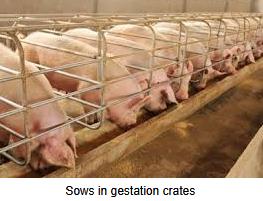
The EATS Act is essentially moot since there is adequate non-confined housing for sows in the U.S. to satisfy California and New England state requirements. Conversion from gestation crates to group housing has progressed over successive years. Even if the EATS Act is incorporated into the eventual Farm Bill, it will have no effect on the decision of retailers and restaurant chains to source pork derived from sows held under group housing. Inclusion of the EATS provisions in the final Farm Bill is considered to be questionable given the extensive bipartisan opposition to the practice of confining sows to gestation crates.

|
Extremist Animal Rights Advocates File Oregon Initiative 28
|
05/12/2024 |
|
 People for the Elimination of Animal Cruelty Exemptions have filed for Initiative Petition 28 to be decided by the voters of Oregon during the 2026 general election. The ballot initiative would remove certain exemptions from animal cruelty laws prohibiting any activity other than self-defense or veterinary practice that intentionally injures or kills animals. Adoption of Oregon IP28 would effectively invalidate all livestock operations. People for the Elimination of Animal Cruelty Exemptions have filed for Initiative Petition 28 to be decided by the voters of Oregon during the 2026 general election. The ballot initiative would remove certain exemptions from animal cruelty laws prohibiting any activity other than self-defense or veterinary practice that intentionally injures or kills animals. Adoption of Oregon IP28 would effectively invalidate all livestock operations.
The intent as stated would be to “be protective of the needs of animals and to codify their right to life and bodily autonomy.” IP28 would also establish a “Humane Transition Fund” to provide grants to replace lost income, compensate farmers, to subsidize job retaining and permit conservation and re-wilding of livestock.

This extreme and unworkable proposition representing the most radical ideology should not pass. It will however generate awareness of the negative aspects of livestock production and raise funds for the organizers.
Ballot initiatives were regarded as necessary as territories became states, but they are now anachronistic and run counter to the regular legislative process with inherent checks and balances. It is far easier to bamboozle voters with complex and deceptively worded propositions that appear at face value to be elementary but have serious unintended consequences. Did the voters agreeing with California Propositions #2 and #12 realize they were effectively voting for a $0.50 to $1.00 per dozen increase in the price of eggs when they were coerced into empathizing with cage-housed chickens? The so-called “Pacelle-Tax” is an unintended consequence of passage of the two California propositions. The outcome was only possible through the system of ballot initiatives that has effectively distorted the government of our Nation’s most populus state with a population of 39 million and an economy ranking as the 5th largest in the world.

It is now time to eliminate legislation by voter initiative through constitutional amendments. Unfortunately there are too many vested interests benefiting financially from the status quo to expect meaningful change. A starting point would be to increase the number of valid signatures required to allow a petition to be placed on the ballot and to allow legislatures or Governors the power to deny petitions.

|
FDA Issues Guidance on GM Animals
|
05/07/2024 |
|
 The U.S. Food and Drug Administration has issued Guidance for Industry (GFI) #187A Heritable Intentional Genomic Alterations in Animals: Risk-Based Approach and a revised draft GFI #187B Heritable Intentional Genomic Alteration in Animals: The Approval Process. The U.S. Food and Drug Administration has issued Guidance for Industry (GFI) #187A Heritable Intentional Genomic Alterations in Animals: Risk-Based Approach and a revised draft GFI #187B Heritable Intentional Genomic Alteration in Animals: The Approval Process.
In addition, the FDA has entered into a Memorandum of Understanding with the U.S. Department of Agriculture to clarify their respective roles and responsibilities in regulation of intentional genomic alteration.
At the outset, the FDA jurisdiction over regulation of genetic modification should be limited to a judicial minimum. The Agency does not have the staff or expertise to understand the realities of genetic modification, whether by insertion or deletion of genes in livestock. There is obviously a justification for the FDA to be involved in genetic modification where the end product is a biopharmaceutical produced in eggs or milk.
Genetic modification of animals intended for food is a separate issue to biopharmaceuticals and is beyond the competence of the FDA. This is denoted by the almost two-decade process of approval of Aquabounty® salmon. Inability of the FDA to make considered decisions regarding approval within a reasonable time has placed the U.S. at a disadvantage with respect to the E.U. and China. The practical application of CRISPR offers advantages to breeders in developing livestock with resistance to disease, adaptability to heat and benefits yet to be determined.
 The April 2024 Memorandum of Agreement between the FDA and the USDA is intended to establish policies and procedures to enhance the exchange of information with the objective of enabling an efficient, seamless regulatory process. The April 2024 Memorandum of Agreement between the FDA and the USDA is intended to establish policies and procedures to enhance the exchange of information with the objective of enabling an efficient, seamless regulatory process.
The FDA is encouraging developers of intentional genomic alteration to approach the Agency early in their research and development or to discuss the specific risk profile of the proposed product and the appropriate pathway for commercialization. This is a clear admission of technological ignorance, and that the FDA intends to continue using the established playbook of delay in making a decision.
 The FDA underperforms in the areas over which it has direct mandates including regulation of imported foods, inspection of foreign and domestic pharmaceutical plants. The FDA has a rap sheet of failures including the baby formula debacle, lead contamination of infant foods and failure to suppress bacterial foodborne infections associated with produce. The FDA underperforms in the areas over which it has direct mandates including regulation of imported foods, inspection of foreign and domestic pharmaceutical plants. The FDA has a rap sheet of failures including the baby formula debacle, lead contamination of infant foods and failure to suppress bacterial foodborne infections associated with produce.
EGG-NEWS has long campaigned for a separate food safety agency independent of both the USDA and the FDA. Advances in genomic alteration of livestock justify extreme changes in the structure and implementation of food safety regulation.

|
Department of Energy CO2 Sequestration Project a Failure
|
05/01/2024 |
|
The National Energy Technology Laboratory of the Department of Energy, has funded a $281 million demonstration project at an ADM plant in Decatur, IL. over a number of years. The program represents the collaboration between ADM, Schlumberger Inc. and the Illinois State Geological Survey. The project effectively captured only 10 to 12 percent of CO2 produced in ethanol production with the remainder vented to the atmosphere. The Department of Energy claims that 2.8 million metric tons of CO2 have been stored in contrast to the EPA value of 3.94 million metric tons.
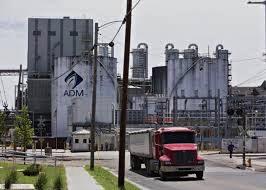
Academics including Dr. William Burns, affiliated with Northwestern University, questioned the practicality of the project noting, “We have been providing these subsidies for a long time, billions and billions of taxpayer dollars and we still have very little to show for it.”
The ADM plant sequesters CO2 underground by injection into a sandstone formation. According to reports, there are as many as 150 applications to drill and sequester CO2 applying modifications of injection technology that is used to release oil from low-yielding wells.
If the ADM Decatur plant is representative of the U.S., a considerable quantity of CO2 is vented to the atmosphere. The subject plant produces 4.1 million metric tons of CO2 annually through fermentation of corn but captures approximately 10 percent of the quantity generated. From 2011 through 2022, the plant emitted 53,168,273 metric tons of CO2 and on average stored 7.4 percent amounting to 3,941,344 metric tons.

Dr. Charles Harvey of MIT questioned the benefit of sequestering CO2 at an ethanol plant and maintains that ‘diluting’ gasoline with ethanol is more detrimental than using gasoline as a vehicle fuel. This is based on the acreage needed to produce corn that is fermented with CO2 emissions and by combustion in vehicles. Dr. Harvey notes, “If our interest is in using government resources to reduce CO2 emissions, that money would be much better spent not making ethanol.” He added, “You’d really be better off just replacing those cornfields with solar panels. You’d get a lot more reduction and you get cheaper electricity.”
According to Brendan Givens, Oil and Gas Watch reporter for the Environmental Integrity Project, the ADM facility in Decatur operates at a greater level of efficiency than other plants resulting in proportionately higher volumes of CO2 released than many facilities in operation.
 Despite the self-laudatory claims by the Renewable Fuel Association, ethanol does not contribute to energy independence and is demonstrably detrimental to the environment. The entire ethanol industry owes its survival to government mandates and indirect supports. Despite science, logic and economics ethanol production persists at the expense of all who breathe, eat or ride only by virtue of the self-interest of corn-state legislators in Congress. Despite the self-laudatory claims by the Renewable Fuel Association, ethanol does not contribute to energy independence and is demonstrably detrimental to the environment. The entire ethanol industry owes its survival to government mandates and indirect supports. Despite science, logic and economics ethanol production persists at the expense of all who breathe, eat or ride only by virtue of the self-interest of corn-state legislators in Congress.

|
Disinclination to Compromise in Congress Inhibiting Passage of Legislation
|
04/16/2024 |
|
 The 118th Congress has only passed 50 bills compared to an average of approximately 400 in a regular 2-year session. This is due to polarization with extreme positions on both the left and right inhibiting compromise that is necessary for bipartisan progress. Among delayed legislation is the 2013 Farm Bill that characterizes Congressional impotence. In the Senate Agriculture Committee, Sen. Debbie Stabenow (D-MI) is advocating for liberal SNAP and WIC benefits and extension of funding for conservation using funds from the Inflation Reduction Act. In contrast, Minority Ranking member, John Boozman (R-AR) is intent on increases in reference prices to support producers impacted by declining export prices and volumes. The 118th Congress has only passed 50 bills compared to an average of approximately 400 in a regular 2-year session. This is due to polarization with extreme positions on both the left and right inhibiting compromise that is necessary for bipartisan progress. Among delayed legislation is the 2013 Farm Bill that characterizes Congressional impotence. In the Senate Agriculture Committee, Sen. Debbie Stabenow (D-MI) is advocating for liberal SNAP and WIC benefits and extension of funding for conservation using funds from the Inflation Reduction Act. In contrast, Minority Ranking member, John Boozman (R-AR) is intent on increases in reference prices to support producers impacted by declining export prices and volumes.
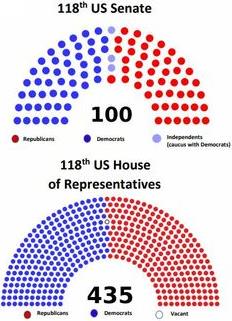 It is apparent that both the Senate and House are looking to the other chamber to pass a Farm Bill that may become a reality through subsequent compromise during reconciliation. The House Agricultural Committee Chairman, Glen Thompson (R-PA), is committed to presenting a Farm Bill during the spring of this year. As with the Senate, there is conflict regarding SNAP benefits and the overall cost of the Legislation. Bringing a bill to the floor is also influenced by the narrow margin of the majority party with dissent evident despite a majority of only five votes. It is apparent that both the Senate and House are looking to the other chamber to pass a Farm Bill that may become a reality through subsequent compromise during reconciliation. The House Agricultural Committee Chairman, Glen Thompson (R-PA), is committed to presenting a Farm Bill during the spring of this year. As with the Senate, there is conflict regarding SNAP benefits and the overall cost of the Legislation. Bringing a bill to the floor is also influenced by the narrow margin of the majority party with dissent evident despite a majority of only five votes.
 The closer to the election, the more difficult it will be to enact legislation. The 118th Congress has taken too many breaks and indulged in unproductive hearings and activities to the detriment of their responsibilities and the ultimate well-being of U.S. citizens. The closer to the election, the more difficult it will be to enact legislation. The 118th Congress has taken too many breaks and indulged in unproductive hearings and activities to the detriment of their responsibilities and the ultimate well-being of U.S. citizens.

|
OTA Value of the Certified Organic Seal Questioned
|
04/12/2024 |
|
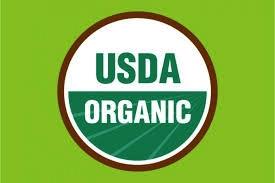 In a self-adulatory release, the Organic Trade Association listed responses to a consumer survey on familiarity with the organic seal. Of those responding, 88 percent were either familiar or somewhat familiar with the term “organic”. However, 86 percent were also aware of the “natural” designation, and 85 percent with “local” suggesting that the certified organic label is not necessarily unique or preeminent. It is also noteworthy that “pesticide free”, “vegan”, “raised without antibiotics” and “grass fed” all scored at or above 80 percent in terms of familiarity. In a self-adulatory release, the Organic Trade Association listed responses to a consumer survey on familiarity with the organic seal. Of those responding, 88 percent were either familiar or somewhat familiar with the term “organic”. However, 86 percent were also aware of the “natural” designation, and 85 percent with “local” suggesting that the certified organic label is not necessarily unique or preeminent. It is also noteworthy that “pesticide free”, “vegan”, “raised without antibiotics” and “grass fed” all scored at or above 80 percent in terms of familiarity.
The Organic Trade Association understandably claims that recognition of the Organic seal and the implied connotation justifies the differential in price from corresponding non-organic food items. After decades of promotion and availability it is evident that twelve percent of consumers are still unfamiliar with the organic seal. This indicates the need for additional promotion of the claimed attributes of organic foods, requiring publicity and a justification of the price differential.

The survey also revealed that “fair trade” was relatively obscure with 58 percent of respondents either somewhat or very familiar with the term. “Humanely raised” scored 72 percent but was below the 76 percent for “hormone-free”. The lowest score of 33 percent for consumer familiarity was accorded “regenerative”.
It is apparent that the “certified organic” designation is clearly the leader among numerous label claims, but it is questioned whether consumers really understand the structure of the National Organic Program and what it offers. Foods accorded the certified organic seal are produced according to a set of regulations and standards that should eliminate the use of pesticides or additives that may be potentially deleterious. The requirement that foods be either non-GMO in origin or in the case of livestock products, derived from herds or flocks fed non-GMO feed, has no scientific justification with respect to human metabolism and health.

It is also noted that certification according to the National Organic Program is based on a review of documentation and is not supported by any structured program of laboratory assay to confirm freedom from GMO content, pesticides or additives. Annual FDA reports indicate low levels of detectable pesticide residues, not materially different from their organic equivalents. Pesticide assays conducted by the FDA yield levels below established non-effect values indicating the acceptability of conventional domestic fruit and produce. The USDA certified Organic Seal does not address food safety with respect to the potential presence of bacterial pathogens.
The Organic Trade Association clearly describes additional costs including production, processing, certification, and other fees to justify the higher cost of certified organic foods. The question arises as to whether consumers derive a commensurate benefit given the price differential between conventional and certified Organic products.

|
Secretary Vilsack Criticized Over Use of CCC Funds by House Ag. Committee
|
03/25/2024 |
|
 In testimony before the House Appropriations Subcommittee for Agriculture, Secretary Tom Vilsack was criticized for his allocation of funding under the Commodity Credit Corporation. Rep. Andy Harris (R-ND), Chairman of the Subcommittee, characterized the Secretary’s use of CCC funding as a “slush fund”. Republican members of the Committee have been critical of climate-related programs. In addition, USDA is apparently spending money “outside the regular Farm Bill process”. In testimony before the House Appropriations Subcommittee for Agriculture, Secretary Tom Vilsack was criticized for his allocation of funding under the Commodity Credit Corporation. Rep. Andy Harris (R-ND), Chairman of the Subcommittee, characterized the Secretary’s use of CCC funding as a “slush fund”. Republican members of the Committee have been critical of climate-related programs. In addition, USDA is apparently spending money “outside the regular Farm Bill process”.
The CCC was established during the Great Depression to provide farmers with support in the face of falling prices for commodities.
Extensive demands have been placed on funding by dairy, cotton, rice and peanut producers for support payments. These allocations are a major point of dissention in negotiations to establish the much-delayed 2023 Farm Bill with Republicans pressing for higher farm payments and Democrats favoring SNAP and environmental expenditures.
The CCC provided funding for USDA-APHIS programs to control HPAI in previous epornitics including indemnity and reimbursement for decontamination.

|
Buzzwords or Substance?
|
03/22/2024 |
|
A recent posting by a representative of a major supplier of micronutrients to the feed industry recently promoted “blood biomarkers to detect potential performance and health challenges.” The lack of substance and specifics in the article is a hallmark of flim-flammery especially when the current buzzwords ‘artificial intelligence’ and ‘machine learning’ are invoked. Obviously collection and interpretation of production data is critical to understanding and analyzing deviations from standard flock performance. These can be attributed to ingredient quality, climate, exposure to pathogens or deviations from acceptable management.
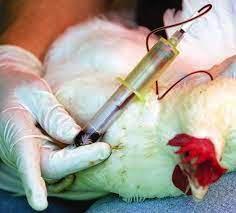
Blood values do not necessarily reflect the rate of metabolic processes or tissue composition. This was the basic flaw of the concept on which Theranos was based. The Company non-technology claimed to be able to monitor dozens of parameters with a single drop of capillary blood. A dubious presumption at the outset but believed by ill-informed and avaricious venture capital and private investors
If the article claiming that nutritional status can be monitored by analysis of blood samples was specific with respect to individual values and supported by scientific substantiation, the premise would have been be more impressive. Why select blood? Because it’s easy to obtain and easy to ship to a laboratory? For most metabolites, liver, muscle or bone tissue specimens would be more reflective of nutritional adequacy.
The article notes “blood biomarkers can predict when indicators of issues start to appear in a flock” as a breakthrough. We have been applying serology for decades to monitor antibody status including a determination of flock susceptibility and response to vaccination.
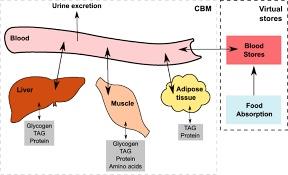 Consistently, companies generate “systems” claimed to monitor and predict performance without adequate scientific validation. Their hallmark is a lack of specificity involving a clear relationship between the variable and outcome. By adding the superfluous "buzzword" claims for ‘artificial intelligence’ and ‘machine learning’, it is questioned whether the touted concept is not another iteration of an ongoing succession of “great new things” to promote existing or newly developed products. Consistently, companies generate “systems” claimed to monitor and predict performance without adequate scientific validation. Their hallmark is a lack of specificity involving a clear relationship between the variable and outcome. By adding the superfluous "buzzword" claims for ‘artificial intelligence’ and ‘machine learning’, it is questioned whether the touted concept is not another iteration of an ongoing succession of “great new things” to promote existing or newly developed products.

|
Senators Pressing USTR and USDA to Increase Agricultural Exports
|
03/20/2024 |
|
 On March 13th, almost all Republican members of the Senate signed a letter addressed to Katherine Tai, U.S. Trade Representative and Secretary of Agriculture Tom Vilsack expressing discontent with the decline in agricultural exports. Specifically, the Senators requested information on specific actions the current Administration intends to implement to increase agricultural exports in 2024 and whether new or improved free-trade agreements will be entered into in the current year. On March 13th, almost all Republican members of the Senate signed a letter addressed to Katherine Tai, U.S. Trade Representative and Secretary of Agriculture Tom Vilsack expressing discontent with the decline in agricultural exports. Specifically, the Senators requested information on specific actions the current Administration intends to implement to increase agricultural exports in 2024 and whether new or improved free-trade agreements will be entered into in the current year.
The Administration has urged Congress to fund market development programs that have some impact especially in new markets and for new products. The U.S. exports mostly undifferentiated commodities as cotton, soybeans, corn, and rice. These products are purchased by importers based on availability and landed price including ocean freight and duties.
The letter from the senators takes issue with the Administration for pursuing an unambitious U.S. trade strategy that is “failing to meaningfully expand market access or reduce tariff and non-tariff barriers to trade.” The Senators should remember that the previous Administration withdrew from the Trans-Pacific Partnership that was subsequently reconstituted to include eleven nations bordering the Pacific including Canada and Mexico and it eliminated a wide range of taxes and duties to the disadvantage of the U.S. Some bilateral trade agreements have been negotiated such as with Japan that was let down by the precipitous withdrawal by the U.S. in 2017. The previous Administration imposed punitive duties on the People’s Republic of China that have been retained by the present Administration.
For consecutive years 2017 through 2019 the U.S. supplied 34 percent of soybeans requirements for China amounting to 96 million metric tons. This was followed by decline to 17 percent of the requirements in 2018, followed by a lower proportion in 2019. Despite negotiation of Phase I of a trade agreement, China did not follow through with imports of soybeans as negotiated. Demand by our major customer declined sharply during the current market year based on a reduction in pork production and Government restrictions on inclusion of soybean meal in diets for livestock. Total exports of soybeans for the current year are 18.9 percent lower than for the corresponding week in the 2022-2023 market year. In contrast, China continues to import corn with total exports for the current market year 31.5 percent higher than for the corresponding week during the previous market year.
The Senators representing their agricultural constituencies fail to recognize the formidable expansion in production of soybeans and corn by Brazil and Argentine among other nations. Russia has become a major exporter of wheat and despite lower harvest; Ukraine is still a major supplier.
As we enter the second quarter of 2024, the demands for new free-trade agreements appear cynical in an expectation that the Administration is somehow required to pull reluctant rabbits out of a very large hat. Due to no fault of the current Administration and based on the overhang of COVID on the World economy, competition at lower cost and domestic protectionism over at least two Administrations, there is an inevitability over declining exports. Had the world entered into a depression following the COVID years, the situation would have been far worse?
The situation is somewhat reminiscent of Michael Dukakis campaigning for the Democratic candidacy in Iowa who opined that farmers were growing too much corn. He was asked by a farmer what he should grow other than corn at a time when the price was depressed. The Candidate based on his elitist’s leanings suggests that “Belgian endives” were a suitable replacement, effectively scuttling support in the Midwest. Corn growers have the Renewable Fuel Standard that accounts for a third of the crop being converted to ethanol and with biodiesel absorbing 40 percent of soy oil. Both fuels benefit farmers at the expense of livestock producers and consumers and the respective industries would be non-viable without Federal mandates.
The Senators are asking the Administration to push a piece of string on agricultural exports. Importing nations make purchase decisions on commodities based on actual need and landed price in a competitive market. Demands to increase exports engenders favorable constituent approval and generates political points in an election year.

|
The Need for Surveillance of Free-living Birds for HPAI
|
03/18/2024 |
|
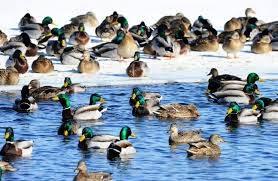 A recent news item presented the views of Dr. Kyle Van Why, a wildlife biologist with USDA-APHIS Wildlife Services. Dr. Van Why noted that his Agency is sampling dabbling ducks including mallards, teals and wood ducks that are known to be infected with various strains of avian influenza virus and specifically, the 2022-2024 H5N1 epornitic strain. A recent news item presented the views of Dr. Kyle Van Why, a wildlife biologist with USDA-APHIS Wildlife Services. Dr. Van Why noted that his Agency is sampling dabbling ducks including mallards, teals and wood ducks that are known to be infected with various strains of avian influenza virus and specifically, the 2022-2024 H5N1 epornitic strain.
Dr. Van Why correctly noted that the mild winter encouraged ducks to congregate in mid-migration until the severe storm of mid-January that resulted in southward migration. He stated, “We just didn’t have a full push until we had that one winter storm in January and then we had a big push of birds down and then they were gone.”
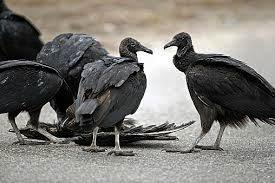
Perhaps by concentrating on dabbling ducks, the USDA-APHIS is missing other non-clinically affected carrier species of HPAI. If dabbling ducks are in their winter habitat along the Gulf, why did outbreaks occur in backyard flocks in diverse states including Massachusetts, Ohio, Texas and Minnesota during the week ending March 11th in addition to a case affecting commercial turkeys in South Dakota? Logic would suggest that domestic resident free-living birds have become infected along with carnivorous scavenging mammals that may transmit the virus for, as yet, undetermined periods. Backyard poultry housed with minimal biosecurity have little involvement with the infection of commercial flocks but serve as sentinels.
It would be of value for APHIS to sample a range of wild birds in the vicinity of confirmed outbreaks of HPAI both in backyard and commercial flocks. It would also be of value to determine the duration and quantum of viral shedding in individual species. There is 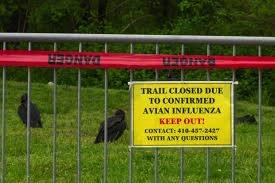 considerable literature on the recovery of avian influenza viruses from orders other than Anseriformes and susceptibility of migratory and resident domestic bird species has been demonstrated by both surveys and through widespread mortality. considerable literature on the recovery of avian influenza viruses from orders other than Anseriformes and susceptibility of migratory and resident domestic bird species has been demonstrated by both surveys and through widespread mortality.
An additional aspect of research is assessing the persistence of avian influenza virus in water and soil although this has been investigated for strains of LPAI1. Even more important will be to determine the distance over which avian influenza virus can be spread by the aerogenous route under a range of weather conditions. There is adequate circumstantial and anecdotal evidence to suggest that the virus can be introduced into power- ventilated layer houses. Multitier units holding 200,000 hens may have a maximum exhaust displacement of 1.2 million ft3 per minute and even 400,000 ft3 per minute as a minimum rate during cold conditions.
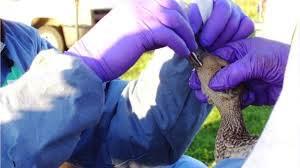 If avian influenza is carried by a wide range of free-living bird species that are resident in the vicinity of poultry farms, the previous model of seasonal dissemination by migratory waterfowl is outdated2. To concentrate on sampling hunter-killed dabbling ducks based on ease of attainment will provide prevalence rates in the species sampled but it will not advance our knowledge of the epidemiology of avian influenza and specifically H5N1. If avian influenza is carried by a wide range of free-living bird species that are resident in the vicinity of poultry farms, the previous model of seasonal dissemination by migratory waterfowl is outdated2. To concentrate on sampling hunter-killed dabbling ducks based on ease of attainment will provide prevalence rates in the species sampled but it will not advance our knowledge of the epidemiology of avian influenza and specifically H5N1.
It is questioned whether the administrators at APHIS are allocating sufficient resources to their field biologists and veterinarians to obtain an understanding of the changing epidemiology of avian influenza? Are field projects and investigations constrained by past actions or prevailing policies? Are we going to look back on the ongoing epornitic since 2022 in successive years and ask why we lacked imagination and flexibility in our approach to field evaluation that deprived us of an understand of the role of non-Anseriform avian reservoirs and disseminators of the disease?
1. Stallknecht, D. E., et al., Persistence of Avian Influenza Viruses in Water, Avian Diseases, 34:406-411 (1990)
2. Stallknecht, D. E. and Shane, S.M., Host Range of Avian Influenza Virus in Free-Living Birds, Veterinary Research Communications, 12:125-141 (1988)

|
FDA Requests $7.2 Billion Budget
|
03/12/2024 |
|
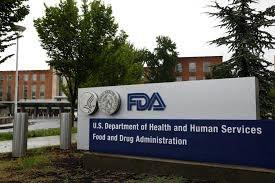 The Food and Drug Administration has requested $7.2 billion as a component of the proposed Federal FY 2025 budget. The Food and Drug Administration has requested $7.2 billion as a component of the proposed Federal FY 2025 budget.
According to the Commissioner, Dr. Robert M. Califf, “This new funding request will help us build on our accomplishments (?) and also modernize our Agency and operations as we plan for the future.” Included in the request is an additional $15 million to promote a safe and nutritious U.S. food supply. The newly created FDA Human Foods Initiative will allow the Agency to “prevent or mitigate foodborne illness outbreaks”. The request also supports programs to reduce diet-related chronic diseases and attain the goals of the National Strategy for Hunger, Nutrition and Health.
The Agency is requesting $114 million to support recruitment and support of a public health workforce. Does this represent a duplication of the activities of the Centers for Disease Control and Prevention?
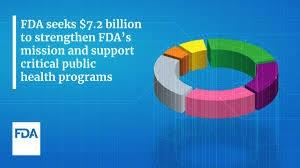
It is noted that the Agency will request $1 million to expand foreign offices and strengthen the quality of imported products. Given that a high proportion of our pharmaceuticals are manufactured in China or India, this appears to be an inconsequential amount given the magnitude of the tasks facing the Agency. The FDA has the obligation to certify the quality, safety and purity of imported drugs available to U.S. consumers.
The FDA is also requesting new authorization relating to the safety of foods including infant formula through binding limits for contaminants, testing of final products, environmental monitoring for pathogens and mandatory reporting.
Each year the FDA requests a larger allocation of funds citing real challenges and problems that as an Agency they are unable to address and resolve. Under the immediate-previous and current Commissioners, the U.S. public has been subjected to a number of food-related crises with evident negligence, inactivity and incompetence demonstrated by the Agency.
It is time for a new, independent food safety and nutrition agency independent of the FDA.

|
USDA-ARS Announces RF Pasteurization for Shell Eggs-Again
|
03/03/2024 |
|
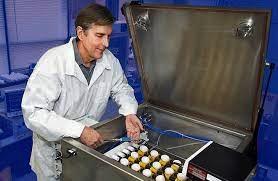 The USDA-Agricultural Research Service, Eastern Region Research Center in Pennsylvania has adapted radio frequency heating technology for in-shell pasteurization of eggs. The principle of radio frequency heating is well established with numerous commercial applications. The ARS development team has successfully created a prototype installation that is effective in eliminating Salmonella within eggs without altering organoleptic properties. An existing commercial scale process involving immersion in hot water is effective in pasteurizing eggs but does result in changes in albumen and is not an in-line process. The USDA-Agricultural Research Service, Eastern Region Research Center in Pennsylvania has adapted radio frequency heating technology for in-shell pasteurization of eggs. The principle of radio frequency heating is well established with numerous commercial applications. The ARS development team has successfully created a prototype installation that is effective in eliminating Salmonella within eggs without altering organoleptic properties. An existing commercial scale process involving immersion in hot water is effective in pasteurizing eggs but does result in changes in albumen and is not an in-line process.
The question arises as to why the USDA-ARS is expending time and money to produce an RF pasteurizer. There is no evident problem of salmonellosis associated with eggs. Since the introduction of the FDA Final Rule on Salmonella in eggs in 2010 there have been no reported outbreaks of S.Enteritidis among consumers of eggs produced and packed under FDA rules. There however may be a case for pasteurization of shell eggs destined for specific consumers including the immunosuppressed. Serving egg dishes prepared from pasteurized liquids would provide a safe source of nutrition although eggs from regularly tested flocks would provide an acceptable level of risk.
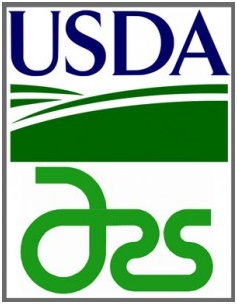 The USDA press release was overtly deceptive in that the introductory paragraph cited 1.4 million cases of salmonellosis with 26,500 hospitalizations and 420 fatalities annually in the U.S. Eggs produced in accordance with existing regulations and industry procedures are not contributing to salmonellosis among consumers. In actuality multiple serotypes and foods including produce, fruit and undercooked poultry meat are responsible for infection. The USDA press release was overtly deceptive in that the introductory paragraph cited 1.4 million cases of salmonellosis with 26,500 hospitalizations and 420 fatalities annually in the U.S. Eggs produced in accordance with existing regulations and industry procedures are not contributing to salmonellosis among consumers. In actuality multiple serotypes and foods including produce, fruit and undercooked poultry meat are responsible for infection.
The fact that less than one percent of eggs marketed in the U.S. are pasteurized using the water immersion process, suggests a low demand for in-shell pasteurization and a lack of concern among both domestic and institutional users.
A number of alternative in-shell pasteurization systems have been developed including immersion in hot water, infrared and microwave heating in addition to RF pasteurization. Over twenty years ago, the Government of South Korea developed a pasteurization process that failed to elicit interest. A developer in South Africa produced a microwave in-line system that was widely promoted without achieving commercial adoption.
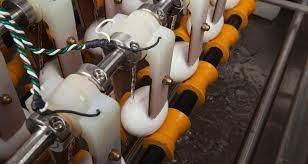
It is regrettable that the USDA announcement implies an ongoing problem of salmonellosis attributable to eggs and that this prototype laboratory-scale RF pasteurizer would be a solution. It is questioned why USDA funds are expended on a project with little prospect of commercial adoption or intended to alleviate a public health problem that has little to do with eggs. A far more useful project would be to develop a positive kill-step for leafy greens responsible for STEC, Salmonella and Listeria infection.

|
Collaborative Influenza Research Justified
|
02/25/2024 |
|
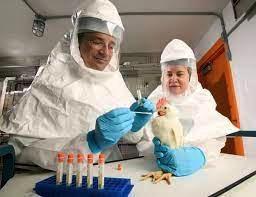 In a February 15th letter to the USDA, Senator Joni Ernst (R-IA) requested information on funding collaborative experiments on avian influenza involving the U.S., the U.K. and a laboratory in China. The letter was stimulated by a misrepresentation circulated by White Coat Waste Project, an animal activist organization opposed to research using live animals. In a February 15th letter to the USDA, Senator Joni Ernst (R-IA) requested information on funding collaborative experiments on avian influenza involving the U.S., the U.K. and a laboratory in China. The letter was stimulated by a misrepresentation circulated by White Coat Waste Project, an animal activist organization opposed to research using live animals.
The letter refers to Project 6040-32008-081-013-A, entitled U.S.-U.K.-China Collaboration: Predictive Phylogenetics for Evolutionary and Transmission Dynamics of Newly Emerging Avian Influenza Viruses. The project was funded for the period beginning April 1, 2021 and is due to end at the end of February 2026. The objective is to assess the pathogenicity of evolving avian influenza viruses of the H5NX clade 2.3.4.4b and for H7N9 and H9N2 lineages. Evolution of these strains has been linked to the potential emergence of an influenza strain with pandemic zoonotic potential. Experiments and analysis to be conducted over the course of the study period will determine how virus strains evolve and the response of hosts (quail, duck and chicken) to infection. Studies will include Japanese quail since this species has receptors for both avian and mammalian influenza viruses. Challenge studies involving ducks and quail in addition to in vitro laboratory cell culture systems will be used to assess pathogenicity.
There is no indication from the description of the cooperative agreement that any form of gain-of-function studies will be conducted. Most of the work will be completed in the U.S. with concurrent collaboration by scientists at the Roslin Institute in Scotland. Involvement by specialists in avian influenza in China was considered appropriate since they have access to endemic influenza strains circulating in poultry in that nation.
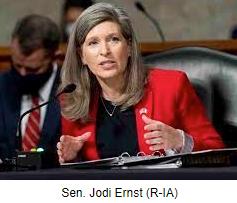
It can be accepted that the results of the studies, proposed and in-progress, will enhance our knowledge of the biology of avian influenza viruses of potential human health significance including aspects of immunology and molecular biology. Results will be directly applicable to the development of improved diagnostic procedures and the development of human and avian vaccines. Above all, knowledge obtained will improve our understanding of how avian influenza viruses may adapt to non-avian hosts. It is a matter of record that the H5N1 panornitic strain has infected a wide range of both terrestrial and marine mammals. Fortunately to date there has been no evidence of human infection other than a limited numbers of cases and without confirming human-to-human transmission.
It is regrettable that this project and aspects of research on respiratory pathogens have become politicized. Misleading statements have been made as to the purpose of the research with outlandish and unsupportable claims for risk. It is hoped that the response by the Office of the Secretary of Agriculture will reassure Senator Ernst and will moderate prevailing Sinophobia relating to medical research that emerged with COVID.

|
Iowa Egg Company Receives FDA Warning Letter
|
02/21/2024 |
|
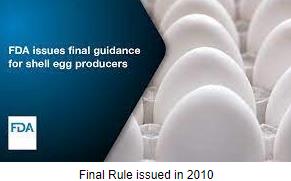 A December 15th 2023, warning letter to the Iowa Egg Company located in Osage, IA. confirmed a wide range of deficiencies in conforming to the FDA Final Rule on Salmonella. Effectively product is technically “adulterated” under section 402 (a) (4) of the Federal Food Drug and Cosmetic Act Section 21 U.S.C. 342 (a) (4) as potentially injurious to health. A December 15th 2023, warning letter to the Iowa Egg Company located in Osage, IA. confirmed a wide range of deficiencies in conforming to the FDA Final Rule on Salmonella. Effectively product is technically “adulterated” under section 402 (a) (4) of the Federal Food Drug and Cosmetic Act Section 21 U.S.C. 342 (a) (4) as potentially injurious to health.
The warning letter followed issue of a FDA Form 483 following a June 2023 inspection of the complex by the Iowa Department of Agriculture, acting on behalf of the FDA.
The warning letter was issued since the company did not respond within the statutory period acknowledging deficiencies and providing an action program for remediation.
Defects noted by the Iowa Department of Agriculture included:
- Failure to have available a written Salmonella Enteritidis Prevention Plan as required.
- Failure to document that pullets were monitored for SE prior to transfer.
- Failure to maintain an acceptable program to suppress rodents and flies and evident structural defects allowing entry of rodents.
- Failure to document or implement appropriate holding temperatures for eggs.
- Failure to comply with required ages for drag-swab screening of flocks for environmental SE contamination.
- Failure to register a farm as required.
The delay between the FDA Form 483 in June 2023 and the warning letter in mid-December raises questions of timing in the response to obvious public health-related issues. Given the date of the original report documenting multiple defects relating to testing and other requirements, the FDA was negligent in waiting 21 weeks before issuing a warning letter. Had flocks on the operation been infected with SE, product would have been released 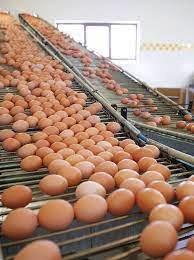 to the market with the potential for human infection. Any egg-borne outbreak of SE results in degradation of the image of the egg industry indirectly affecting all compliant farms. to the market with the potential for human infection. Any egg-borne outbreak of SE results in degradation of the image of the egg industry indirectly affecting all compliant farms.
If the FDA is sincerely interested in protecting the food supply then a 21-week delay in follow-up is unacceptable. This situation appears to be a replay of the infant formula crisis but on a much smaller scale. Failure by the FDA to inspect major production facilities and a lack of response to evident problems of contamination led to a debacle characterized by a shortage of product with economic, political and social implications. It remains to be seen whether organizational changes at the FDA will improve concern within the Agency for food-related risks.

|
Opposition to the EATS Act
|
02/11/2024 |
|
The Ending Agricultural Trade Suppression (EATS) Act was drafted in response to the May 11th decision by SCOTUS upholding Proposition #12. It was the intent of the promoters of the Bill to incorporate the EATS Act into the 2023 Farm Bill that has been delayed to at the earliest, mid-2024.
The intent of the proposed legislation would be to prevent individual states from placing restrictions on systems used to rear and process livestock intended for sale in their states.
The U.S. egg industry has long since complied with Proposition #12 and Massachusetts question #3. There is an adequate supply of cage-free eggs to satisfy California and other states that have enacted legislation restricting the sale of eggs from conventional cages.
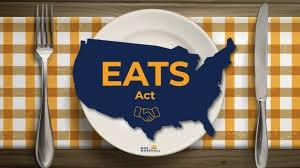 A number of companies involved in organic and premium meat production are opposed to the EATS Act and have addressed an open letter to Congress expressing their concerns. Signatories to the letter stated, “while some companies remain silent in the name of cheaper production cost we believe it is our responsibility to amplify the concerns of our customers and businesses partners through our platforms.” A number of companies involved in organic and premium meat production are opposed to the EATS Act and have addressed an open letter to Congress expressing their concerns. Signatories to the letter stated, “while some companies remain silent in the name of cheaper production cost we believe it is our responsibility to amplify the concerns of our customers and businesses partners through our platforms.”
Informed observers and jurists have opined on the direct and unintended consequences of the EATS Act over and above the welfare aspect. The broadly framed act could invalidate a number of necessary state regulations and would be contrary to existing laws relating to methods of production, including suppression of livestock and poultry diseases.
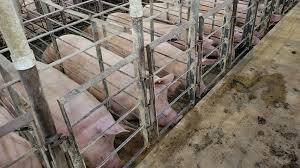 The EATS Act was introduced to invalidate Proposition #12 that currently impacts a segment of the pork industry still using gestation crates for sows. The case is advanced by industry associations representing pork producers that the EATS Act would obviate the requirement for farmers to invest in group-housing for sows. Economists at the University of California-Davis ascertained that there is adequate pork available from sows housed in compliance with California Proposition #12. The economists presented data to show that there would not be any restriction on states imposing sanctions against gestation crates and that no further investment is needed in the U.S. The EATS Act was introduced to invalidate Proposition #12 that currently impacts a segment of the pork industry still using gestation crates for sows. The case is advanced by industry associations representing pork producers that the EATS Act would obviate the requirement for farmers to invest in group-housing for sows. Economists at the University of California-Davis ascertained that there is adequate pork available from sows housed in compliance with California Proposition #12. The economists presented data to show that there would not be any restriction on states imposing sanctions against gestation crates and that no further investment is needed in the U.S.
The problem facing the pork industry is that major retailers and food service operators are committed to source pork from piglets bred from sows maintained under group housing. As has been frequently stated in CHICK-NEWS, as far as the need for conversion is concerned the train left the station years ago. Irrespective of legislation, public pressure and the policies of retailers will determine the extent of alternatives to gestation crates. Most major pork producers have recognized this reality and over the past decade have progressed in transitioning to alternative housing systems leaving those who would ignore the realities of the marketplace to rely on exports and low-price accessible markets.
It is ironic that lobbying by pork associations scuttled the “Egg Bill” that would have created a uniform Federal housing standard for hens. Now when their backs are against the wall a segment of pork producers are seeking Federal relief through legislation.

|
South Dakota Senators Opine on AI Vaccination-Reason now Emerging
|
01/25/2024 |
|
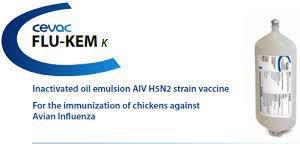 Senators John Thune (R-SD) and Mike Rounds, (R-SD) have commented on control of HPAI that has severely affected turkey production in their state. Noting that the USDA is “testing” vaccines, the legislators point to the more important aspect of trade. In their letter to the Secretary of Agriculture, Senators Thune and Rounds state, “We recognize that without updated trade agreements, the use of HPAI vaccination can put our poultry and egg industry at a disadvantage. So, now is the time to begin the tedious work of talking with our trading partners to solidify agreements that reflect the new reality.” Senators John Thune (R-SD) and Mike Rounds, (R-SD) have commented on control of HPAI that has severely affected turkey production in their state. Noting that the USDA is “testing” vaccines, the legislators point to the more important aspect of trade. In their letter to the Secretary of Agriculture, Senators Thune and Rounds state, “We recognize that without updated trade agreements, the use of HPAI vaccination can put our poultry and egg industry at a disadvantage. So, now is the time to begin the tedious work of talking with our trading partners to solidify agreements that reflect the new reality.”
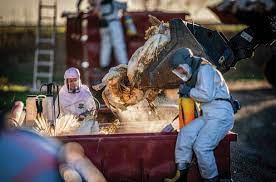
An obvious starting point is to rescind the ban on importation of poultry products from France based on the spurious justification of protecting the U.S. industry. Limited use of HPAI vaccine on a seasonal and regional basis for specific segments of the industry at risk in France will have no deleterious effect on the U.S. This is based on the reality that HPAI is introduced seasonally and disseminated along four flyways by migratory waterfowl and marine birds.
An additional question relates to why the USDA is “testing” new vaccines given publications confirming relative efficacy of commercially available products as a practical control measure along with biosecurity. It appears that the fall-winter phase of the 2023-2024 epornitic is waning and will cease as it did at the end of 2022. The USDA has until spring to determine the efficacy and safety of both HVT-vectored vaccines for day old chicks and poults and inactivated oil emulsion vaccines for older birds. Concurrently, as noted by the Senators, negotiations must be initiated with trading partners citing the World Organization of Animal Health endorsement of vaccination as an adjunct to biosecurity, quarantine and surveillance as control measures.
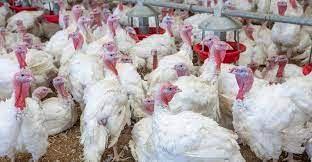
HPAI is the Newcastle disease of the 2020s. We learned to co-exist and maintain production despite persistence of the infection from the 1970s onwards by applying vaccination. So it should be with HPAI. This infection will never be eradicated and poses a threat of severe economic harm using current unsuccessful control measures.

|
Philippines Bans U.S. Imports from California and Ohio
|
01/21/2024 |
|
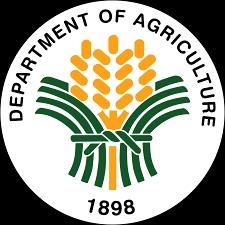 Based on diagnoses of highly pathogenic avian influenza in California and Ohio, the Ministry of Agriculture of the Philippines has banned importation of live poultry and products including meat and eggs effective January 15th or processed two weeks before diagnoses were made in the states concerned. Based on diagnoses of highly pathogenic avian influenza in California and Ohio, the Ministry of Agriculture of the Philippines has banned importation of live poultry and products including meat and eggs effective January 15th or processed two weeks before diagnoses were made in the states concerned.
Importation by the 5th-ranked Philippines for first eleven months of 2023 amounted to 156,526 metric tons with a value of $163 million and at a unit price of $1,041 per metric ton, below the average value of $1,306 per metric tons for the period.
This blanket ban of a U.S. state represents a 1980’s approach to prevention of highly pathogenic avian influenza. Nations such as the Philippines should adhere to WOAH policies that recognize regionalization (zoning). Banning of exports from entire states is not beneficial in terms of protecting flocks of the importing nation from a disease such as HPAI that is carried by migratory birds. Importers should rely on certification of freedom from HPAI (avian influenza strains H5 and H7) as determined using PCR screening and zonal surveillance.
Unless the USDA-APHIS recognizes the realities of HPAI epidemiology relevant to the 2020’s and amends current regulations it will be impossible to demand or request concessions from importing nations. APHIS currently labors under the misapprehension that HPAI could be eradicated through a program of flock depopulation. This conveniently ignores the reality of seasonal reintroduction by migratory waterfowl and marine birds. This inappropriate approach to HPAI is exemplified by a ban on importation of poultry products from France following introduction of vaccination in that nation. 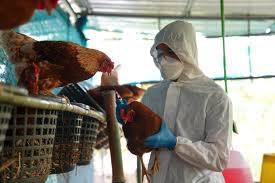 This is a totally illogical knee-jerk response conditioned by decades of misunderstanding and a disinclination to recognize the changing epidemiology of HPAI. This is a totally illogical knee-jerk response conditioned by decades of misunderstanding and a disinclination to recognize the changing epidemiology of HPAI.
The Philippines will be no more protected against HPAI after the blanket California and Ohio bans than they were before their edict. Bureaucrats believe in bans. No one was ever fired or censured for adhering to an obsolete policy. By adherence to the status quo bureacrats are absolved from having to question entrenched policies or to adapt to changing realities.

|
Minnesota Records Uptake of School Meals
|
01/17/2024 |
|
 Following passage of Minnesota House Bill HF5 funding free universal meals, the State will serve an additional one million school lunches and breakfasts per month compared to January 2022. The editorial last week commented on the summer EBT program that provided an allowance of $40 per child over the three-month summer recess. In addition, states offering or planning free or subsidized meals were mentioned. Following passage of Minnesota House Bill HF5 funding free universal meals, the State will serve an additional one million school lunches and breakfasts per month compared to January 2022. The editorial last week commented on the summer EBT program that provided an allowance of $40 per child over the three-month summer recess. In addition, states offering or planning free or subsidized meals were mentioned.
Governor Tim Walz (D) noted, “In Minnesota we’re not splitting students into the have’s and have-not’s, we are feeding all our children and saving hard-working families thousands of dollars a year on our way to making Minnesota the best state to grow up in.”
The School Nutrition Association revealed that 87.4 percent of respondents to a recent survey in nine states reported an increase in school meal participation after free meal service was initiated.

School feeding is beneficial to all students since programs provide balanced nutrition. Children from low-income households will benefit most through school feeding since they will be able to more adequately learn in the absence of hunger. This in turn, will contribute to their future socio-economic advancement making them responsible and productive, members of the community. School feeding should be regarded as an investment in the future, limiting subsequent expenditure by judicial and health systems.
In a similar approach, the Pennsylvania Department of Education will distribute $1 million to help 30 colleges in the state to alleviate food insecurity. It is apparent that problems experienced by school children extend into community colleges and universities in the state. The recipient colleges are members of the Pennsylvania Department of Education Hunger-Free Campus Initiative. Governor Josh Shapiro commented, “Students of all ages learn best when they start the day with a full stomach and are better prepared to succeed when they have access to nutritious healthy food.” He added, “This Administration fought for and delivered universal free breakfast in K-12 classrooms and this is why we are fighting against hunger on our college campuses.” The problem of food insecurity on college campuses became apparent during the COVID period and persists to the present time.
School feeding is beneficial for recipients, administrations and ultimately for food producers including our industry.

|
Cost of U.S. HPAI Response
|
01/14/2024 |
|
In accordance with documents released, the USDA has spent $715 million on indemnity to integrators and growers since February 8th 2022. In addition, $183 million has been expended to dispose of infected flocks and $130 million has been allocated to personnel and related costs.

The USDA draws funds from the Commodity Credit Corporation (CCC), an Agency established by C in1933 during the depression to “stabilize, support and protect farm income and profit” Activities of the Agency are authorized under the CCC Charter Act of 1948. Use of funds to support control of a disease may or may not fall within the remit of the CCC that serves as a potentially bottomless piggy bank for the USDA but ultimately subject to Congress that has the option to increase the reserve of $30 billion. Requests for a financial transfusion may elicit opposition in both houses especially as some senators are opposed to intensive livestock production based on personal antipathy and environmental considerations. It is evident that HPAI is a panornitic, present on six continents and is both seasonally and regionally endemic in many nations including the U.S. Since prospects for eradication are remote, given that HPAI is introduced and disseminated by migratory marine birds and waterfowl, alternative modalities including vaccination should be considered in addition to biosecurity as a preventive measure.

EGG-NEWS has continuously advocated for adoption of preventive vaccination in high-risk areas and for susceptible segments of the industry including egg production and turkeys along the four U.S. flyways. Vaccination can serve as a means of reducing the financial and production-related costs of the infection if applied with existing structural and operational biosecurity. The obvious restraint of limited vaccination relating to export of broiler products may not be insurmountable. It will be necessary for importers to recognize the WOAH principle of regionalization (zoning) in addition to certification based on PCR assay, that flocks contributing to a consignment were free of infection at the time of processing.

|
Bill to Allow Sale of Raw Milk in Wisconsin
|
01/09/2024 |
|
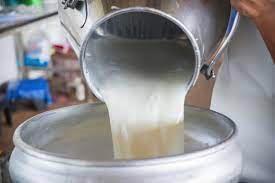 Wisconsin, the “Nation's Dairyland”, has strong laws that prohibit sale of unpasteurized (raw) milk and forbids the direct sale to consumers of other than fluid milk conforming to Grade A. Currently all state dairy farmers are licensed with the Department of Agriculture, Trade and Consumer Protection. Wisconsin, the “Nation's Dairyland”, has strong laws that prohibit sale of unpasteurized (raw) milk and forbids the direct sale to consumers of other than fluid milk conforming to Grade A. Currently all state dairy farmers are licensed with the Department of Agriculture, Trade and Consumer Protection.
State representative, Elijah Behnke, has pre-filed Senate Bill 781 to allow for the sale of raw milk. The proposed legislation would require quarterly sampling of milk only for coliforms and annual testing of the herd for tuberculosis and brucellosis. This is completely inadequate since a flick of a tail can contaminate an entire lactation with a range of pathogens at any milking.
Wisconsin has a lot at stake given that it is the largest producer of milk and inevitable outbreaks of milk-borne infection from unpasteurized dairy products will detract from the image of state producers.
Regrettably, the sale of raw milk has become a “freedom issue” rather than a public health imperative. In a study conducted by the Centers for Disease Control and Prevention covering 1993 through 2006, 121 outbreaks linked to dairy products were identified. Areas where raw milk is sold legally have more than three times more outbreaks of bacterial infections than regions where the sale of raw milk is illegal or restricted. Areas where raw milk is sold at retail had close to four times more outbreaks than areas where sales were restricted to farms. This data relates to a period when raw-milk consumption was rare. More recent incidence rates of milk-borne infection are rising sharply in response to increased availability of raw milk.
As noted in a recent ProMED release, the CDC published a report in 2012* citing “121 foodborne outbreaks with 4,413 cases of reported illness caused by contaminated dairy products. Of these, 73 (60%) were involved with unpasteurized dairy products. A total of 65 (54%) involved cheese (42% made from unpasteurized milk) and 56 involved fluid milk (82% involved unpasteurized milk). In these outbreaks, Campylobacter spp. were responsible for 54% of the outbreaks, followed by Salmonella spp. (22%), E.coli (13%), Brucella spp. (4%), Listeria spp. (4%), and Shigella spp. (3%). Pasteurized milk can also transmit disease, and 48 outbreaks were reported. The source of contamination was reported in only 7 (14%) outbreaks, of which at least four resulted from post-pasteurization contamination by an infected food handler”.
Infants and children are disproportionately affected by consuming raw milk and develop complications including hemolytic uremia syndrome that may be life-threatening or life-altering.
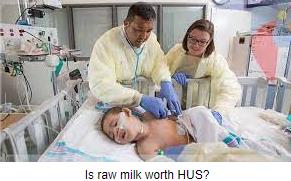 There is epidemiologic evidence that liberalizing the sale of raw milk results in a higher incidence rate of milk-borne infections including salmonellosis, listeriosis, campylobacteriosis and colibacillosis. It is estimated that less than one percent of dairy products, including fluid milk, are consumed as non-pasteurized. The relative risk of acquiring a bacterial infection from raw milk is, therefore high. There is epidemiologic evidence that liberalizing the sale of raw milk results in a higher incidence rate of milk-borne infections including salmonellosis, listeriosis, campylobacteriosis and colibacillosis. It is estimated that less than one percent of dairy products, including fluid milk, are consumed as non-pasteurized. The relative risk of acquiring a bacterial infection from raw milk is, therefore high.
What are legislators trying to achieve with their “freedom to infect” state legislation? Who will benefit? Are the non-existent claimed benefits for raw-milk worth the societal costs of treating and responding to outbreaks of inevitable milk-borne bacterial infection? Supplying raw milk to minors is essentially a form of child abuse.
*Ayers T, Grass J, et al. Nonpasteurized dairy products, disease outbreaks, and state laws -- United States, 1993-2006. Emerg Infect Dis. 2012; 18(3): 385-391;

|
Preventing Aerosol Transmission of Livestock and Poultry Diseases
|
12/31/2023 |
|
A recent review article* considered available and prospective technology intended to limit the introduction of viruses of livestock and poultry into housing by the aerogenous route. This article, although not providing any specific solutions to the current problem of HPAI, may stimulate creativity among agricultural engineers to adapt or modify available modalities.
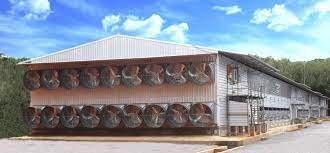
Existing methods include filtration that has limitations with respect to fan capacity considering the volume of air that has to be moved to support large flocks. Application of HEPA filtration may be effective with small units housing specific pathogen-free stock or elite-level breeders. Unfortunately, the ventilation requirements for a compartment of a house holding upwards of 100,000 laying hens requiring as much as 500,000 cubic foot per minute of air displacement at 0.25” swp. resistance could not function adequately with ultra high-efficiency filtration.
Emerging technologies include electrostatic precipitators with and without ultraviolet irradiation could in theory be used. Again, these systems are suitable for medical facilities, pharmaceutical and high-technology manufacturing plants but adaptation to poultry and hog housing is beyond current capability to achieve efficient destruction or inactivation of viruses.
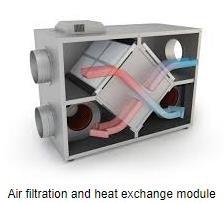
Advanced technologies that may be used in industrial and medical applications again would be difficult to apply in livestock housing. These include microwave inactivation and generation of reactive oxygen compounds.
The recognition that the virus responsible for HPAI can be transmitted by air entrained on dust particles suggests that some combination of filtration and electromagnetic inactivation could be possible. Unfortunately, HPAI is very much an all-or-nothing situation. Introduction of even a small quantum of virus into a susceptible, closely confined flock will result in propagation of the pathogen and the emergence of the disease. Unfortunately a small quantum of virus does not produce only a limited infection. Once introduced, the entire susceptible flock will be exposed and given the pathogenicity of H5 and H7 viruses, mortality in excess of 90 percent will occur. In reality authorities in most industrialized nations adopt a policy of depopulation immediately following a diagnosis. Recognition that HPAI is transmitted through air does not necessarily invalidate biosecurity since there are other more obvious routes of infection. The converse is that even the most extreme biosecurity procedures approaching the envelope of practicality will not provide absolute protection in the event that a large quantity of virus is shed by migratory birds in the vicinity of a complex.
*Ouyang, H. et al. Control Technologies to Prevent Aerosol-Based Disease Transmission in Animal Agriculture Production Settings: A review of established and emergent approaches. Front.Vet.Sci.doi:10.3389/fvets.2023.1291312

|
Premature Optimism over HPAI Expressed by APHIS
|
12/26/2023 |
|
 Dr. Rosemary Sifford, Chief Veterinary Officer for the USDA, recently commented on the declining number of recoveries of avian influenza virus from migratory birds. According to the USDA data-base, 2,600 isolations were recorded in 2023 compared to 6,000 in 2022. It is clear that the number of isolations is directly attributed to the intensity of surveillance but the rate of recovery at any comparable time and from a species in a region is the determinant factor relating to outbreaks. Dr. Rosemary Sifford, Chief Veterinary Officer for the USDA, recently commented on the declining number of recoveries of avian influenza virus from migratory birds. According to the USDA data-base, 2,600 isolations were recorded in 2023 compared to 6,000 in 2022. It is clear that the number of isolations is directly attributed to the intensity of surveillance but the rate of recovery at any comparable time and from a species in a region is the determinant factor relating to outbreaks.
 Notwithstanding the prevalence in either mature birds or their progeny, outbreaks of avian influenza attributed to H5N1 strain continue both with respect to numbers of commercial flocks affected but also the geographic spread involving all four U.S. Flyways. Notwithstanding the prevalence in either mature birds or their progeny, outbreaks of avian influenza attributed to H5N1 strain continue both with respect to numbers of commercial flocks affected but also the geographic spread involving all four U.S. Flyways.
Dr. Sifford considers that, “The viral load in the environment is less” without substantiation for this opinion. To date the USDA has not published information on the possible genetic relationship among isolates from wild birds and from affected commercial flocks. Molecular epidemiologic data is critical to an understanding of the source of viruses responsible for outbreaks in commercial flocks. The source is generally presumed to be migratory waterfowl based on temporal and spatial associations between migration and outbreaks.
The critical question is how virus, apparently shed by migratory birds enters farms. There are numerous cases in which large complexes with high standards of structural and operational biosecurity have been infected, accompanied by anecdotal evidence of airborne spread. If in fact the virus can be disseminated over even short distances by the aerogenous route, higher standards of biosecurity will be ineffective in absolutely protecting flocks.
With the realization of regional and seasonal endemicity and airborne infection, vaccination is obviously a necessary adjunct to biosecurity as a method to prevent HPAI and also to facilitate control. Basing a prevention program on the hope that a decline in shed rate by migratory birds, is not a viable strategy. Free-living birds will continue to migrate either northbound or southbound annually, presumably shedding the current H5N1 strain or a mutation or alternatively a newly emerged influenza virus strain with altered pathogenicity or even zoonotic potential.

|
Wayne Hsiung of DxE to Raise Legal Issues Involving Intrusion in Appeal
|
12/12/2023 |
|

|
Wayne Hsiung the founder and leader of Direct Action Everywhere (DxE) was convicted of a felony counts of conspiracy to trespass and was sentenced to 90-days in jail. The charges arose from 2018 and 2019 intrusions at Reichardt Duck Farm and Sunrise Poultry Farm in Sonoma County, CA.
Hsiung will base his appeal on California legislation providing Samaritans with the “right to rescue”. Hsiung is no Samaritan, he is in fact a zealot. The right to rescue law provided protection to citizens who respond appropriately to obvious situations such as a dog locked in a car in danger of dying hyperthermia within a short time unless released.
|
|
The actions taken by Hsiung, and his followers were premeditated, planned in advance, were intended to elicit publicity and in no way could have represented “rescue” for birds and flocks that were apparently not subjected to cruelty or were in imminent danger. DxE supporters egged on by leaders such as Hsiung are willing to sacrifice their liberty in a cult-inspired series of demonstrations and farm intrusions. Their actions effectively represent a win-win situation for the animal liberation movement. If they “rescue” birds they are regarded as heroes. When they suffer the inevitable retribution of the law they become martyrs. Either way they attract recruits and financial support.

If Hsiung places reliance on the contention that flocks on the two farms were subjected to cruelty he will be contradicted by dispassionate opinions offered by specialists in poultry production attesting to adherence to accepted standards of housing and management. The appeal will be confined to matters of procedure and law not justification. The videos submitted by DxE in the trial of Mr. Hsiung were disallowed by the Judge as being prejudicial. This may represent grounds for either a reversal or for a retrial. Previous appeals have been granted based on First Amendment rights.
In a statement prior to sentencing, District Attorney Carla Rodriguez of Sonoma County stated, “The First Amendment is not a license to commit crime. Mr. Hsiung went beyond mere activism and decided to engage in unlawful, reckless and potentially dangerous behavior putting farms, their employees and flocks of birds at risk of harm by his conduct.”
Within past weeks, both the multi-generation owned Reichardt Duck Farm (November 27th) with 169,000 birds and Sunrise Poultry Farm (December 7th) with 85,000 hens were diagnosed with HPAI and were depopulated.
|

|
State Legislators Calling for Support of Organic Dairy Production-Justified?
|
12/11/2023 |
|
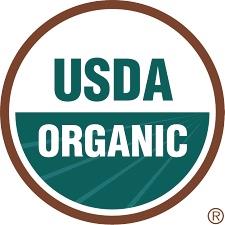 Representatives and Senators from Maine, California and Wisconsin have called on the USDA to provide additional support for dairy farmers producing organic milk. Funding is required as producers face environmental and financial challenges. In the letter to the USDA signed by Rep. Chellie Pingree (D-ME) the legislators urged that $83 million in unspent funds should be made available through the Organic Dairy Marketing Assistance Program (ODMAP). Representatives and Senators from Maine, California and Wisconsin have called on the USDA to provide additional support for dairy farmers producing organic milk. Funding is required as producers face environmental and financial challenges. In the letter to the USDA signed by Rep. Chellie Pingree (D-ME) the legislators urged that $83 million in unspent funds should be made available through the Organic Dairy Marketing Assistance Program (ODMAP).

The letter included “We must support the small family farms that are the foundation of the organic dairy industry and many of our rural economies.” The letter added, “Whether it is updating the calculations for the program payment rate, initiating a sign-up for another year’s projected future marketing cost or some other mechanism to improve coverage results, the remaining funds dedicated for ODMAP should be distributed promptly.”
In 2022, USDA made available $104 million to organic dairy operations to maintain operations. It is questioned whether public funds should be used to support what appears to be a non-viable industry. It is evident that the cost of organic feed and other requirements to comply with the Certified Organic Program detract from attaining positive margins. This is a reflection of the pricing structure for organic dairy products given demand for the organic seal in competition with conventional milk and plant-based substitutes. If organic dairy farmers cannot make a profit they should revert to conventional dairy production or develop a suitable business model that does not require public support. There is no nutritional or health benefit from organic milk over conventional milk and accordingly taxpayer funds should not be used to support a component of production that has a self-imposed cost burden.
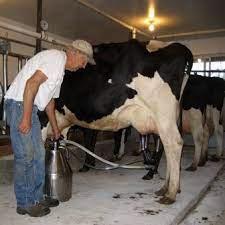
Producers of organic eggs have never requested support despite high prices for non-GMO feed and mandated outside access. Although organic eggs have a shelf price considerably higher than conventional cage-free equivalents, there is adequate consumer support to sustain this segment of the industry. According to the December 1, 2023, USDA Cage-Free Report, the flock held for organic production has been fairly constant at 19 million hens for successive quarters. This compares to 106 million hens held for cage-free production other than under the USDA Certified Organic Program. Given a national producing flock of 320 million at present, organic hens represent six percent of the total industry. Production appears to be in balance with demand but with limited scope for expansion. This is due to the cost of production mostly attributed to the non-GMO feed requirement that is devoid of any scientific substantiation and that effectively doubles the cost of production.
Collectively numerous small-scale organic dairy farmers are producing in excess of demand and accordingly there has to be rationalization and a contraction of supply. It is contrary to a free-enterprise economy for an inherently unprofitable and non-essential segment of livestock agriculture to be sustained by taxpayer support. So if USDA Secretary Vilsack disburses $83 million to needy organic dairy farmers, how long will it take before the constituents of the legislators concerned renew their Oliver Twist request of “please can I have some more”?

|
USDA Regional Agricultural Promotion Program
|
12/05/2023 |
|
 USDA will make available $300 million in funding to support new projects intended to open new markets and to expand existing markets under the Regional Agricultural Promotion Program. The intended allocation is from the $1.2 billion available over a five-year period from the Commodity Credit Corporation. USDA will make available $300 million in funding to support new projects intended to open new markets and to expand existing markets under the Regional Agricultural Promotion Program. The intended allocation is from the $1.2 billion available over a five-year period from the Commodity Credit Corporation.
Secretary Vilsack stated, “It takes significant investment to open and develop new export markets and this new fund will be dedicated to helping provide start-up capital so that American exporters can diversify their markets and create new opportunities.”
Funding under the Regional Agricultural Promotion Program is available to agricultural trade organizations, U.S. agricultural cooperatives and state regional trade groups operating approved market development activities. In order to concentrate funding on new markets and opportunities, the nations of the E.U. and China, Canada, Mexico will be ineligible for funding. In contrast, emphasis will be placed on Africa, Latin America and the Caribbean and Southeast Asia.
Trade promotion involving undifferentiated commodities can evolve into an exercise of pushing a piece of string. Commodities are purchased in a competitive market environment based on landed cost and the needs of the purchasing nation. For many years, this commentator along with colleagues undertook promotional seminars in Asia and the Middle East on behalf of the American Soybean Association. The premise was that promoting domestic production of eggs and broilers through technology transfer would create more viable poultry industries, creating a demand for soybeans. In many cases, the information did, in fact, help develop industries in India, Pakistan, Thailand, China and the Middle East. The activities of speakers and experts did little to generate goodwill that translated to preferences for the U.S. Importers in host nations understandably sourced soybeans from the best available and cheapest supplier with FOB price, sea freight and seasonal availability being the principal determinants of the purchase decision. An unintended consequence of promotional activities was the inevitable decline in chicken exports to many countries that imposed barriers to imports to protect their emerging industries. The situation was further complicated when U.S. experts were sponsored by commodity associations to present programs on further-processing and packaging thereby creating competition for U.S. exporters in many regional markets. This was ironically to the detriment of the associations’ best customers, the U.S. domestic broiler industry.
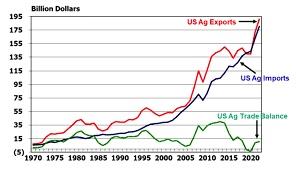
Funding the promotion of an undifferentiated commodity by an association may create awareness for a product but this will not necessarily establish a preference for a national supplier. The major U.S. commodity associations have been unsuccessful in identifying superior attributes for GMO corn, soybeans or wheat or establishing quantifiable product differentiation for their commodities among the competing major world exporters.
Considerable progress has been made by industry organizations such as USAPEEC that together with USDA-APHIS have worked to remove artificial trade barriers and to update unrealistic regulations that represented restraints to trade. Local product demonstrations and promotions have increased awareness and demand for turkey, duck and broiler products in Latin America and the Caribbean and in some cases in Asia. This is reflected in direct and indirect benefits for some segments of the industry.
It is hoped that USDA will be able to monitor and quantify the effect of their “investment” in promotion. Public funds are easy to disburse, especially when vast sums of money, that add to the national debt, are made available. USDA intends that the regional agricultural promotion programs should be confined to nonprofits and commodity associations. A more effective and less expensive approach might be to grant tax concessions and other incentives to the private sector to stimulate exports. At the end of the day, neither the U.S. Soybean Association nor the U.S. Grains Council actually sell a single bean or kernel. This is the province of the big five multinational agribusiness conglomerates responsible for the bulk of world trade in commodities.
Is it the intention of the USDA through regional agricultural promotion programs simply to increase the sale of dairy products, endives or similar minor agricultural commodities to Costa Rica and other nations? Is the U. S. taxpayer going to recognize a return on the considerable amount to be assigned to this program? How will it be measured? Who will take responsibility if there is no positive return? Inquiring minds want to know!

|
Demise of Vertical Farming?
|
11/27/2023 |
|
The Chapter 11 bankruptcy filing by AeroFarms and AppHarvest highlight the problems experienced by high-tech agriculture. Along with similar companies, indoor cultivation of leafy greens offered the promise of year-round availability, proximity to high-density centers of consumption and freedom from pathogens. Profitability of vertical farming was based on over-optimistic assumptions of implementation and volumes of production coupled with inappropriate levels of consumer demand given high and non-competitive shelf prices. The exponential rise in vertical farming emerged from a concordance between enthusiastic proponents of high-tech agriculture and the desire of venture capital (VC) investors to generate high returns over short periods by disrupting existing production systems. Between aspiration and an overabundance of capital, the common sense evaluation of production costs and margins was ignored. Dr. Ari Ginsberg of New York University noted, “VCs didn’t do their homework on the economics and how long it would take to reach profitability.”
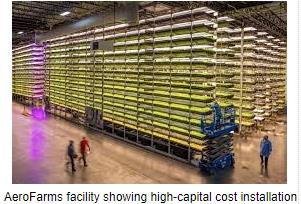
When this commentator visited a newly erected vertical farming operation in 2022 in an industrial complex adjacent to Atlanta Airport, the overwhelming impression was an inordinately high capital cost for equipment and installations required to create an environment suitable to propagate relatively low volumes of lettuce. It was evident that a high level of technical knowledge was necessary to achieve production. Maintenance and operation of equipment was evidently incurring high variable costs and above all, considerable energy input was necessary to illuminate racks of plants and to constantly circulate aqueous solutions of liquid fertilizer. The impression gained was that the enterprise represented technology for the sake of technology. The product still required high labor input for packing. Containers of immature lettuce in PET clamshell packs were essentially less attractive and more expensive than far larger heads trucked to distribution centers from Arizona and California or derived from conventional greenhouses.
Escalation in the cost of energy and capital destroyed the validity of spreadsheets created three years previously when capital was assigned to many of the emerging enterprises. Venture capital companies quickly soured on vertical agriculture, terminating cash spigots that maintained operations until promised scale of production could be achieved.
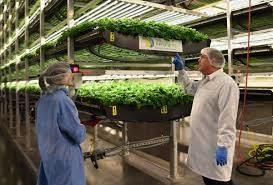
Some businesses in this aspect of intensive agriculture will survive and even prosper. They are characterized as smaller operations, offering a diversity of products and enjoying close relationships with supermarket chains. Survivors will concentrate on product quality and efficiency while maintaining a balance between traditional and high-tech systems.
In contrast, the egg industry has evolved over decades with adoption of technology consistent with practicality and an anticipation of profitability. Certainly, mistakes have been made along the way including adoption of high-rise housing as a successor to lagoon systems. Storing manure in pits inevitably led to difficulties in current disposal in the face of increasing environmental restrictions. High-rise housing also led to the emergence of SE as an industry problem. Transition to multi-tier aviary housing was a response to the need to transition from conventional cages. Time will be required to overcome inherent difficulties in management of flocks and to establish whether the cost differential compared to conventional cages will be offset by higher unit revenue over the long term.
In order to feed burgeoning populations of the world, agriculture must adopt higher levels of efficiency through genetics and management while maintaining sustainability and compliance with environmental regulations. Moving forward at a slower pace provides an opportunity to identify and correct unpredicted but inevitable difficulties and to adjust to market demands. The rise and demise of vertical farming should serve as a lesson to agriculture limited by biological realties in addition to production and marketing pressures.

|
NY Attorney General Sues PepsiCo over Single-Use Plastic
|
11/22/2023 |
|
 On November 15th National Recycle Day, the Attorney General of the state of New York Letitia James filed a lawsuit against PepsiCo alleging “harm to the public and the environment through single-use plastic packaging”. The lawsuit is intended to restrain PepsiCo from the sale and distribution of products packed in single-use containers without adequate information to consumers. On November 15th National Recycle Day, the Attorney General of the state of New York Letitia James filed a lawsuit against PepsiCo alleging “harm to the public and the environment through single-use plastic packaging”. The lawsuit is intended to restrain PepsiCo from the sale and distribution of products packed in single-use containers without adequate information to consumers.
The lawsuit is loosely based on the “Green Amendment” approved in New York in 2021 requiring that “each person shall have a right to clean air and water and to a healthful environment.”
Studies have disclosed that plastic waste along the Buffalo River in NY. contains a disproportionate amount of plastic waste derived from PepsiCo products. This assertion is also supported by a 2018 study conducted by environmental activist organization Break Free From Plastic that determined that PepsiCo was the second most prevalent producer of branded plastic waste and was the top producer between 2020 and 2022.
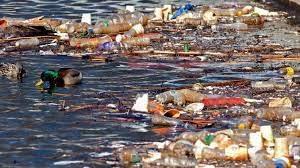
The complaint alleges that PepsiCo “failed to warn the public or consumers of its potential to contribute to plastic pollution in waterways.” The New York attorney general states that PepsiCo uses refillable and returnable glass and plastic in international markets but has failed to use alternatives to single-use plastic in the U.S.
Documentation submitted to the Courts stated that PepsiCo established goals to incorporate recycled plastic but has made little progress in reducing virgin content. In 2019 PepsiCo announced that first-use plastic would be reduced to 35 percent in bottles by 2025. It was stated that the company has made little progress in introducing recycled content and has adopted a policy of simply extending the year for compliance.
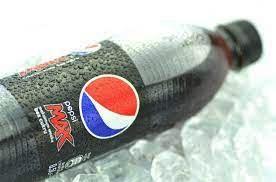
The nonprofit Beyond Plastics has called on Attorneys General of other states with problem of waterway pollution to take legal action against manufacturers using single-use plastic containers.
This action by the Attorney General of New York State has implications for the egg industry that uses both styrofoam and PET containers for eggs. There is growing international and national concern over plastic pollution given recent findings that microplastics cause adverse health effects in addition to cleanup costs. Manufacturers of other than fiber and other biodegradable egg cartons should consider programs to recycle containers and to incorporate additional second-use plastic in the interest of health and sustainability.

|
USDA Continues to Disperse Funding to Underserved Communities
|
11/16/2023 |
|
In a November 9th release, USDA announced that $1.2 billion will be provided in loans and grants to rural cooperatives in 36 states and Puerto Rico. The announcement was made by USDA Secretary Tom Vilsack during a roundtable with rural community and business leaders held in Colorado. The $1.2 billion is intended to support 112 projects in diverse communities in 36 states.

In commenting on the grants, Vilsack stated, “The cooperative business model has been integral to rural advancement and the American economy and today accounts for more than two million jobs across the country. The investments we are announcing today will ensure that cooperatives continue the important work of serving the unique needs of their communities.”
USDA provided examples of grants including a $10 million loan guarantee to build a hospital in Mohave County, AZ; a grant to Wayne-White County electric co-op to replace drainage water pumps to protect 9,000 acres of farmland from flooding and a grant to the Mississippi Minority Farmers Alliance to assist farmers to develop business plans among six counties.
The USDA under the present Administration regards loans and grants as “investments”. In the business sense, this is an inappropriate definition since investment implies a tangible, financial 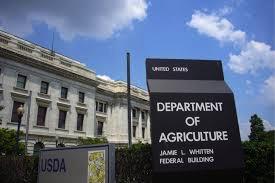 return. return.
It is obviously too much to expect the USDA to account for the grants and loans in years to come quantifying benefits in terms of jobs created or increased productivity. To equate giveaways with “investment” is a misnomer and distortion of reality.

|
Texas Vehicle Safety Inspections Ceases but with Ongoing Delays
|
11/02/2023 |
|
 On September 20th, Governor Greg Abbott imposed a mandatory safety check on all semis crossing into the U.S. from Mexico at major border points of entry. The Texas Department of Public Safety was incapable of conducting brake and other safety inspections at a rate that would allow constant passage of vehicles and their northbound cargos. Delays exceeding a day were encountered, disrupting the flow of transport. The action by Texas added to cost and created a problem for manufacturers using just-in-time inventory control systems. Although the misdirected and mischievous program of obstruction was cancelled, following both diplomatic and industry intercession, it is estimated that 19,000 trucks carrying $1.9 billion in goods were delayed. Manufacturers and trucking companies on both sides of the Southern border are resolving backlogs in transport. On September 20th, Governor Greg Abbott imposed a mandatory safety check on all semis crossing into the U.S. from Mexico at major border points of entry. The Texas Department of Public Safety was incapable of conducting brake and other safety inspections at a rate that would allow constant passage of vehicles and their northbound cargos. Delays exceeding a day were encountered, disrupting the flow of transport. The action by Texas added to cost and created a problem for manufacturers using just-in-time inventory control systems. Although the misdirected and mischievous program of obstruction was cancelled, following both diplomatic and industry intercession, it is estimated that 19,000 trucks carrying $1.9 billion in goods were delayed. Manufacturers and trucking companies on both sides of the Southern border are resolving backlogs in transport.
The action by Governor Abbott was in essence “Border Theater” intended to enhance his image since it had no effect on deterring illegal immigration. Department of Public Safety inspectors had no authority beyond assessing roadworthiness. They did not open trailers to inspect for contraband or trafficked migrants.
The diversion of customs agents to immigration duty in response to the migrant surge is an added complication contributing to delays at border crossing points in both Texas and Arizona. During the second weekend in October, pedestrian crossing was delayed four-fold from the normal one hour wait.
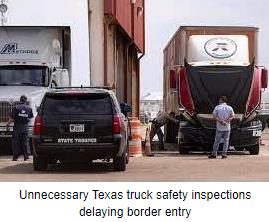 Deploying additional DHS agents to the border, extending barriers by incremental lengths and implementing periodic photo-op gestures will not resolve the mounting problem that cannot be blamed on any of four successive administrations. The U.S. requires a rational, practical and comprehensive immigration program and a complementary guest worker scheme. This will require bipartisan cooperation in Congress. This is a commodity in short supply in both chambers of the legislature, reflecting a polarized electorate. Deploying additional DHS agents to the border, extending barriers by incremental lengths and implementing periodic photo-op gestures will not resolve the mounting problem that cannot be blamed on any of four successive administrations. The U.S. requires a rational, practical and comprehensive immigration program and a complementary guest worker scheme. This will require bipartisan cooperation in Congress. This is a commodity in short supply in both chambers of the legislature, reflecting a polarized electorate.

|
BlueNalu, Inc. Raises Venture Capital Funding
|
10/17/2023 |
|
BlueNalu, Inc., a subsidiary of Agronomics, has raised $35 million in a Series B funding. In February 2020, the company raised $20 million through a Series A funding to develop a pilot production facility in San Diego to prepare cell-cultured seafood. The recent injection of capital will be used to scale up cell-cultured seafood production to commercial capacity. BlueNalu intend launching a bluefin tuna product.
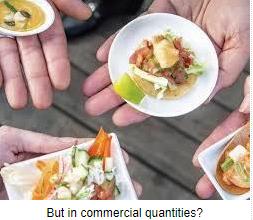
BlueNalu, along with numerous aspirant producers of cell-cultured protein, have collectively raised over $2 billion in venture capital funding over the past two years. As yet there is no viable commercial production of cell-cultured protein either beef, chicken or seafood.
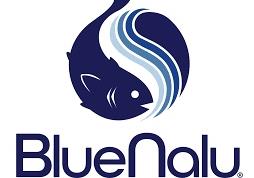
Based on revelations concerning alleged unfounded claims by Upside Foods and their problems scaling up from roller bottle production to 500-liter reactors, there are question as to whether cell-cultured meat and seafood production is simply a promise or is a practical alternative to conventional livestock and aquaculture.
Venture capital funds may soon tighten their purse strings unless one or other of the well-funded companies in either Europe or North America manages to demonstrate a potential for return on investment. This will only eventuate through actually marketing an acceptable and realistically priced product that gains consumer acceptance. The time for hype has long since passed. More experienced investors imbued with a sense of realism will replace the unfounded optimism of newly hatched MBAs believing their spreadsheets and entranced by welfare and sustainability.

|
Genetic Modification Offers Advantages to Swine Producers-but tor Chickens?
|
10/15/2023 |
|
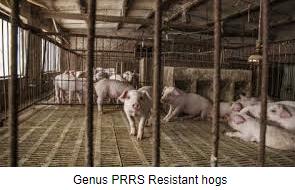 At this time, primary breeders of egg production and broiler stock have collectively rejected genetic modification based on the obvious potential for consumer rejection of products. This has limited research into prevention of disease in chickens and turkeys by applying gene deletion. There is even less motivation to achieve advances in productivity through introduction of xenogenes as with the AquaBounty™ salmon. At this time, primary breeders of egg production and broiler stock have collectively rejected genetic modification based on the obvious potential for consumer rejection of products. This has limited research into prevention of disease in chickens and turkeys by applying gene deletion. There is even less motivation to achieve advances in productivity through introduction of xenogenes as with the AquaBounty™ salmon.
Gene deletion applying CRISPR technology offers benefits from creating strains that are refractory to disease. Genus plc (LSE: GNS) in the U.K. is a major supplier of genetics for the swine and dairy industries recently obtained approval from Colombia to market a genetically modified strain of hogs resistant to porcine reproductive and respiratory syndrome (PRRS). Genes encoding for a protein necessary for the PRRS virus to enter host cells and replicate was removed. Modified pigs are resistant to the disease responsible for serious losses in reproductive efficiency and depressed growth rate in weanlings.
Genus has submitted an application to the FDA and anticipates approval for their genetically modified strain of hogs during 2024. Although there is a vaccine available to suppress PRRS using a strain that is genetically resistant offers advantages to producers given that the deletion of the specific gene does impair performance.
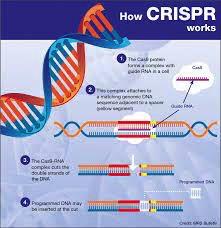 The commercial availability of PRRS-resistant hogs can be related to the work conducted in the U.K. to produce a strain of chickens resistant to avian influenza. This was accomplished by deleting genes encoding for three proteins designated ANP 32A, B and C that are necessary for avian influenza virus to replicate in host cells. Preliminary experiments demonstrated that of ten gene-deleted chickens only one could be infected by inoculation with avian influenza virus although this subject did not transmit the virus to contact birds. Genetically modified chickens are infected when subjected to high doses of avian influenza virus. The commercial availability of PRRS-resistant hogs can be related to the work conducted in the U.K. to produce a strain of chickens resistant to avian influenza. This was accomplished by deleting genes encoding for three proteins designated ANP 32A, B and C that are necessary for avian influenza virus to replicate in host cells. Preliminary experiments demonstrated that of ten gene-deleted chickens only one could be infected by inoculation with avian influenza virus although this subject did not transmit the virus to contact birds. Genetically modified chickens are infected when subjected to high doses of avian influenza virus.
This study appears to be more of academic than potentially commercial significance since it is unknown whether the deletion of the genes coding for the protein will have other effects including growth and reproduction. Virologists have also raised concerns over the ability of avian influenza virus to develop new mechanisms to overcome the genetic modification. There is also concern that mutations in avian influenza viruses as a result of gene deletion in the primary avian host may result in a strain capable of infecting humans.
Notwithstanding potential advantages from gene deletion to create disease resistance, it will still be necessary to overcome consumer concerns over perceived risks as evidenced by a three- decade rejection by consumers and government regulators of GM crops. For the foreseeable future, genetic modification offers no commercial advantages for the world’s poultry producers with respect to suppression of avian influenza, gender regulation or enhanced growth. This reality should influence journalists hyping “the next big thing” and their editors posting misleading headlines.

|
USDA Awards $23 Million to Dairy Producers
|
10/08/2023 |
|
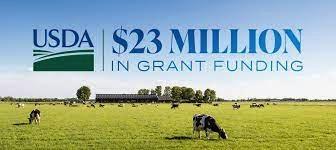 On October 3rd the USDA announced awards totaling $23 million under the Dairy Business Innovation Initiative Grant Program. Directed support was established in 2019 and has funded a total of 441 projects. The purpose of the program is to provide the dairy industry with resources to maintain a supply of dairy products to consumers. Given available market intelligence, the dairy industry is suffering from competition from plant-based alternatives and is subject to constant criticism from animal rights and welfare advocates. On October 3rd the USDA announced awards totaling $23 million under the Dairy Business Innovation Initiative Grant Program. Directed support was established in 2019 and has funded a total of 441 projects. The purpose of the program is to provide the dairy industry with resources to maintain a supply of dairy products to consumers. Given available market intelligence, the dairy industry is suffering from competition from plant-based alternatives and is subject to constant criticism from animal rights and welfare advocates.
Funds will be allocated to California State University at Fresno, the University of Tennessee, the Vermont Agency for Agriculture, and the University of Wisconsin. Funds will allow agencies and universities to provide technical support including business development, marketing and branding.
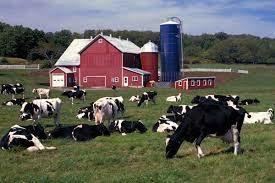
Given that the initiative has been in operation for four years, the USDA owes taxpayers an accounting of how funds that have been spent to date have resulted in benefits to both producers and consumers. The dairy industry receives considerable support from the USDA, unlike the egg industry in which producers are obliged to operate in a free-market and highly competitive economy.

|
USDA Restricts Import of Poultry and Products from France
|
10/04/2023 |
|
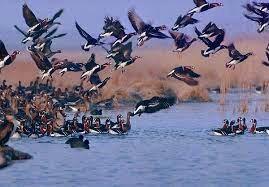 France has elected to vaccinate commercial ducks against Highly Pathogenic Avian Influenza after experiencing successive annual losses in the foie gras segment of their extensive poultry industry. Accordingly, the USDA has banned importation of all poultry including eggs and untreated duck products from the European Poultry Trade Region as defined by the USDA Animal Plant Health Inspection Service (APHIS). Although excluding Great Britain, E.U. nations are included in addition to Iceland, Switzerland and Norway. France has elected to vaccinate commercial ducks against Highly Pathogenic Avian Influenza after experiencing successive annual losses in the foie gras segment of their extensive poultry industry. Accordingly, the USDA has banned importation of all poultry including eggs and untreated duck products from the European Poultry Trade Region as defined by the USDA Animal Plant Health Inspection Service (APHIS). Although excluding Great Britain, E.U. nations are included in addition to Iceland, Switzerland and Norway.
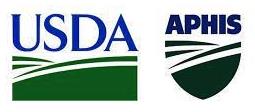
The action was taken to “Reduce the risk of introducing Highly Pathogenic Avian Influenza (HPAI) into the U.S”. Current USDA regulations disallow importation of poultry and products from nations that have reported HPAI to the World Organization for Animal Health or that have initiated a vaccination program against avian influenza.
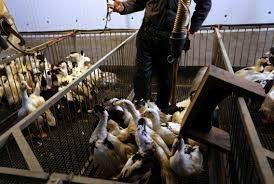
This is sheer bureaucratic overreaction that flies in the face of reality. For the edification of decision makers at APHIS, HPAI will inevitably be introduced into the U.S. and Canada by millions of migratory waterfowl and marine birds. The infection should be regarded as both seasonally and regionally endemic. In relation to the risk of wild birds, there is a disproportionately infinitesimal probability of introducing HPAI on poultry or products from France. This also applies to any exporting nation certifying that product was derived from either a region or even a flock free of HPAI. The outdated presumption that vaccination “masks HPAI virus circulating in poultry” is inconsistent with the availability of PCR to detect HPAI antigen.
It is understood that APHIS is discussing HPAI vaccination programs with the European Commission. What the world’s poultry industries require is universal acceptance of vaccination to establish poultry populations with a sufficient level of immunity to obviate mass depopulation. This could be predicated only on acceptance of vaccination and the introduction of appropriate diagnostic protocols and surveillance to maintain trade.
Based on over 50 years experience in poultry veterinary medicine on four continents, it can be stated with the weight of hindsight that “HPAI is the Newcastle disease of the 2020s”. During the 1960s, velogenic viscerotropic Newcastle disease (vvND) threatened the world’s industries until vaccination was adopted as a universal preventive measure. Denmark is the only nation with an established 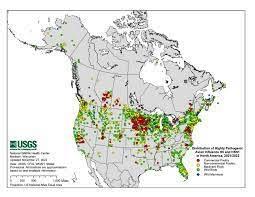 poultry industry that has periodic problems with Newcastle disease due to a policy of not vaccinating flocks. The U.S. vaccinates against Newcastle disease and we have an extensive export market due to universal acceptance of vaccination against ND. Highly Pathogenic Avian Influenza is a serious financial issue for the public sector in addition to both producers and consumers. The implications of HPAI should not be exacerbated by bureaucratic intransigence and clinging to established policy that restricts flexibility and realism in accepting the benefits of vaccination. poultry industry that has periodic problems with Newcastle disease due to a policy of not vaccinating flocks. The U.S. vaccinates against Newcastle disease and we have an extensive export market due to universal acceptance of vaccination against ND. Highly Pathogenic Avian Influenza is a serious financial issue for the public sector in addition to both producers and consumers. The implications of HPAI should not be exacerbated by bureaucratic intransigence and clinging to established policy that restricts flexibility and realism in accepting the benefits of vaccination.

|
Political Fallout from Calgary Daycare STEC Infection
|
09/19/2023 |
|
The STEC infection potentially affecting eleven daycare centers in Calgary, Alberta has become a political issue. As of September 15th, public health authorities have identified 337 confirmed cases of E.coli infections with the majority of patients under five years of age. There were 26 secondary cases, mainly among the siblings of those affected. Of the confirmed cases, 37 required hospitalization with 11 developing hemolytic uremic syndrome and six children underwent dialysis.

The Premier of Alberta, Danielle Smith, organized a press conference on September 15th in response to widespread negative publicity and a petition with more than a thousand signatures protesting lack of transparency. The outbreak was recognized on September 4th, but provincial authorities did not respond with a public meeting until Friday, September 15th. The position of the Government is that they responded quickly through Alberta Health Services, contacting parents as the outbreak progressed.
The kitchen, recognized as the source of infection, Kids U Centennial Inc. was closed along with the six affected and five related daycare centers. On September 4th, inspectors observed violations including insect infestation, accumulation of water on floors and other deficiencies in the kitchen. A factor contributing to the extent of the infection was that food was distributed from the central kitchen to daycare centers in a non-refrigerated vehicle with transit times of up to 90 minutes. Thermal abuse of a contaminated food item obviously promoted proliferation of the pathogen.
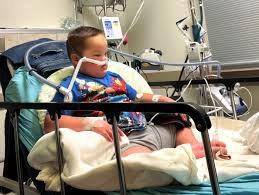 The Alberta Minister of Health, Adriana LaGrange, defended the Provincial Program of Disease Prevention noting the extent and frequency of inspections of kitchens and daycare centers. The Alberta Minister of Health, Adriana LaGrange, defended the Provincial Program of Disease Prevention noting the extent and frequency of inspections of kitchens and daycare centers.
As a concession to affected families, the Province will make a one-time compassionate payment of C$2,000 per outbreak patient. Children who developed HUS will require extensive medical surveillance through adulthood and in some cases children requiring dialysis may at some stage in their future require kidney transplantation.
The literature contains many examples of foodborne infection in schools and daycare centers attributed to E. coli O157:H7. The extent of the Calgary outbreak points to the risk associated with central catering facilities. As with outbreaks investigated in a retrospective study in Switzerland, it was determined that benefits accrue to placing an emphasis on high-risk kitchens and commissaries with frequent in-person inspections and enforced high standards of cleaning of work surfaces, utensils, equipment and with appropriate training. The Calgary daycare center outbreak represent an opportunity for the FDA and CDC in addition to local health authorities to review regulations and inspection procedures including frequency of inspections , monitoring of cold chains and sampling food ingredients for wholesomeness.

|
Congressional Opponents of Meat Industry Consolidation Intensify their Efforts
|
09/18/2023 |
|
 Senator Josh Hawley (R-MI) has introduced the Strengthening Antitrust Enforcement for Meat Packing Act. This in response to the announcement by Tyson Foods that plants in Dexter and Noel, Missouri will be closed along with plants in north Little Rock, AR and Corydon, IN. The Missouri closures will affect 2,000 of Senator Hawley’s constituents, although many, being Hispanic, are probably not voters. The proposed legislation would amend the Packers and Stockyards Act to allow antitrust action that results in market concentration. The second objective of that the Act would be to restrict the ability of existing packers and poultry producers from acquiring competitors. Senator Josh Hawley (R-MI) has introduced the Strengthening Antitrust Enforcement for Meat Packing Act. This in response to the announcement by Tyson Foods that plants in Dexter and Noel, Missouri will be closed along with plants in north Little Rock, AR and Corydon, IN. The Missouri closures will affect 2,000 of Senator Hawley’s constituents, although many, being Hispanic, are probably not voters. The proposed legislation would amend the Packers and Stockyards Act to allow antitrust action that results in market concentration. The second objective of that the Act would be to restrict the ability of existing packers and poultry producers from acquiring competitors.
In 2000, Senator Hawley, who is facing reelection in 2024, urged the Federal Trade Commission to “investigate the growing concentration in the meat packing and processing industry and any anticompetitive behavior resulting from this concentration”.
Senator Jon Tester (D-MT) is concerned over concentration in the red meat industry, pointing to the disruption caused by a transitory cyber-attack impacting JBS.

Senator Chuck Grassley (R-IA) questioned the acquisition of Sanderson Farms by a consortium of Cargill, Inc. and Continental Grain with the subsequent merger of Sanderson farms with Wayne Farms. Since the transaction, there has been no evidence of “an impact on consumer choice and price of poultry products”. The concerns of Senator Grassley that “continued mergers and acquisitions in an already concentrated poultry industry” have not deleteriously affected prices or availability.
As we move into election mode, politicians in the Senate and all those in the House will become more voluble over the perceived but unproven allegations of the evils of consolidation that effectively are reflected in operational efficiency and competitive prices for consumers.

|
Program to Improve the Integrity of Hen Keel Bones Initiated
|
09/04/2023 |
|
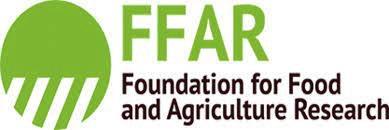 The Foundation for Food and Agriculture Research (FFAR) and Open Philanthropy, together with other supporters are funding the Layer Hen Keel Bone Health Program. The objective is to establish causes of sternal (keel bone) damage in pullets and laying hens and to implement corrective action. Currently the relative contributions of genetics, nutrition and housing or their interaction have not been defined. Nikki Dutta, Director of Scientific Programs with FFAR, stated, “Improving the welfare of animals is a critical component of animal husbandry and keel bone damage is a serious threat to the wellbeing of layer hens.” The Foundation for Food and Agriculture Research (FFAR) and Open Philanthropy, together with other supporters are funding the Layer Hen Keel Bone Health Program. The objective is to establish causes of sternal (keel bone) damage in pullets and laying hens and to implement corrective action. Currently the relative contributions of genetics, nutrition and housing or their interaction have not been defined. Nikki Dutta, Director of Scientific Programs with FFAR, stated, “Improving the welfare of animals is a critical component of animal husbandry and keel bone damage is a serious threat to the wellbeing of layer hens.”
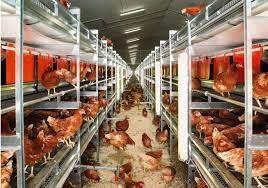 The program will award grants totaling $3 million to be shared by scientists at the University of Edinburgh and the University of California, Davis. Matching funds to support research will bring the total to $7 million. The program will award grants totaling $3 million to be shared by scientists at the University of Edinburgh and the University of California, Davis. Matching funds to support research will bring the total to $7 million.
Professor Ian Dunn of the University of Edinburgh, stated, “The project seeks to enable genetic selection directly for the keel bone itself as well as novel nutritional approaches and the influence of the timing of when hens start to lay on their bone quality.”
The research team is using x-ray images and machine learning to refine when and how keel damage occurs in relation to management especially at onset of production, and to investigate nutrition and genetic predisposition.
It is evident that keel damage has become a significant problem following the transition from cage rearing and laying to the use of aviary and floor systems.
Until results are available from research that has been initiated, producers can apply observation and experience to reducing injury to the sternum.. Appropriate measures include: -
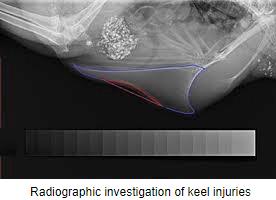
- Ensuring that pullets are reared in aviary systems that are compatible with their eventual housing during the laying cycle.
- Selecting strains that are placid under aviary conditions.
- Ensuring that light levels do not lead to excitation and excessive movement across aisles.
- Habituating flocks to the movement of workers along aisles.
- Providing adequate nutrition with specific reference to calcium phosphorus and micro-mineral content in both rearing and laying phases of production.
- Applying appropriate stocking density and management practices that contribute to flock uniformity.
- Selecting a biological rather than chronological age to initiate onset of laying by photo- stimulation.
- Ensuring that rearing and laying aviaries have adequate and functional perches, ramps and landing areas.
- Limiting the height of rearing and laying aviaries to two tiers and reducing the width of aisles to a level consistent with the ability of pullets and hens to successfully move between rows of aviary modules.

|
USDA Office of Inspector General Review of Organic Enforcement
|
08/30/2023 |
|
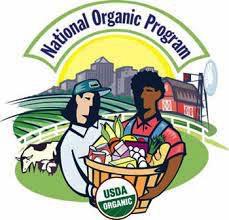 The Office of Inspector General of the U. S. Department of Agriculture has reviewed the National Organic Program with respect to the proposed Strengthening Organic Enforcement Final Rule. This measure includes The Office of Inspector General of the U. S. Department of Agriculture has reviewed the National Organic Program with respect to the proposed Strengthening Organic Enforcement Final Rule. This measure includes
- Requiring risk-based oversight and enforcement;
- Protecting intellectual property;
- Mandating National Organic Program import certification;
- Enhancing record keeping and supply chain traceability
- Encouraging interagency coordination in enforcement of organic trade.
Since inception, the National Organic Program has relied on documentation and audits of paper trails. A number of high-profile cases involving deception and misrepresentation have arisen in past years. The difference in value between conventional and certified organic ingredients is an incentive for illegal claims but with minimal opportunity for detection.
The National Organic Program would be well advised to establish an assay program to detect non-GM contamination and to certify products as free of pesticides and disallowed chemicals and additives. In the absence of a structured sampling and laboratory assay program, the USDA is reliant on paper and electronic records that may be subject to fraud.
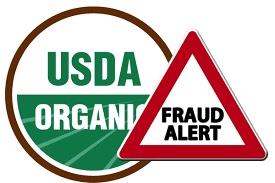 Over three decades there has been no definitive evidence that GM ingredients are deleterious to health or are less nutritious than conventional analogs. The price differential for USDA certified organic products is only justified by consumer perception based on misinformation and demonization of GM technology. Over three decades there has been no definitive evidence that GM ingredients are deleterious to health or are less nutritious than conventional analogs. The price differential for USDA certified organic products is only justified by consumer perception based on misinformation and demonization of GM technology.
The USDA-AMS has been remiss in marketing the value of the organic seal to egg consumers. This may be attributable to the fact that there are no inherent or quantifiable attributes differentiating organic from cage-free eggs.

|
Concern Over Zoonotic Potential for HPAI in Fur Farming
|
08/27/2023 |
|
Following an initial isolation of H5N1 HPAI virus from foxes in a fur farm in Ostrobothnia, Finland, surveillance has identified infection on an additional 25 farms located in close proximity in the Kausti locality. Approximately 120,000 foxes have been euthanized on ten farms with depopulation proceeding at an additional three facilities. The molecular characteristics of the virus from foxes is common to the isolates from sea gulls in the area. The Food Authority of Finland is closely monitoring the infection in farms raising foxes and other species for the fur trade.
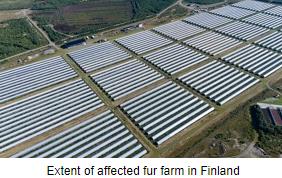
Concentration of fur-bearing animals including mink, represent a potential for mutation of the H5N1 virus to become zoonotic. For a clade 2.3.4.4b avian influenza virus to become pathogenic to humans, a number of mutations are required. It is presumed that the first of these involving the PB2 gene coding for polymerase activity has occurred. The E627K mutation involving substitution of glutamate for lysine is necessary for the avian virus to reproduce in mammalian cells. Amino acid substitutions associated with mutations Q226L and G228S in hemagglutinin are also required to allow an H5N1 avian virus to attach to mammalian host cells.
It is unlikely that the two mutations could occur simultaneously in nature although concentration of a susceptible species such as mink or foxes in close proximity would exert selection pressure leading to a virus that could be pathogenic in humans and also be sufficiently stable for airborne transmission. A further mutation that would favor pathogenicity would be a genetic change to allow the virus to evade an intracellular protein termed MxA that activates the immune system against an influenza virus.
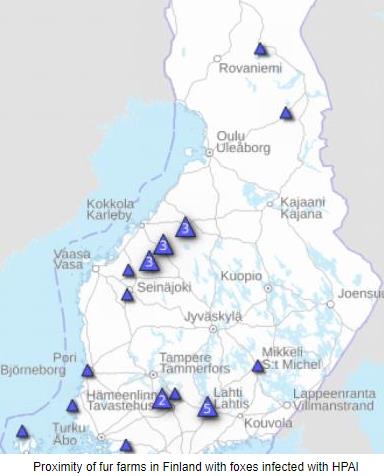 Through increasing knowledge of the molecular virology of influenza viruses and the immunology of infections, it is evident that H5N1 is currently not pathogenic to humans. This is evidenced by the low number of cases diagnosed with H5N1 infection despite extensive exposure. The possibility of sequential mutations occurring in H5N1 in large populations of birds such as a farm with two to five million hens or in mammalian populations on fur-production farms increases the opportunity for mutation. Through increasing knowledge of the molecular virology of influenza viruses and the immunology of infections, it is evident that H5N1 is currently not pathogenic to humans. This is evidenced by the low number of cases diagnosed with H5N1 infection despite extensive exposure. The possibility of sequential mutations occurring in H5N1 in large populations of birds such as a farm with two to five million hens or in mammalian populations on fur-production farms increases the opportunity for mutation.
The risk of a recombinant event with an individual infected with a human strain of influenza coming into contact with an infected flock or herd could theoretically occur and might lead to a novel zoonotic strain. Accordingly, all personnel coming into contact with flocks of poultry or concentrations of fur-bearing animals should be immunized against circulating strains of human influenza.
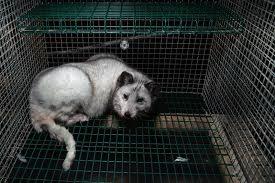
Farms housing mink, foxes and other fur-bearing animals represent a potential danger to human populations. Production of pelts is intended to satisfy vanity and serves no practical purpose while representing a potential risk to humanity. Fur production should be phased out in the U.S. as has occurred in many nations in Europe. This does, however, not obviate risk since the demand for pelts persists with a shift in production to nations including China, the primary source of zoonotic viral pathogens with pandemic potential.

|
Agency Jurisdiction over Genetically Modified Animals
|
08/13/2023 |
|
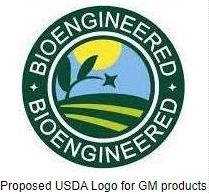
There is a current turf conflict between the U.S. Food and Drug Administration and the USDA concerning regulation of genetically modified animals. To date the FDA has been responsible but has a poor record of expediting review and approval. The AquAdvantage® salmon took 20 years before receiving a green light. The FDA inactivity has emboldened non-profit activist organizations including the Center for Science in the Public Interest that generate their funding by frightening consumers and serving as contemporary scientific Luddites.
In early August, representatives from USDA and the FDA discussed their relative potential contribution in regulation of GM animals in a White House meeting although no decisions have been announced. It is noted that the FDA and the USDA did cooperate in their respective areas of competence to develop regulations to approval cell-cultured meat.
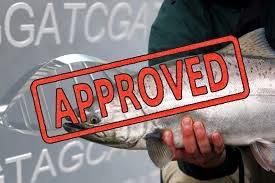
Other nations including the U.K. are advancing genetic modification considered necessary to create disease-resistant livestock and to enhance efficiency necessary to feed burgeoning populations.
The USDA has the resources including personnel to evaluate genetic modifications based on extensive experience with plants that fall within its jurisdiction. Accordingly the broader issue of genetic modification of poultry, hogs and cattle should logically fall under the responsibility of the USDA.

|
FDA Structure in Relation to Food Oversight
|
08/03/2023 |
|
Three former senior officials at the Food and Drug Administration (FDA) including Dr. Stephen Ostroff, Dr. Michael Taylor and Dr. David Acheson submitted written and oral testimony to Congress relating to restructuring of the Agency. Collectively the three officials tasked with food safety served from 2007 through 2018 bracketing enactment of the Food Safety Modernization Act of 2011.
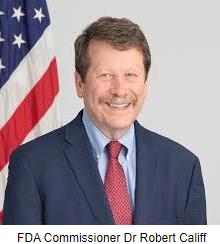
Numerous observers have supported the Reagan-Udall Foundation recommendation to appoint a Deputy Commissioner of the FDA responsible for all aspects of nutrition and food safety including R&D, inspections, compliance and enforcement.
The current Commissioner of the FDA, Dr. Robert Califf, has opted not to follow recommendations to consolidate food within his Agency based on the fact that this would require profound changes to culture and interaction along existing functional (or dysfunctional) components. Industry and consumers need a cohesive agency that will address challenges and implement the Food Safety Modernization Act.
The three previous FDA Deputy Commissioners regard the proposed restructuring as perpetuating the “fractured structure and divided lines of management accountability we know will not work”. The alternative of moving the food-related activities under a separate Commissioner within the U.S. Department of Health and Human Services would require Congressional approval and would encounter a delay before implementation.
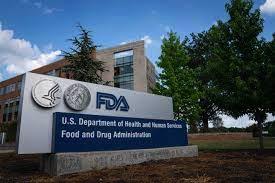
In the event of a serious food safety issue reflecting the magnitude of the infant formula crisis or following a widespread food toxicity or foodborne infection, Congress may move with haste to rectify obvious problems that stem from an inappropriate structure and neglect of oversight. An example of a rapid reorganization is the creation of the Department of Homeland Security that combined agencies and functions in the aftermath of a national tragedy. Congress should act to separate all food-related activities from the current FDA to be placed under a qualified and motivated Commissioner establishing a parallel to what would remain as the Federal Drug Agency. As the Washington observers remark, the ‘F’ in FDA is silent!

|
Russia Urged to Cease Hostilities in Ukraine and Restore BSGI by African Leaders
|
07/31/2023 |
|
 A recent conference involving leaders of African nations in St. Petersburg evidenced discontent with disruption of grain supplies from Ukraine rather than engendering goodwill for the Russian Federation. A recent conference involving leaders of African nations in St. Petersburg evidenced discontent with disruption of grain supplies from Ukraine rather than engendering goodwill for the Russian Federation.
The president of the Congo Republic called for a restoration of peace and was supported by the president of Egypt who called for restoration of the Black Sea Grain Initiative. The leaders of African nations have crafted a peace proposal that will inevitably be unacceptable to both belligerents
 President Vladimir Putin maintains that rising prices of grain was a consequence of “western policy mistakes that long predated the Ukraine war”. This assertion is contradicted by documented increases in the prices of commodities following the February 2022 invasion of Ukraine. He pledged 25,000 to 50,000 tons of grain as a donation to six nations in need and offered to cancel debt that could not be repaid in any event. President Vladimir Putin maintains that rising prices of grain was a consequence of “western policy mistakes that long predated the Ukraine war”. This assertion is contradicted by documented increases in the prices of commodities following the February 2022 invasion of Ukraine. He pledged 25,000 to 50,000 tons of grain as a donation to six nations in need and offered to cancel debt that could not be repaid in any event.
Putin maintained that Russia withdrew from the Black Sea Grain Initiative because “It was not getting grain to the poorest countries and the West was not keeping its side of the bargain.” Russia used the BSGI and world hunger as leverage in attempting to force E. U. nations and the U. S. to withdraw or ease sanctions imposed on Russia.
Putin has resisted entreaties by African nations to reach an accord with Ukraine and it is apparent that the St. Petersburg meeting failed to strengthen ties with Africa and to establish a more benevolent image of the Russian Federation.
It is apparent that Russia intends to annex the four Ukrainian regions in the east that were occupied 17 months ago and representing close to 20 percent of Ukrainian territory over and above Crimea that was annexed in 2014. Understandably the Ukraine is rejecting a cease-fire or peace agreement that would cede the four occupied regions and Crimea. The nation is resisting a cease-fire that would enable the Russian Federation to re-arm. Even if the GSBI were to be renewed with immediate effect, the damage caused by deliberate destruction of grain storage and port infrastructure would continue to restrict supply of grain to African nations.

|
Delaware Valley University to Establish Poultry Science Center-Is this Duplication?
|
07/23/2023 |
|
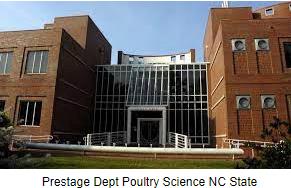 Based on a partnership with Mountaire Farms, Inc., Delaware Valley University will establish a Poultry Science Center on their main campus at Doylestown, PA. According to Dr. Broc Sandelin, Dean of the School of Agriculture Environmental Sciences, “The new state-of-the-art facility will provide the opportunity for hands-on education in all stages of poultry production as well as providing space for industry driven research projects.” Phillip Plylar, President of Mountaire Farms, stated, “We are excited about the opportunity to work directly with Delaware Valley University to ensure that the poultry industry will have a well-educated and trained workforce moving forward.” The Company is commended on their philanthropy. Based on a partnership with Mountaire Farms, Inc., Delaware Valley University will establish a Poultry Science Center on their main campus at Doylestown, PA. According to Dr. Broc Sandelin, Dean of the School of Agriculture Environmental Sciences, “The new state-of-the-art facility will provide the opportunity for hands-on education in all stages of poultry production as well as providing space for industry driven research projects.” Phillip Plylar, President of Mountaire Farms, stated, “We are excited about the opportunity to work directly with Delaware Valley University to ensure that the poultry industry will have a well-educated and trained workforce moving forward.” The Company is commended on their philanthropy.

Although the majority of Land Grant colleges and agricultural institutions have consolidated poultry, dairy and livestock programs into single animal science departments, there are still an adequate number of separate and dedicated poultry programs that will provide educational opportunities at the baccalaureate through doctoral levels. Consolidation is not necessarily deleterious to advance technology relating to poultry production and processing. A concentration of academics with diverse specialties attracts both extra mural funding and hence opportunities for students.
It is seriously questioned whether the industry could benefit from a proliferation of new programs or whether strengthening existing institutional centers of excellence would be more productive. Given proximity to and contact with industry segments, midwest Land Grant universities have expertise in egg production and southeastern universities are concerned with broilers and turkeys. There is an understandable level of overlap given advances in biotechnology, environmental management, flock health, cooperative research, extension and teaching. Interaction among appropriate disciplines can provide for balanced baccalaureate program and opportunities for continuing research. This is best achieved at major Land Grant universities. Community Colleges and small universities have a role to play in educating the next generation of poultry production personnel as feeder institutions. The heavy lifting will continue to be conducted by the major Land Grant institutions with funding, facilities and qualified faculty. understandable level of overlap given advances in biotechnology, environmental management, flock health, cooperative research, extension and teaching. Interaction among appropriate disciplines can provide for balanced baccalaureate program and opportunities for continuing research. This is best achieved at major Land Grant universities. Community Colleges and small universities have a role to play in educating the next generation of poultry production personnel as feeder institutions. The heavy lifting will continue to be conducted by the major Land Grant institutions with funding, facilities and qualified faculty.

|
Fairness in Farming Act Intended to Control Commodity Board Expenditures
|
07/18/2023 |
|
The Opportunities for Fairness in Farming Act (OFF) introduced by Senator Cory Booker (D-NJ) and Senator Mike Lee (R-UT) is a response to ongoing complaints by beef and dairy farmers concerning expenditures by their respective Commodity Boards. Matt Barron a dairy industry veteran writing in the Greenfield Recorder, noted that the National Dairy Promotion and Research Board operated with limited transparency and oversight over questionable expenditure of check-off revenue amounting to $364 million in 2021. Despite promotional expenditures to encourage consumption, the dairy industry is losing farmers with 20,000 family-farms ceasing operation between 2010 and 2020. This is not as a result of any overt neglect or adoption of inappropriate policies by the Board. Sales of fluid milk has encountered extensive competition from plant-based alternatives over the past ten years, prices are accordingly low and small family farms lack economies of scale allowing them to compete with mega-producers.
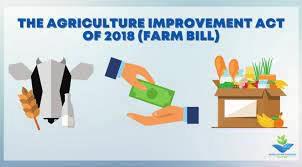
According to public records, the National Dairy Promotion and Research Board contracts with Dairy Management, Inc., a lobbying organization that received $110 million in 2021. This company enters into partnerships with large corporations with questionable value for the promotion of milk and to the benefit of farmers who provide the check-off funds.
The Department of Agriculture appears to be at fault for failing to provide Congress with reports on Board expenditures. Secretary of Agriculture, Tom Vilsack, has been singled out since reports were not submitted between 2012 and 2016 under his previous tenure as Secretary in the Obama Administration. Reports have also not been submitted from 2020 to 2023 with respect to disbursement of dairy check-off funds. The most recent report was submitted in 2019 documenting $400 million in expenditures.
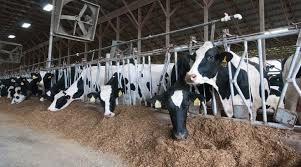 Matt Barron suggests a connection between lack of oversight over the Dairy Board and the fact that over the period when Secretary Vilsack was out of office, he was CEO of the U.S. Dairy Export Council with a salary and benefits reported to exceed $1 million annually. An audit would probably disclose similar deficiencies with respect to other boards administering check off funds for agricultural commodities invalidating any deliberate neglect or impropriety by the USDA Secretary. Matt Barron suggests a connection between lack of oversight over the Dairy Board and the fact that over the period when Secretary Vilsack was out of office, he was CEO of the U.S. Dairy Export Council with a salary and benefits reported to exceed $1 million annually. An audit would probably disclose similar deficiencies with respect to other boards administering check off funds for agricultural commodities invalidating any deliberate neglect or impropriety by the USDA Secretary.
The OFF Act, intended for incorporation into the 2023 Farm Bill, would enforce transparency and accountability. The legislation is supported by the National Farmers Union, the National Dairy Producers Association, the Organization for Competitive Markets, the Farm Action Fund and dairy associations in New England states.
The American Egg Board appears to be beyond reproach with respect to use of check-off funds for their intended purpose. These include promotion to consumers and the food industry; research on new products and scientific nutrition emphasizing the benefit of eggs and discretion in funding legitimate administrative expenses. The only discordant note is their adoption of new terms that are somewhat meaningless with respect to categories of expenditure. In the interest of transparency, those responsible at the AEB should revert to standard nomenclature so that the industry can meaningfully read a statement of income and expenditure and recognize specific purposes to which funds are allocated.

|
Basis of Nonsusceptibility of Humans to H5N1 Investigated
|
07/06/2023 |
|
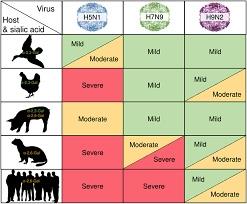 Scientists at the University of Glasgow, Center for Virus Research have evaluated the genetic factors associated with resistance of humans to avian influenza viruses. It was established that a gene designated BTN3A3 expressed in mucosal cells of the human respiratory tract are responsible for a protein that blocks replication of many strains of avian influenza in vitro in cell indicator systems. Human strains of influenza are unaffected by the presence of the gene as was the case with the virus responsible for the 1918-19 pandemic. Despite the ongoing panornitic of H5N1 avian influenza there have been few documented cases of infection in humans and no evidence of human-to-human spread. Scientists at the University of Glasgow, Center for Virus Research have evaluated the genetic factors associated with resistance of humans to avian influenza viruses. It was established that a gene designated BTN3A3 expressed in mucosal cells of the human respiratory tract are responsible for a protein that blocks replication of many strains of avian influenza in vitro in cell indicator systems. Human strains of influenza are unaffected by the presence of the gene as was the case with the virus responsible for the 1918-19 pandemic. Despite the ongoing panornitic of H5N1 avian influenza there have been few documented cases of infection in humans and no evidence of human-to-human spread.
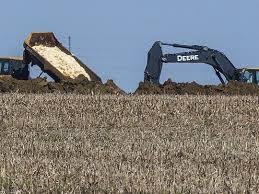 The H5N1virus has been isolated from terrestrial free-living mammals contracting the disease, presumably from consuming dead infected wild birds. More recently, there is evidence that mink-to-mink transmission occurred on a farm in Spain and there is also a presumption that cat-to-cat transmission may be occurring among feral cats in Poland given the extent of infection and the incidence rate. At this stage there is no explanation for high mortality in marine mammals along the coast of Peru or for the sporadic cases on the shores of three continents The H5N1virus has been isolated from terrestrial free-living mammals contracting the disease, presumably from consuming dead infected wild birds. More recently, there is evidence that mink-to-mink transmission occurred on a farm in Spain and there is also a presumption that cat-to-cat transmission may be occurring among feral cats in Poland given the extent of infection and the incidence rate. At this stage there is no explanation for high mortality in marine mammals along the coast of Peru or for the sporadic cases on the shores of three continents
Examination of H5N1 isolates indicates that half of the strains evaluated are resistant to proteins coded by BTN3A3. This situation represents a potential risk of H5N1 becoming a zoonotic infection should additional mutations occur in the H5N1 genome.
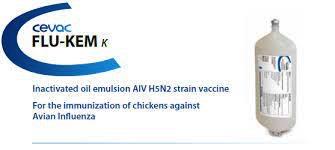 Given that wild migratory birds serve as both reservoirs and disseminators of the virus that has been identified on five continents since 2020, suppression of the infection in commercial poultry is considered necessary to prevent a potential zoonosis. The traditional approach to control of avian influenza involves rapid diagnosis, flock depletion, quarantine and surveillance. These measures have been unsuccessful in eradicating avian influenza in Asia, Africa, Europe and the Americas. It is becoming apparent that avian influenza is seasonally and regionally endemic in many regions with large commercial poultry populations. Alternative strategies incorporating immunization should be adopted as an adjunct to biosecurity to control persistence of infection in poultry and to prevent the possible emergence of a zoonotic infection. Given that wild migratory birds serve as both reservoirs and disseminators of the virus that has been identified on five continents since 2020, suppression of the infection in commercial poultry is considered necessary to prevent a potential zoonosis. The traditional approach to control of avian influenza involves rapid diagnosis, flock depletion, quarantine and surveillance. These measures have been unsuccessful in eradicating avian influenza in Asia, Africa, Europe and the Americas. It is becoming apparent that avian influenza is seasonally and regionally endemic in many regions with large commercial poultry populations. Alternative strategies incorporating immunization should be adopted as an adjunct to biosecurity to control persistence of infection in poultry and to prevent the possible emergence of a zoonotic infection.

|
2022 Egg Industry Center P/C/T Report
|
07/05/2023 |
|
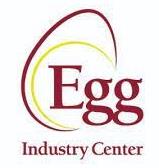 On June 28th, the Egg Industry Center released the 2022 U. S. Egg Processing, Cartoning and Transportation Costs Report (P/C/T). The document compiled by Maro Ibarburu, Lisa Vold and Richard Gates of the EIC incorporates input from Alejandro Plastina of the Department of Economics at Iowa State University. On June 28th, the Egg Industry Center released the 2022 U. S. Egg Processing, Cartoning and Transportation Costs Report (P/C/T). The document compiled by Maro Ibarburu, Lisa Vold and Richard Gates of the EIC incorporates input from Alejandro Plastina of the Department of Economics at Iowa State University.
The report is an update of the previous 2021 survey. The most recent report includes grade yield loss but these values reflected the confounding arising from high differentials in cost among sizes in 2022 due to HPAI.
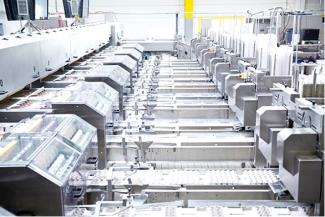 Of the 100 surveys sent to producers, 18 were returned that is in itself problematic. In some cases, only 7 to 9 responses were used in calculations. Since the surveys were anonymous, the claim that the limited number of responses represented 124 million layers or 37 percent of the pre-HPAI hen population is speculative and self-serving. If the U.S. egg industry expects the Egg Industry Center to provide accurate and representative results, then they have the obligation to support the staff of the Center with comprehensive and detailed data as requested. Of the 100 surveys sent to producers, 18 were returned that is in itself problematic. In some cases, only 7 to 9 responses were used in calculations. Since the surveys were anonymous, the claim that the limited number of responses represented 124 million layers or 37 percent of the pre-HPAI hen population is speculative and self-serving. If the U.S. egg industry expects the Egg Industry Center to provide accurate and representative results, then they have the obligation to support the staff of the Center with comprehensive and detailed data as requested.
There is obviously concern that because the data is submitted to a Land Grant University, accessibility is possible through the Freedom of Information Act. The University of Minnesota overcame this problem by having the principal investigator of a project quantifying antibiotic use having to register an LLC that issued the questionnaires and collected the results.
The usable highlights from the 2023 EIC survey include: -
- With respect to packaging, the median cost of cartons was 12.6 cents per dozen for 12-egg packs and 12.3 cents per dozen for 18-egg packs. Outer packaging added 4.7 cents per dozen for 30-dozen cases (rounded to 0.1 cent) with additional finishing costs of 1.5 cents per dozen. These costs are generally in-line with accepted commercial values assumed to be either fiber or polystyrene foam packs with cardboard outer containers. Obviously, the cost for packaging specialty eggs in PET or custom-designed packs would be higher. It is noted that the cost of outer packaging for 15-dozen outer containers was 4.9 cents per dozen compared to 5.2 cents per dozen for reusable (presumably plastic) containers. Instead of relying on a constant or diminishing 9 to 15 responses for packaging costs, EIC could obtain prices directly from manufacturers with an indication of delivered cost against volume allowing insertion of more representative values for each of the major categories of packaging.
- The median cost of processing for gradable nest run class-1 eggs was 19.3 cents per dozen based on 16 usable responses. There was no breakdown of this significant component as to fixed and variable cost in relation to volume processed or plant location.
- Transportation costs were based on cartoned eggs. The median cost for direct store delivery was 9.4 cents per dozen and to a warehouse, 6.3 cents per dozen.
- Transport cost over 200 miles was 6.1 cents per dozen rising proportionately to 10.6 cents per dozen for 700-mile delivery.
- The estimated median cost of processing eggs sourced in-line and delivered to warehouses was 56.3 cents per dozen, 21 percent higher than the value derived in 2021.
It is reiterated that cooperation from the industry is critical to obtaining accurate and representative data to be incorporated into reports. If the industry does not cooperate, then the Egg Industry Center has little option other than to project costs based on best available information. This would include prices supplied by manufacturers of packing equipment that will probably be more representative than through surveys, projection of fixed and variable operating costs for processing plants based on known capital costs of buildings, installations, graders and equipment, age of plants with prevailing interest rates. Variable operating costs could be based on known labor, power, water, packaging and maintenance values weighted among the six production regions and taking into account the relative numbers of dozens packed. Projections of cost derived from prices from suppliers and USDA sources would be more comprehensive than the current approach using surveys. Cost projections should be duly reviewed and validated by knowledgeable and disinterested representatives from among the production and allied industries. This approach would be more accurate and representative than undertaking surveys requiring statistical manipulation of limited data including trimming of means derived from a handful of responses. The limited number of returns implies potential bias based on the willingness or reluctance to supply data.
The EIC can and should do better to serve the industry. More meaningful reports will however require ingenuity, imagination and above all an appreciation of the needs of end-users.

|
Opposition to VSD
|
06/22/2023 |
|
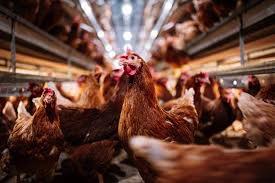 The Animal Welfare Institute has petitioned the USDA Animal and Plant Health Inspection Service to “to exercise its authority to require emergency action plans to depopulate laying flocks” some of which are housed in complexes with more than three million hens. The Animal Welfare Institute has petitioned the USDA Animal and Plant Health Inspection Service to “to exercise its authority to require emergency action plans to depopulate laying flocks” some of which are housed in complexes with more than three million hens.
Based on experience gained during the 2015 HPAI epornitic in the U. S., APHIS set a target of 48 hours to depopulate a complex to limit lateral spread of the infection. Accordingly, the previous program of using “kill carts” flushed with carbon dioxide was frequently abandoned during the 2022 outbreak. Ventilation shutdown with or without heat or carbon dioxide was applied to expedite depopulation. According to the Animal Welfare Institute, 37 outbreaks on large complexes required at least three days extending upwards to more than a week.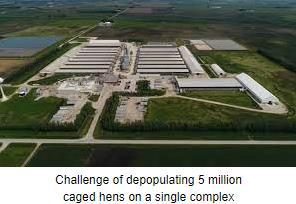
The petition submitted by the Animal Welfare Institute demands more humane methods of mass depopulation. Unfortunately, they fail to suggest alternatives or how this can be achieved. Since 2015, depopulation of floor-housed flocks of broilers, laying hens and turkeys has been accomplished using carbon dioxide foam that is rapid and humane although requiring special equipment manufactured and deployed in anticipation of an outbreak. The problem of depopulating large flocks in cage housing and aviaries remains unsolved, hence, the adoption of ventilation shutdown.
Apart from the Animal Welfare Institute, organizations opposed to intensive livestock production have used avian influenza and mass depopulation as an issue and it is inevitable that public sentiment against contrived suffocation will increase. It is noted that a welfare bill introduced by Senator Cory Booker (D-NJ) both VSD and foam depopulation would be banned.
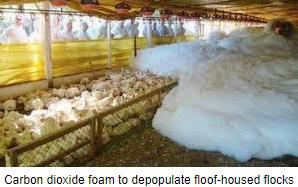 Opposition to VSD that appears to be the only current practical method of depopulating large cage and aviary complexes since whole-house hypercapnic killing is ineffective. This is due to an inability to adequately seal most houses coupled with the cost involved in attaining an adequate concentration of carbon dioxide in a building with a capacity approaching 300,000 cubic feet. Opposition to VSD that appears to be the only current practical method of depopulating large cage and aviary complexes since whole-house hypercapnic killing is ineffective. This is due to an inability to adequately seal most houses coupled with the cost involved in attaining an adequate concentration of carbon dioxide in a building with a capacity approaching 300,000 cubic feet.
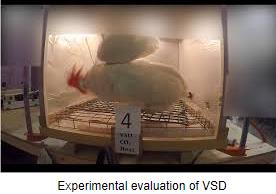 Mass depopulation might not be required if veterinary regulators were to reevaluate their King Canute approach to stamping out a virulent infection introduced seasonally by migratory birds and possibly transmitted by the aerogenous route. Events in the U. S. during 2022 and ongoing in the E.U. suggests that alternative approaches to prevention including mass immunization may be more efficient, reducing the need for VSD and the direct and indirect costs of mass depopulation. Mass depopulation might not be required if veterinary regulators were to reevaluate their King Canute approach to stamping out a virulent infection introduced seasonally by migratory birds and possibly transmitted by the aerogenous route. Events in the U. S. during 2022 and ongoing in the E.U. suggests that alternative approaches to prevention including mass immunization may be more efficient, reducing the need for VSD and the direct and indirect costs of mass depopulation.
Events in 2022 and possibly what is yet to come in the fall, demonstrate the fallacy of attempting to eradicate what may be considered as a seasonally and regionally endemic disease. Avian influenza may be regarded as the “Newcastle disease” of the 2020s”. This catastrophic disease was effectively controlled by vaccination, not by ‘stamping out’. The World’s poultry industries coexist with Newcastle disease through effective vaccination complemented by biosecurity.

|
Rabobank Reviews World Egg Situation
|
06/21/2023 |
|
In a recent review of World egg supply, prices and trends, Nan-Dirk Mulder, Senior Analyst, at Rabobank considered the extent and causation of price volatility in eggs. Mulder noted that during the past year, egg prices have exceeded the FAO Food Price Index. The expectation is for prices to remain high through the remainder of 2023 but at a lower level than the peaks recorded during the first quarter of the year.
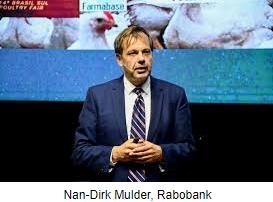 The Rabobank report did not address the precipitous decline in egg prices in the U.S. as the market entered the second quarter of this year. The decline cannot be attributed to a rise in supply since hen numbers have not increased by more than ten million from a constant deficit of approximately twenty million hens or about seven percent of the pre-HPAI population. Losses occurred as a result of a second wave of avian influenza during the fall of 2022, ending in December. An increase of approximately ten million hens in the producing flock should not have depressed wholesale prices from $4 to less than $1 over a five-week period. Despite the accepted price elasticity of eggs, it is evident that other factors including the distorting effect of the prevailing price discovery system, amplifying peaks and troughs may have played a role. The Rabobank report did not address the precipitous decline in egg prices in the U.S. as the market entered the second quarter of this year. The decline cannot be attributed to a rise in supply since hen numbers have not increased by more than ten million from a constant deficit of approximately twenty million hens or about seven percent of the pre-HPAI population. Losses occurred as a result of a second wave of avian influenza during the fall of 2022, ending in December. An increase of approximately ten million hens in the producing flock should not have depressed wholesale prices from $4 to less than $1 over a five-week period. Despite the accepted price elasticity of eggs, it is evident that other factors including the distorting effect of the prevailing price discovery system, amplifying peaks and troughs may have played a role.
On a world basis, Mulder is correct in attributing price volatility to factors other than those currently influencing the U. S. market: -
- He attributes higher feed and other input costs including labor and energy as being responsible. Generally, cost of production and the retail price are not directly connected. Price is a function of demand in relation to supply. He is correct in noting that the viability of small-scale producers in emerging markets has deteriorated but this would not have had more than a local effect.
- Supply was severely constrained in many E.U. nations and in North America by the H5N1 panornitic in 2022 with prospects of resurgence in the fall. Although 44 million hens were depleted in the U. S., outbreaks occurred in two waves and in effect, approximately 20 million hens or approximately seven percent of the population were not producing on a constant basis during the year. Japan was severely affected with the loss of 17 million hens representing nine percent of the laying flock and in South Africa with a loss of close to three million hens, supply was lowered by ten percent.
 It remains to be seen whether outbreaks in Latin America will severely impact supply including the potential to devastate areas of high-density egg production in Brazil. It remains to be seen whether outbreaks in Latin America will severely impact supply including the potential to devastate areas of high-density egg production in Brazil.
- Demand increased in 2022 as a result of lifting COVID restrictions with a consequential increase in demand by the food service sector.
- Inflation has raised the price to consumers of all animal proteins. There has been evident substitution of red meat by chicken and an increase in demand for eggs that represent value especially for in-home meals among lower economic demographics.
- Rabobank attributes a ban on the culling of cockerels for producing shortages in Western Europe. Apparently, the producing flock in Germany has dropped by 20 percent and this nation will evidently be obliged to import more eggs. Local factors such as the banning of conventional cages in New Zealand has disrupted supply resulting in a 10 to 15 percent deficit in the national flock. Government intervention placing ceiling prices on eggs in some nations has contributed to volatility. This strategy is invariably ineffective since small-scale farmers reduce their production as they are unable to generate positive margins in the face of increased costs. Government intervention placing a ceiling price on eggs and other foods converts a low-price policy into a no-food situation The opposite occurs when subsidies are provided resulting in an over-supply in the intermediate term generating volatility.
The conclusion of the Rabobank report is that prices will follow a cyclic pattern as flocks are replaced. In some cases, large flocks that produce in excess of demand can create market distortions as happened in the U.S. during 2016 following recovery from HPAI.
Mulder correctly indicates that the unknown factor in future egg prices will be the incidence rate of avian influenza. This is a function of a series of H5Nx viruses persisting and undergoing drifts and shifts in migratory and marine wild-bird populations. Stability in prices will only be achieved with control of HPAI through deployment of an effective and extensive program of immunization as an adjunct to biosecurity.

|
EATS Act an End-Run Around SCOTUS Proposition #12 Decision
|
06/18/2023 |
|
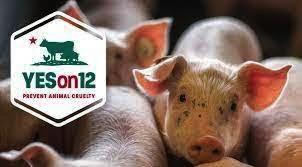 In the majority decision handed down by the Supreme Court of the United States (SCOTUS), it was stated that if state legislation having an effect on production systems in other states was undesirable, then it was the role of Congress to enact legislation to that effect. Accordingly the Ending Agricultural Trade Suppression (EATS) Act addresses the challenge presented by SCOTUS. The Act is co-sponsored by Senators Roger Marshall (R-KS), Chuck Grassley (R-IA), John Cornyn (R-TX), Tom Cotton (R-AR), Deb Fischer (R-NE), Kevin Kramer (R-MD), Joni Ernst (R-IA), Eric Schmitt (R-MO), Ted Budd (R-NC) and Bill Hagerty (R-TN). In the majority decision handed down by the Supreme Court of the United States (SCOTUS), it was stated that if state legislation having an effect on production systems in other states was undesirable, then it was the role of Congress to enact legislation to that effect. Accordingly the Ending Agricultural Trade Suppression (EATS) Act addresses the challenge presented by SCOTUS. The Act is co-sponsored by Senators Roger Marshall (R-KS), Chuck Grassley (R-IA), John Cornyn (R-TX), Tom Cotton (R-AR), Deb Fischer (R-NE), Kevin Kramer (R-MD), Joni Ernst (R-IA), Eric Schmitt (R-MO), Ted Budd (R-NC) and Bill Hagerty (R-TN).
The proposed EATS Bill states, “The government of a State or unit of local government within a State shall not impose a standard or condition on the pre-harvest production of any agricultural products sold or offered for sale in interstate commerce if the production occurs in another state.”
 The EATS Act would effectively limit the impact of California Proposition #12 with regard to housing systems with specific reference to gestation crates. With respect to egg production the situation regarding Proposition #12 is moot, since approximately one third of all U.S. hens are housed in other than conventional cages. The EATS Act would effectively limit the impact of California Proposition #12 with regard to housing systems with specific reference to gestation crates. With respect to egg production the situation regarding Proposition #12 is moot, since approximately one third of all U.S. hens are housed in other than conventional cages.
Passage of the EATS Bill through the Senate is questionable given support of the objectives of Proposition #12 and eventual enactment, may be years in the future. Irrespective of the well-meaning intentions of the sponsors representing hog-producing states, pork producers are now facing the court of public opinion. Although existing producers and packers can satisfy the requirements of Proposition #12 with regard to California and states with similar legislation, antipathy towards gestation crates is extensive. Many food retailers and restaurants have committed to sourcing pork from systems using group-housing of sows. In response, major hog producers and packers, including Tyson Foods, Smithfield Foods, Hormel Foods, Niman Ranch and others, have either converted or are in the process of phasing out gestation crates in their supply chains.

|
Opponents of Livestock Production Focusing on Environmental Issues
|
06/13/2023 |
|
 For decades, opponents of intensive livestock production and those promoting a vegan agenda relied on welfare issues and sentiment to promote their cause. It is now apparent that welfare and environmental groups are collaborating in an attempt to demonize intensive livestock and poultry production by emphasizing environmental concerns. For decades, opponents of intensive livestock production and those promoting a vegan agenda relied on welfare issues and sentiment to promote their cause. It is now apparent that welfare and environmental groups are collaborating in an attempt to demonize intensive livestock and poultry production by emphasizing environmental concerns.
According to press reports, Humane Society International, of which the Humane Society of the United States is a member, will participate in the United Nations Framework on Climate Change Conference. Humane Society International will actively lobby for major changes in global food production. Activities by groups opposed to meat and poultry production include presentation and dissemination of distorted and misleading information. For example, it is claimed that greenhouse gas emission attributed to food production could be halved by converting to plant-based foods. In addition, recent unsubstantiated statements suggest that land use would be reduced by 75 percent and freshwater uptake by 20 percent. Another contentious statistic is that meat, dairy and aquaculture production use 83 percent of the world’s farmland but provide 18 percent of calories and 37 percent of protein.
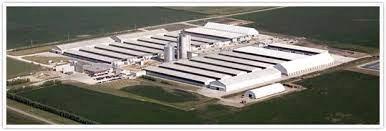
In addition to placing pressure on governmental agencies and buttressing the political influence of Green Parties in the E.U., there is considerable pressure on commercial entities in the food chain to promote plant-based diets. Sodexo a multinational is an especially compliant company, supplying universities, schools and institutions with catering services. Imposition of “meatless days” and manipulation of menus by the Company is advancing a vegan agenda in a susceptible market.
The egg industries in the U.S. and in the E.U. have experienced the pressures placed on the food retail and restaurant sectors of the U. S. food industry. Welfare groups have demanded commitments to transition to sourcing cage-free eggs by 2025. Although a number of companies using or marketing eggs have either reneged on their promise or extended the projected time for compliance, the collective effect of concerted pressure has moved the needle to 33 percent of U.S. hens as it will do with gestation crates for sows.
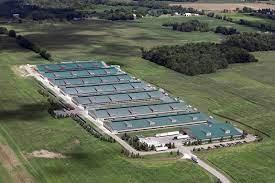
In order to counteract the pseudo-scientific environmental attacks on intensive livestock production, it will be necessary to marshal facts and statistics and establish reputable sources of information. This will be required to refute false claims and to convince consumers that they need not alter their diets by excluding meat products.

|
Influenza Expert Sounds Alarm over the Possibility of Zoonotic Avian Influenza
|
06/08/2023 |

Dr. Richard Webby |
Dr. Richard Webby, Head of the World Health Organization Collaborating Center on Influenza at St. Jude Childrens’ Research Hospital, has expressed concern over the prolonged 2021-2023 panornitic of H5N1 avian influenza that is affecting flocks and migratory birds over five continents. He recently published on the evolution of the virus with specific reference to the susceptibility of an extensive range of terrestrial and marine mammals.
Laboratory infection of ferrets confirmed susceptibility resulting in a high concentration of virus in the brain and nervous system. Outbreaks of avian influenza in mink and especially a 2023 case in Spain where intra-herd transmission was demonstrated, represents a risk to commercial livestock, wildlife species and humans. At the present time, the virus can be regarded as non- infectious to humans. This is based on the limited number of cases recorded among workers having close contact with flocks infected with H5N1 avian influenza during depopulation and disposal.
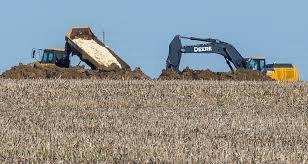 According to Dr. Webby “it would take two or three minor changes in one protein of the virus to become more adapted to humans”. Accordingly, reference laboratories worldwide are maintaining surveillance over avian and mammalian H5N1 isolates to detect possible point mutations applying whole genome sequencing. According to Dr. Webby “it would take two or three minor changes in one protein of the virus to become more adapted to humans”. Accordingly, reference laboratories worldwide are maintaining surveillance over avian and mammalian H5N1 isolates to detect possible point mutations applying whole genome sequencing.
The recognition that H5N1 avian influenza is now seasonally and regionally endemic in many nations and is maintained in free-living mammalian and avian populations questions traditional biosecurity procedures as a means of protecting flocks. This realization is prompting veterinary authorities to evaluate immunization as an adjunct to prevention and control. Dr. Webby is firmly in support of vaccination as practiced in China, Egypt, Viet Nam and Mexico. In coming months, France and Italy will commence vaccination of commercial waterfowl and turkeys, respectively. Dr. Christine Middlemiss, the Chief Veterinary Officer for the U. K., recognizes limitations on the effectiveness of traditional inactivated vaccines but suggests that immunization should be considered.
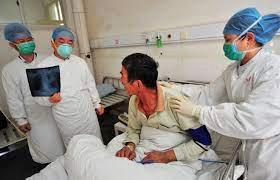 Vaccination of poultry flocks is supported by Dr. Monique Eliot, the Director General of the World Organization for Animal Health.(WOAH) Dr. Eliot stated, “Everyone now knows a pandemic is not just a fantasy-it could be a reality.” Accordingly, the World Health Organization and some nations are developing and stockpiling H5N1 vaccines suitable for humans. This involves propagation using SPF eggs but imposes delays before availability. Hopefully, by applying new vaccine technology, mRNA products will become available in the unfortunate event that a vaccine will be required to control a human pandemic. Fortunately, a portfolio of vaccines, including oil emulsion and HVT-vectored products are marketed commercially. Sufficient quantities will be required to commence immunization of breeding flocks and high-risk turkey and layer birds in areas where exposure is likely. Poultry health professionals are aware of risks associated with the presence of migratory waterfowl and the environmental conditions that predispose to infection despite appropriate biosecurity measures. Vaccination of poultry flocks is supported by Dr. Monique Eliot, the Director General of the World Organization for Animal Health.(WOAH) Dr. Eliot stated, “Everyone now knows a pandemic is not just a fantasy-it could be a reality.” Accordingly, the World Health Organization and some nations are developing and stockpiling H5N1 vaccines suitable for humans. This involves propagation using SPF eggs but imposes delays before availability. Hopefully, by applying new vaccine technology, mRNA products will become available in the unfortunate event that a vaccine will be required to control a human pandemic. Fortunately, a portfolio of vaccines, including oil emulsion and HVT-vectored products are marketed commercially. Sufficient quantities will be required to commence immunization of breeding flocks and high-risk turkey and layer birds in areas where exposure is likely. Poultry health professionals are aware of risks associated with the presence of migratory waterfowl and the environmental conditions that predispose to infection despite appropriate biosecurity measures.

|
A Federal Standard Proposed for Sow Housing. Echoes of the ‘Egg Bill’
|
05/31/2023 |
|
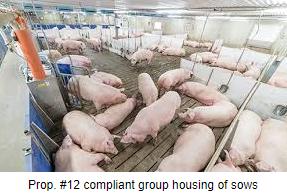 Representative Veronica Escobar (D-TX) has introduced H.R. 2939 the Pigs in Gestation Stalls (PIGS) Act of 2023. The objective would be to establish a Federal national standard for sow housing consistent with California Proposition #12 and Massachusetts Question 3. Following the SCOTUS ruling on the constitutionality of California Proposition #12, it would appear justifiable to consider a federal standard establishing a level playing field for the entire industry. Obviously, the PIGS Bill will be met with strong opposition from legislators representing hog-producing states. This ignores the reality that major packers and producers including Hormel, Smithfield Foods, Tyson Foods and Niman Ranch, the subsidiary of Perdue Foods have either committed to transition or have already complied with California Proposition #12. Although the SCOTUS decision upholding California and Massachusetts legislation enacted by ballot reflects a limited number of states, numerous customers represented by retail chains and restaurants have committed to sourcing pork compliant with Proposition #12. Representative Veronica Escobar (D-TX) has introduced H.R. 2939 the Pigs in Gestation Stalls (PIGS) Act of 2023. The objective would be to establish a Federal national standard for sow housing consistent with California Proposition #12 and Massachusetts Question 3. Following the SCOTUS ruling on the constitutionality of California Proposition #12, it would appear justifiable to consider a federal standard establishing a level playing field for the entire industry. Obviously, the PIGS Bill will be met with strong opposition from legislators representing hog-producing states. This ignores the reality that major packers and producers including Hormel, Smithfield Foods, Tyson Foods and Niman Ranch, the subsidiary of Perdue Foods have either committed to transition or have already complied with California Proposition #12. Although the SCOTUS decision upholding California and Massachusetts legislation enacted by ballot reflects a limited number of states, numerous customers represented by retail chains and restaurants have committed to sourcing pork compliant with Proposition #12.
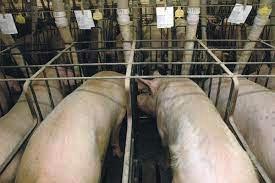 It is ironic that the pork industry is now facing the possibility of a national standard given their intense lobbying against the “Egg Bill”. This would have established a national standard for housing of laying hens using enriched colony modules as the preferred alternative to conventional cages. Due to opposition by pork producers the Egg Bill was not incorporated into the 2018 Farm Bill. Subsequently egg producers have invested close to $4 billion to convert one-third of total production to aviaries, barns and free-range systems as alternatives to conventional cages. A University of Minnesota study estimated the cost to convert gestation crates to group housing to between $2 billion to $3 billion. It is ironic that the pork industry is now facing the possibility of a national standard given their intense lobbying against the “Egg Bill”. This would have established a national standard for housing of laying hens using enriched colony modules as the preferred alternative to conventional cages. Due to opposition by pork producers the Egg Bill was not incorporated into the 2018 Farm Bill. Subsequently egg producers have invested close to $4 billion to convert one-third of total production to aviaries, barns and free-range systems as alternatives to conventional cages. A University of Minnesota study estimated the cost to convert gestation crates to group housing to between $2 billion to $3 billion.
It would appear that the pork industry has exhausted legal remedies and will be forced by law, customer demand and public sentiment to abandon gestation crates. Considerable expenditure on legal expenses, time and effort would have been saved had the pork industry recognized the writing on the wall and accepted the inevitability of change. They should have joined the egg sector in 2016 in crafting an acceptable national livestock housing standard.

|
American Egg Board Releases 2022 Financial Report
|
05/22/2023 |
|
 For Fiscal Year 2022, the American Egg Board posted revenue of $23.04 million of which 98.5 percent was derived from check-off assessments. Total program expenses exceeded income by $340,000 or 1.5 percent of program expenditure. The various programs, the names of which are ‘cutesified’, include:- For Fiscal Year 2022, the American Egg Board posted revenue of $23.04 million of which 98.5 percent was derived from check-off assessments. Total program expenses exceeded income by $340,000 or 1.5 percent of program expenditure. The various programs, the names of which are ‘cutesified’, include:-
- Egg’s Story represented 44.9 percent of expenditures
- Spark Innovation, 21.9 percent,
- Check-Off Awareness, 12.4 percent,
- Farmer’s Story, 11.1 percent,
- Consumer Insight, 7.8 percent
- Operational Excellence, 1.9 percent.
In future years, the American Egg Board should consider reverting to straightforward nomenclature identifying expenditures using conventional and familiar terms such as consumer promotion, industry outreach, research and development so that there is common understanding and the ability to compare with previous years.
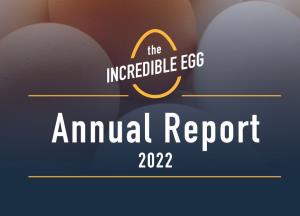
Total administrative expenses amounted to $421,206 or 1.8 percent of total revenue representing careful control of industry funds. This amount obviously does not include the quantum of salaries that should be a line item as in any non-profit. From recent press releases confirming appointments this expenditure category will be considerably higher in FY 2023
Previously the AEB presented data derived by a commissioned consultant demonstrating the benefit to cost ratio for promotional expenditures and other activities undertaken by the Board. The most reliable indicator of the value of activities is the domestic per capita increase in egg consumption that reflects consumer and industrial demand for shell eggs and egg products. Numbers of impressions and engagements, social media activities and data on public perceptions demonstrate that the expanding staff of the AEB is active on behalf of the industry. Over the intermediate term the actual increase in egg consumption as quantified by the USDA-ERS is the critical parameter representing value from the check-off program.

|
Egregious Exploitation of Children in QSRs
|
05/07/2023 |
|
 The editorial on May 5th described the ongoing and apparently widespread problem of exploitation of minors in agriculture and the food and restaurant industries. In a recent release by the U. S. Department of Labor, franchisees of the McDonald’s Corporation were fined $212,000 as a civil penalty for violation of child labor laws. The Bauer Food, Archways, Richwood and Bell Restaurant Group were substantial franchisees with more than 60 McDonald’s locations in four states. According to an investigation by the Department of Labor, 305 minors worked more than the legally permitted hours and performed tasks that are disallowed for young workers. In one case, two children aged 10 years were working at a Louisville, KY restaurant until 02H00. The editorial on May 5th described the ongoing and apparently widespread problem of exploitation of minors in agriculture and the food and restaurant industries. In a recent release by the U. S. Department of Labor, franchisees of the McDonald’s Corporation were fined $212,000 as a civil penalty for violation of child labor laws. The Bauer Food, Archways, Richwood and Bell Restaurant Group were substantial franchisees with more than 60 McDonald’s locations in four states. According to an investigation by the Department of Labor, 305 minors worked more than the legally permitted hours and performed tasks that are disallowed for young workers. In one case, two children aged 10 years were working at a Louisville, KY restaurant until 02H00.
Karen Garnett-Civils, Director of the Wage and Hour Division for the district, noted, “Too often employers fail to follow the child labor laws that protect young workers.” She added, “Under no circumstances should there ever be a 10-year-old child working in a fast-food kitchen around hot grills, ovens and deep fryers.”
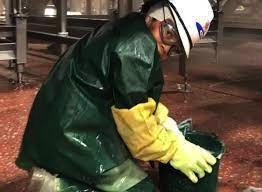 The question arises as to the complicity of McDonald’s Corporation. Obviously, they cannot deny responsibility for the actions of their franchisees. Since brand image is involved, management has an obligation to franchisees, workers and most importantly, shareholders to ensure that all operations are in compliance with federal, state and local laws and ordinances. The question arises as to the complicity of McDonald’s Corporation. Obviously, they cannot deny responsibility for the actions of their franchisees. Since brand image is involved, management has an obligation to franchisees, workers and most importantly, shareholders to ensure that all operations are in compliance with federal, state and local laws and ordinances.
The situation is analogous to the revelations arising from the Poultry Sanitation Services Inc. case that involved exploitation of minors. Packers including JBS and others simply abrogated responsibility by assigning cleaning operations to a contractor. They should have been responsible for monitoring that contractors complied with laws. In the event JBS cancelled contracts with PSSI and has established an in-house cleaning subsidiary to service poultry and meat plants in accordance with relevant laws governing labor rates, eligibility for employment and FSIS compliance.

|
Food Labeling Modernization Act of 2023 Will Elicit Opposition
|
05/04/2023 |
|
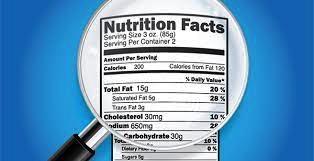 The Food Labeling Modernization Act of 2023 introduced by Representatives Frank Pallone (D-NJ) and Rosa DeLauro (D-CT) and Senators Richard Blumenthal (D-CT) and Cory Booker (D-NJ) is a reintroduction of a Bill considered in 2013. The Food Labeling Modernization Act of 2023 introduced by Representatives Frank Pallone (D-NJ) and Rosa DeLauro (D-CT) and Senators Richard Blumenthal (D-CT) and Cory Booker (D-NJ) is a reintroduction of a Bill considered in 2013.
The proposed Food Labeling Modernization Act will require front-of-package labeling specifying nutrients but also regulating visual imagery and text that could be regarded as deceptive. Nutritional, ingredient and allergen information will be mandatory for the benefit of consumers.
Predictably the legislation is supported by the Center for Science in the Public Interest with the president of the activist group Dr. Peter G. Lurie stating, “Tackling our nations enormous burden of diet-related disease will require a whole-of-government approach. With the Food Labeling Modernization Act of 2023 Congress joins the White House and Federal agencies in taking steps to improve the health of our nation’s food supply and in turn promote the health of our population.”

While detractors may point to a “nanny-state” approach to this legislation, there could in theory be benefits from enhanced nutritional labeling. The problem is that those who are most at risk for obesity and metabolic disease neither read labels nor understand the significance of specific values. At the end of the day this demographic rejects the need for dietary understanding and moderation in favor of gratification. Unfortunately well-meaning legislators believe that human needs and behaviors can be altered by enacting laws and regulations. The changes contemplated will only be of value following extensive education of the target population over an extended period with multigenerational acceptance. As framed the Food Labeling Modernization Act will not have any beneficial effect and will cost manufacturers more than at present and will ultimately be passed on to all consumers.
There is no evidence that either statutory or voluntary disclosure of caloric and other nutrient content of foods either on packaged labels or menu boards has any effect on obesity.

|
Consumer Freedom Highlights Radicalization of ASPCA
|
05/02/2023 |
|
Washin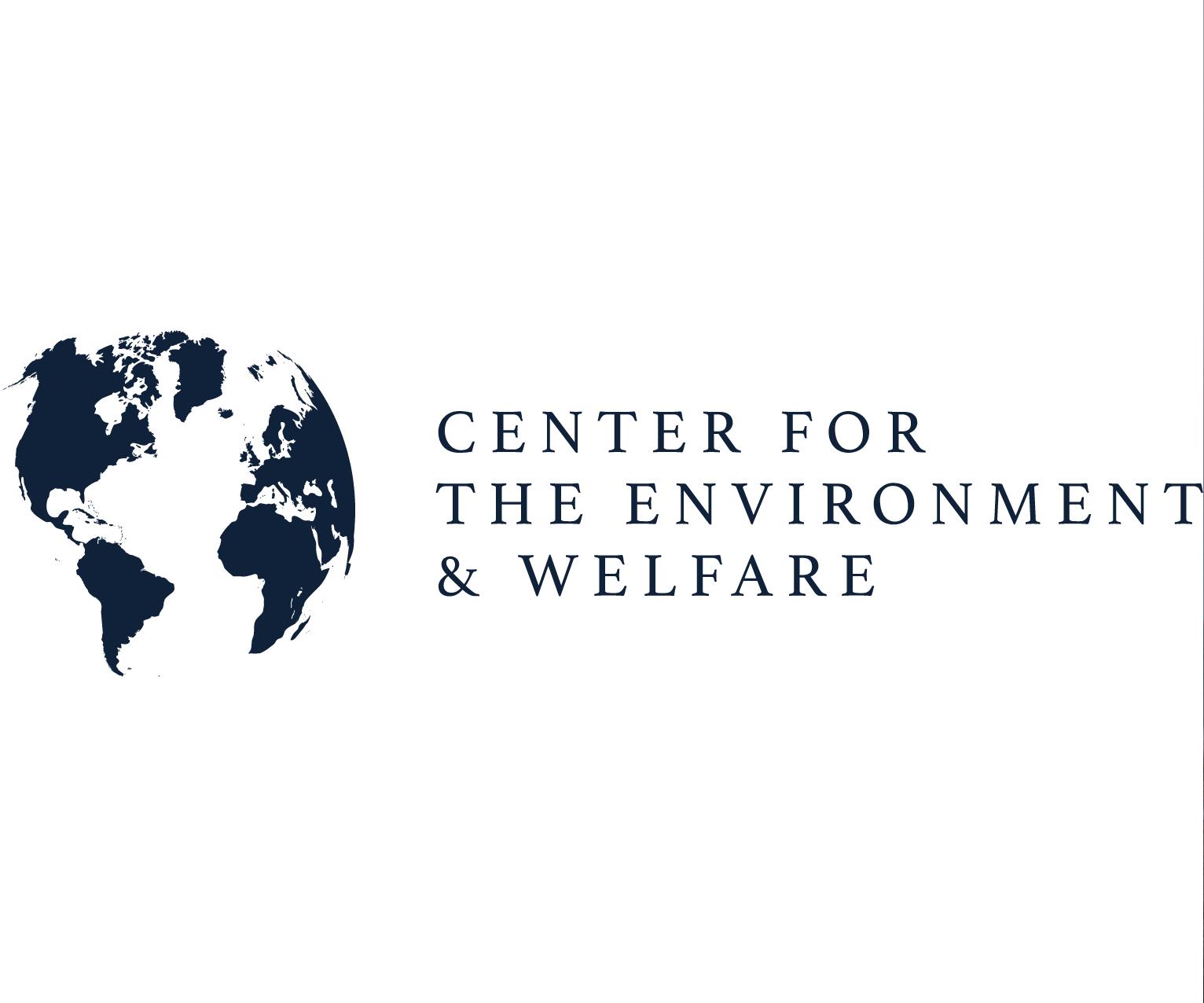 gton, D.C.-based public relations group, the Center for Consumer Freedom, is focusing on the activities of ASPCA with respect to the upcoming Farm Bill and increasing radicalization through recent appointments. The ASPCA has recently embraced extreme activists within the organization that have a decidedly pro-vegan orientation. These include a legislative aid to Senator Cory Booker (D-NJ). There also appears to be closer cooperation between the ASPCA and the HSUS. gton, D.C.-based public relations group, the Center for Consumer Freedom, is focusing on the activities of ASPCA with respect to the upcoming Farm Bill and increasing radicalization through recent appointments. The ASPCA has recently embraced extreme activists within the organization that have a decidedly pro-vegan orientation. These include a legislative aid to Senator Cory Booker (D-NJ). There also appears to be closer cooperation between the ASPCA and the HSUS.
The ASPCA Farm Bill platform includes a moratorium on CAFOs with eventual closure and eliminating or reducing the impact of check-off programs to promote livestock commodities. Eventually, ASPCA contemplates a complete phase-out of intensive livestock production, although the Association does not indicate how they intend to replace the food currently derived from current efficient farms and plants. The poultry industry including eggs, broilers and turkeys will come under increasing opposition and proposed restrictions purported to be based on considerations of either “welfare” or “sustainability”.
 The ASPCA is regarded as a formidable opponent with 75 percent of the public unjustifiably holding a positive image of the Association. Consumer Freedom and the Center for the Environment and Welfare, a newly established think tank has mounted an aggressive campaign to discredit the ASPCA. This organization does little for domestic animals and spends a disproportionate amount of donations received on fundraising, salaries and benefits for executives and management. The ASPCA is regarded as a formidable opponent with 75 percent of the public unjustifiably holding a positive image of the Association. Consumer Freedom and the Center for the Environment and Welfare, a newly established think tank has mounted an aggressive campaign to discredit the ASPCA. This organization does little for domestic animals and spends a disproportionate amount of donations received on fundraising, salaries and benefits for executives and management.

|
The Economist “Banana Index” to Compare ‘Sustainability’ of Foods
|
04/24/2023 |
|
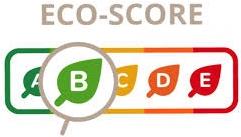 Both governments and activist organizations are attempting to classify foods according to their relative environmental impact from emission of carbon dioxide. The Economist has created a comparison among foods to relate the relative potential climatic impact based on the weight, caloric content and protein content. To facilitate comparisons, The Economist selected the banana as the benchmark based on known nutritional value, widespread cultivation and generally accepted as being moderate in climatic impact. Both governments and activist organizations are attempting to classify foods according to their relative environmental impact from emission of carbon dioxide. The Economist has created a comparison among foods to relate the relative potential climatic impact based on the weight, caloric content and protein content. To facilitate comparisons, The Economist selected the banana as the benchmark based on known nutritional value, widespread cultivation and generally accepted as being moderate in climatic impact.
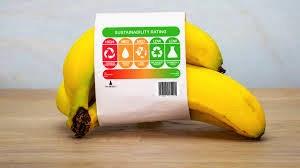 Based simply on greenhouse gas emission expressed as the quantum of carbon dioxide released per unit weight of a food, it was determined that ground beef produces 109 times the amount of carbon dioxide as an equivalent weight of bananas. By comparison, chicken meat scores 11 in comparison to bananas on the basis of weight. Based simply on greenhouse gas emission expressed as the quantum of carbon dioxide released per unit weight of a food, it was determined that ground beef produces 109 times the amount of carbon dioxide as an equivalent weight of bananas. By comparison, chicken meat scores 11 in comparison to bananas on the basis of weight.
When caloric content is compared, ground beef falls to a score of 54 from 109 that was calculated on the basis of weight alone. Chicken meat drops from 11 to a score of 4, emphasizing that nutritional content is a more realistic criterion by which to evaluate food sources. When the protein content of foods is compared to bananas, chicken and eggs score higher with 40 percent less emissions than from bananas.
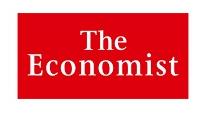 Applying the “banana index”, the common assumption that locally-produced foods are more sustainable cannot be supported. Evaluation on the basis of energy or protein content shows that transport contributes less than ten percent of the carbon dioxide emission associated with a range of foods. The Economist noted that for beef, transport is only one percent of the emissions associated with this product. Applying the “banana index”, the common assumption that locally-produced foods are more sustainable cannot be supported. Evaluation on the basis of energy or protein content shows that transport contributes less than ten percent of the carbon dioxide emission associated with a range of foods. The Economist noted that for beef, transport is only one percent of the emissions associated with this product.
The ”banana index” created by The Economist is an attempt to place the sustainability characteristics associated with specific foods in perspective. Unfortunately a third of respondents to a recent U.K. survey could not make logical decisions regarding the sustainability of alternate foods. This raises the question of sustainability indexes on labels. Basing a scale on carbon dioxide emissions per unit of weight will disfavor meat and poultry and provides a distorted indication of environmental “friendliness” in relation to nutritional content.
The food and livestock industries should oppose simple but inappropriate ‘sustainability guides’ proposed by various governments and some food chains. These will mislead consumers as to the environmental impact to the detriment of high protein foods.

|
China Ambivalence Over Wild Animal Trade a Danger to the World
|
04/02/2023 |
|
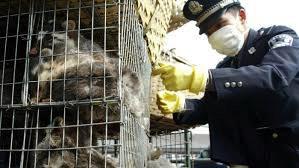 During February 2020, after the emergence of COVID in Wuhan, with a possible link to the Huanan Seafood Wholesale Market, the Government of China permanently banned consumption of meat from wild species. In May 2020, the Ministry of Agriculture and Rural Affairs allowed 16 animal species that could be ‘farmed’ to be eligible for consumption, including native deer, ostrich and emu. In December 2022, the Government amended the law that prohibits consumption, hunting, trade and transport of mammals that grow and breed naturally in the wild. During February 2020, after the emergence of COVID in Wuhan, with a possible link to the Huanan Seafood Wholesale Market, the Government of China permanently banned consumption of meat from wild species. In May 2020, the Ministry of Agriculture and Rural Affairs allowed 16 animal species that could be ‘farmed’ to be eligible for consumption, including native deer, ostrich and emu. In December 2022, the Government amended the law that prohibits consumption, hunting, trade and transport of mammals that grow and breed naturally in the wild.
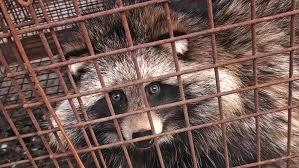 With the recognition that wild animals sold in public wet markets in 2020 were a source of SARS, the Government temporarily banned the sale of exotic species over a decade ago. Following the disappearance of this infection among the population of China and the world, this regulation was ignored, and markets were once again stocked with exotic species, including palm civets, raccoon-dogs and pangolins. With the recognition that wild animals sold in public wet markets in 2020 were a source of SARS, the Government temporarily banned the sale of exotic species over a decade ago. Following the disappearance of this infection among the population of China and the world, this regulation was ignored, and markets were once again stocked with exotic species, including palm civets, raccoon-dogs and pangolins.
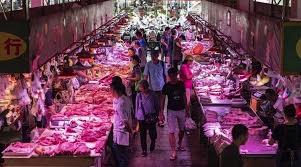
The deficiency in the current law is that farmers may propagate mink, foxes and raccoon-dogs for fur but not for meat. This relaxation is intended to support the growing pelt industry that produces in excess of 30 million hides, annually. It is however self-evident that meat from these animals will continue to be consumed. The reality that COVID and more recently, H5N1 avian influenza, can infect mink represents a danger. The exclusion extended to ‘farming’ perpetuates the risk of mutation with the emergence of zoonotic pathogens. 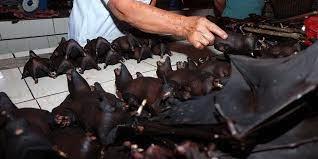 Exemptions are also allowed for propagation of endangered species raised for traditional Chinese medicine. It is evident that wild caught animals and reptiles will attain clandestine legal status through introduction into farming operations. Exemptions are also allowed for propagation of endangered species raised for traditional Chinese medicine. It is evident that wild caught animals and reptiles will attain clandestine legal status through introduction into farming operations.
The failure of China to meaningfully address the problems of emerging viral diseases and the continued tolerance and support of consuming non-conventional domestic species and wild animals, represents a danger not only to the nation but to the world.

|
U. K. Farm of the Future Features Sustainability-Implications for U.S. Producers
|
03/27/2023 |
|
 The Moy Park Subsidiary of Pilgrim’s Pride, Inc. has unveiled a prototype farm with resource-saving innovations. Located in Lincolnshire, the Beech farm is designed to reduce greenhouse gas emissions and to operate “off grid”. Innovations include ground-source heat pumps, heat exchangers, and solar installations capable of generating 1Mw with lithium-battery storage. The Moy Park Subsidiary of Pilgrim’s Pride, Inc. has unveiled a prototype farm with resource-saving innovations. Located in Lincolnshire, the Beech farm is designed to reduce greenhouse gas emissions and to operate “off grid”. Innovations include ground-source heat pumps, heat exchangers, and solar installations capable of generating 1Mw with lithium-battery storage.

A spokesperson for the company stated, “Beech farm is a first for the poultry sector through well thought-out innovations we have created, an incredible 100 percent reduction in energy-related greenhouse gas emissions representing a saving of 900 tons of CO2, annually.”
The Company press release did not indicate the cost of innovative technology neither did it provide details as to how contract growers could recoup their potential investments. It is presumed that U.K. government incentives were offered to the developer of Beech Farm that may not be available for additional new farms or for conversion of existing units.
If chicken or eggs produced in accordance with higher standards of sustainability has a higher shelf price, the question arises as to the size of the market willing to pay for the attribute of sustainability. Given the intermediate fiscal problems facing the U.K. government and the declining standard of living, consumers will be more inclined to consider price as the primary determinant in the purchase consideration.
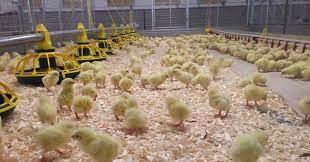 Given the high level of publicity afforded global warming, retail chains will continue to impose progressively more stringent limits on greenhouse gas emissions and to demand ever increasing intensity of sustainability. Will retailers expect producers to burnish the environmental image of their chains without compensation to provide a fair return on “green investment”? Increased levels of sustainability that may benefit the environment are supported but only if the burden is born equitably by producers, retailers and consumers. Given the high level of publicity afforded global warming, retail chains will continue to impose progressively more stringent limits on greenhouse gas emissions and to demand ever increasing intensity of sustainability. Will retailers expect producers to burnish the environmental image of their chains without compensation to provide a fair return on “green investment”? Increased levels of sustainability that may benefit the environment are supported but only if the burden is born equitably by producers, retailers and consumers.

|
FDA Commissioner Defends Food-Related Activities of the Agency
|
03/20/2023 |
|
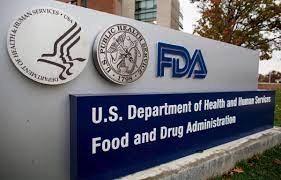 Using social media, Dr. Robert Califf is responding to criticism of the FDA with respect to food- related issues that occurring before and now during his tenure. In a recent post he stated, “There should be no question in anyone’s mind that the FDA is a top priority for me. We have accomplished a tremendous amount in the last ten years to make the American food supply safe as it has ever been and improve the nutritional quality of foods.” Using social media, Dr. Robert Califf is responding to criticism of the FDA with respect to food- related issues that occurring before and now during his tenure. In a recent post he stated, “There should be no question in anyone’s mind that the FDA is a top priority for me. We have accomplished a tremendous amount in the last ten years to make the American food supply safe as it has ever been and improve the nutritional quality of foods.”
These self-adulatory statements are at variance with facts that indicate a lack of concern over regulation of food. These include:-
- Past outbreaks of salmonellosis and colibacillosis associated with leafy greens grown in California and Arizona. It is obvious that irrigation water is contaminated with ruminant feces and that there is no positive kill step required to prevent infection of consumers. Resolution through prevention is not being directly addressed by the FDA.
- Revelations that fruit juices contain violative levels of heavy metals.
- Failure to conduct field inspections of food plants during the 20-month COVID period
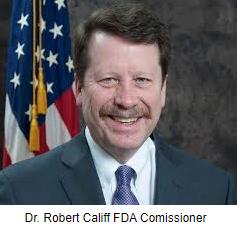
- Neglecting oversight of the few large plants producing a high proportion of the Nation’s infant formula. The FDA delayed responding to a whistleblower’s document alleging concealment of contamination and falsification of records.
- The FDA has been passive in promoting healthy food options including restrictions on levels of salt and fat in processed foods.
- The Regan Udall Review demonstrated serious deficiencies in the organizational structure of the food-related missions within the FDA. Despite recommendations to centralize responsibility and authority, Dr. Califf has proposed an organization structure that is inappropriate to the challenges facing the Agency. Irrespective of his social media posts, widespread criticism of his management is mounting and his requests for additional funds will generate resistance from both sides of the aisle in Congress.
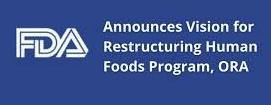
EGG-NEWS joins many commentators including Attorney William Marler in calling for a separate food safety agency that should combine the currently split functions of the FDA and FSIS.

|
Attorney Bill Marler Campaigning for Food Related Activities to be Split from the FDA
|
03/17/2023 |
|
 An experienced food safety attorney and recently a critic of the FDA, Bill Marler is openly calling for food related activities to be split from the Food and Drug Administration. His campaign has adopted the theme, Get the F Out of the FDA. An experienced food safety attorney and recently a critic of the FDA, Bill Marler is openly calling for food related activities to be split from the Food and Drug Administration. His campaign has adopted the theme, Get the F Out of the FDA.
Marler recently stated, “Each year, millions of Americans are sickened and thousands die from foodborne illness.” He added, “The leadership of the FDA continues to be preoccupied with drug oversight and to give short shrift to food safety.” Along with associations concerned with public health, Marler criticizes the proposal to restructure food aspects of FDA function ignoring the advice of previous administrators and the Reagan-Udall panel. All advocate for a unified structure under a competent administrator. Marler stated, “The changes the Commissioner has proposed, stand no chance of fixing the systemic problems within the Agency. It simply exposes the flaw of having drug experts oversee the Nation’s food supply”.
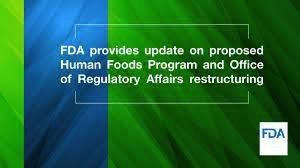 In a recent statement, Marler averred “My goal in launching this campaign is to say let’s make this happen now. I don’t want the failures of the FDA to create new victims I will need to represent. Create a new Food Agency and put me out of business, please!” In a recent statement, Marler averred “My goal in launching this campaign is to say let’s make this happen now. I don’t want the failures of the FDA to create new victims I will need to represent. Create a new Food Agency and put me out of business, please!”
Establishing a new food safety agency will only be half the solution. To be effective, it will be necessary to merge the Food Safety and Inspection Service of the USDA with the new proposed food safety entity to create a seamless entity responsible for all aspects of food, both imported and domestic, whether animal or vegetable in origin.

|
Mandatory Hepatitis A Vaccination for Food Service Workers
|
03/12/2023 |
|
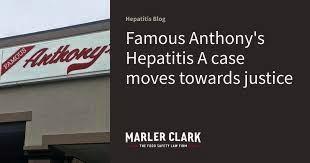 In a letter to the Advisory Committee on Immunization Practices, functioning under the umbrella of the Centers for Disease Control and Prevention, Attorney William Marler is advocating for mandatory vaccination of all food service workers against Hepatitis A. It is noted that a significant proportion of Hepatitis A outbreaks are linked to infected food handlers. This source of infection could be sharply reduced by vaccination. It is a clinical reality that a quarter of Hepatitis A cases are asymptomatic meaning that a food-handler shedding the virus can unknowingly transmit the infection to patrons of restaurants. In a letter to the Advisory Committee on Immunization Practices, functioning under the umbrella of the Centers for Disease Control and Prevention, Attorney William Marler is advocating for mandatory vaccination of all food service workers against Hepatitis A. It is noted that a significant proportion of Hepatitis A outbreaks are linked to infected food handlers. This source of infection could be sharply reduced by vaccination. It is a clinical reality that a quarter of Hepatitis A cases are asymptomatic meaning that a food-handler shedding the virus can unknowingly transmit the infection to patrons of restaurants.
In his letter, Mahler noted, “Over the past several years there has been an ongoing outbreak of Hepatitis A in the United States. As of February 2nd 2023 there have been a total of 44,779 cases with a 61 percent hospitalization and a death toll of 421. Since the currently outbreak commenced in 2016, 37 states have reported cases to the CDC.
Clark County Nevada implemented mandatory vaccination program for food service workers in 2000, resulting in a significant decline in infection rates with historic lows in 2010. Subsequent to removal of the mandatory vaccination rule, outbreaks have increased in this entertainment center with many U.S. cases now traced back to Las Vegas.
 Attorney Marler point to the Famous Anthony’s cluster in and around Roanoke, VA. This outbreak involved 49 primary cases with 31 hospitalizations and four fatalities attributed to a single infected cook who circulated among four company restaurants during late August through October 2021. Attorney Marler point to the Famous Anthony’s cluster in and around Roanoke, VA. This outbreak involved 49 primary cases with 31 hospitalizations and four fatalities attributed to a single infected cook who circulated among four company restaurants during late August through October 2021.
In many nations, workers in the food industry are obliged to undergo regular sampling for Salmonella and other foodborne infections. Where tuberculosis is prevalent, regular screening of food workers is required.
The benefits of mandatory vaccination against Hepatitis A are self-evident and the request for either CDC to advise or mandate vaccination is strongly supported. William Marler deals constantly with the suffering and losses associated with severe foodborne infections. His approach to the prevention of Hepatitis A and protection of patrons of restaurants and institutions is sincerely in the public interest despite the fact that it may ultimately deprive him of clients.

|
Commentary on the March 2023 APHIS Report on HPAI
|
03/07/2023 |
|
EGG-NEWS
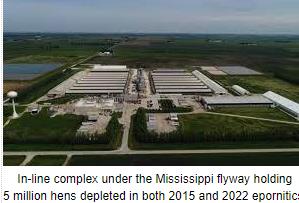 This special edition of EGG-NEWS is circulated following the belated release by APHIS of an epidemiologic report on the 2022 HPAI epornitic. The Report is both unsatisfying in scientific content and devoid of practical recommendations to prevent infection of commercial poultry farms and complexes. Failure of APHIS to adopt a proactive approach to HPAI since the U.S. 2015 epornitic and the progress of the H5N1 strain in Europe, Asia and Africa since 2021 is evident in the Report. The Commentary below evaluates the backdated report and identifies deficiencies in conceptual planning and abrogation of responsibility by administrators of the USDA-APHIS This special edition of EGG-NEWS is circulated following the belated release by APHIS of an epidemiologic report on the 2022 HPAI epornitic. The Report is both unsatisfying in scientific content and devoid of practical recommendations to prevent infection of commercial poultry farms and complexes. Failure of APHIS to adopt a proactive approach to HPAI since the U.S. 2015 epornitic and the progress of the H5N1 strain in Europe, Asia and Africa since 2021 is evident in the Report. The Commentary below evaluates the backdated report and identifies deficiencies in conceptual planning and abrogation of responsibility by administrators of the USDA-APHIS
For many months, EGG-WEEK has urged the USDA-APHIS to release an evaluation of epidemiologic questionnaires prepared following outbreaks of HPAI that commenced in February 2022. During the first week of March 2023, the USDA released a backdated report entitled, Epidemiologic and Other Analyses of HPAI Affected Poultry Flocks, July 2022, Interim Report.
At the outset USDA-APHIS Administrators should explain why an obviously incomplete, uncoordinated and fragmented report dealing with the data collected through May 2022 and involving various related epidemiologic studies, was released only at the beginning of March 2023.
EGG-NEWS and industry associations have urged USDA-APHIS to release preliminary guidance on preventive measures based on an analysis of the epidemiologic investigations they conducted. The industry required recommendations based on completion of phylogenetic analysis and field studies including case-control comparisons. These were necessary to establish relative risk factors relating to infection among the initial twelve large egg-production complexes that were infected. These farms required depopulation of 24.8 million hens with diagnoses extending from February 22nd through April 25th and spread over seven states incorporating the Atlantic (DE, MD, PA); Mississippi, (IA, WI, NE) and Central, (UT), Flyways. A report by mid-2022 was not an unrealistic request. An initial interim report by July 2022 would have been more valuable than the anticipated comprehensive document scheduled for mid-2023 or later.
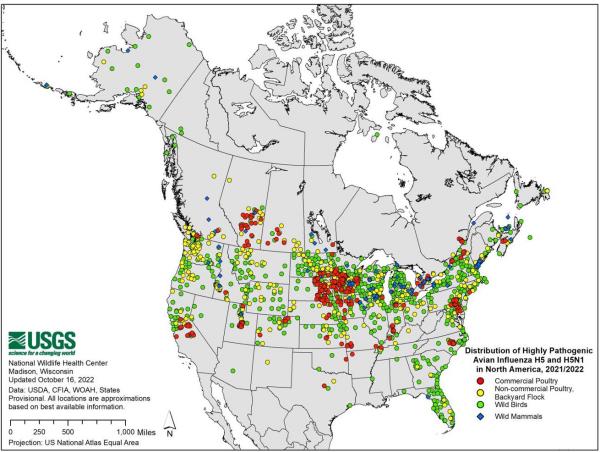 |
The most recent APHIS Report deals with the Spring wave of infection extending through May 31st. Information relating to the modes of transmission of HPAI and possible deficiencies in biosecurity would have been valuable in potentially preventing subsequent cases. Large egg complexes in Nebraska and Colorado involving 5.0 million hens were infected through mid-2022. The Fall wave involved depopulation of an additional 14.2 million hens in ten large complexes in six states extending from September through December 2022
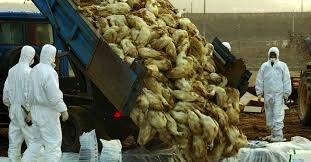 In the event, the belated USDA-APHIS Report simply catalogued the epornitic involving cases in 35 states affecting 130 turkey farms, 55 chicken complexes, 11 duck production units and 137 backyard flocks through the end of May 2022. Total losses to date amount to approximately 44 million egg production hens, of which 95 percent were affected on 22 large complexes each holding from 0.5 million to 5.0 million hens; 9.8 million turkeys on 229 farms in seven states and 3.2 million broilers on 18 farms in seven states with 0.3 million broiler parents on 11 farms in six states. The simple listing of cases by species failed to differentiate among “chicken” cases involving a range of diverse production types and systems. In the event, the belated USDA-APHIS Report simply catalogued the epornitic involving cases in 35 states affecting 130 turkey farms, 55 chicken complexes, 11 duck production units and 137 backyard flocks through the end of May 2022. Total losses to date amount to approximately 44 million egg production hens, of which 95 percent were affected on 22 large complexes each holding from 0.5 million to 5.0 million hens; 9.8 million turkeys on 229 farms in seven states and 3.2 million broilers on 18 farms in seven states with 0.3 million broiler parents on 11 farms in six states. The simple listing of cases by species failed to differentiate among “chicken” cases involving a range of diverse production types and systems.
In reviewing the report, including the “Initial Contact EPI Report Form”, there is not a single fact that is not generally known by poultry health professionals. There are no constructive recommendations that can be applied by a table egg producer to reduce the probability of introducing HPAI onto a complex.
The take-away messages from the report include:-
- Highly Pathogenic Avian Influenza virus strain H5N1 clade 2.3.4.4b, expressing Eurasian genes was introduced to the U.S. as a single major introduction via the trans-Atlantic route. It is presumed but not stated in the report that diverse migratory bird species transported the virus by inter- and intra-species contact successively westward from northern Europe through Iceland, Greenland and then to Labrador with subsequent transit of the Atlantic flyway southward to Florida.
- The virus responsible for the 2022 cases and the ongoing epornitic differed from the 2015 H5N1 strain characterized as clade 2.3.4.4c.
- Of individual outbreaks investigated, 84 percent were associated with wild bird introductions based on phylogenetic analysis, an original and valuable component of the Report. This finding indicates the possibility that obvious deficiencies in biosecurity as disclosed in the 2015 U.S. epornitic were not primarily responsible for introduction of HPAI onto large in-line complexes in 2022. This presumption is based on the intensive application of structural and operational biosecurity since 2015. Required case control studies on selected in-line egg production complexes were not performed in 2022 depriving producers of counsel concerning risk factors. The Initial Contact EPI Report forms were reproductions of those used for turkey farms during the 2015 epornitic. This one-size-fits-all approach failed to consider specific routes of infection relevant to high capacity complexes essential to have identified pertinent risk factors. The questionnaires excluded metrological data preceding outbreaks that may have indicated aerogenous transmission.
- In contrast to the 2015 epornitic, more backyard farms were infected in 2022 suggesting widespread dissemination of virus by migratory birds and possible infection of domestic bird species and small mammals.
- Backyard flocks that were infected, effectively served as sentinels and were not associated with lateral transmission of HPAI to commercial farms.
- Incubation periods extending from introduction of infection to confirmation of a diagnosis were quantified denoting differences among species. This was not of direct benefit to preventing infection but could be valuable information for additional epidemiologic investigations.
 It is evident that field sampling of free-living birds concentrated on migratory anseriforms. Sampling of relatively low number of birds other than waterfowl was based on the availability of clinically affected and dead free-living birds submitted to diagnostic laboratories. Raptors were in all probability infected by predation or consumption of dead anseriforms. Structured field survey of passeriformes and other families that may have been involved in dissemination of H5N1 virus were apparently not conducted since there is little mention of this aspect in the report. Although the APHIS document makes mention of infection in mammalian species, this aspect of the epidemiology of HPAI was not subjected to any structured evaluation. It is evident that field sampling of free-living birds concentrated on migratory anseriforms. Sampling of relatively low number of birds other than waterfowl was based on the availability of clinically affected and dead free-living birds submitted to diagnostic laboratories. Raptors were in all probability infected by predation or consumption of dead anseriforms. Structured field survey of passeriformes and other families that may have been involved in dissemination of H5N1 virus were apparently not conducted since there is little mention of this aspect in the report. Although the APHIS document makes mention of infection in mammalian species, this aspect of the epidemiology of HPAI was not subjected to any structured evaluation.
The section on risk factors merely listed a series of events prior to the recognition of outbreaks. There was no attempt to determine the relative risk associated with specific activities for the large egg-production complexes that represented the bulk of losses and expediture. The Report is abysmally deficient in its failure to differentiate among commercial operations that were affected. It is obvious that risk factors relating to contract turkey-growing farms in the Dakotas are vastly different to the structural and operational factors that may predispose to infection in-line egg production complexes with over a million hens in Iowa or Colorado. For example, 53 of the 88 responses noted feed delivery within 21-days prior to detection. Why did 35 farms apparently not receive feed for 21 days? Large complexes are essentially self-sufficient with respect to feed with on-site mills. Did these units represent the non-recipients of delivered feed? Combining available data into a table that listed 46 activities was effectively a meaningless exercise. How possibly could a list of proportions be of any value in assessing risk for widely different poultry enterprises and specifically address the need to develop appropriate preventive measures?
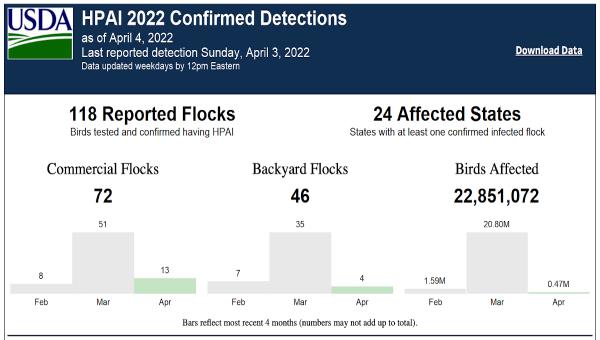 |
Concentration on the first twelve large egg production complexes and the first twelve turkey growing farms, applying a case-control approach would have been productive. This would have required more specific and relevant Initial Contact EPI Report forms allowing the collection of data to be subjected to subsequent statistical analysis. A one-size-fits-all EPI Report questionnaire represents an oversimplification and denotes a lack of familiarity with the operations under investigation. An approach that neglects differentiation of types of poultry operation predicates failure to identify applicable risk factors.
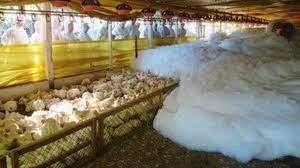
Poultry health professionals are aware of outbreaks in farms with superlative structural and operational biosecurity. There is a gathering presumption based on informed anecdotal reports and observations that HPAI may have been introduced into large egg production complexes by the aerogenous route. This especially the case in Weld County, CO. and Buena Vista County IA. Newcastle disease most certainly can be transmitted over at least a mile as demonstrated in the Essex 1972 outbreaks in the U.K. Accepting that the infection can be acquired from the local environment including introduction on dust and soil entrained by high winds appears to be beyond the current perception of APHIS and contrary to their playbook. From the onset of the initial outbreaks, APHIS should have investigated the probability of aerogenous transmission.
The report does not address the possibility of infection of passeriform birds and their potential role in disseminating virus. The possible involvement of both domestic birds and aerogenous infection were raised during the 2015 epornitic and APHIS should have been prepared to evaluate these routes of infection from March 2022 onwards.
The modeling of avian influenza transmission and the analysis of eBird and BirdCast migration data are interesting but heuristically academic. There are neither conclusions nor recommendations advanced in the report arising from these studies that could be applied to reduce the probability of infecting commercial flocks. It is self-evident that the risk of infection in commercial and backyard farms relates to the quantum of migratory waterfowl that are shedding virus. What is required is an indication of the mechanisms by which virus passes from wild birds to farms in order to implement preventive action.
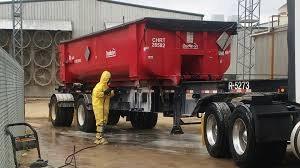
As a practicing poultry health professional, this commentator is deeply disappointed in the inability of APHIS to plan and execute a series of relevant epidemiologic studies of an infection attaining catastrophic proportions. The 2022 epornitic has cost the public and private sectors in excess of $2 billion to date without achieving control and with eradication an unattainable aspiration. Based on the consumption of 288 eggs per capita and a price differential due to HPAI of $2 per dozen, the incremental cost to consumers for table eggs and liquids was close to $15 billion during 2022. The magnitude of losses associated with HPAI should be reflected in a commensurate effort to understand the epidemiology of the infection and develop appropriate, preventive measures. Little appears to have been achieved in this respect since 2015.
What is not included in the backdated report is the reality that HPAI is now seasonally and regionally endemic in the U.S. Recognition that the infection may be transmitted by the aerogenous route negates a great deal of the accepted structural and operational biosecurity procedures promoted by APHIS and exercised by most segments of the poultry industry with varying efficiency. The 2022 epornitic highlights the vulnerability relating to conceptual biosecurity. Large egg-production complexes with two to six million hens are concentrated in areas along flyways that attract migratory waterfowl. The heightened risk has now become evident as migratory birds are disseminating a novel strain of avian influenza virus of extreme pathogenicity and wide species infectivity. Given these realities limited application of effective vaccines should be considered and evaluated for long-lived breeding and egg-production flocks at risk by virtue of location or probability of infection.
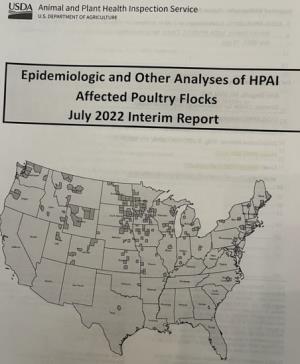
The APHIS Report confirms an obvious lack of involvement and deficiencies in conceptual planning and imagination by APHIS administrators. It is evident that they have concentrated on reacting to HPAI requiring rapid diagnosis followed by depopulation and disposal, both essential activities. Reading into the report suggests failures in proactive activities including motivation of USDA scientists, providing funding for molecular and field epidemiologic studies and cooperation with academia and industry. Basically APHIS has failed the U.S. poultry industry by neglecting to address the critical questions of what risk factors are contributing to infection of diverse commercial operations and what practical cost-effective and appropriate measures can be applied to reduce the probability of exposure of flocks.
The virus has changed, the epidemiology has changed but APHIS has not adapted to realities. The Agency is slavishly following a pre-1984 approach that would probably have been effective in stamping out an exotic infection in a limited area introduced by a single illegal importation of a contaminated product. Circumstances change but administrative mindsets are refractory to realities that are discordant with their established doctrine.
The backdated July 2022 Interim Report apparently rapidly assembled in response to industry pressure reflects an inability by APHIS to appreciate the magnitude of the 2022 (and ongoing) HPAI epornitic and its impact on the poultry industry and consumers. It is questioned as to what planning and forward thinking emerged from the 2015 epornitic? Obviously APHIS is just better at diagnosing outbreaks due to advances in PCR technology and more efficient in depopulating farms and disposing of dead birds. As an industry we deserve better!
As with all editorials USDA-APHIS Administrators, poultry health colleagues and producers are welcome to respond. Constructive responses and suggestions will be posted for the benefit of subscribers.

|
Vertical Farming Fails to Deliver a Return on Investment
|
03/02/2023 |
|
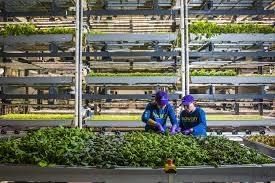 Heralded as a disrupter of conventional field cultivation of lettuce and other leafy vegetables, vertical farming has absorbed vast amounts of venture capital without any prospect of generating a return on investment. Heralded as a disrupter of conventional field cultivation of lettuce and other leafy vegetables, vertical farming has absorbed vast amounts of venture capital without any prospect of generating a return on investment.
Advantages claimed for the vertical intensive system over conventional field cultivation include a reduced labor, freedom from pesticide and pathogen contamination, more efficient use of water and proximity to markets. These benefits come with high fixed costs including depreciation, interest, expensive management and fixed maintenance. Utility costs are extremely high, given the need to provide light for growing plants in addition to chemical additives for the substrate and high maintenance.
When I visited my first vertical farm in an industrial area near the metro area of a Southern city the installations and technology including racks, lighting and plumbing appeared impressive. A few questions relating to capital cost, utilities, yield, labor, unit revenue and volume of sales demonstrated non-viability. It appeared that the producer was operating on the old Henry Ford dictum of “losing money on every Model-T but making it up on the volume” My purpose in visiting the operation was to determine whether vertical farming could be applied to obsolete high-rise layer houses. The complexity of systems required confirmed that this would be infeasible. The question now is what use can be made of buildings designed and equipped for vertical farming. Unfortunately not for pullet or layer housing.
A study in 2020 by agronomists and agricultural economists at Cornell University projected that cultivating lettuce in an urban vertical farm generated a cost twice that of produce grown in Arizona and shipped to East coast metro areas. Informed observers consider that at present vertical farming companies are unprofitable and are surviving on injections of venture capital.
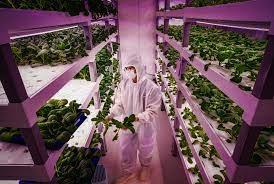 During recent weeks, Fifth Season in Pennsylvania has ceased operation and has cancelled plans for a facility near Columbus, OH. App Harvest is in danger of collapse and Aero Farms has withdrawn from a listing based on losses that attained $39 million last year with only $5 million in revenue. In France, Agricool filed for bankruptcy protection and In Farm in Germany has reduced operations and furloughed personnel. It is becoming apparent that an estimated $2 billion invested to date in U.S. vertical farming may have been based on unrealistic projections of revenue and cost. Ultimately the market serves as the determinant of viability of a concept or innovation. During recent weeks, Fifth Season in Pennsylvania has ceased operation and has cancelled plans for a facility near Columbus, OH. App Harvest is in danger of collapse and Aero Farms has withdrawn from a listing based on losses that attained $39 million last year with only $5 million in revenue. In France, Agricool filed for bankruptcy protection and In Farm in Germany has reduced operations and furloughed personnel. It is becoming apparent that an estimated $2 billion invested to date in U.S. vertical farming may have been based on unrealistic projections of revenue and cost. Ultimately the market serves as the determinant of viability of a concept or innovation.
There is, however, an ongoing demand for specialty vegetables and greens cultivated in both conventional and advanced greenhouses. Modern facilities that incorporate efficient ventilation offer most of the advantages of vertical farming without the high initial capital cost and the fixed and variable expenses.

|
Gene Deletion Induces Resistance to PRRS in Swine -Potential for other species?
|
03/02/2023 |
|
 Acceligen Inc. has created a gene-edited pig using CRISPR-cas9 technology. By deleting specific genes, modified pigs are resistant to porcine reproductive and respiratory syndrome (PRRS). The technology has the potential to prevent a disease that potentially causes in excess of $500 million in annual losses. The technology is based on deletion of specific genes and does not involve insertion of genetic material. Acceligen Inc. has created a gene-edited pig using CRISPR-cas9 technology. By deleting specific genes, modified pigs are resistant to porcine reproductive and respiratory syndrome (PRRS). The technology has the potential to prevent a disease that potentially causes in excess of $500 million in annual losses. The technology is based on deletion of specific genes and does not involve insertion of genetic material.
The overarching question is whether consumers will accept pork products from a hog modified by gene deletion, even if approved by the USDA. It is presumed that Acceligen has carefully evaluated the concept with appropriate consumer surveys and in consultation with major retailers.
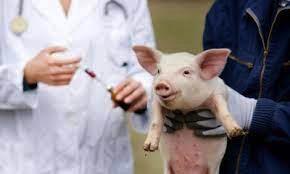
The significance in the presumed acceptance of gene deletion may open up possibilities for egg production. Of three technologies capable of resolving the problem of unwanted cockerel chicks, genetic marking of the Z chromosome of hens with a green fluorescent protein appears to be the most simple and elegant method of gender separation. The EggXYt technology is, however on hold since primary breeders are reluctant to allow genetic modification of a great- grandparent line necessary to implement the program. Alternatives, including assay of estrone, as used in the SELEGGT system, DNA analysis as in the PlantEgg system, hyperspectral analysis (Cheggy System) are all commercially practical modalities but requiring capital investment in hatchery installations.
If genetic modification of hogs is accepted by consumers, advancement in efficiency may be expedited with benefits to both producers and consumers in terms of cost and sustainability. Perhaps the success of the Acceligen gene-edited strain resistant to PRRS may provide impetus for acceptance in other livestock and poultry industries.

|
Consumers Not Benefiting from Lower Wholesale Prices for Eggs
|
02/13/2023 |
|
 During the past six weeks, the Midwest Large price has fallen by 50 percent. In contrast, shelf prices remain high ranging from $4 to $5 per dozen and have yet to demonstrate the effect of lower prices paid to producers. It is critical that supermarket chains should maintain realistic margins to support consumption that is now adversely affected by prolonged high prices. Production is limited by the fact that the National flock in production is approximately 20 million hens below pre-HPAI levels and is not increasing at the rate demonstrated after the 2015 epornitic. Notwithstanding the limits to production, shell egg stock is rising denoting a drop in consumer demand. During the past six weeks, the Midwest Large price has fallen by 50 percent. In contrast, shelf prices remain high ranging from $4 to $5 per dozen and have yet to demonstrate the effect of lower prices paid to producers. It is critical that supermarket chains should maintain realistic margins to support consumption that is now adversely affected by prolonged high prices. Production is limited by the fact that the National flock in production is approximately 20 million hens below pre-HPAI levels and is not increasing at the rate demonstrated after the 2015 epornitic. Notwithstanding the limits to production, shell egg stock is rising denoting a drop in consumer demand.
 EGG-NEWS maintains that the current benchmark price discovery system works to the disadvantage of both producers and consumers by amplifying upward and downward swings. A CME quotation for Midwest Large would be a more equitable indicator of price providing the category was actively traded. Corn and soybean meal are the major variable costs input in production and are subject to CME quotations. Accordingly, eggs should be traded on the exchange to avoid the distortions associated with the current price discovery system. EGG-NEWS maintains that the current benchmark price discovery system works to the disadvantage of both producers and consumers by amplifying upward and downward swings. A CME quotation for Midwest Large would be a more equitable indicator of price providing the category was actively traded. Corn and soybean meal are the major variable costs input in production and are subject to CME quotations. Accordingly, eggs should be traded on the exchange to avoid the distortions associated with the current price discovery system.

|
USDA-APHIS Support Fails to Control African Swine Fever in the Caribbean-Lessons for HPAI
|
02/11/2023 |
|
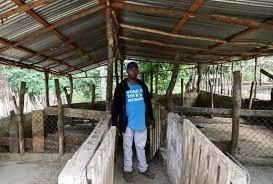 Haiti in the west and the Dominican Republic on the east of the Island of Hispaniola have experienced outbreaks of African swine fever since 1978. Since this time the infection has become endemic in both nations despite attempts at eradication with the technical and financial support of the USDA-APHIS. The program in the Dominican Republic involved an attempt to eradicate all swine by 1980. The exercise was understandably and predictably rendered futile by the persistence of African swine fever in neighboring Haiti that shares a porous border. The attempt at eradication in the Dominican Republic cost $15 million. Over $25 million was expended in Haiti in an attempt at eradication with as many as two million hogs depopulated. In addition to the losses accruing from removal of commercial and subsistence hogs, there was considerable disruption of traditional agriculture and hardship for the majority of subsistence farms relying on home-produced grain and hogs for family consumption. Haiti in the west and the Dominican Republic on the east of the Island of Hispaniola have experienced outbreaks of African swine fever since 1978. Since this time the infection has become endemic in both nations despite attempts at eradication with the technical and financial support of the USDA-APHIS. The program in the Dominican Republic involved an attempt to eradicate all swine by 1980. The exercise was understandably and predictably rendered futile by the persistence of African swine fever in neighboring Haiti that shares a porous border. The attempt at eradication in the Dominican Republic cost $15 million. Over $25 million was expended in Haiti in an attempt at eradication with as many as two million hogs depopulated. In addition to the losses accruing from removal of commercial and subsistence hogs, there was considerable disruption of traditional agriculture and hardship for the majority of subsistence farms relying on home-produced grain and hogs for family consumption.
African swine fever was never completely eradicated in either nation and resurfaced in 2021, despite assistance provided by the U.S. in the form of technical expertise, diagnostic resources, training and cooperation with international organizations.
The major involvement of the U.S. should be to encourage containment of African swine fever to Hispaniola and prevent extension to Puerto Rico with the evident potential to extend to the U.S. This is exemplified in the efforts of Dr. Amy Delgado, Director of the APHIS Center for Epidemiology and Animal Health and her team.
The infection has resulted in the Dominican Republic, previously 60-percent self-sufficient in pork production having to import 70 percent of requirements following loss of a substantial portion of the Nation’s herd. Despite the superior organization and veterinary resources in the Dominican Republic compared to neighboring Haiti, ASF is impossible to control. Eradication is only a distant aspiration.
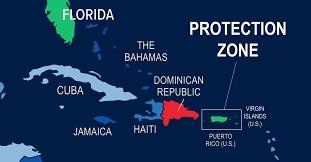 The presence of endemic ASF in the Dominican Republic should serve as a lesson to APHIS that it is impossible to eradicate an endemic highly infectious disease of livestock. Including vaccination as a component of control will reduce the risk to the U.S and Caribbean nations. Vaccines against ASF are now deployed in Vietnam, the Philippines and China among other nations. It is questioned why a USDA- ARS vaccine was not deployed in Haiti and the Dominican Republic. The presence of endemic ASF in the Dominican Republic should serve as a lesson to APHIS that it is impossible to eradicate an endemic highly infectious disease of livestock. Including vaccination as a component of control will reduce the risk to the U.S and Caribbean nations. Vaccines against ASF are now deployed in Vietnam, the Philippines and China among other nations. It is questioned why a USDA- ARS vaccine was not deployed in Haiti and the Dominican Republic.
It is difficult to understand why the USDA is reluctant to consider vaccination as a component of control of a catastrophic disease and is so intent on following a playbook that is inappropriate to the real world situation. Creating a solidly immune population of hogs within 100 miles of the common border with Haiti and implementing region-by-region quarantines in the Dominican Republic with extension of vaccination through the entire nation will be less expensive and hopefully more productive than eradication over and over again.
Middle East nations are now deploying vaccination to control foot and mouth disease and Mexico, Egypt, France and the Netherlands are using available avian influenza vaccines as components of their respective programs. The U.S. poultry industry and APHIS had best get their figurative ducks in a row and reconsider introducing alternatives to mass depopulation as the current sole control measure for avian influenza.

|
Was the Chinese Balloon Effectively a ‘Trial Balloon’?
|
02/06/2023 |
|
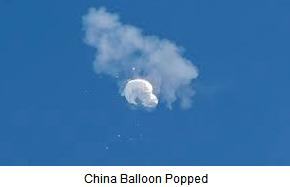 Media was dominated this past week by the appearance and then destruction of the mystery balloon launched by China that floated across our Nation in the high stratosphere. Most of the questions and commentary related to the information gathering potential of the 200 foot diameter (31,400 cubic feet capacity) balloon with attached solar array, propulsion system and an instrument package. The belated explanation from China that the balloon was for meteorologic research is obviously fallacious. Examination of the debris recovered off the coast of South Carolina should indicate the purpose and capabilities of the craft. Media was dominated this past week by the appearance and then destruction of the mystery balloon launched by China that floated across our Nation in the high stratosphere. Most of the questions and commentary related to the information gathering potential of the 200 foot diameter (31,400 cubic feet capacity) balloon with attached solar array, propulsion system and an instrument package. The belated explanation from China that the balloon was for meteorologic research is obviously fallacious. Examination of the debris recovered off the coast of South Carolina should indicate the purpose and capabilities of the craft.
China can survey the U. S. using satellites. So, the mid-week contention that the balloon and its electronic package represented no adverse affect is acceptable only at face value. The purpose of the craft raises questions as to motive, since China does nothing of this intrusive nature by accident and the purpose of the incursion has yet to be explained.
With the preoccupation over the craft gathering information, one must also consider the balloon as a potential weapon delivery system. China has now effectively demonstrated that it can deploy a transport device that will generally follow the jet stream, in a path that is entirely predictable over a short period of time and can also implement limited maneuverability, especially in the vertical plane. This said, the balloon represents an outstanding delivery system for a biological weapon with implications for the health of humans and livestock. A controlled balloon could descend from the stratosphere to a lower altitude and release one or more biological agents.
 Given the current situation, China and some of its allies are now somewhat confident that a balloon can be weaponized at low cost to deliver a radiologic or biological package that extends beyond the capability of a low-orbit satellite. Setting aside the national pride and military readiness aspects of intrusion into U.S. air space, sophisticated balloons emanating from China represent both the potential for gathering information but also delivering a weapon. Given the current situation, China and some of its allies are now somewhat confident that a balloon can be weaponized at low cost to deliver a radiologic or biological package that extends beyond the capability of a low-orbit satellite. Setting aside the national pride and military readiness aspects of intrusion into U.S. air space, sophisticated balloons emanating from China represent both the potential for gathering information but also delivering a weapon.
Students of military history will recollect the effort by Japan during the waning years of WWII to deploy 9,000 balloons with incendiary devices with the objective of igniting forest fires in northwest states. The crude weapons were decidedly ineffective, having killed one a family in Oregon and started a few fires but they established the functionality of a low-cost remotely deployed unmanned weapon.
Lest we become too self-righteous over aerial surveillance in our air space, it must be remembered that in 1960 a U-2 aircraft piloted by Francis Gary Powers, a CIA employee, was shot down over Sverdlosk while undertaking a secret spy mission gathering information on Soviet missile installations. The incident resulted in the cancellation of a bilateral summit in Geneva, reminiscent of the decision by Secretary of State Blinken to delay a scheduled visit to China.
There is speculation as to whether balloons have previously entered U.S. airspace. Emerging reports suggest that China has conducted over-flights in 40 nations as part of a comprehensive and aggressive program of surveillance. Irrespective of whether or not baloons from China have passed over U.S. territory, the U.S. must now enhance NORAD capabilities to detect and destroy any future craft launched by China the instant they enter U.S. airspace. China is an adversarial nation in the context of defense and national security

|
Iowa to Amend SNAP Food Purchase Regulations
|
02/02/2023 |
|
 The Iowa Legislature has vacillated over a range of proposed restrictions on food purchased by SNAP recipients. Originally fresh meat, butter, sliced cheese and bagged salads were among the list of restricted products. Following protests, the House Health and Human Services Subcommittee amended the proposal to remove many of the illogical and onerous restrictions. The current proposal is that food purchased under the Supplemental Nutrition Assistance Program would match approved foods for the Women, Infants and Children Program (WIC). There was general agreement that candy and soda should be excluded from SNAP eligibility in the interest of promoting healthy eating. The Iowa Legislature has vacillated over a range of proposed restrictions on food purchased by SNAP recipients. Originally fresh meat, butter, sliced cheese and bagged salads were among the list of restricted products. Following protests, the House Health and Human Services Subcommittee amended the proposal to remove many of the illogical and onerous restrictions. The current proposal is that food purchased under the Supplemental Nutrition Assistance Program would match approved foods for the Women, Infants and Children Program (WIC). There was general agreement that candy and soda should be excluded from SNAP eligibility in the interest of promoting healthy eating.
The intent of Iowa legislators is to place restrictions on SNAP and Medicaid benefits and also require Medicaid recipients to work 20 hours per week.
The proposals to restrict benefits are strongly opposed by advocacy organizations that have identified unintended consequences and obvious hardships to recipients with specific disabilities. Proposals will be reviewed by the Iowa House Health and Human Services Committee and appropriate amendments are anticipated.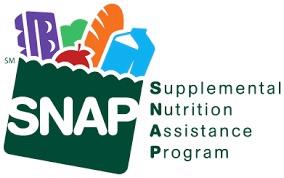
The issues raised in Iowa will be revisited in other states and ultimately in Congress in framing the Farm Bill. In some states with both chambers and the governorship controlled by one party modifications to rules can be decided upon with a minimum of debate. The situation in an almost evenly divided Congress will require diplomacy, concessions to political doctrine and time to achieve consensus.

|
Grizzly Bears Infected with Avian Influenza
|
01/23/2023 |
|
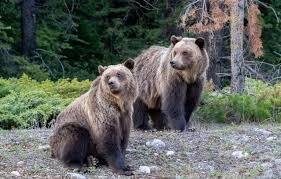 The Montana State Department of Fish, Wildlife and Parks recently announced that three immature grizzly bears in separate locations were euthanized as a result of infection with highly pathogenic avian influenza virus. The bears demonstrated neurologic signs including disorientation and partial blindness resulting in starvation. Highly pathogenic avian influenza has been described in a skunk and fox in Montana during 2022 and has been diagnosed in raccoons, black bears and a coyote in other states. HPAI was diagnosed in a bear in Quebec in 2022 and has been isolated from marine mammals along the coast of Maine, the Canadian Maritimes and in Norway. The Montana State Department of Fish, Wildlife and Parks recently announced that three immature grizzly bears in separate locations were euthanized as a result of infection with highly pathogenic avian influenza virus. The bears demonstrated neurologic signs including disorientation and partial blindness resulting in starvation. Highly pathogenic avian influenza has been described in a skunk and fox in Montana during 2022 and has been diagnosed in raccoons, black bears and a coyote in other states. HPAI was diagnosed in a bear in Quebec in 2022 and has been isolated from marine mammals along the coast of Maine, the Canadian Maritimes and in Norway.
Identifying an emergent pathogen such as Avian Influenza in wild mammals is difficult, given scavenging and destruction of carcasses. Dr. Jennifer Ramsey, Wildlife Veterinarian for the Montana Department of Fish, Wildlife and Parks, stated, “When you get that first detection you tend to start looking harder and you are more likely to find new cases.” She added “While it is unknown just how prevalent the virus is in wild birds, we know that it is active basically across the entire state due to the wide distribution of cases of HPAI mortality in some species of wild birds.”
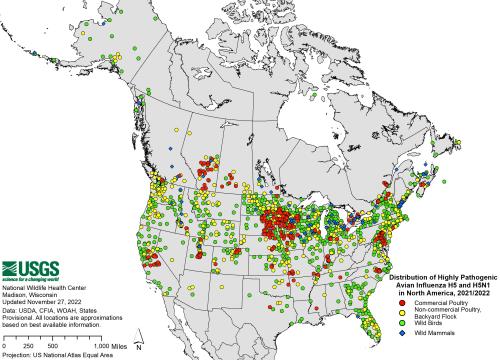
35 states, 12 months, 44 million hens, wild domestic birds and wildlife. Suggests HPAI is endemic |
Traditionally, USDA surveillance for Highly Pathogenic Avian Influenza is largely concentrated on hunter-killed waterfowl that serve as an early warning system for the presence of virus in an area. Given the widespread occurrence of H5N1 HPAI in backyard farms and reports of mortality in other than waterfowl and shore birds, it is most probable that the pathogen has now adapted to a wide range of domestic birds. This represents a heightened risk of introduction of infection onto commercial farms by direct contact or even by the aerogenous route. Evidence of widespread HPAI in wild bird populations as predicated by mortality and isolation of the virus from raptors, corvids and other species presumes endemnicity of the infection in regions of the U.S. This is borne out by ongoing cases in backyard flocks and commercial farms, unlike the previous 2015 and 1984 epornitics that reflected migration of waterfowl. Presence of the virus in 35 states and outbreaks extending over 12 months belies the contention that HPAI is an exotic infection. Accordingly attempts by the USDA-APHIS to control the disease by a traditional approach involving depopulation and disposal of infected flocks and surveillance will ultimately be futile. Other modalities including immunization as applied in other nations should be considered for incorporated into programs to control and prevent HPAI.

|
Environmental Groups Sue Danone Over Plastic Waste
|
01/15/2023 |
|
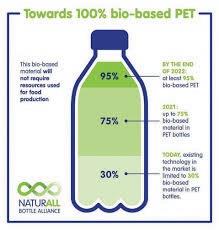 In accordance with the Duty of Vigilance law pertaining in France, three NGO’s have sued Danone over the use of plastic for packaging and generation of waste. The initiative is led by ClientEarth. The representative of the organization noted the momentum around plastic litigation has been building fast, and it’s only the beginning.” Attorney Rosa Pritchard continued, “Companies across the plastic value chain, from fossil fuels companies to consumer goods giants and waste management companies, should be on high alert.” Pritchard accused Danone of “trudging ahead without a serious plan to deal with plastics.” In accordance with the Duty of Vigilance law pertaining in France, three NGO’s have sued Danone over the use of plastic for packaging and generation of waste. The initiative is led by ClientEarth. The representative of the organization noted the momentum around plastic litigation has been building fast, and it’s only the beginning.” Attorney Rosa Pritchard continued, “Companies across the plastic value chain, from fossil fuels companies to consumer goods giants and waste management companies, should be on high alert.” Pritchard accused Danone of “trudging ahead without a serious plan to deal with plastics.”
 In defense, Danone noted “We are implementing a comprehensive framework of action aimed at reducing the use of plastic, developing reuse, strengthening collection and recycling schemes and developing alternative materials.” Yousef Chtourou, Global Circular Economy Director for Danone noted, “ Putting a name to plastic pollution can not come from a single company and requires the mobilization of all players, public and industrial while respecting the imperatives of food safety.” He added, “Our net-zero target is aligned with improving our packaging circularity.” In defense, Danone noted “We are implementing a comprehensive framework of action aimed at reducing the use of plastic, developing reuse, strengthening collection and recycling schemes and developing alternative materials.” Yousef Chtourou, Global Circular Economy Director for Danone noted, “ Putting a name to plastic pollution can not come from a single company and requires the mobilization of all players, public and industrial while respecting the imperatives of food safety.” He added, “Our net-zero target is aligned with improving our packaging circularity.”
Major companies including PepsiCo, Coca-Cola company and Mars have made extensive progress in recycling, and their efforts should be encouraged not deprecated. It appears that NGO’s including ClientEarth and Zero Waste-France appear to select as their opponents large companies with extensive brand recognition. In most cases these companies are leaders among competitors to marshal efforts and expend capital and resources on reducing plastic waste. Lawsuits and protests against large manufacturers may generate revenue for activists organizations but ultimately will do little to alleviate the accumulation of plastic in the environment.
 Reducing the quantum of plastic to the environment is a function of collaboration extending from consumer through local collection systems, recycling depots and plant capable of degrading and re-manufacturing plastic feedstock for new products. Reducing the quantum of plastic to the environment is a function of collaboration extending from consumer through local collection systems, recycling depots and plant capable of degrading and re-manufacturing plastic feedstock for new products.
Nearer to home U.S and European equipment suppliers will demonstrate advances in recycling and sustainability at the 2023 IPPE. TekniPlex will demonstrate PET egg cartons manufactured with a high content of post-consumer material. Gi-Ovo incorporates recycled plastic in their Eggscargo™ pallets and trays.
It is evident that action by environmental groups will intensify, resulting in negative publicity and legal costs. It would be preferable for producers to preemptively adapt packaging and embark on positive campaigns to promote achievements in sustainability, recycling and conservation than await the inevitable social media and legal conflicts.

|
Increased Soy Oil for Biodiesel Will Reduce the Availability of U.S. Corn
|
01/04/2023 |
|
The demand for biodiesel using soy oil as a feedstock has the potential to disrupt the relative proportion of acreages planted for corn and soybeans in the U.S. The proposed program would impact the availability and cost of soybean meal. According to the American Soybean Association, crushing capacity in the U.S. will increase in 2023 by 34 percent, equivalent to 750 million bushels per year, compared to the current capacity of 2.2 million bushels per year from 60 plants. Increased capacity will be derived from 13 new plants and the expansion of ten existing facilities.
Demand for soybeans to produce soy oil for biodiesel, domestic food and the export market will obviously increase the price of soybeans unless there is a marked reduction in shipments to existing overseas customers. This situation might in any event arise if political conflict between the U.S. and China erupts as a result of overt support for Russia over the surrogate war in Ukraine.
According to the December USDA- WASDE report, 44.1 percent of the 4.3 million bushels of soybeans produced will be exported from the 2022 crop. If demand increases by 30 percent over a three-year period, and exports remain at the current level, corn will have to be displaced to allow production of the required incremental quantity of soybeans. The 2022 soybean crop was harvested from 86.6 million acres with corn from 80.8 million acres. Conversion of 24 million acres currently planted to corn would result in a shortfall of 4,169 million bushels, assuming the 2022 yield of 172 bushels per acre. Given that domestic use of corn is 12,025 million bushels and exports will attain 2,075 million bushels, a 30 percent reduction in production would have a profound effect on domestic price. Although soybean meal may fall in price based on availability, corn would be proportionately higher.
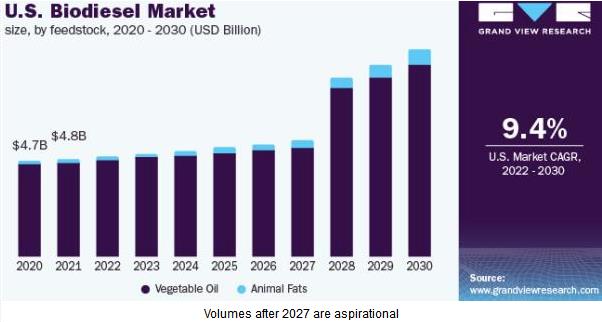
It is recognized that diversion of at least one third of the corn crop to ethanol, resulted in higher prices to the livestock feed industry. Increased production of soybeans to produce soy oil for biodiesel has the potential to also escalate the cost of livestock production.
The biofuels program is an immense boondoggle created at a time when the U.S. was reliant on unfriendly nations for importation of hydrocarbon energy. The U.S. is now a net exporter of crude oil and LNG. Biofuels have long since exceeded their economic justification, other than to the favored few. The row crop community, their commodity associations and the renewable fuels industry with their influence on both parties in Congress have perpetuated an artificial demand through mandates. This has effectively imposed an indirect tax on all who eat, drive or purchase any item that is transported.

|
The Fallacy of the Dual-Purpose Chicken
|
12/29/2022 |
|
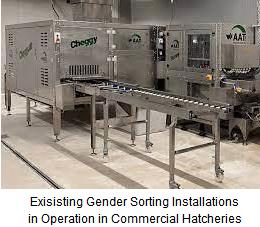 A project is in progress in Germany to develop a dual-purpose chicken. The objective is to eliminate killing day-old cockerel chicks from egg production strains with the intention of rearing them as meat-producing birds. A project is in progress in Germany to develop a dual-purpose chicken. The objective is to eliminate killing day-old cockerel chicks from egg production strains with the intention of rearing them as meat-producing birds.
This exercise in futility runs against commercial realities. Meat-type chicken hybrid strains and their counterparts for egg production have been subjected to at least six decades of selection for commercial traits and the divergence is evident in growth rate and conformation in the case of broilers and egg production and feed conversion efficiency for laying strains.
To reverse decades of selection in pursuit of a narrow goal of eliminating the disposal of commercial-level cockerel chicks in laying strains runs counter to sustainability and economics. Producing a dual-purpose chicken for industrialized nations is as logical as an automobile that can fly. Inventers have developed dual-purpose vehicles but they do not fly very well nor do they provide comfort, convenience and speed as road vehicles. This is evidenced by the lack of commercial acceptance and the fact that if any of these dual-purpose vehicles currently exist, they are in barns or in museums as oddities. The development of flying cars was more a function of “can it be done” than “need it be done”.
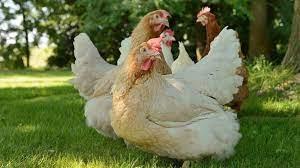 The dual-purpose chicken project is based on the English Ixworth strain but the three German universities involved are introducing genes from current broilers and egg production lines to create the RegoHuhn. The dual-purpose chicken project is based on the English Ixworth strain but the three German universities involved are introducing genes from current broilers and egg production lines to create the RegoHuhn.
Apparently, those involved, including the German Ministry of Food and Agriculture, are apparently unaware of the existence of commercial gender determination systems that will become more precise and achieve greater acceptability over the next five years. These systems depend on assay of reproductive hormones from a sample of allantoic fluid extracted from an egg and can be regarded as bridging technology to satisfy current retail demand.
Subsequently, depending on consumer acceptance, more advanced technology involving an optogenetic system should (or may) be adopted. This elegant approach requires genetic modification of the female parental Z chromosome but may be unacceptable to primary breeders or to the Birkenstock clan who agitated against the disposal of cockerels in the first instance.
In the interim, it appears that a number of geneticists and poultry scientists at E.U. institutions consider themselves meaningfully employed. They are attempting to produce a strain that will not be commercially viable for other than a limited number of small-scale farmers who can obtain a premium based on sentiment, but at a price that will be unacceptable to major retail chains. Developing a dual-purpose strain, for the edification of those involved is analogous in the context of Germany to creating a Zeppelin that can achieve supersonic speeds
These scientists would be more meaningfully employed if they applied their knowledge and used their facilities to improve the productivity and welfare of commercial hens in aviary systems. The egg-production industry is currently attempting to optimize egg production, livability and shell quality from hens that have been bred for over fifty generations in cages and require adaptation to aviaries, barns and pasture.

|
Our 2023 Wish List
|
12/27/2022 |
|
As we approach 2023 we should be thankful for the positive events over the past year and recognize the challenges ahead. We have overcome obstacles, striven to defend what is right and ethical and have overcome many obstacles imposed on us by extremes in weather, international turbulence and economic pressures.

During the coming year the poultry industry and interconnected agricultural sectors should benefit from: -
- A decline in the incidence rate of HPAI in the U.S. and neighboring nations. A realization that the infection is de facto endemic should result in a reappraisal of limited evaluation and application of immunization of long-lived flocks applying advanced vaccines.
- Immigration reform is needed. We require foreign workers and more important their children who will be raised as U.S. citizens, enriching our diverse culture and offsetting the inevitable ageing of our population.
- Rapid passage of the 2023 Farm Bill with strong constructive bipartisan support within the House and Senate
- Resolution of conflict in the Ukraine to end human suffering and to restore supply of commodities, stabilizing ingredient prices and allowing diversion of resources to peaceful and constructive endeavors.
- Curtailing inflation to allow the Federal Reserve and other central banks to lower interest rates and stimulate consumption and the expansion of our industry.
- A greater sense of community is needed in our Nation with mutual understanding and rejection of extremes. We need to reduce inflammatory rhetoric and parochial divisions in our society with a return to political civility and a commitment to progress and prosperity.
Barbara and I wish all our sponsors, Subscribers and friends in the industry a peaceful and productive 2023. We all look forward to meeting at the IPPE.

|
Attorneys Challenging Promotional Claims
|
12/18/2022 |
|
 In her review of significant litigation during 2022, Texas A & M Extension attorney Tiffany Lashmet posted on ‘greenwashing’ in a recent edition of her Texas Agricultural Law Blog. In her review of significant litigation during 2022, Texas A & M Extension attorney Tiffany Lashmet posted on ‘greenwashing’ in a recent edition of her Texas Agricultural Law Blog.
A number of lawsuits have been filed alleging misrepresentation of products advertised as being “environmentally friendly” or applying terms such as “humanely raised”. Usler v. Vital Farms considered whether that the terms, “ethical” and “certified humane” on packaging and on websites were false and misleading. The court ruled against Usler but only on the basis of the plaintiff’s standing.
 It is inevitable that lawyers will continually push the envelope and create class action lawsuits that in all probability will never be tried but will result in a settlement. Some of the animal rights activists’ groups, including the Animal Legal Defense Fund, have infinite resources and will become more aggressive in their activities opposing intensive livestock and egg production. It is inevitable that lawyers will continually push the envelope and create class action lawsuits that in all probability will never be tried but will result in a settlement. Some of the animal rights activists’ groups, including the Animal Legal Defense Fund, have infinite resources and will become more aggressive in their activities opposing intensive livestock and egg production.
The designation “Certified Humane™”, is awarded following audit to demonstrate compliance with predetermined standards and should be an acceptable claim. Simply using “humane” without reference to a certification process may be considered a non-substantiated claim. Terms such as “ethical” or “sustainable” are subjected to interpretation and could be the subject of litigation. In any event, for an individual company to claim that their products are “ethical” implies that competitors operate at a lower standard of ethics. Likewise, eggs produced by a company that is “bird-friendly” suggests that products from other companies are possibly “bird unfriendly”. Obviously, producers should avoid hype and above all, making label or promotional claims that cannot be verified or independently supported.

|
Elevated Prices Will Respond to Increased Production
|
12/13/2022 |
|
A recent posting by Brian Earnest of CoBank indicated that egg prices would remain high for a considerable period. He based his conclusion on the current reduced flock size following depletion of close to 42 million laying hens. Prices are also fueled by increased demand as consumers move down the protein chain and find value in eggs, even at current prices. Earnest correctly cites current USDA data, including the Weekly Shell Egg Demand Indicator, monthly stock levels and the trend in prices.
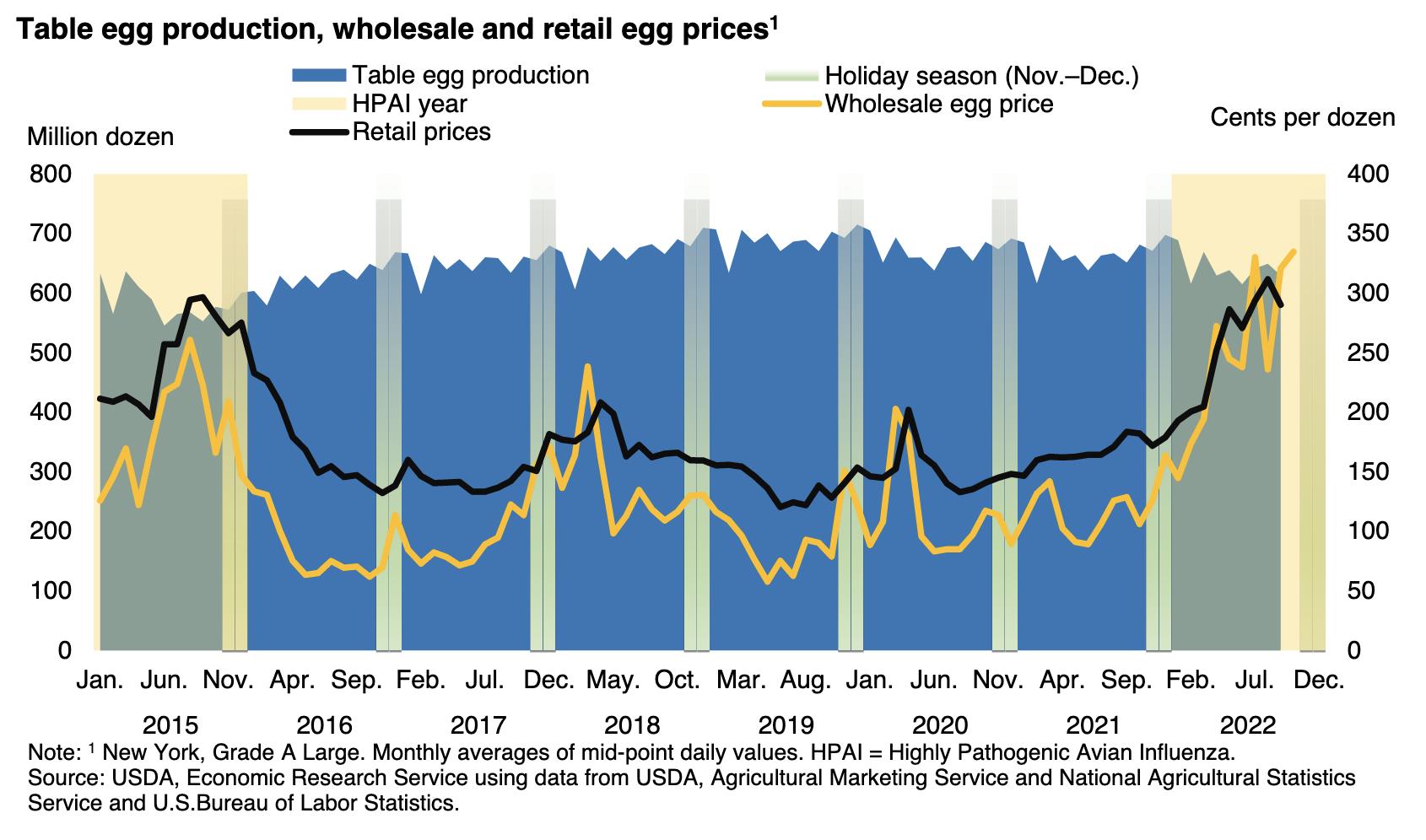
Based on USDA hatch figures, the U.S. laying flock will soon increase since there are approximately 4 million pullets each week ready to commence production, hatched between five and six months ago. The rate of losses attributed to HPAI fluctuates as documented each week in the EGG-NEWS Weekly Egg Price and Inventory Report but has now moderated in the egg sector.
Reviewing the recovery of the U.S. flock after the 2015 epornitic suggests that a similar situation will be repeated in 2023 as pullets commence production, laying cycles are extended and a higher proportion of hens are molted providing that housing is available. Reference to USDA data shows the effect on wholesale price of an increase in production in accordance with the law of supply and demand.
 Currently, there are between 18 and 20 million fewer hens in the national producing flock. If losses, due to HPAI remain at the current incidence rate, the industry could easily compensate for past losses through placement of pullets already in the pipeline and from ongoing placements by mid-second quarter. Restoration and even overcompensation could be achieved with careful control of flock size and through application of molting as occurred in 2016. The current nosebleed prices will soon respond to increased production, amplified downward by the benchmark pricing system that will be exploited by buyers. Currently, there are between 18 and 20 million fewer hens in the national producing flock. If losses, due to HPAI remain at the current incidence rate, the industry could easily compensate for past losses through placement of pullets already in the pipeline and from ongoing placements by mid-second quarter. Restoration and even overcompensation could be achieved with careful control of flock size and through application of molting as occurred in 2016. The current nosebleed prices will soon respond to increased production, amplified downward by the benchmark pricing system that will be exploited by buyers.

|
Restaurants Anticipate Lower Traffic Based on Reduced Consumer Spending
|
12/04/2022 |
|
 The Department of Labor, Bureau of Statistics determined that grocery prices were higher by 12.4 percent in October compared to the comparable month in 2021. Concurrently, year-over-year restaurant prices were up 8.6 percent. The differential is narrowing and consumers searching for value are anticipated to eat more meals at home than they obtain from QSRs and casual dining restaurants. The Department of Labor, Bureau of Statistics determined that grocery prices were higher by 12.4 percent in October compared to the comparable month in 2021. Concurrently, year-over-year restaurant prices were up 8.6 percent. The differential is narrowing and consumers searching for value are anticipated to eat more meals at home than they obtain from QSRs and casual dining restaurants.
Restaurant operators have successively raised menu prices to compensate for higher ingredient and labor costs. This strategy is now in conflict with a reluctance to spend by consumers concerned over rising fuel, energy, housing and medical expenses. Most QSRs are evaluating specials, value meals and coupons to avoid the downward spiral of decreased traffic and increased costs.

 During COVID restrictions, consumers ate at home and the food habits developed during this period will persist. This is evidenced by supermarkets competing with restaurants for available expenditure on food. The promotion of house brands to reduce cost and offers of prepared meals especially in upscale “destination supermarkets” will be attractive to frugal consumers searching for value. During COVID restrictions, consumers ate at home and the food habits developed during this period will persist. This is evidenced by supermarkets competing with restaurants for available expenditure on food. The promotion of house brands to reduce cost and offers of prepared meals especially in upscale “destination supermarkets” will be attractive to frugal consumers searching for value.

|
Perceptions of Health Effects Influenced by Questionable Research
|
11/28/2022 |
|
 A series of articles of questionable validity during the 1970’s created a false association between dietary intake of cholesterol and cardiovascular disease. Published epidemiologic studies have also implicated consumption of red meat in the incidence of colorectal cancer, ischemic heart disease and breast cancer. A series of articles of questionable validity during the 1970’s created a false association between dietary intake of cholesterol and cardiovascular disease. Published epidemiologic studies have also implicated consumption of red meat in the incidence of colorectal cancer, ischemic heart disease and breast cancer.
The fact that articles are published in prestige journals and authored by faculty at prominent and respected universities provides a justification for opponents of intensive livestock production to demonize animal protein. More recently, those opposing meat, eggs and milk have found common cause with environmental activists to create a unified front that effectively reinforces a vegan agenda.
 A recent article published in Nature Medicine* represented the application of sophisticated and advanced epidemiologic analytical techniques to establish whether any relationship exists between unprocessed red meat and specific health outcomes. These included breast cancer, colorectal cancer, type-2 diabetes, ischemic heart disease and both ischemic and hemorrhagic stroke. Available literature was critically reviewed to determine the strength of association between unprocessed red meat consumption and the selected health outcomes applying burden of proof risk function methodology. A recent article published in Nature Medicine* represented the application of sophisticated and advanced epidemiologic analytical techniques to establish whether any relationship exists between unprocessed red meat and specific health outcomes. These included breast cancer, colorectal cancer, type-2 diabetes, ischemic heart disease and both ischemic and hemorrhagic stroke. Available literature was critically reviewed to determine the strength of association between unprocessed red meat consumption and the selected health outcomes applying burden of proof risk function methodology.
The paper established a weak association between unprocessed red meat consumption and colorectal cancer and ischemic heart disease. There was no evidence of an association between unprocessed red meat and either ischemic or hemorrhagic stroke. The authors noted considerable uncertainty attributed to evident between-study heterogeneity with daily intakes of red meat ranging from zero to 200 g. The authored concluded that although some evidence existed that unprocessed read meat consumption may be associated with a risk of disease it was weak and inadequate to make conclusive dietary recommendations. It appears therefore that meta-analysis on dietary effects relating to disease should not be regarded as inconclusive and should not form the basis of national dietary recommendations. This reasoning was possibly responsible for deletion of a maximum daily intake of dietary cholesterol in the most recent Dietary Guidelines for Americans 2020-2025.
Notwithstanding the validity of scientific data, opponents of intensive livestock production will cherry pick medical literature and amplify aspects and findings to support preconceived concepts and form the basis of postings on websites.
*Lescinsky, H. et al. Health effects associated with consumption of unprocessed red meat: a Burden of Proof study. Nature Medicine. 28: 2,075 to 2,082 (2022)

|
The Need to Reduce Methane Emissions
|
11/22/2022 |
|
 Methane represents twenty percent of all global greenhouse gas emissions. Although relatively short-lived compared to carbon dioxide, methane has almost 100 times the global warming potential compared to carbon dioxide. Methane represents twenty percent of all global greenhouse gas emissions. Although relatively short-lived compared to carbon dioxide, methane has almost 100 times the global warming potential compared to carbon dioxide.
 Although agriculture is blamed for methane emissions, the petrochemical industry is the largest emitter of methane and possibly the easiest to constrain. During the COP27 Climate Conference in Egypt, the President announced higher emissions standards and penalties for methane release by the oil and gas industries. This action is reinforced by similar restrictions to be imposed by fifteen nations. Although agriculture is blamed for methane emissions, the petrochemical industry is the largest emitter of methane and possibly the easiest to constrain. During the COP27 Climate Conference in Egypt, the President announced higher emissions standards and penalties for methane release by the oil and gas industries. This action is reinforced by similar restrictions to be imposed by fifteen nations.
With regard to intensive livestock industry and the release of methane by CAFOs, biodigesters will be funded by the Inflationary Reduction Act. These installations will be capable of converting livestock waste from dairy and hog operations into biogas that can be used to generate power.
Intensive livestock production has come under extreme pressure from environmental groups and there is now common cause among welfare, vegan and environmental activist organizations. They have obviously generated synergy in their lobbying and public relations efforts to demonize milk, pork, beef and egg 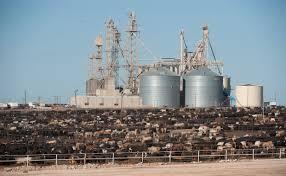 production by creating a sense of guilt over environmental degradation among consumers. production by creating a sense of guilt over environmental degradation among consumers.
Even if we concede that intensive livestock production has a quantifiable deleterious effect on the environment, opponents cannot provide an alternative to the protein food produced by the intensive livestock industries that is currently required to satisfy nutritional needs.

|
Inordinate Publicity Devoted to Indiscretion by CFO
|
11/17/2022 |
|
The recent, “Goldilocks in Arkansas” event has generated considerable publicity far beyond the impact of the charge of public intoxication. The fact that the perpetrator was the newly appointed CFO of a major protein company, and the son of the Chairman, certainly did not warrant the coverage afforded, not only by general media but specifically poultry-related magazines and websites.
The fact that the individual involved bore the name of his company and brand and that he is the fourth-generation family member in an executive position is immaterial but apparently considered newsworthy.
The facts concerning the event have yet to be disclosed but since the alleged intoxication did not involve a vehicle and the only damage was the possible psychological trauma to the owner of the home finding the person asleep in a bedroom, the case should be resolved with the utmost dispatch.
The reporting on this incident demonstrates more than a hint of schadenfreude, that unique Teutonic characteristic of enjoyment at the expense of another person. This is evident in both detail and repetition, including the publication of a mug shot.
The person involved is obviously highly intelligent, academically accomplished but possibly under extreme pressure to perform in business and within the family. We each respond individually to the stresses of life and sometimes we make inappropriate decisions. The person involved has received a severe shock to his reputation and status, but the event has apparently led to counseling and rehabilitation.
EGG-NEWS extends a measure of understanding to him and sympathy to the homeowner and it is hoped that the event and its aftermath will be transitory. There are times when journalistic discretion is appropriate. Repetition of the event on poultry industry websites and in magazines was unnecessary. As the company release stated, “This was a personal matter and in no way reflected on the management and performance of the company”. The CFO concerned has endured humiliation based on press reports and accordingly it is now time to move on.

|
Avian Influenza Diagnosed Among Poultry Workers in Spain
|
11/10/2022 |
|
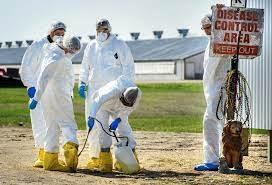 Two poultry workers were apparently infected with H5N1 strain Avian Influenza following exposure while depleting an infected farm. There was no evidence of subsequent person-to-person transmission. The workers were in contact with an infected flock in Guadalajara Province in late September. Two poultry workers were apparently infected with H5N1 strain Avian Influenza following exposure while depleting an infected farm. There was no evidence of subsequent person-to-person transmission. The workers were in contact with an infected flock in Guadalajara Province in late September.
Three days after commencing the project, 12 workers were sampled by nasopharyngeal swabbing with the virus detected in two workers. Samples from close contacts of the first affected individual were negative by RT-PCR assay. The second worker yielded a positive nasopharyngeal swab on October 13th, three weeks after participating in cleaning and disinfection. Two contacts of the infected individual tested negative on sampling.
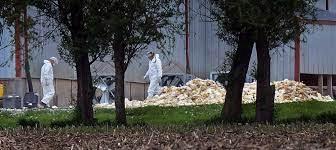
The two asymptomatic cases in Spain are reminiscent of the single case reported in the U.S. in a worker participating in depopulation and disinfection on an infected farm in the Midwest. These rare cases indicate the need to immunize all people coming into contact with poultry by administering the current seasonal influenza vaccine. Workers should be screened daily for any febrile reaction in order to prevent a possible gene interchange between avian and human strains of influenza virus with the potential for a zoonotic strain of avian influenza.

|
USDA Provides Grants for Urban Agriculture
|
11/01/2022 |
|
The USDA intends to disburse $14.2 million to 52 recipients to support urban agriculture using funds derived from the American Rescue Plan Act. The intent is to allow recipients to “expand access to nutritious foods, foster community engagement, increase awareness of climate change and mitigate the effects within urban areas”. Studies have shown that throwing money at urban projects does not materially increase the quality of nutrition in the area served.

This initiative is yet another example of USDA largesse and the intent by USDA administrators to alter the structure of U.S. agriculture, detracting from traditional farmers irrespective of their scale of their operation.
The press release is replete with buzzwords and homilies but short on specifics. The announcement manages to touch all the bases including “new farmers”, “underserved communities”, “sell locally”, “job creation”, “reducing the climate impact on food supply” and “economically distressed neighborhoods”.

Grants will be provided for either planning or implementation projects. The current tranche of funding extends to 18 planning projects and 34 implementation projects.
The USDA characterizes the $14.2 million in grants as an “investment”. If this is the case, the USDA should be obliged to provide a report on the actual financial return on this investment, since public funds are involved.

|
Holland Evaluating Vaccines Against HPAI
|
10/14/2022 |
|
In a recent announcement Wageningen Bioveterinary Research, a component of Wageningen University will evaluate three commercial vaccines against H5N1 HPAI in laying hens. These products will be compared with experimental vaccines developed using advanced molecular technology. The E.U. is actively evaluating vaccination as an adjunct to biosecurity and depopulation of affected flocks as a coordinated approach to controlling HPAI.
 The evaluation will be conducted over three months and vaccines will be compared as to their ability to suppress mortality and clinical signs and more important, to reduce virus shedding. To be acceptable to E.U. regulators, vaccines must prevent multiplication and excretion of virus that would be responsible for persistent infection. This is especially important in areas with a high concentration of domestic poultry as in the Netherlands, and regions of Germany, Poland, the U.K. and in the U.S. The evaluation will be conducted over three months and vaccines will be compared as to their ability to suppress mortality and clinical signs and more important, to reduce virus shedding. To be acceptable to E.U. regulators, vaccines must prevent multiplication and excretion of virus that would be responsible for persistent infection. This is especially important in areas with a high concentration of domestic poultry as in the Netherlands, and regions of Germany, Poland, the U.K. and in the U.S.
In past years, Avian Influenza was a sporadic disease introduced by migratory waterfowl and was justifiably regarded as exotic in most industrialized nations. Accordingly, an approach involving rapid diagnosis and depopulation with quarantine restrictions was and is appropriate. Since 2020, the H5N1 strain of Avian Influenza carrying Eurasian genes has proven to be more extensive in geographic distribution. The current panornitic has affected a wide range of migratory and domestic birds, resulting in prolonged and recurrent outbreaks extending from November 2021 through the present. The experience in the E.U. is reflected in outbreaks in the U.S., dealing with essentially the same viral pathogen.
 Clearly the results of studies in the E.U. and in other areas where HPAI can now be regarded as either seasonally endemic or de facto endemic will be of value to regulators in the U.S. Given the severity of the current U.S. epornitic and with poultry industries facing a worldwide panornitic, vaccination must be considered as an option. This will require relaxation of trade restrictions, modifying bans on importation to the county or regional level in nations experiencing outbreaks. Clearly the results of studies in the E.U. and in other areas where HPAI can now be regarded as either seasonally endemic or de facto endemic will be of value to regulators in the U.S. Given the severity of the current U.S. epornitic and with poultry industries facing a worldwide panornitic, vaccination must be considered as an option. This will require relaxation of trade restrictions, modifying bans on importation to the county or regional level in nations experiencing outbreaks.
EGG-NEWS maintains that Avian Influenza is effectively the Newcastle disease of the 2020s. With the exception of Scandinavia, the disease is effectively controlled by applying a range of live attenuated, inactivated and vectored vaccines.

|
Time to Repeal the Jones Act?
|
10/10/2022 |
|
 In discussion with Michael Sencer, Senior Vice-president of Hidden Villa Ranch, and the EVP representative for Villa Rose, LLC, the operator of Waialua Egg Farm, it is apparent that the landed cost of feed contributes to high price and is a deterrent to greater consumption of eggs in Hawaii. The principal reason for the disproportionate price of feed on the West Coast and in Hawaii relates to ocean freight rates attributed to the Jones Act. In discussion with Michael Sencer, Senior Vice-president of Hidden Villa Ranch, and the EVP representative for Villa Rose, LLC, the operator of Waialua Egg Farm, it is apparent that the landed cost of feed contributes to high price and is a deterrent to greater consumption of eggs in Hawaii. The principal reason for the disproportionate price of feed on the West Coast and in Hawaii relates to ocean freight rates attributed to the Jones Act.
Introduced during the early 1920s following WWI, this legislation was intended to create self-sufficiency with respect to shipments between and among U.S. ports, especially in times of war. The Jones Act specifies that shipments must be on vessels constructed in the U.S. owned by U.S. shareholders and manned by U.S. crews. The Jones Act is an anachronism, since the U.S. does not have a maritime ship-building industry and the requirements of the Jones Act represent non-competitive advantages for both shippers and marine-trade unions to the disadvantage of consumers, especially in Puerto Rico and Hawaii. By restricting competition, the Jones Act facilitates high prices verging on exploitation. Although waivers are possible under emergency conditions such as recent hurricanes in Puerto Rico, they are seldom issued by the White House and are based on individual vessels.
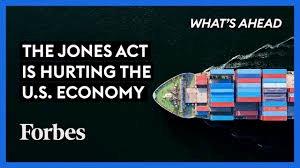 Repealing the Jones Act would allow foreign vessels to convey containerized feed from the West Coast to Hawaii at a cost lower than at present. With competition from lower-priced U.S. mainland eggs, shelf prices for mainland and domestic production would be reduced, and consumption would rise, benefitting both the producers and consumers in Hawaii. Given vested interests and lobbying by domestic ocean freight companies and the seafarers’ union prospects for change are currently remote. Repealing the Jones Act would allow foreign vessels to convey containerized feed from the West Coast to Hawaii at a cost lower than at present. With competition from lower-priced U.S. mainland eggs, shelf prices for mainland and domestic production would be reduced, and consumption would rise, benefitting both the producers and consumers in Hawaii. Given vested interests and lobbying by domestic ocean freight companies and the seafarers’ union prospects for change are currently remote.

|
Internal FDA Report on Infant Formula Debacle—Need for Radical Change
|
10/04/2022 |
|
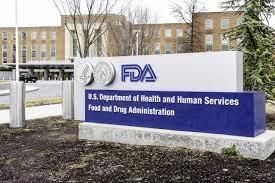
The September 20th internal FDA report Evaluation of Infant Formula Response identified five areas that require attention to ensure a safe food supply:-
- Introduction of modern information technology and exchange of data.
- Adequate staffing, training, equipment and regulatory authority for the FDA.
- An updated emergency response system.
- Additional knowledge concerning the epidemiology of Cronobacter contamination and control measures.
- Evaluation of the infant formula industry with specific attention to concentration of production facilities and response to contamination
According to the self-serving commentary, “There was no single action to pinpoint as the cause of the events that occurred but the prolonged production and distribution of potentially contaminated product demonstrated vulnerabilities in the control of food safety”.

The immediate response of FDA to any problem usually manifested by an extensive food outbreak resulting in Congressional scrutiny is to demand more funding and greater authority. Given the infant formula problem, the FDA possessed sufficient power and resources to have predicted and proactively averted the problems that occurred. Not that the infant formula event was either unique or unprecedented.
Instead of temporizing and diverting responsibility to both internal and external reviews, Dr. Robert Califf the newly reappointed Commissioner of the FDA, should simply fire the senior managers who sat on a whistleblower’s credible report for a number of months. Administrators who suspended routine plant audits and evaluations on the flimsy grounds of COVID infection should be disciplined for dereliction of duty. The structure of the FDA with relation to responsibilities and actions should be seriously analyzed, given credible press reports on protecting turf, dissension and lack of cooperation among senior managers. Inevitably it is not worth trying to fix something that is irretrievably broken. A new structure will not change culture that is deeply ingrained in the FDA favoring drug and device oversight to the detriment to food safety.
 Again, EGG-NEWS advocates for an independent food safety agency paralleling the EU Food Safety Authority or the Canadian Food Safety Agency. An independent U.S. entity should be totally committed to enforcing appropriate standards to prevent food borne disease and toxicity. An effective agency would be staffed by dedicated professionals with expertise in epidemiology, manufacturing practices, surveillance and enforcement and would be coordinated by administrators capable of operating within the DC executive and legislative jungle. Additionally to be effective, a national U.S. food service agency should incorporate the current responsibilities of the Food Safety and Inspection Service to ensure a seamless approach to food safety. Again, EGG-NEWS advocates for an independent food safety agency paralleling the EU Food Safety Authority or the Canadian Food Safety Agency. An independent U.S. entity should be totally committed to enforcing appropriate standards to prevent food borne disease and toxicity. An effective agency would be staffed by dedicated professionals with expertise in epidemiology, manufacturing practices, surveillance and enforcement and would be coordinated by administrators capable of operating within the DC executive and legislative jungle. Additionally to be effective, a national U.S. food service agency should incorporate the current responsibilities of the Food Safety and Inspection Service to ensure a seamless approach to food safety.
Given any prospect of reorganization, commissioners and directors circle the wagons, sign memoranda of agreement and promise to play nice with each other then simply revert to this status quo. How many more food-related disease outbreaks or disruptions do we endure before concerted action is taken? Congress needs to establish an agency that can be proactive, aggressive but constructive in establishing and enforcing a comprehensive food-safety program benefitting consumers and our export market.

|
US POULTRY Soliciting Pre-proposals on HPAI Research
|
09/28/2022 |
|
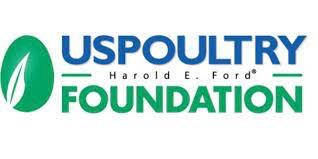 In a September 26th release, US POULTRY and the US POULTRY Foundation requested research pre-proposals to conduct research on aspects of highly pathogenic avian influenza (HPAI). In a September 26th release, US POULTRY and the US POULTRY Foundation requested research pre-proposals to conduct research on aspects of highly pathogenic avian influenza (HPAI).
Suggested areas of investigation included:
- Evaluation of shedding of virus from flocks infected with HPAI and persistence of the virus in houses following depopulation.
- Humane and effective methods to depopulate caged layer and aviary flocks.
- Possibility of inter-farm transmission of HPAI virus on dust entrained by wind.
- Surveillance of wild birds, presumably both domestic and migratory waterfowl and small mammals for the presence of AI virus.
- Enhancement of biosecurity.
The topics enumerated in the request for pre-proposals are all relevant but omit vaccination that inevitably will be a necessary component along with biosecurity to prevent outbreaks of HPAI. These items in addition to field and molecular epidemiology should have been investigated by USDA-ARS immediately after the 2015 outbreaks and during the 2022 epornitic.
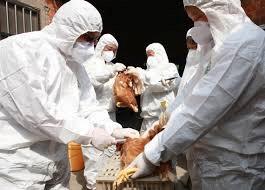
The initiative by US POULTRY is commendable but the need for action by an industry association denotes a lack of initiative and imagination by USDA either in internal research or funding studies by academia. The Department and its APHIS Agency appeared to be stuck in a 1985 mode of attempting to “stamp out” what they consider to be an exotic disease. Uppermost in the epidemiologic investigations should be a realistic determination of whether HPAI is exotic, seasonally endemic or de facto endemic. Obviously, the actual status of HPAI in the U.S. and Canada is pivotal to developing appropriate control and prevention measures. These will rely on a more detailed knowledge of the routes of infection for egg production complexes and turkey grow-out farms. An understanding is required concerning the risk factors for infection and the respective interactions among wild migratory and domestic birds, backyard flocks and commercial operations. An intriguing question is why broiler grow-out farms remained relatively unscathed during the 2022 epornitic.
It is hoped that the Research Committee, in reviewing pre-proposals, will fund projects based on their individual and collective contribution to resolving issues. Coordination of research activities to prevent duplication and to promote a more comprehensive understanding of the dynamics of HPAI will be necessary.

|
Internal FDA Report on Shortage of Infant Formula Released
|
09/23/2022 |
|
The U.S. Food and Drug Administration (FDA) has issued a long-awaited internal report on the infant formula crisis. The report was authored by a team headed by Dr. Steven Solomon, Head of the FDA Veterinary Division. The report identified a number of areas of concern involving delays in communication, obvious operational failures and “general lapses”. Recommendations by Dr. Solomon included improved information. technology, intensified training of staff and an updated emergency response system to deal with food safety issues as they arise.
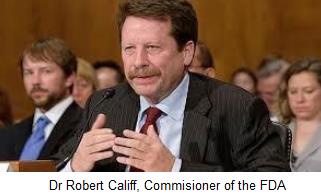
Predictably, there will be little retribution for incompetence or dereliction of duty and the crisis will “be handled through the personnel process”. The culture of the FDA is characterized by the public statement by the Director, Dr. Robert Califf, who stated, “We are not going to spend a lot of time going back, we are going to spend our time taking into account what happened and move forward.” Dr. Califf considers that the report provides a “clear road map for the infant formula issue and provides a nice bridge to the overall food program’s evaluation”.
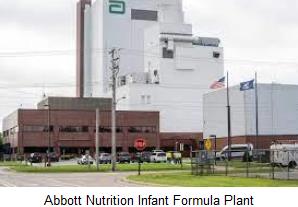
In contrast a more detailed and incisive report on the issue was published in Politico entitled, “The FDA’s Food Failure” by Helena Bottemiller Evich on April 8th to which readers are referred.
The shortages that emerged still persist with many stores and outlets having 20 percent out-of-stock rates. The FDA may well wish to bury failures at numerous levels leading to the crisis, including the glaring lack of response to a whistle-blower report over three months together with a de facto moratorium on plant inspections attributed to the COVID crisis.
The Administration was obliged to arrange for military transport aircraft to bring in supplies of formula from overseas plants that were hastily approved. Obvious problems identified in the internal FDA report and by media include extreme concentration of production among a few plants. The Evich exposé identified a preoccupation with achieving production goals and maximizing profit at the expense of quality and safety by Abbott Nutrition, the largest manufacturer of a range of specialty and conventional formulas.
Given the self-serving internal FDA report and the disinclination to hold managers within the Agency responsible for lack of response to a potential crisis and dereliction of duty, it is inevitable that a similar food-related crisis will occur in the future.
EGG-NEWS has consistently advocated for a dedicated U.S. food safety agency since the best interests of consumers would be served by a single entity suitably funded and staffed and provided with the authority to concentrate on the safety of domestic and imported foods.

|
Extensive International Reach Of The Chinese Communist Party
|
09/18/2022 |
|
 Attorney Dan Harris, of Harris Bricken LLP, recently published a commentary on the influence of the Chinese Communist Party (CCP) on students, citizens and defectors in the U.S. This caution is especially important in the context of protecting intellectual property. Attorney Dan Harris, of Harris Bricken LLP, recently published a commentary on the influence of the Chinese Communist Party (CCP) on students, citizens and defectors in the U.S. This caution is especially important in the context of protecting intellectual property.
The CCP is intent on extending its influence over Chinese citizens living abroad for both political and commercial benefit. The CCP employs commercial pressure and intimidation to coerce students and citizens to assist the government.
Harris cites the significant reduction in the importation of canola oil from Canada in 2018, shortly after the arrest of Ms. Meng Wenzhou daughter of the founder of Huawei at the behest of U.S. authorities. Pressure was placed on state-affiliated importing companies not to purchase Canadian canola oil.
 There is extensive evidence that agents of the Communist Party have infiltrated nongovernmental organizations, including business and cultural groups. Newsweek, after an extensive investigation, determined that the CCP has operated through various channels to influence decisions at the federal, state and local levels to benefit their political and economic interests. Social media and messaging apps and organizations and academic institutions are involved in promoting activities that benefit China. There is extensive evidence that agents of the Communist Party have infiltrated nongovernmental organizations, including business and cultural groups. Newsweek, after an extensive investigation, determined that the CCP has operated through various channels to influence decisions at the federal, state and local levels to benefit their political and economic interests. Social media and messaging apps and organizations and academic institutions are involved in promoting activities that benefit China.
Agents of the Chinese Communist Party frequently coerce highly trained Chinese citizens living in North America to return to the homeland using threats of retaliation against relatives, including violations of parental custody. China has established a secret police presence in 54 nations on five continents to extend the reach of the central government designed to intimidate expatriate nationals of China and to exert pressure through harassment, intimidation and threats of retribution with the intent of acquiring intellectual property.
 The unfortunate corollary of the expanding policy of control exerted by the CCP is that it creates suspicion for loyal U.S. scientists, academics, businesspeople and employees of Chinese ethnicity in the U.S. The unfortunate corollary of the expanding policy of control exerted by the CCP is that it creates suspicion for loyal U.S. scientists, academics, businesspeople and employees of Chinese ethnicity in the U.S.
The take-home message from Dan Harris is to maintain ever-increasing levels of protection over intellectual property and to be aware of the constant attempts at intrusion to obtain possession of information that could benefit the Communist Party and Nation.

|
California Department Of Food And Agriculture Belatedly Releases Proposition #12 Rules
|
09/11/2022 |
|
 Proposition #12 was passed by ballot initiative in November 2018. The law created by voter adoption prohibited confinement of farm animals, including egg-laying hens, veal calves and breeding sows “in a cruel manner” and prohibits the sale of products in California from farm animals so confined. The final regulations were released in early September 2022, nine months after the proposed date of implementation of January 1, 2022. A previous court decision extended a grace period of six months to producers after the rules with respect to Proposition #12 were issued. Proposition #12 was passed by ballot initiative in November 2018. The law created by voter adoption prohibited confinement of farm animals, including egg-laying hens, veal calves and breeding sows “in a cruel manner” and prohibits the sale of products in California from farm animals so confined. The final regulations were released in early September 2022, nine months after the proposed date of implementation of January 1, 2022. A previous court decision extended a grace period of six months to producers after the rules with respect to Proposition #12 were issued.
The requirements that all producers selling livestock products in California comply with the CDFA rules was upheld by the 9th Circuit Court of Appeals that is now the subject of a scheduled hearing by the Supreme Court of the United States (SCOTUS)
The regulations are now due to take effect on January 1st 2023. In the interim, the National Pork Producers Council and other agricultural associations, supported by numerous states Attorneys General, have petitioned SCOTUS to rule on the constitutionality of Proposition #12 that may conflict with the Dormant Commerce Clause by interfering in interstate commerce. The National Pork Producers Council and the American Farm Bureau Federation will present oral arguments before SCOTUS on October 11th, although a ruling is not expected until the spring of 2023.
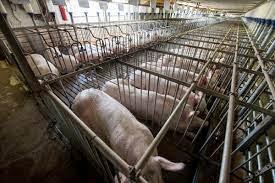 At issue is the effective banning of gestation crates for sows since this system of housing conflicts with the space requirement of 24 square foot of usable floor space with unrestricted movement that can only be provided applying group housing. At issue is the effective banning of gestation crates for sows since this system of housing conflicts with the space requirement of 24 square foot of usable floor space with unrestricted movement that can only be provided applying group housing.
The CDFA requirements for egg-laying hens state, “The enclosure shall allow the egg-laying hen to lie down, stand up, fully extend limbs and turn around freely.” In addition, “The enclosure shall be an indoor or outdoor controlled environment within which hens are free to roam unrestricted.” This provision presumes either barn housing or aviaries and effectively precludes enriched colony modules.
At the present time 34 percent of the national flock has transitioned to housing systems for egg-producing flocks that are compliant with Proposition #12, more than adequate to supply California. The pork industry has attained about 25 percent conversion to group housing of sows and accordingly could provide pork that satisfies California regulations. The U.S. egg industry will not be unduly affected by the outcome of the appeal to SCOTUS irrespective of the ruling. What is more important will be the policies of the major chains, food service providers and ultimately consumers who will have to pay for enhanced welfare.

|
Opposition to California a Minimum Wage Law
|
09/08/2022 |
|
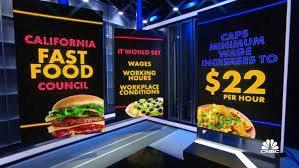
Restaurant operators are reviewing options after Governor Gavin Newsom (D) signed the FAST Act on Labor Day, September 5th following passage by the Legislature on Monday, August 29th. The FAST Act establishes a Council that will determine wage rates that may 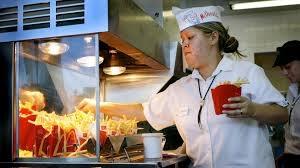 exceed $20 per hour for QSR workers in certain regions of the state. The Council will comprise ten members with representatives of workers, unions, and employers selected by the Governor. The Bill includes a sunset provision for the Council that will take effect in 2028 unless renewed. exceed $20 per hour for QSR workers in certain regions of the state. The Council will comprise ten members with representatives of workers, unions, and employers selected by the Governor. The Bill includes a sunset provision for the Council that will take effect in 2028 unless renewed.
A coalition termed “Protect Neighborhood Restaurants” presumably formed from the California Restaurant Association has proposed a referendum to overturn the law. This will require collection of at least 623,000 valid signatures by December 4th to place the issue on the 2024 ballot. Restaurant interests spent over $1 million on lobbying against the Act resulting in some modifications to the final version including a $22 per hour wage cap.

The Act will have a disproportionately negative effect on chains that own their own locations including Chipotle and Starbucks compared to competitors operating with a franchise model.
If the revocation becomes a Proposition the resulting outlay on advertising to attract support by both organized labor and the restaurant industry may exceed $100 million. About $220 million was expended on Proposition #22 in 2020 involving the employment status of ride-share drivers.

|
Eggs Responsible for SE In Europe; 2015-2019
|
08/30/2022 |
|
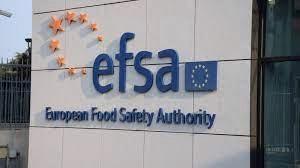 A recent article in the International Journal of Food Microbiology* reviewed available data associated with the incidence of salmonellosis in Europe. The rate remained fairly static from 2015 through 2019 at approximately 20 cases per 100,000 population. A total of 1,508 outbreaks in 34 nations were included in the survey covering the five-year period. Among the geographic regions Europe, Eastern Europe led with 48 percent of outbreaks, Southern Europe, 26 percent, Western Europe 18 percent and Northern Europe 8 percent. A recent article in the International Journal of Food Microbiology* reviewed available data associated with the incidence of salmonellosis in Europe. The rate remained fairly static from 2015 through 2019 at approximately 20 cases per 100,000 population. A total of 1,508 outbreaks in 34 nations were included in the survey covering the five-year period. Among the geographic regions Europe, Eastern Europe led with 48 percent of outbreaks, Southern Europe, 26 percent, Western Europe 18 percent and Northern Europe 8 percent.
Of the outbreaks in which a vehicle of infection could be identified, 33 percent were attributed to eggs, 14 percent to pork and other red meat and 3 percent to chicken and other poultry. Of the isolates that were serotyped, 62 percent were Salmonella Enteritidis. Salmonella Typhimurium represented 11 percent of all isolates from outbreaks with a known source, predominantly from pork.
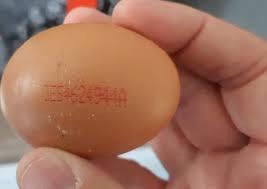 In reviewing the reasons for the high prevalence of SE in Eastern Europe, it is noted that Poland, a large producer and exporter of table eggs, recorded seven percent of layer flocks (169/2,362) as SE positive in 2016. Given that veterinary authorities were negligent in establishing standards for sampling and laboratory examination, the proportion of SE positive layers was probably in excess of the official value. Additional contributory factors affecting the supply chain in Europe include failure to wash eggs in a sanitizer and the absence of refrigeration from pre-packing storage through to point of sale as in the U.S. In reviewing the reasons for the high prevalence of SE in Eastern Europe, it is noted that Poland, a large producer and exporter of table eggs, recorded seven percent of layer flocks (169/2,362) as SE positive in 2016. Given that veterinary authorities were negligent in establishing standards for sampling and laboratory examination, the proportion of SE positive layers was probably in excess of the official value. Additional contributory factors affecting the supply chain in Europe include failure to wash eggs in a sanitizer and the absence of refrigeration from pre-packing storage through to point of sale as in the U.S.
It is also noted that in many nations in Europe, consumption of raw and undercooked eggs is common. This practice, coupled with SE positive flocks, will contribute to outbreaks. Consumption of undercooked eggs was an important risk factor for outbreaks in the U.S. prior to the introduction of EQAPs and then, subsequently, the Final Rule on Salmonella Prevention issued by the FDA in 2009.
*Pinedo, L. C. et al, Sources and Trends of Human Salmonellosis in Europe, 2015-2019: An Analyses of Outbreak Data, International Journal of Food and Microbiology.doi.org/10.1016/j.ijfoodmicro.2022.109850.

|
H5N8 Avian Influenza Diagnosed In Germany
|
08/18/2022 |
|
 On Thursday, August 11th, the authorities in Germany confirmed H5N8 Avian Influenza on an egg production farm in Langwege, in the District of Vechta in the state of Lower Saxony. A total 110,000 egg-producing hens on the farm were depopulated and control measures in accordance with WOAH recommendations were applied. On Thursday, August 11th, the authorities in Germany confirmed H5N8 Avian Influenza on an egg production farm in Langwege, in the District of Vechta in the state of Lower Saxony. A total 110,000 egg-producing hens on the farm were depopulated and control measures in accordance with WOAH recommendations were applied.
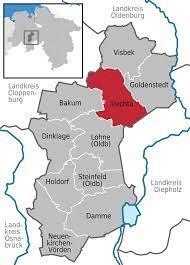
The District of Vechta has a high density of chickens, apparently with 350 farms within a six-mile radius of the index unit. This represents the potential for dissemination of virus and major disruption of the supply chain from farms to packing stations and then onwards to supermarkets.
The H5N8 serovar differs from the H5N1 isolate predominating in previous EU outbreaks and is an indication that AI viruses are circulating in wild but non-migratory birds with serious implications for an area of high poultry density.
Taking an intermediate term view, with HPAI becoming endemic in many regions, non-confined poultry production will be unsustainable without effective vaccines and programs given that avian influenza infection is now the “Newcastle disease of the 2020s”.

|
JUST Egg Claim Over Egg Price Parity Refuted
|
08/18/2022 |
|
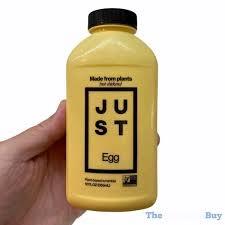
According to an article by Mary Emmon Shoup in the August 15th edition of FOOD Navigator, Josh Tetrick claims that his JUST synthetic vegetable-based product has reached price parity with real eggs. He does not specify the type of egg or the time period for the claimed comparison. In reality the JUST product even at a reduced selling price is three times the cost of liquid from conventional eggs at current prices.
According to the USDA Egg Markets Overview, the national average retail price for the week ending August 12th was $2.14 per dozen for large white-shelled eggs. A dozen, large eggs will yield 22 oz. of liquid at a unit price of 9.7 cents per oz. JUST Egg, at $3.99 for a 12-ounce container has a unit price of 33.3 cents per oz.
 Notwithstanding the price differential JUST Egg has an inferior amino acid profile and vitamin content compared to real eggs that have pristine ‘clean’ labels. Notwithstanding the price differential JUST Egg has an inferior amino acid profile and vitamin content compared to real eggs that have pristine ‘clean’ labels.
Josh Tetrick claims that the reduction in price for JUST Egg substitute is the result of economies of scale and more efficient processing of the mung bean isolate. This may be a valid explanation but previous claims by Tetrick have demonstrated his style of hyperbole. It is questioned whether in fact the lack of demand in an inflationary environment and the consequential need to move more product to offset fixed costs may be the motivation for the price reduction.
Reference to a national retail database shows a 21 percent year-over-year increase in sales for JUST over the past four weeks through multi-channel outlets including club stores and 16 percent for conventional supermarkets and grocery stores. These increases were based on sales of approximately $3.2 million for the four weeks preceding July 7th 2021. For 2022 it is noteworthy that sales demonstrated a plateau during the 1st quarter at $992,000 per month and showed a small decline to $986,000 for the four weeks to July 7th. The JUST product has not demonstrated growth in 2022 and will inevitably follow the classic parabolic demand cycle of a generic product and volume will decline due to consumer fatigue and price inequality with competing alternatives. The reduction in price from $4.55 to $3.99 per 12 oz. container may have some short-term effect on sales but the actual disparity in cost in relation to real eggs will not materially increase sales. This based on the presumption that JUST has a narrow consumer base comprising the affluent who are concerned over welfare and sustainability and are willing to pay for their principles. The majority of price conscious consumers do have calculators.

|
Persistence of H5N1 in Europe
|
07/28/2022 |
|
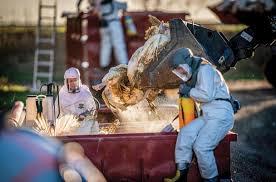 ProMed reported on outbreaks of H5N1 highly pathogenic avian influenza in Poland and Germany during mid-July. The first recent outbreak was confirmed on a farm on Gizyce in the Province of Wielkopolskie in Central Poland. Close to 40,000 birds (type not specified) were depopulated. The case in Germany involved 13,000 geese on a farm in Beverstedt near Cuxhaven in the State of Lower Saxony. ProMed reported on outbreaks of H5N1 highly pathogenic avian influenza in Poland and Germany during mid-July. The first recent outbreak was confirmed on a farm on Gizyce in the Province of Wielkopolskie in Central Poland. Close to 40,000 birds (type not specified) were depopulated. The case in Germany involved 13,000 geese on a farm in Beverstedt near Cuxhaven in the State of Lower Saxony.
The 2021-2022 epornitic now includes 2,398 confirmed outbreaks in commercial poultry resulting in the depopulation of 46 million birds. Diagnostic laboratories have confirmed H5N1 in 2,733 cases involving wild birds in 36 European nations.
It was determined that 86 percent of the outbreaks in commercial poultry were due to farm-to-farm spread. This was especially evident in France that recorded 68 percent of outbreaks and also in Hungary with 24 percent of cases in commercial poultry. Wild bird isolations were most frequently reported by Germany, the Netherlands and the United Kingdom. The fact that there was a negative correlation between the number of wild bird isolates and commercial outbreaks in the same region may relate to selection bias or the intensity of surveillance of wild birds compared to the protective effect of high levels of biosecurity applied to confined commercial flocks. All E.U. H5N1 isolates examined belong to clade 2.3.4.4b and were identical to isolates from wild mammals including foxes in Canada, the U.S. and Japan.
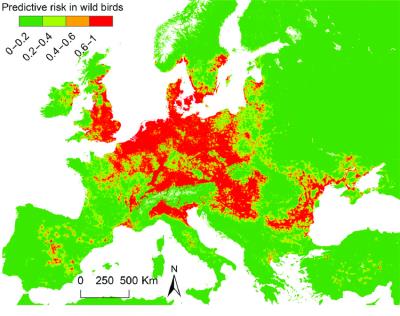 The persistence of H5 avian influenza in Europe and the most recent cases in turkeys in Utah during mid-July suggest dissemination of the virus by domestic wild birds since there is minimal movement of migratory waterfowl at this time. This reality presupposes an alternative to traditional methods of control given that H5 avian influenza is no longer an exotic infection in many countries with intensive poultry populations. Persistence of infection requires a high level of biosecurity guided by evaluations of outbreaks. The application of both classical epidemiology and molecular analysis could identify routes of introduction of virus onto commercial farms. Surveillance of wild birds should now be an ongoing exercise no longer restricted to seasonal evaluation of migratory waterfowl. A range of birds under surveillance should be extended to domestic species. It is evident that highly pathogenic avian influenza and specifically the H5 clade now prevalent on four continents has become the Newcastle disease of 2020’s requiring a different approach to prevention. The persistence of H5 avian influenza in Europe and the most recent cases in turkeys in Utah during mid-July suggest dissemination of the virus by domestic wild birds since there is minimal movement of migratory waterfowl at this time. This reality presupposes an alternative to traditional methods of control given that H5 avian influenza is no longer an exotic infection in many countries with intensive poultry populations. Persistence of infection requires a high level of biosecurity guided by evaluations of outbreaks. The application of both classical epidemiology and molecular analysis could identify routes of introduction of virus onto commercial farms. Surveillance of wild birds should now be an ongoing exercise no longer restricted to seasonal evaluation of migratory waterfowl. A range of birds under surveillance should be extended to domestic species. It is evident that highly pathogenic avian influenza and specifically the H5 clade now prevalent on four continents has become the Newcastle disease of 2020’s requiring a different approach to prevention.

|
Store-Brands Gaining at the Expense of National-Brands
|
07/27/2022 |
|
The recent spike in inflation has increased consumer demand for store-brands according to IRI. Prior to the onset of COVID, store-brands were growing at twice the rate of national-brands. For the four weeks ending July 10th, store-brands represented 21.6 percent of grocery sales. This increase more than compensated for the losses that occurred during the COVID period when consumers preferred national-brands.
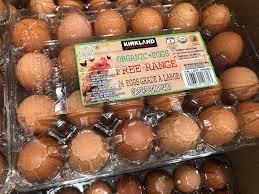
During 2020 and extending into 2021, manufacturers of national-brands were able to maintain volume by reducing the range of products and shoppers were less concerned over price than at present. Since the advent of inflation initiated by COVID spending, subsequent supply-chain disruption and the recent invasion of Ukraine by the Russian Federation, consumer preferences have shifted in favor of lower-priced items. Since there is little difference if any in quality attributes, many consumers will continue to buy store-brands when inflation is anticipated to moderate in the fourth quarter.
A wide range of lower-priced store-brands is now available, especially from the Kroger Company, Walmart, Costco and other big-box club stores and the deep discounters, including Aldi and Lidl. Availability, positioning on shelves, lower prices and equivalent quality are generating loyalty to house-brands. The recent optimistic statements by spokespersons representing major food companies predicting a return to national-brands suggest a measure of concern.

The shift in consumer preference towards house-brands will further reduce the margins generated by the manufacturers of branded products. They will be obliged to cut wholesale prices while facing inflation in raw materials, labor and transport. Concurrently manufacturers of national- brands are under pressure from the major chains. This is evidenced by recent events in the U.K. with disputes between manufacturers such as Kraft-Heinz and major supermarket chains including Tesco. Although this specific dispute was settled, it is presumed to have been to the disadvantage of the manufacturer.

|
FDA Delaying Compliance for Proposed Pre-Harvest Water Rule for Leafy Greens
|
07/24/2022 |
|
It is generally accepted that irrigation water contaminated with Shiga-toxin producing E.coli (STEC) and Salmonella derived from run-off from CAFOs are responsible for outbreaks of foodborne infection of consumers eating leafy greens.
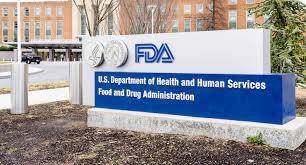 Notwithstanding the epidemiologic realities, FDA has failed to make appropriate changes to the pre- and post-harvest agricultural water requirements in the Produce Safety Rule. The FDA is at fault if, as is stated in their release, that stakeholders "do not have clarity on whether FDA might propose to change the harvest and post-harvest agricultural water requirements." Notwithstanding the epidemiologic realities, FDA has failed to make appropriate changes to the pre- and post-harvest agricultural water requirements in the Produce Safety Rule. The FDA is at fault if, as is stated in their release, that stakeholders "do not have clarity on whether FDA might propose to change the harvest and post-harvest agricultural water requirements."
FDA has proposed to apply enforcement discretion over water requirements relating to the Produce Safety Rule until January 2023 for large businesses and extending to January 2025 for very small businesses. Delay in implementing the Produce Rule with respect to irrigation and 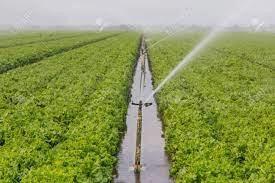 processing water perpetuates the problem of foodborne infection from leafy greens and places consumers and the industry at risk. Requiring producers to conduct annual systems-based agricultural water assessments is self-serving and represents “make-belief “ prevention and will do little to eliminate the problems arising from contamination. processing water perpetuates the problem of foodborne infection from leafy greens and places consumers and the industry at risk. Requiring producers to conduct annual systems-based agricultural water assessments is self-serving and represents “make-belief “ prevention and will do little to eliminate the problems arising from contamination.
The inaction and indecision by FDA is yet another example of why the U.S. needs a dedicated food safety agency.

|
Administration Vacillating Over China Tariffs
|
07/14/2022 |
|
 The Administration has been sending smoke signals regarding rescission of tariffs imposed by the previous Administration on imports from China. There is pressure to lower tariffs on many items to reduce the negative effects of inflation that now have both economic and political repercussions leading into the midterms. Policy advisors within the White House, including the U.S. Trade Representative, wish to retain tariffs as leverage against China in future trade negotiations. The Administration has been sending smoke signals regarding rescission of tariffs imposed by the previous Administration on imports from China. There is pressure to lower tariffs on many items to reduce the negative effects of inflation that now have both economic and political repercussions leading into the midterms. Policy advisors within the White House, including the U.S. Trade Representative, wish to retain tariffs as leverage against China in future trade negotiations.
 Even if tariffs were lowered, this action would have little effect on U.S. exports of agricultural commodities. Grains and soybeans imported by state-owned trading companies in China benefit through exemptions from duty. Even if tariffs were lowered, this action would have little effect on U.S. exports of agricultural commodities. Grains and soybeans imported by state-owned trading companies in China benefit through exemptions from duty.
The agricultural community might experience some relief following a reduction in tariffs through lower prices for imported raw materials used to manufacture crop protection products and components of agricultural machinery.
It would be in the interest of all consumers and the agricultural sector if the Administration could develop and implement a coherent policy on mutually destructive tariffs on goods from China. This would be necessary to provide certainty to facilitate planning and execution of new projects and ongoing operations.

|
SCOTUS Consideration of the Appeal by Pork Producers
|
07/05/2022 |
|
Following the EGG-NEWS Editorial on July 1st concerning the agreement by SCOTUS to hear the petition by the National Pork Producers Council, Drs. Richard J. Sexton and Daniel A. Sumner, at the University of California, Davis provided a copy of their amicus curiae brief. EGG-NEWS is indebted for their submission that was prepared to inform the Court of the economic aspects and implications of Proposition #12, with regard to group housing of sows as mandated by Proposition #12.

Dr. Sexton is a Distinguished Professor of Agricultural and Resource Economics and a Fellow and Past-president of the Agricultural and Applied Economics Association. Dr. Sumner served as a Senior Economist for the President’s Council of Economic Advisors from 1987 to 1988 and was Deputy Assistant Secretary of the USDA from 1990 to 1992. Their research focuses on national and international agricultural economics and policy, and they are well positioned to comment on the costs relating to Proposition #12. A summary of their research on the topic was included in a comprehensive article* that concluded: -
- The additional cost of compliance with Proposition #12 will be insignificant to U.S. pork producers, given that California requires nine percent of U.S. pork with 99 percent supplied by other states. This conclusion is based on the reality that at least 20 percent of sows are group-housed and will be able to supply California without extensive additional capital installations. The authors of both the article and the amicus brief note that California Proposition #12 imposes housing systems for sows that produce a commercial generation supplying pork to the state of California. The regulations do not apply to sows indirectly producing pork supplied to other states.
- It was calculated that the additional cost to comply with California Proposition #12 including increased mortality, lower litter size and both fixed and variable costs would amount to $5 per weanling pig, representing an additional retail value of 3 cents per lb.
- Consumers in California will pay an additional 7.7 percent for pork at retail, amounting to $320 million, annually. The increase in unit price of pork will reduce consumption in California by approximately six percent.
 Drs. Sexton and Sumner note that the analysis submitted by the National Pork Producers Council and the American Farm Bureau Federation, “rests on the unsupported and plainly incorrect assumption that all pork producers nationwide will be forced to comply with Proposition #12 and that the cost of complying with Proposition #12, accordingly, will be passed onto all pork consumers nationwide”. Drs. Sexton and Sumner note that the analysis submitted by the National Pork Producers Council and the American Farm Bureau Federation, “rests on the unsupported and plainly incorrect assumption that all pork producers nationwide will be forced to comply with Proposition #12 and that the cost of complying with Proposition #12, accordingly, will be passed onto all pork consumers nationwide”.
Accordingly Drs. Sexton and Sumner consider that Petitioners’ arguments are flawed and factually implausible, since Proposition #12 will affect only “a discrete subset participants in the North American pork value chain”. The brief by the amici maintains that Proposition #12 does not compel “any actor within the supply chain to convert operations to comply with Proposition #12. The amici concluded that since California will continue to consume pork, “The supply chain must be incentivized through higher prices to supply compliant pork products to the state.”
The amicus brief considers only suppliers to California and consumers in that state. Effectively, passage of Proposition #12 and its implementation has resulted in a number of restaurant chains and retailers requiring suppliers of pork to conform to the requirements of Proposition #12, extending the economic burden of group-housing of sows. This is an aspect of California Proposition #12 that should be evaluated in relation to the claims made by the Petitioners.
In many respects, the situation faced by hog farmers is similar to egg producers with hens confined in conventional cages. Following the passage of Proposition #2 in 2008, investment in conversion to alternative systems, including aviaries and floor units were implemented. As of June 2022 close to a third of hens are now compliant with Proposition #12. Individual states have enacted legislation to ban cages and New England states have passed ballot initiatives similar to California Proposition #12 extending the need to transition from conventional cages. In addition almost all restaurant and retail chains and independents provided assurances in 2020 that all eggs would be sourced from hens held in housing other than conventional cages by 2025. The commitments made under coercion by animal welfare associations appear to be fraying. The obvious implication is that by 2025 a substantial proportion of the U.S. nominal complement of 325 million hens will still be housed in cages allowing choice by consumers based on price in relation to housing.
Although SCOTUS may take into account the economic impact of Proposition #12, the major issue facing the Justices is whether California can impose standards on other states that clearly impede interstate commerce, without any clear justification based on public interest, including but not limited to avian or human health.
*Lee, H., L., Sexton, R. J. and Sumner, D. A. (2021) Vote-approved Proposition to Raise California Pork Prices. ARE Update 24:5-8. University of California, Giannini Foundation of Agricultural Economics.

|
House of Representatives Passes Lower Food and Fuel Cost Act
|
06/20/2022 |
|
 On Thursday, June 16th, the U.S. House of Representatives passed the Lower Food and Fuel Cost Act (PRICISE) by a vote of 221 to 204. This bill includes the Meat and Poultry Special Investigator Act that is intended to create a mechanism to review and possibly manipulate prices paid to farmers for cattle. The creation of an office headed by a political appointee obviously duplicates provisions of the Stockyards and Packers Act. The PRECISE Act is intended to enhance precision agriculture and support row crop farmers facing high prices for fertilizer. The Year-Round Fuel Choice Act will expand sales of E-15 gasoline blend through funding required infrastructure including storage tanks and mixer-dispensers at gas stations. On Thursday, June 16th, the U.S. House of Representatives passed the Lower Food and Fuel Cost Act (PRICISE) by a vote of 221 to 204. This bill includes the Meat and Poultry Special Investigator Act that is intended to create a mechanism to review and possibly manipulate prices paid to farmers for cattle. The creation of an office headed by a political appointee obviously duplicates provisions of the Stockyards and Packers Act. The PRECISE Act is intended to enhance precision agriculture and support row crop farmers facing high prices for fertilizer. The Year-Round Fuel Choice Act will expand sales of E-15 gasoline blend through funding required infrastructure including storage tanks and mixer-dispensers at gas stations.
The Legislation as passed by the House has limited support in the Senate and is intended primarily as a showpiece to create the illusion that the House is addressing problems of inflation. Recent increases in the price of crude oil and natural gas are mainly responsible for inflation in food and all items that have a large cost component of energy. This reality is affecting all nations of the world and is not restricted to the U.S.
Inflation is endemic in many nations in Latin America due to fiscal mismanagement. The advent of COVID introduced disruptions in supply chains adding to the cost of imports to industrialized nations. The situation is now exacerbated following the invasion of Ukraine by the Russian Federation causing sharp increases in the cost of energy and grains.
There are no "quick-fixes" to a problem that is not the responsibility of any specific political party or their legislative agenda. The question that faces the U.S. is whether the action by the Federal Reserve Board can reduce inflation without precipitating a recession, as predicted by some economists.
The House voted on the package of measures based on party affiliation in addition to narrow parochial issues. These included the environment and the need to support production and uptake of biofuels at the expense of all those using either fuel or food. Both ethanol and biodiesel are inherently inflationary without direct benefits to the economy or the environment.
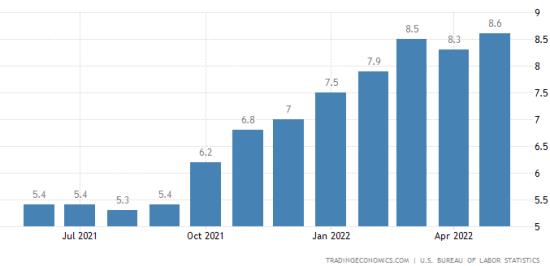
The biofuels program has long since exceeded the reason for its existence as the U.S. is no longer reliant on unfriendly nations for either gas or crude oil. The biofuels program now supports row crop farmers, the ethanol industry, soybean crushers and corn-state legislators to the detriment of consumers. “Feel-good” legislation such as the PRECISE Act will do little to alleviate inflation in fuel, food and other goods and in the doubtful event of passage in the Senate will have unintended consequences. Prices will decline as the current high cost of energy results in lower demand and increased output restoring equilibrium.

|
Senators Encouraged Solicitor General To Advocate Before The U.S. Supreme Court Over Proposition #12.
|
06/10/2022 |
|
The United States Supreme Court will hear an appeal based on California Proposition #12 at some time in Ocober. Lower courts have ruled that Proposition #12 is constitutional, despite the fact that there is concern that it conflicts with the Dormant Commerce Clause. Proposition #12 is opposed by twenty state governments and the majority of associations representing agriculture.
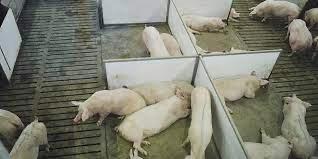
Senators Diane Feinstein (D-CA); Alex Padilla (D-CA) and Corey Booker (D-NJ) with 13 other members of the Senate requested that Solicitor General Elizabeth Prelogar support California Proposition #12 by submitting a brief and presenting oral testimony. Other senators supporting the request for the Solicitor General to advance the constitutionality of Proposition #12 represent states that have enacted laws paralleling California statutes, including Michigan, Illinois, and New England states.
The senators urged the Solicitor General in their communication “to support California Proposition #12 that is intended to prevent animal cruelty, protect the health and safety of California consumers and decrease the risk of foodborne illness”. The letter continued, “We believe that the previous Administration’s position on Proposition #12 was based on a misconception of the law.” In the event the Solicitor General will present the Government case supporting Proposition #12.
The Supreme Court will not consider the justification for the ballot initiative and should exclude any considerations of welfare or foodborne disease. Their consideration will be confined to constitutional issues. The overriding question is whether California can impose state standards of management on producers in other states thereby impeding interstate commerce.
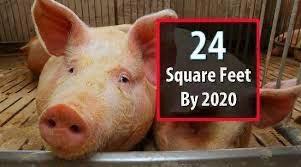 The claims regarding stocking density for poultry, breeding sows and veal calves have no direct or scientifically supportable association with foodborne infection. The Proposition and subsequent legislation can be regarded as a contrived justification to protect producers in California from competition. California consumes 13 percent of the nation’s domestic pork but houses 0.2 percent of breeding sows, suggesting an extremely one-sided approach to imposing welfare standards. The claims regarding stocking density for poultry, breeding sows and veal calves have no direct or scientifically supportable association with foodborne infection. The Proposition and subsequent legislation can be regarded as a contrived justification to protect producers in California from competition. California consumes 13 percent of the nation’s domestic pork but houses 0.2 percent of breeding sows, suggesting an extremely one-sided approach to imposing welfare standards.
Proponents of Proposition #12 and the resulting restrictive legislation are relying on the original invalid contention by the HSUS, advanced to sway voters in 2008 that confined herds or flocks are more liable to be infected with foodborne pathogens than animals allowed space requirements consistent with Propositions #2 and #12.
The restrictions imposed by Proposition #12 when enacted will obviously impact the hog industry, since the practice of confining sows to relatively small crates, hardly larger than the animal, during gestation will require investment in alternative facilities to allow 24 square feet of floor area. At the present time, approximately 25 percent of sows are managed under group housing, demonstrating that it is possible, albeit with greater care and capital expenditure to operate the system.
With respect to egg production, the requirements for California are currently satisfied by domestic producers who have invested in non-confinement following Proposition #2 in 2008. If the Supreme Court rules that Proposition #12 is unconstitutional, further conversion to other than conventional cages or enriched modules will cease and laws similar to Proposition #12 in the New England states will also be invalid wsith respect to eggs introduced from other states. In specific states where confinement laws were enacted producers will be obliged to conform but will be vulnerable to the introduction of eggs from non-compliant states. It is doubtful whether revocation of confinement laws will take place in states where legislation has been passed banning conventional cages.
There is concern that if Proposition #12 is declared unconstitutional, there will be unintended consequences affecting interstate trade and the ability of states to effectively control interstate transmission of the diseases of plants and animals.
Irrespective of the outcome, Proposition #2 and its successor, Proposition #12 represented an indirect tax on consumers based on the higher price of eggs and animal protein.

|
USDA To Top Up HPAI Funding By $400 Million
|
06/03/2022 |
|
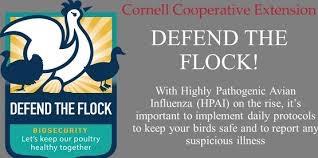 On May 31st, the USDA announced that it would assign an additional $400 million to pay for control of Highly Pathogenic Avian Influenza (HPAI), including compensation for owners of close to 39 million birds depleted during the 2022 epornitic. Funding will be derived from the Commodity Credit Corporation and will represent the third tranche following $393 million in the second allocation. On May 31st, the USDA announced that it would assign an additional $400 million to pay for control of Highly Pathogenic Avian Influenza (HPAI), including compensation for owners of close to 39 million birds depleted during the 2022 epornitic. Funding will be derived from the Commodity Credit Corporation and will represent the third tranche following $393 million in the second allocation.
During February and March EGG-NEWS advocated for APHIS to provide poultry producers with preliminary guidance based on an initial epidemiologic evaluation of outbreaks. It is evident to poultry health professionals that the epidemiology of the 2022 epornitic including shedding by wild birds, timing and distribution of outbreaks along the four flyways, the occurrence of the infection in backyard flocks differed from 2015. A preliminary opinion in early April may well have prevented some outbreaks, especially among the more expensive and cases involving egg production complexes. Information on the mode of spread would have been beneficial to producers of commercial turkeys in Minnesota, Iowa and the Dakotas.
 Advice on prevention, provided by APHIS, was no different from the basic biosecurity recommendations developed during and subsequent to the 1984 and 2015 epornitics. Surely, initial evaluation based on real-time assessment of risks of introduction of the 2022 H5N1 strain and application of molecular epidemiology could have indicated specific changes required to enhance biosecurity and reduce the number of outbreaks. If APHIS lacked epidemiologists and qualified poultry health professionals, then they should have outsourced investigations to the faculty at Land Grant universities in the affected states. Advice on prevention, provided by APHIS, was no different from the basic biosecurity recommendations developed during and subsequent to the 1984 and 2015 epornitics. Surely, initial evaluation based on real-time assessment of risks of introduction of the 2022 H5N1 strain and application of molecular epidemiology could have indicated specific changes required to enhance biosecurity and reduce the number of outbreaks. If APHIS lacked epidemiologists and qualified poultry health professionals, then they should have outsourced investigations to the faculty at Land Grant universities in the affected states.
Requests were made to the USDA-APHIS during mid-April for an opinion on the mode of introduction onto farms. This should have resulted in relevant guidance as a realistic response. An interim report would have been more valuable at the time than a more comprehensive document in 2023.
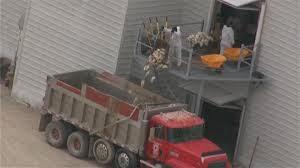 It is apparent that Highly Pathogenic Avian Influenza can be regarded as seasonally endemic given the role of migratory birds. Eradication based on the incorrect presumption that HPAI is an exotic infection will only lead to a repetition of the mass depopulations of 2015 and 2022. It is apparent that Highly Pathogenic Avian Influenza can be regarded as seasonally endemic given the role of migratory birds. Eradication based on the incorrect presumption that HPAI is an exotic infection will only lead to a repetition of the mass depopulations of 2015 and 2022.
The industry urgently requires epidemiologic evaluation of the 2022 epornitic with comparisons to the 2015 outbreak. The Industry deserves an analysis of any deficiencies in biosecurity based on molecular biology and traditional case-controlled studies. This will allow the U.S. industry to be more prepared for a subsequent inevitable outbreak.

|
Abbott Nutrition Executives Should Face Criminal Penalties Over Contamination of Infant Formula
|
05/24/2022 |
|
 Following a preliminary investigation following the inspection of the Abbott nutrition plant in Sturgis, MI., the U.S. Department of Justice has filed a complaint on behalf of the Food and Drug Administration alleging that products were adulterated. The legal definition of "adulterated" includes the presence of any poisonous or deleterious substance which may render injurious to health or a product prepared, packed or held under insanitary conditions whereby it may have become contaminated or rendered injurious to health". Following a preliminary investigation following the inspection of the Abbott nutrition plant in Sturgis, MI., the U.S. Department of Justice has filed a complaint on behalf of the Food and Drug Administration alleging that products were adulterated. The legal definition of "adulterated" includes the presence of any poisonous or deleterious substance which may render injurious to health or a product prepared, packed or held under insanitary conditions whereby it may have become contaminated or rendered injurious to health".
Based on a review by William Marler, a prominent plaintiff's attorney specializing in foodborne infection, Abbott in agreeing to a Consent Decree has effectively admitted liability. On his law- firm website, Marler posted the 2021 inspection report, the document prepared by the Whistleblower as submitted to the FDA in October 2021, the Department of Justice Complaint and the Consent Decree.
 To support a felony violation, the Department of Justice would have to demonstrate that the adulteration occurred with intent to defraud or mislead by placing a food product in interstate commerce. A misdemeanor violation would involve negligence through failure to prevent adulteration but does not require proof of fraudulent intent or willful conduct. To support a felony violation, the Department of Justice would have to demonstrate that the adulteration occurred with intent to defraud or mislead by placing a food product in interstate commerce. A misdemeanor violation would involve negligence through failure to prevent adulteration but does not require proof of fraudulent intent or willful conduct.
Marler makes the case that any producer of food should face penalties for marketing adulterated food whether willfully or not, a position endorsed by EGG-NEWS. Penalties for both misdemeanors and felonies include substantial fines and the possibility of incarceration.
The responsibility of owners or executive management involved in foodborne outbreaks is exemplified by long prison terms handed down to the Parnell Brothers following the extensive outbreak of salmonellosis in 2009. Their company, The Peanut Corporation of America was responsible for 714 cases, 172 hospitalizations and nine fatalities. Paul Kruse then the CEO and majority shareholder of Blue Bell Creameries is under indictment for his actions in an outbreak of listeriosis in 2017. In both instances there were allegations of concealment of results of assays and falsification of records. Despite a self-exculpatory article in the Washington Post, Abbott Laboratories Chairman and CEO, Robert Ford will be subject to DOJ investigation with the inevitable questions of “what did he know and when did he know it”
The bar for CEOs and senior management of food companies is much higher since passage of the FDA Food Safety Modernization Act. In addition to civil penalties imposed by the DOJ and civil lawsuits executive officers now face criminal action with even misdemeanor violations carrying the threat of incarceration.

|
Inflation is Changing Purchasing Patterns of Consumers
|
05/11/2022 |
|
As the Nation emerges from COVID restrictions consumers are unable to revert to previous purchase patterns. The emergence of inflation has changed the allocation of family budgets and is creating a new concern for value and restraint of indulgence.
First Insight a market evaluation enterprise recently published The State of Consumer Spending: Inflation Impacting Consumer Confidence. Close to 75 percent of shoppers surveyed were less inclined to spend money without carefully evaluating their intended expenditure. Almost half now actively seek sales or deals. Forty percent are conforming to budgets and a quarter of respondents are shopping in bulk stores or warehouse clubs. The report showed that 80 percent of consumers are seeking less-expensive products to stretch budgets.
>
Those surveyed consider groceries their most important priority with a 53 percent weighting. Nearly half of respondents were concerned over the cost of vehicle fuel followed by housing at 30 percent and healthcare at 20 percent. Consumers are reducing expenditure on home décor, gym memberships, both popular during COVID restrictions although there is pent-up demand for travel among the affluent.
 Approximately half of consumers surveyed indicated that they would reduce expenditure on dining out and a third will restrict entertainment and travel. National brands will be displaced by lower priced alternatives. Industry observers make reference to trends seen during the Great Recession with a downward move in protein from beef to pork and then to chicken with eggs emerging as an inexpensive source of balanced protein served at home over more mealtimes. Approximately half of consumers surveyed indicated that they would reduce expenditure on dining out and a third will restrict entertainment and travel. National brands will be displaced by lower priced alternatives. Industry observers make reference to trends seen during the Great Recession with a downward move in protein from beef to pork and then to chicken with eggs emerging as an inexpensive source of balanced protein served at home over more mealtimes.
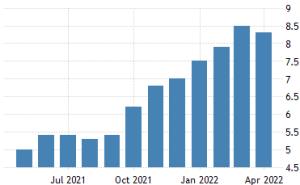 Deep discount grocery chains and club stores will benefit from emerging frugality among consumers. Increased sales of lower priced house brands will be at the expense of nationally advertised products. Traditional supermarkets will have to reduce SKUs and offer more private label and generic products to retain price-conscious consumers. Even if the economy does not spiral into a recession, consumers in a post-COVID environment will develop a level of thrift, reevaluating their respective needs and wants and will exercise greater concern for their future financial well-being. Deep discount grocery chains and club stores will benefit from emerging frugality among consumers. Increased sales of lower priced house brands will be at the expense of nationally advertised products. Traditional supermarkets will have to reduce SKUs and offer more private label and generic products to retain price-conscious consumers. Even if the economy does not spiral into a recession, consumers in a post-COVID environment will develop a level of thrift, reevaluating their respective needs and wants and will exercise greater concern for their future financial well-being.

|
Misperceptions and Myths Motivating Control of COVID in China Have Implications for the U.S.
|
05/05/2022 |
|
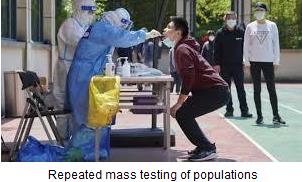 It is evident that China, the origin of COVID in 2019, despite initial claims, has been unsuccessful in suppressing and certainly not eradicating COVID. Currently, central government policy appears to run counter to approaches adopted in the E.U. and the U.S. Myths that pervade policy include:- It is evident that China, the origin of COVID in 2019, despite initial claims, has been unsuccessful in suppressing and certainly not eradicating COVID. Currently, central government policy appears to run counter to approaches adopted in the E.U. and the U.S. Myths that pervade policy include:-
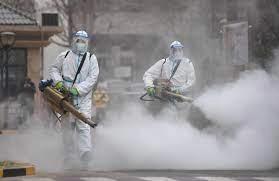
- COVID is introduced into the nation on packaging material on food products. The World Health Organization has presented evidence to show that there is no risk associated with contamination of either outer or inner packaging material for imported food. It is evident that authorities in China have used this unsubstantiated route of introduction as an excuse for emerging incident cases. This has implications for exporters of poultry and red meat products to China.
- Mass disinfection of streets, buildings and even air is effective in destroying virus. Since the advent of COVID, China has deployed armies of Tyvek™-clad workers brandishing disinfectant sprayers and has deployed trucks with atomizers. The Center for Disease Control and Prevention estimate that a contact surface contaminated with SARS-COV-2 virus has less than a 1-in-10,000 probability of causing an infection. The actions by authorities in China are simply an exercise in disease-theater, devoid of any practical benefit.
- Mass testing and home detention will reduce incidence rate of COVID to zero. Draconian restrictions have featured during the past two months, especially in major cities. These measures designed to achieve an unattainably low incidence are futile. Clearly, confining populations to apartments and locking down entire neighborhoods is not achieving any positive result but has led to misery, lack of productivity and is clearly impacting the economy of China.
China deployed a decidedly ineffective vaccine and failed to promote immunization of the elderly in an orderly and systematic way. This has led to a dangerous level of susceptibility in the population that is now confronted with highly infectious Omicron variants of SARS-COV-2 virus.
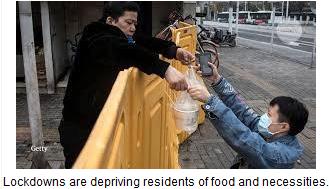 Implications are self-evident. Supply chain problems in the U.S. and the E.U. will intensify as ports in China work at less than optimal level. Food consumption in China will fall, reducing imports of corn, soybeans and pork. Factory output, especially of critical components, will affect all industrialized nations trading with China. Implications are self-evident. Supply chain problems in the U.S. and the E.U. will intensify as ports in China work at less than optimal level. Food consumption in China will fall, reducing imports of corn, soybeans and pork. Factory output, especially of critical components, will affect all industrialized nations trading with China.
Most of the policy aimed at either controlling COVID or the oft-imposed alternative of suppression of fact and distortion of statistics is designed to create a false sense of stability and prosperity, adding to a sense of national pride. This approach is considered necessary as a prerequisite for the unprecedented election of President Xi Jinping to a third term at the National Conference of the Communist Party of China to be held during the second quarter of 2022.

|
Adverse and Erroneous Publicity Over Single Alleged Case Of HPAI
|
05/01/2022 |
|
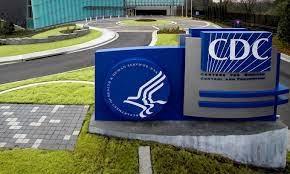 According to the CDC, an extensive program of surveillance of workers involved in depleting flocks infected with the H5N1strain of HPAI yielded a single human case. This event has elicited an inordinate amount of media attention. The American Egg Board has been tracking print, broadcast TV and social media since the onset of the outbreak and as of the beginning of the last week of April was essentially a non-issue. Political events, inflation, the war in Ukraine, the fluctuating stock market and trivia such as the Johnny Depp trial have dominated the media. Mention of HPAI has concentrated on turkeys and to a lesser extent on broilers. According to the CDC, an extensive program of surveillance of workers involved in depleting flocks infected with the H5N1strain of HPAI yielded a single human case. This event has elicited an inordinate amount of media attention. The American Egg Board has been tracking print, broadcast TV and social media since the onset of the outbreak and as of the beginning of the last week of April was essentially a non-issue. Political events, inflation, the war in Ukraine, the fluctuating stock market and trivia such as the Johnny Depp trial have dominated the media. Mention of HPAI has concentrated on turkeys and to a lesser extent on broilers.
The picture may have now changed with the report emanating from the CDC that has been misinterpreted and taken out of proportion. The facts are that a prisoner in an institution in Colorado was employed to handle chickens from a flock that had been euthanized as a result of contracting HPAI. Whether as a diagnostic procedure or routine surveillance, a nasal swab from the individual yielded nucleic acid indicative of H5 influenza virus, presumably on PCR assay. This does not mean that the subject was in fact infected with the avian strain virus. A PCR procedure would provide a positive result denoting the presence of virus in the nasal passages if inhaled on dust. To establish a diagnosis of avian influenza, it would be necessary to demonstrate the presence of viral nucleic acid over a sequence of days and also demonstrate subsequent seroconversion. The individual did not display any clinical signs including elevated temperature that could be associated with influenza other than fatigue that is a complaint and not necessarily a symptom.
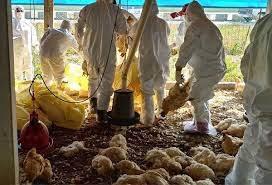 USDA-APHIS has conducted surveillance on workers involved in handling dead birds during the 2022 epornitic and there have been no reports of positive nasal swabs from approximately 25,000 examined. It is difficult to understand how only one individual out of a large population demonstrated the presence of avian influenza nucleic acid in a nasal swab. This may have been a false positive or alternatively failure by the worker to consistently wear a respirator as issued to all farm workers. In reality, the headlines emblazoned across articles and on websites should have read “24,900 exposed workers negative on nasal swab PCR!” USDA-APHIS has conducted surveillance on workers involved in handling dead birds during the 2022 epornitic and there have been no reports of positive nasal swabs from approximately 25,000 examined. It is difficult to understand how only one individual out of a large population demonstrated the presence of avian influenza nucleic acid in a nasal swab. This may have been a false positive or alternatively failure by the worker to consistently wear a respirator as issued to all farm workers. In reality, the headlines emblazoned across articles and on websites should have read “24,900 exposed workers negative on nasal swab PCR!”
A number of the reports, all short on detail, invoked the single case of HPAI H5N1 diagnosed in a senior in the U.K. According to relatives, after he was transported to a hospital, 18 ducks were removed from his home and he was known to have fed and cared for free-roaming waterfowl in his garden and village that died of H5N1 HPAI. In this case, an initial upper respiratory tract swab was obtained on December 24th 2021 that tested positive for influenza A subtype H5. This result was reproduced on two successive swabs collected during following days confirming viral replication in the upper respiratory tract. During this time the patient was asymptomatic and after isolated observation returned to his home, fortuitously cleaned by neighbors and family members. In commenting on the case, Dr. Isabel Oliver, Chief Scientific Officer at the U.K. Health Security Agency, stated, “Currently there is no evidence that this strain detected in the U.K. can spread from person to person” She added “We have followed up all of this individual’s contacts and have not identified any onward spread.” The U.K. Chief Veterinary Officer of the U.K., Dr. Christine Middlemiss, stated, “While Avian Influenza is highly contagious in birds, this is a very rare event and it’s very specific to the circumstances on this premises.”
It is indeed unfortunate that journalists and bloggers are either unable through lack of scientific comprehension or are otherwise disinclined to review and evaluate circumstances, simply publish and amplify events without providing perspective. Regrettably some industry-oriented websites have afforded the CDC release inordinate coverage. Thankfully we still have Johnny Depp.

|
World Faces Unprecedented Food Crisis
|
04/27/2022 |
|
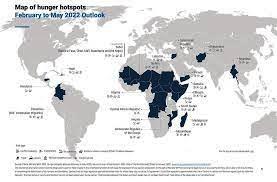 The impending food crisis that will impact nations with deficient domestic production will become evident during the second half of this year. Food insecurity was a dominating theme at the April meeting of finance ministers including representation from the International Monetary Fund and the World Bank. The need to deliver food to needy populations is more urgent after the Russian invasion of Ukraine and disruptions of Black Sea shipping. The impending food crisis that will impact nations with deficient domestic production will become evident during the second half of this year. Food insecurity was a dominating theme at the April meeting of finance ministers including representation from the International Monetary Fund and the World Bank. The need to deliver food to needy populations is more urgent after the Russian invasion of Ukraine and disruptions of Black Sea shipping.
The U.S. delegation led by secretary of the treasury Janet Yellen proposed practical preemptive measures including revocation of export restrictions, abolishing price controls and subsidizing production in developing nations. The World Bank will provide $17 billion over the next two years to improve food supplies especially in middle-income nations. It is estimated that malnutrition could affect as many as 15 million in 2023 and the situation may deteriorate further unless the war in Ukraine is ended.
The fact that Russia and Ukraine collectively are responsible for supplying wheat to Middle East and North African nations among others creates concern for regional stability. Nations relying on supplies from Eastern Europe are having difficulty in substituting alternative suppliers over the short. Production costs in North American and the E.U. move sharply upwards following increases in the prices of energy, fertilizer and transport.
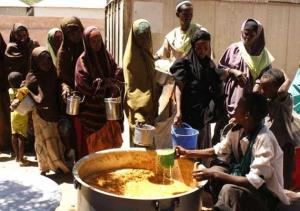
CoBank with an involvement in agriculture in the U.S. predicts higher commodity prices driven by energy that will persist through 2023 and will threaten a recession. The World will be more reliant on efficient agricultural nations including Brazil, the U.S. and Canada for grains, oilseed and animal protein.
Concern over global warming and environmental degradation will take a back seat in the short term to optimizing food production, irrespective of the ultimate costs. Eventually industrialized nations will have resume progress in substitution of energy derived from fossil fuel. Solar, wind and nuclear power generation require additional capital investment and government support. Unrealistic restrictions on productivity must be deferred until the present crisis is resolved.

|
No Security Benefits From Texas Border Action in April
|
04/27/2022 |
|
Previously, CHICK-NEWS reported on the negative effects resulting from the action conducted by the Texas Department of Public Safety that resulted in considerable congestion in transiting border points of entry from Mexico into Texas. According to a report in the Texas Tribune, the program failed to find drugs, weapons, illegal immigrants or contraband.

From April 8th to April 16th, state troopers inspected 4,100 semis but did identify defects in vehicles including underinflated tires, defective turn signals and oil leaks that resulted in 345 citations for violations.
A spokesperson for the Texas Department of Public Safety attributes the failure to apprehend contraband or illegal immigrants to the diligence of the Customs and Border Patrol (CBP) personnel performing their normal duties. The U.S. CBP can process vehicles with a usual wait time of 20 minutes. The action ordered by Governor Greg Abbott resulted in delays exceeding 24 hours at seven commercial bridges linking Texas with the states of Chihuahua, Coahuila, Nuevo Leon and Tamaulipas. The action that resulted in considerable loss of produce and other disruptions for U.S. industries did result in agreements between four state governors and the State of Texas to increase security.

It is noted that trade between Mexico and the U.S. exceeded $56 billion in February with the seven international entry points responsible for 65 percent of total freight between the U.S. and Mexico. The U.S. egg production industry is dependent on road transport for exports to Mexico and is impacted by border delays and closures.
The action by Governor Abbott considered as “political theatre” did not achieve any practical benefit to security but incurred a high cost to the state of Texas and U.S. truckers, importers, distributors and manufacturers.

|
Injudicious Action by Texas Governor Impedes Vehicle Movement at Southern Border
|
04/15/2022 |
|
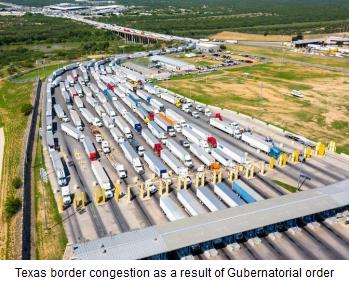 Governor Greg Abbott issued a directive on Wednesday, April 6th for the Texas State Highway Patrol to inspect all vehicles entering the state from Mexico, apparently to interdict movement of illegal aliens and contraband. Governor Greg Abbott issued a directive on Wednesday, April 6th for the Texas State Highway Patrol to inspect all vehicles entering the state from Mexico, apparently to interdict movement of illegal aliens and contraband.
The edict, although intended to engender political support for his reelection obviously backfired. Despite rapid processing of vehicles by U.S. Customs and Border Protection, day-long delays werecaused by the inefficient and unnecessary inspection by the State of Texas.
At the El Paso international crossing between 2,500 and 3,000 trucks pass between Ciudad, Juarez, and El Paso daily. Trade between Mexico and Texas is estimated at $450 billion in 2021. Mexico is a key supplier of components for automobiles, machinery, electric equipment, and produce. Delays at the border have repercussions throughout the U.S. depriving customers of products from Mexico required in Michigan and Tennessee
A spokesperson for the Texas International Produce Association stated that trucks crossing at the Pharr International Bridge resulted in delays idling warehouses on the U.S. side of the border..
Despite the announced intent to interdict smuggling of humans and contraband, the highway patrol is carrying out 45 minute mechanical inspections of vehicles refuting the intention of the gubernatorial order.
If the example of political theater continues for an extended period cross border traffic will be diverted to neighboring states, depriving Texas of jobs and revenue and indirectly eroding political goodwill for the governor for his third term.
U.S. representatives Henry Cuellar (D-TX) and Vincente Gonzalez (D-TX) condemned the action of the Governor as “impractical and detrimental to the state economy”.
Ermilo Richer, operator of a trucking company in Laredo, noted “We definitely need to make sure Washington figures out how to keep Title 42 open, but control immigration. However, we need Governor Abbott to make the right calls and not affect a community that’s got nothing to do with immigration.” Representative Gonzalez was joined by logistics companies in calling for the Governor to rescind his action and restore normal operations along the southern border. Delays resulted in protests by truckers that accentuated delays and exacerbated the effect of the injudicious action by Gov. Abbott.
|
 |
Following meetings with the Governors of the States of Chihuahua, Coahuila and Nuevo Leon and signing of memorandums of agreement, border crossings are returning to normal although the Laredo point of entry is still congested in the absence of an agreement with the State of Tamaulipas. The long Easter weekend only complicated trans-border traffic.
Gov. Abbott announced an end to the double inspection on April 18th but noted that the program could be restored at any time depending on illegal entry of aliens
|
|
‘Political Theater’ to generate support for an incumbent can have far-reaching repercussions and predictable additional costs imposed on consumers. This is especially eggregious during a time of high inflation partly caused by supply-chain disruption.
|

|
Desirability and Constitutionality Of Local Food Acts Questioned
|
03/29/2022 |
|
 Over the past four years a series of laws have either been proposed of enacted in various states permitting homeowners to prepare foods for sale without state licenses or inspection. In April 2021, Montana adopted the Local Food Choice Act. This legislation “allows for the sale and consumption of homemade food and food products and to encourage the expansion of agricultural sales by ranches, farms and home-based producers and the accessibility of homemade food and food products to informed end-consumers”. The law has now been challenged by the Senior Public Health Sanitarian for the Montana Department of Health and Human Services, serving as the plaintiff pro se. Over the past four years a series of laws have either been proposed of enacted in various states permitting homeowners to prepare foods for sale without state licenses or inspection. In April 2021, Montana adopted the Local Food Choice Act. This legislation “allows for the sale and consumption of homemade food and food products and to encourage the expansion of agricultural sales by ranches, farms and home-based producers and the accessibility of homemade food and food products to informed end-consumers”. The law has now been challenged by the Senior Public Health Sanitarian for the Montana Department of Health and Human Services, serving as the plaintiff pro se.
At issue is the fact that the law does not distinguish between interstate and intrastate commerce, rendering the Act void. The Act fails to provide equal consumer protection for high-risk foods. The law does, however, exclude meat that is still subject to the Montana federally-sanctioned inspection program.
 Various state laws permitting sale of non-inspected home foods and raw milk and overturning mandatory vaccination against childhood diseases conflict with accepted standards of hygiene. Injudicious legislation enacted in pursuit of ‘freedom’ is the direct extension of a mindset rejecting reasonable and scientifically proven measures to promote public health. A reversion to 19th century approaches to food safety is extensively promoted and funded by extreme conservative and libertarian advocates. Various state laws permitting sale of non-inspected home foods and raw milk and overturning mandatory vaccination against childhood diseases conflict with accepted standards of hygiene. Injudicious legislation enacted in pursuit of ‘freedom’ is the direct extension of a mindset rejecting reasonable and scientifically proven measures to promote public health. A reversion to 19th century approaches to food safety is extensively promoted and funded by extreme conservative and libertarian advocates.
Adoption of laws that permit and promote the sale of uninspected food and non-pasteurized milk will have deleterious effects on public health and ultimately will add to medical costs and place an additional burden on society.

|
Outside Access for Organic Flocks Modified After Emergence of HPAI
|
03/27/2022 |
|
A USDA-AMS memorandum originally issued in January 2011 and re-circulated in April 2017, permits temporary confinement for flocks producing under the Organic Certified Program. The original memorandum under signature of Miles V. McEvoy, Deputy Administrator of the USDA, notes, “Temporary confinement may be appropriate under certain conditions such as when low or highly pathogenic avian influenza is detected in an area. Organic poultry maybe confined on a temporary basis in areas in proximity to low or highly pathogenic avian influenza findings. Temporary confinement can be done without compromising the organic status of the certified operation under these conditions.”
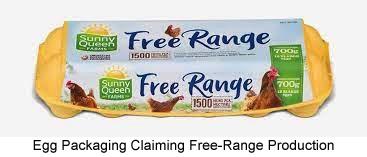 The memorandum was re-issued by USDA-AMS on March 25th under the heading, “Allowed Actions To Respond To Risks From Highly Pathogenic Avian Influenza”. Confinement is a necessary precaution to prevent exposure to AI virus shed by waterfowl currently migrating along the Atlantic and Mississippi flyways. Risk of outdoor exposure is evidenced by the number of backyard flocks that have been confirmed as infected with the high probability of other flocks that were exposed and never diagnosed. The memorandum was re-issued by USDA-AMS on March 25th under the heading, “Allowed Actions To Respond To Risks From Highly Pathogenic Avian Influenza”. Confinement is a necessary precaution to prevent exposure to AI virus shed by waterfowl currently migrating along the Atlantic and Mississippi flyways. Risk of outdoor exposure is evidenced by the number of backyard flocks that have been confirmed as infected with the high probability of other flocks that were exposed and never diagnosed.
The status of flocks producing eggs that are advertised and sold as “pasture raised” or “free-range” with images or text on cartons, represents a different situation. It will not be long before an enterprising lawyer brings a class action lawsuit against one or more producers or marketers of eggs claiming deceptive advertising if flocks do not have free access outside barns.
As noted in the March 25th edition of EGG-NEWS, cage-free-flocks in the U.K. have been confined to barns since November and their eggs can no longer be marketed as “free-range”. Notices to this effect are displayed in stores at point-of-sale, although it is unknown whether retailers have reduced shelf prices. Members of the U.K Free-Range Egg Producers’ Association are requesting higher prices from retailers claiming an “imminent implosion” of their segment of the egg industry. Unfortunately prices are established by supply and demand in free-market economies and not by entreaties. The danger to producers of these high-priced eggs is that consumers will find that there is no difference in perceived quality between free-range and barn eggs and will be disinclined to pay a large differential for a housing system when free-range eggs once more become available in the U.K.
If U.S. producers hold hens in barns and claim “free-range” or “pasture-raised” status, action by the FTC or lawsuits should be expected, especially if barn-confinement extends over months as is anticipated.

|
Pork Check-off Rate Reduced
|
03/21/2022 |
|
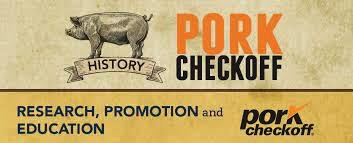 At a meeting of the Pork Forum in Louisville, KY., delegates voted 94 percent to reduce the pork check-off rate from $0.40 to $0.35 per $100 value effective January 1st 2023. The resolution followed a recommendation from the Pork Industry Vision Task Force representing the National Pork Board and the National Pork Producers’ Council that was convened to revise the structure of pork promotion. Recommendations approved by the Vision Task Force included:- At a meeting of the Pork Forum in Louisville, KY., delegates voted 94 percent to reduce the pork check-off rate from $0.40 to $0.35 per $100 value effective January 1st 2023. The resolution followed a recommendation from the Pork Industry Vision Task Force representing the National Pork Board and the National Pork Producers’ Council that was convened to revise the structure of pork promotion. Recommendations approved by the Vision Task Force included:-
- Creating a joint Producer-Led working group of state leaders
- Forming a new joint-industry task force to review issues and opportunities
- Promoting efficient and effective methods of promotion that optimize funding
According to the release, Gene Noem president of the National Pork Board stated, “Producers have told industry leadership they expect us to be efficient and strategic with their dollars.” He added, “These resolutions reflect a desire to more responsive to the industry needs and challenges and to present a more unified and consistent voice across the industry.” Perhaps more efficient and productive use of check-off funds could include termination of successive non-winnable lawsuits opposing California Proposition #12 and encourage their members to move towards group housing of sows before they run out of customers.
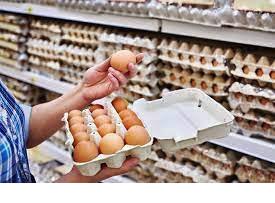 The decision by pork producers may have implication for other commodity boards including the American Egg Board. More than a decade ago, producers voted against an increase in the check-off rate for eggs. Since this time, the American Egg Board has demonstrated competence and professionalism in the three-fold mission of research, promotion and consumer education. The AEB overhead is constrained and allocation of resources to activities appears to be appropriate to the challenges presented by an inflationary economy, fluctuating wholesale prices, relatively static demand and above all the effects of COVID over the past two years. Prospects for an increase in the check-off rate are remote despite the increased margins during the present quarter compared to previous years. There appears to be no immediate prospect of an increase in the check-off rate unless the AEB can develop programs that significantly improve egg consumption. Over the past decade there have been only incremental increases on an annual basis. An argument could be made that in the absence of the activities of the AEB egg consumption may have in fact fallen reflecting competition from alternative foods and substitutes. The decision by pork producers may have implication for other commodity boards including the American Egg Board. More than a decade ago, producers voted against an increase in the check-off rate for eggs. Since this time, the American Egg Board has demonstrated competence and professionalism in the three-fold mission of research, promotion and consumer education. The AEB overhead is constrained and allocation of resources to activities appears to be appropriate to the challenges presented by an inflationary economy, fluctuating wholesale prices, relatively static demand and above all the effects of COVID over the past two years. Prospects for an increase in the check-off rate are remote despite the increased margins during the present quarter compared to previous years. There appears to be no immediate prospect of an increase in the check-off rate unless the AEB can develop programs that significantly improve egg consumption. Over the past decade there have been only incremental increases on an annual basis. An argument could be made that in the absence of the activities of the AEB egg consumption may have in fact fallen reflecting competition from alternative foods and substitutes.

|
U.S. Egg Industry Urgently Requires Guidance from APHIS on Risk Factors for HPAI
|
03/17/2022 |
|
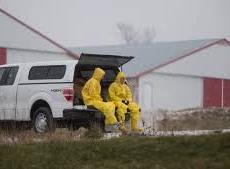 Since the first outbreak of H5N1 strain highly pathogenic avian influenza was diagnosed on a farm in New Castle County, DE on February 22nd, losses as a result of four outbreaks among commercial egg production farms have amounted to close to 5.6 million hens and 265,000 pullets. The most recent outbreak, involving three million hens in Jefferson Country, WI. confirmed on March 14th came as a shock, since the pattern of cases is reminiscent of the early weeks of the Spring 2015 epornitic. Since this unprecedented loss of flocks, our industry has invested in both structural and operational biosecurity that we presume will be effective in preventing introduction of virus onto farms. Since the first outbreak of H5N1 strain highly pathogenic avian influenza was diagnosed on a farm in New Castle County, DE on February 22nd, losses as a result of four outbreaks among commercial egg production farms have amounted to close to 5.6 million hens and 265,000 pullets. The most recent outbreak, involving three million hens in Jefferson Country, WI. confirmed on March 14th came as a shock, since the pattern of cases is reminiscent of the early weeks of the Spring 2015 epornitic. Since this unprecedented loss of flocks, our industry has invested in both structural and operational biosecurity that we presume will be effective in preventing introduction of virus onto farms.
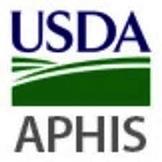 Following outbreaks of exotic diseases including END and HPAI, the USDA-APHIS publishes reports dealing with risk factors, causation and control measures. At the AEB-UEP listening session on HPAI held on March 15th, Dr. Koren Custer discussed aspects of her Agency response to infection and depletion. In her response to questions she noted the routine evaluation of risk factors possibly contributing to an outbreak using preliminary epidemiologic questionnaires. Following outbreaks of exotic diseases including END and HPAI, the USDA-APHIS publishes reports dealing with risk factors, causation and control measures. At the AEB-UEP listening session on HPAI held on March 15th, Dr. Koren Custer discussed aspects of her Agency response to infection and depletion. In her response to questions she noted the routine evaluation of risk factors possibly contributing to an outbreak using preliminary epidemiologic questionnaires.
The industry needs to know the nature of factors contributing to outbreaks in the five egg industry cases. This information is required as soon as possible since corrective action can be taken to resolve any deficiencies in biosecurity that have emerged relevant to the 2022 outbreaks. An initial best-judgement professional opinion in late March would be infinitely more useful than a more comprehensive review with statistical analysis in 2024. What the industry urgently needs is guidance from APHIS based on an initial epidemiologic evaluation of cirumstances leading to HPAI in the affected complexes.
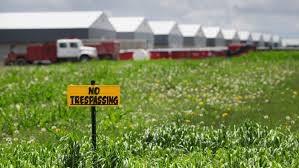 USDA-APHIS is urged to review the questionnaires with specific reference to egg production units that have represented the major losses to date in terms of bird numbers and financial impact. Considered observations based on experience and training that identify deficiencies in biosecurity or epidemiologic factors that may have emerged since the 2015 epornitic will provide valuable guidance for the industry and may avert future outbreaks in the immediate term. USDA-APHIS is urged to review the questionnaires with specific reference to egg production units that have represented the major losses to date in terms of bird numbers and financial impact. Considered observations based on experience and training that identify deficiencies in biosecurity or epidemiologic factors that may have emerged since the 2015 epornitic will provide valuable guidance for the industry and may avert future outbreaks in the immediate term.

|
United Nations Climate Report Includes Dire Warnings on Global Warming
|
03/04/2022 |
|
 The United Nations Intergovernmental Panel on Climate Change (IPCC) released a report on the effects of increasing global temperature on February 28th. The document was co-authored by 270 scientists and climatologists. Global temperatures are now 2.2 F higher than during pre-industrial times creating changes that are stressing ecosystems. These include wetlands, rainforest, Polar regions and coral reefs. The United Nations Intergovernmental Panel on Climate Change (IPCC) released a report on the effects of increasing global temperature on February 28th. The document was co-authored by 270 scientists and climatologists. Global temperatures are now 2.2 F higher than during pre-industrial times creating changes that are stressing ecosystems. These include wetlands, rainforest, Polar regions and coral reefs.
The report follows an August 2021 release documenting rising sea levels, severe storms and higher ambient temperatures worldwide. The report confirms the movement of animals and plant species towards the poles, bleaching of coral reefs, forest fires and thawing of permafrost and drying of peat lands that serve as a carbon dioxide sink. Ocean warming and acidification are affecting sea fishing and aquaculture and there is evidence that populations are already being displaced creating the potential for conflict.
 Assuming that nations comply with the targets established at the 2021 U.N. climate meeting in Glasgow, Scotland, up to three billion of the world’s population could face water scarcity before the turn of the century. Islands will disappear and food insecurity will expand especially in the Southern Hemisphere. Approximately one billion people will exposed to flooding and there will be adverse health effects from environmental extremes and the emergence of insect borne diseases. Up to 100 million of the world population might be forced into poverty during the next two decades. Assuming that nations comply with the targets established at the 2021 U.N. climate meeting in Glasgow, Scotland, up to three billion of the world’s population could face water scarcity before the turn of the century. Islands will disappear and food insecurity will expand especially in the Southern Hemisphere. Approximately one billion people will exposed to flooding and there will be adverse health effects from environmental extremes and the emergence of insect borne diseases. Up to 100 million of the world population might be forced into poverty during the next two decades.
A report to be released in April will consider the effects of reducing emissions contributing to climate change. Understanding the effects of global warming and acidification of our oceans will provide a blueprint for corrective action to avert extreme changes that will most certainly degrade the quality of life for our children and grandchildren.
Unfortunately the current situation in Ukraine suggests continued use of fossil fuels with enhanced uncertainty over the safety of nuclear generation of energy in the face of hostile military action. Regrettably a Black Swan event for stabilizing climate change.

|
Census Bureau Data Quantifies Poverty and Hunger in the U.S.
|
02/27/2022 |
|
 The Household Pulse Survey, an ongoing program of the U.S. Census Bureau conducted during the period January 26th through February 7th, 2020 disclosed widespread food scarcity and housing insecurity in homes with young children. Highlights of the survey included:- The Household Pulse Survey, an ongoing program of the U.S. Census Bureau conducted during the period January 26th through February 7th, 2020 disclosed widespread food scarcity and housing insecurity in homes with young children. Highlights of the survey included:-
- Approximately 42 percent of adults living in homes with children under five years of age were unable to work due to a lack of child-care, inability to pay for the service or concerns over safety. This finding directly relates to the inability of QSRs and other employers to recruit and retain unskilled single mothers suggesting the need for more extensive programs of childcare and related feeding and medical resources in inner cities.
- Of adults living in households with children receiving food assistance over the seven-day period preceding the survey, 21 percent were unable to pay utility bills in full during the previous twelve months.
- Ten percent of adults living in homes with children experienced food scarcity during the seven days preceding the survey.
 Seven percent of adults are not current on either rent or mortgage payment and are unaware how they will be able to make the next remittance. Seven percent of adults are not current on either rent or mortgage payment and are unaware how they will be able to make the next remittance.
- Approximately one-third of adults living in households with young children are not current on rent or mortgage and anticipate eviction or foreclosure in the proximal two months.
- Approximately one-third of adults living in households with children under five years of age experienced difficulties in paying households expenses.
It is evident that support programs at the federal and state levels should be refined to address specific needs of recipients. Mechanisms should be developed to uplift potentially productive workers from poverty and to break the cycle of successive generations of dependency.

|
Value of COVID Vaccination
|
02/24/2022 |
|
The Centers for Disease Control and Prevention has released data on U.S. COVID incidence and hospitalization rates for vaccinated and non-vaccinated segments of the population over the past three months.
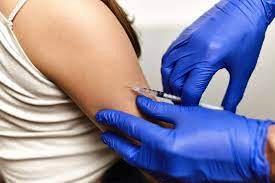 The age-adjusted rolling 14-day cumulative rates clearly demonstrate the protective effect of a comprehensive (two-doses plus booster) regimen even against exposure to the highly infectious Omicron variant. The age-adjusted rolling 14-day cumulative rates clearly demonstrate the protective effect of a comprehensive (two-doses plus booster) regimen even against exposure to the highly infectious Omicron variant.
EGG-NEWS emphasizes previously expressed opposition to vaccine mandates. These solidify and intensify opposition to vaccination among non-recipients comprising 25 percent of our population. Perhaps skeptics could review data and decide whether the risk, consequences and expense of contracting COVID is worth the personal satisfaction of being a libertarian denier of both the infection and the availability of protection. COVID is a public health problem, neither the infection nor voluntary vaccination should be political or freedom issues.

|
Self-Serving Survey by Stop Foodborne Illness
|
02/06/2022 |
|
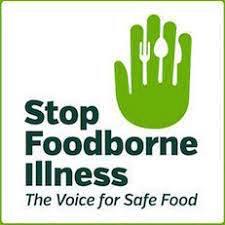 Activist organization Stop Foodborne Illness (STOP) recently conducted, a poll which purported to show that 86 percent of 1,000 registered voters supported a prohibition on selling ‘products with the potential to cause disease’. Activist organization Stop Foodborne Illness (STOP) recently conducted, a poll which purported to show that 86 percent of 1,000 registered voters supported a prohibition on selling ‘products with the potential to cause disease’.
The result is not surprising given the question that rises to the level of surveying seven- year olds as to whether they are in favor of ice cream. What is surprising is that 14 percent of those surveyed apparently were indifferent concerning the sale of products failing to meet safety standards.
It would appear that activist organizations have found a new champion in USDA Secretary Tom Vilsack who has initiated reviews on Salmonella contamination of poultry given that this supports his agenda of opposing intensive livestock production. The Federal government is conveniently sidestepping E.coli (STEC) infections, listeriosis and salmonellosis associated with fruit, leafy greens, dairy products, and imported foods that fall under the jurisdiction of the FDA.
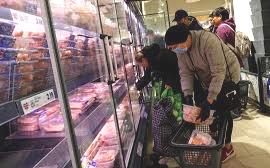 When technologies such as irradiation are advanced as effective, nondestructive and innocuous methods of destroying bacterial infection of foods, STOP and other activists groups oppose absolute kill-steps but continue to demand pristine food products without beneficial additives. When technologies such as irradiation are advanced as effective, nondestructive and innocuous methods of destroying bacterial infection of foods, STOP and other activists groups oppose absolute kill-steps but continue to demand pristine food products without beneficial additives.
The USDA has successfully promoted hygienic preparation, storage, and cooking of food both at the domestic and institutional levels to prevent foodborne bacterial infections. Contemplated and draconian measures to demand food products of animal origin that are free of all Salmonella irrespective of pathogenicity without employing a range of advanced technologies will be impossible. Knee-jerk regulations and unattainable standards will disrupt food supply to the detriment of processors and consumers.

|
February is Heart Health Month
|
02/01/2022 |
|
 Although the risk of cardiovascular disease due to dietary intake of cholesterol from consumption of eggs is now a discredited theory it is appropriate to revisit the issue during February, designated as “Heart Health Month” By President Lyndon B. Johnson in 1964. Although the risk of cardiovascular disease due to dietary intake of cholesterol from consumption of eggs is now a discredited theory it is appropriate to revisit the issue during February, designated as “Heart Health Month” By President Lyndon B. Johnson in 1964.
 Dr. Mickey Rubin summarized relevant peer-reviewed literature in July 2020. It is worthwhile revisiting his article available on the Egg Nutrition Center website www.eggnutritioncenter.org. The Summary of this scholarly article is reproduced but industry professionals are urged to read the article in entirety. Dr. Mickey Rubin summarized relevant peer-reviewed literature in July 2020. It is worthwhile revisiting his article available on the Egg Nutrition Center website www.eggnutritioncenter.org. The Summary of this scholarly article is reproduced but industry professionals are urged to read the article in entirety.
The science on dietary cholesterol and eggs continues to grow and demonstrates that eggs are an important part of healthy dietary patterns across the lifespan. Overall, these data support the value of eggs as a nutrient dense food within healthy dietary patterns. As a good or excellent source of eight essential nutrients including choline, six grams of high quality protein, 252 mcg of the carotenoids lutein and zeaxanthin, the 70 calories of an egg can be viewed as so much more than just a source of dietary cholesterol.

|
Walmart Invests in Indoor Vertical Produce Farming
|
01/30/2022 |
|
 A January 25th article by Amy Sowder in The Packer confirms that Walmart has invested in Plenty Unlimited Inc., a San Francisco enterprise involved in indoor vertical farming of produce. The long-term agreement provides Walmart with the opportunity to stock leafy greens for California stores that will be grown in a proposed indoor farm in Compton, CA. A January 25th article by Amy Sowder in The Packer confirms that Walmart has invested in Plenty Unlimited Inc., a San Francisco enterprise involved in indoor vertical farming of produce. The long-term agreement provides Walmart with the opportunity to stock leafy greens for California stores that will be grown in a proposed indoor farm in Compton, CA.
According to the article, Charles Redfield, U.S. Chief Merchandising Officer for Walmart stated, "we believe Plenty is a proven leader in a new era of agriculture that offers pesticide free, peak-flavor produce to shoppers every day of the year". He added, "this partnership not only accelerates agricultural innovation but reinforces our commitment to sustainability by delivering a new category of fresh that is good for people and the planet".
Plenty holds a range of engineering and software patents, and their technology incorporates efficient use of water and land. By locating units in close proximity to centers of population density, transportation and waste can be minimized.
 Arama Kukutai, CEO of Plenty stated, "our farms can be sited anywhere allowing us to put fresh fruits, greens and vegetables on shelves that all times at speed for maximum freshness". According to The Packer, Plenty operates a research facility in Laramie, WY. in addition to the farm in Compton under construction. Arama Kukutai, CEO of Plenty stated, "our farms can be sited anywhere allowing us to put fresh fruits, greens and vegetables on shelves that all times at speed for maximum freshness". According to The Packer, Plenty operates a research facility in Laramie, WY. in addition to the farm in Compton under construction.
In recent years, the leafy greens industry has faced problems arising from outbreaks of STEC and Salmonella infection as a result of contaminated irrigation water. In the absence of a positive kill step during packing, the measures adopted by growers of the Yuma Valley of Arizona and in the Central Valley of California will not assure consumers that products are free of potentially pathogenic bacteria.
Intensive vertical farming could represent a game changer providing cost is comparable with conventional cultivation given escalation in labor and transport together with restrictions on the availability of water in western states. Obviously, Walmart is putting a toe in the water and their experience with Plenty will soon be paralleled by other supermarket chains. If financially and technically superior to conventional cultivation, a higher proportion of leafy greens and other produce maybe derived from intensive facilities paralleling developments in the commercial egg-production industry.

|
Protection from COVID Vaccination Confirmed
|
01/20/2022 |
|
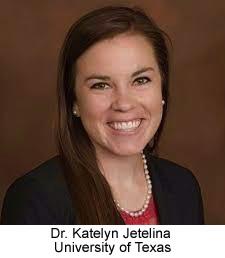 On January 18th Dr. Katelyn Jetelina, Ph.D, MPH, affiliated with the University of Texas Health Science Center, documented in her authoritative website Your Local Epidemiologist that vaccination protects against severe consequences arising from COVID infection. She cited data from the U.K., Switzerland and the U.S. to demonstrate the benefit of immunization. From May through December 2021, critical care admissions to ICU wards in England, Wales and Northern Ireland attained 40.9 cases per 100,000 population among the 60 to 69-year age group. Comparative figures for double-vaccinated patients of the same range in ages was 0.7 per 100,000 and for those receiving a booster, 0.4 per 100,000 population. The hospital admission rate for those in the 30 to 39-age group was 1.6 per 100,000 in the non-vaccinated cases compared to 0.1 per 100,000 in the double- vaccinated category. On January 18th Dr. Katelyn Jetelina, Ph.D, MPH, affiliated with the University of Texas Health Science Center, documented in her authoritative website Your Local Epidemiologist that vaccination protects against severe consequences arising from COVID infection. She cited data from the U.K., Switzerland and the U.S. to demonstrate the benefit of immunization. From May through December 2021, critical care admissions to ICU wards in England, Wales and Northern Ireland attained 40.9 cases per 100,000 population among the 60 to 69-year age group. Comparative figures for double-vaccinated patients of the same range in ages was 0.7 per 100,000 and for those receiving a booster, 0.4 per 100,000 population. The hospital admission rate for those in the 30 to 39-age group was 1.6 per 100,000 in the non-vaccinated cases compared to 0.1 per 100,000 in the double- vaccinated category.
As of January 1st the death rate among non-vaccinated people in Switzerland was 16 per 100,000 for all age groups. The corresponding figure for fully vaccinated (2 doses) was 2 per 100,000 and for those receiving a booster approximately 0.2 per 100,000.
 In Oregon, the unvaccinated case rate during the first week of January was 2,250 per 100,000. The corresponding figure for breakthrough cases among double-vaccinated individuals was 480 per 100,000. In Oregon, the unvaccinated case rate during the first week of January was 2,250 per 100,000. The corresponding figure for breakthrough cases among double-vaccinated individuals was 480 per 100,000.
Current incidence rates suggest that the Omicron wave has plateaued and is declining in many areas of the nation that showed widespread infection in November 2021. Dr. Jetelina provided a cautionary note, "there will be the same number of new infections on the way down as there were on the way up and hospitalizations and deaths will follow". 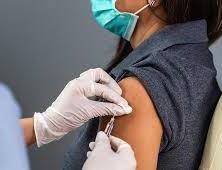 The conclusion from data presented on her website is that vaccines continue to provide protection against clinical infection requiring hospitalization and ICU care. To reduce the impact of COVID on society and the economy, public health measures are required over and above vaccination including masking and avoiding large concentrations of people in confined areas, especially with suboptimal ventilation. These precautions are also appropriate in some U.S. counties with low vaccination compliance. In rural Georgia 25% of the population is vaccinated contributing to an increasing incidence rate especially for gatherings that promote transmission of SARS-CoV-2, with the Omicron variant now responsible for 99 percent of new cases. The conclusion from data presented on her website is that vaccines continue to provide protection against clinical infection requiring hospitalization and ICU care. To reduce the impact of COVID on society and the economy, public health measures are required over and above vaccination including masking and avoiding large concentrations of people in confined areas, especially with suboptimal ventilation. These precautions are also appropriate in some U.S. counties with low vaccination compliance. In rural Georgia 25% of the population is vaccinated contributing to an increasing incidence rate especially for gatherings that promote transmission of SARS-CoV-2, with the Omicron variant now responsible for 99 percent of new cases.

|
Impact of Escalation in Fertilizer and Other Farm Costs
|
01/17/2022 |
|
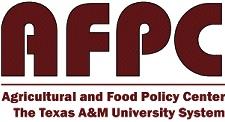 The Agriculture and Food Policy Center (AFPC) of the Texas A&M University System recently published a report entitled Economic Impact of Higher Fertilizer Prices on AFPC Representative Crop Farms. The Center evaluated the effect of higher fertilizer prices on 64 representative crop farms located in the Southeast, Southwest, Pacific, Midwest and High Plains states. The Agriculture and Food Policy Center (AFPC) of the Texas A&M University System recently published a report entitled Economic Impact of Higher Fertilizer Prices on AFPC Representative Crop Farms. The Center evaluated the effect of higher fertilizer prices on 64 representative crop farms located in the Southeast, Southwest, Pacific, Midwest and High Plains states.
It was determined that producers of feed grains would incur an average additional cost of $128,000 per farm with a mean of 3,178 acres under cultivation assuming incremental fertilizer cost will exceeding $40 per acre. Some farmers growing rice and cotton will incur higher per-acre costs. 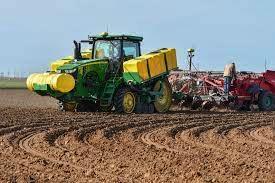 The Report concluded “Given that the farm safety net is not designed to address rapidly rising costs of production, there are growing concerns in the countryside about the need for additional assistance.” The Report concluded “Given that the farm safety net is not designed to address rapidly rising costs of production, there are growing concerns in the countryside about the need for additional assistance.”
The fertilizer supply situation has been exacerbated by the invasion of Ukraine by the Russian Federation. Production of fertilizer and its components in Ukraine have been impacted by the war. Exports from Russia are subject to sanctions and restrictions.
The price of corn and soybeans, the major determinants of margins for eggs and poultry meat, are set by supply and demand. This prevents farmers from simply passing on additional costs to livestock and poultry producers. Anticipated subsidies for row-crop farmers will ultimately be inflationary and add to the national debt. Indirectly all taxpayers and our succeeding generations will contribute to the escalation in crop inputs including fertilizer.

|
FSIS Report on Inhumane Handling at Red Meat Establishments-Implications for USDA Support of “Small Abattoirs”
|
01/11/2022 |
|
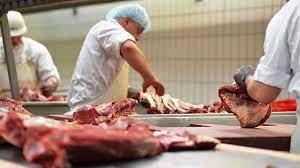 On January 5th the Food Safety and Inspection Service (FSIS) issued a list of 50 enforcement actions against establishments that were in violation of the Humane Methods of Slaughter Act during 2021. All but three of the citations were for small-scale meat packing establishments, lockers or plants using ritual slaughter and one meat laboratory operated by a Land Grant University. Three large plants received citations for violations involving improper supervision during stunning of hogs. On January 5th the Food Safety and Inspection Service (FSIS) issued a list of 50 enforcement actions against establishments that were in violation of the Humane Methods of Slaughter Act during 2021. All but three of the citations were for small-scale meat packing establishments, lockers or plants using ritual slaughter and one meat laboratory operated by a Land Grant University. Three large plants received citations for violations involving improper supervision during stunning of hogs.
 The 47 other citations resulting in suspension of operations involved egregious deviation from accepted practices for stunning mature cattle, calves or hogs. Problems identified by FSIS inspectors included inappropriate equipment, lack of training and supervision and non-compliance with standard procedures resulting in extreme cruelty. The 47 other citations resulting in suspension of operations involved egregious deviation from accepted practices for stunning mature cattle, calves or hogs. Problems identified by FSIS inspectors included inappropriate equipment, lack of training and supervision and non-compliance with standard procedures resulting in extreme cruelty.
The problem of inappropriate stunning and slaughter of livestock in small abattoirs should be considered in the context of the USDA program to expand processing of red meat. Attempts to reduce the dominance of the four major meat packers will require considerable expenditure of public funds. This will inevitably be associated with unintended consequences. It is hoped that in planning for the proposed expansion of facilities that the various agencies within the USDA will coordinate their activities to ensure that standards of buildings, equipment, training of personnel and inspection match existing large plants as the program, stated to cost $1 billion is implemented.

|
Minnesota Legislators Question Mayo Clinic Policy on COVID Vaccination
|
01/03/2022 |
|
 A group of 38 legislators representing one party in the Minnesota Legislature addressed a letter to the management of the Mayo Clinic questioning the necessity of a COVID vaccination mandate. In response, the Mayo Clinic that has vaccinated 99 percent of employees in all positions noted:- A group of 38 legislators representing one party in the Minnesota Legislature addressed a letter to the management of the Mayo Clinic questioning the necessity of a COVID vaccination mandate. In response, the Mayo Clinic that has vaccinated 99 percent of employees in all positions noted:-
“Beyond the ability to require vaccination, Mayo Clinic has a moral imperative to do so. Our staff provide care to transplant patients, cancer patients, immunocompromised patients, and some of the most medically vulnerable people in the world. These patients deserve the safety of vaccinated staff to care for them during a global pandemic. Mayo Clinic requires vaccination of our staff because it is the right thing to do for our patients and our community. Our vaccine requirement reflects the best available science.” The response also noted that the Mayo Clinic grants exemptions from the requirements in accordance with law.
The response by the Mayo Clinic to legislators encapsulates justification for requiring, but not mandating vaccination by management of enterprises where large numbers of workers are required to function in close proximity.
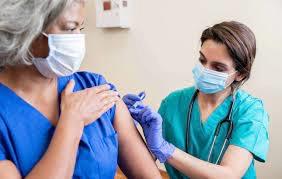 It is emphasized that EGG-NEWS is not in favor of mandates. Those who wish to protect themselves, their families and their communities have in all probability received COVID vaccines. Of a sample of non-vaccinated respondents to a recent survey, 48 percent indicated that nothing would convince them to be vaccinated. Mandates only make martyrs of the ill- informed and the intransigent. It is emphasized that EGG-NEWS is not in favor of mandates. Those who wish to protect themselves, their families and their communities have in all probability received COVID vaccines. Of a sample of non-vaccinated respondents to a recent survey, 48 percent indicated that nothing would convince them to be vaccinated. Mandates only make martyrs of the ill- informed and the intransigent.
Incentives, as offered by many retailers and food producing companies, including Tyson Foods, are more productive. Some companies have adopted both a carrot and stick requiring non vaccinated employees to be tested at regular intervals at their own expense thereby imposing a financial burden on noncompliance. Given the emergence of the Omicron variant of SARS-CoV-2, responsible for higher rates of infection, the need to vaccinate as high a proportion of the population as possible is self-evident. Although breakthrough infections occur following complete vaccination (a course of two priming mRNA vaccines followed by a third booster) clinical effects are mild with a low probability of hospitalization. Those admitted to hospitals and ICU wards and fatalities from COVID are overwhelmingly among the non-vaccinated with a ten-fold probability of admission and a seventeen-fold risk of death.
At the end of the day, COVID is a public health situation and is not a political issue.

|
FDA Approves Drug Treatment for COVID
|
12/30/2021 |
|
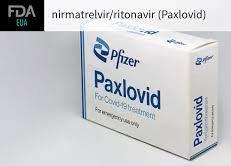 On December 22nd the Food and Drug Administration approved Paxlovid™ to treat early cases of COVID. The regimen comprises two tablets of inmatrelvir an antiviral and one tablet of ritonavir that serves as potentiator. The three pills are taken together twice daily for up to five consecutive days. The cost of treatment is $530 per patient. This obviously compares unfavorably with a protective series of three mRNA vaccines at approximately $20 each. Pfizer will be able to make available sufficient doses to treat 65,000 patients immediately with 200,000 treatment courses during January 2022. It is emphasized that Paxlovid is for treatment of clinical cases of COVID and is not a preventive drug. On December 22nd the Food and Drug Administration approved Paxlovid™ to treat early cases of COVID. The regimen comprises two tablets of inmatrelvir an antiviral and one tablet of ritonavir that serves as potentiator. The three pills are taken together twice daily for up to five consecutive days. The cost of treatment is $530 per patient. This obviously compares unfavorably with a protective series of three mRNA vaccines at approximately $20 each. Pfizer will be able to make available sufficient doses to treat 65,000 patients immediately with 200,000 treatment courses during January 2022. It is emphasized that Paxlovid is for treatment of clinical cases of COVID and is not a preventive drug.
With this FDA approval, non-vaccinated patients facing hospitalization and possible intubation in an ICU ward will have available a scientifically proven treatment. This will obviate the demands and threats by both patients and relatives for physicians to administer inappropriate and in some cases deleterious drugs including ivermectin a veterinary anti-parasitic and the now discredited hydoxychloroquine, a drug to prevent malaria as a therapeutic agent.
 Although cases of COVID are surging in the U.S. due to the introduction of the Omicron variant, hospitalization rates are not increasing in direct proportion, attributed to the reality that Omicron may be less pathogenic than the Delta variant that previously predominated in the U.S. Unfortunately additional cases due to the more infectious Omicron variant of SARS-CoV-2 will translate eventually into higher hospital admissions but not necessarily fatalities. The approval of Paxlovid™ and other drugs to follow will allow for home treatment and presumably reduce the demand for admissions to hospitals that currently are close to maximum capacity. Although cases of COVID are surging in the U.S. due to the introduction of the Omicron variant, hospitalization rates are not increasing in direct proportion, attributed to the reality that Omicron may be less pathogenic than the Delta variant that previously predominated in the U.S. Unfortunately additional cases due to the more infectious Omicron variant of SARS-CoV-2 will translate eventually into higher hospital admissions but not necessarily fatalities. The approval of Paxlovid™ and other drugs to follow will allow for home treatment and presumably reduce the demand for admissions to hospitals that currently are close to maximum capacity.
EGG-NEWS urges those not yet vaccinated to receive a protective series and to exercise commonsense procedures to avoid infection. For those who have received the third booster dose, masking in public, testing in the event of symptoms or before travel, are recommended by public health authorities. We must as a Nation raise the level of population immunity to suppress COVID and restore our economy and pre-COVID way of life.

|
Seaboard Foods to Withdraw from California Market
|
12/28/2021 |
|
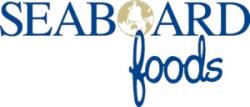 Following the implementation of California Proposition #12, Seaboard Foods will no longer be in a position to supply pork products to the state since the Company will not comply with space requirements that would prevent the use of gestation crates. Seaboard Foods produces 7.2 million hogs annually. California represents 15 percent of total U.S. pork consumption according to the National Pork Producers Council. Members of meat-producing organizations maintain “it would cost pork producers billions of dollars to convert (breeding) barns to meet Proposition#12 standards.” Following the implementation of California Proposition #12, Seaboard Foods will no longer be in a position to supply pork products to the state since the Company will not comply with space requirements that would prevent the use of gestation crates. Seaboard Foods produces 7.2 million hogs annually. California represents 15 percent of total U.S. pork consumption according to the National Pork Producers Council. Members of meat-producing organizations maintain “it would cost pork producers billions of dollars to convert (breeding) barns to meet Proposition#12 standards.”
In a related announcement, Hormel Foods Corporation will fully comply with the law having initiated conversion of gestation stalls to group housing a number of years ago in a structured program of transition. Previously Smithfield Foods and Tyson Foods announced changes in their housing and management in anticipation of Proposition #12 and similar state laws and regulations.
It is a matter of record that the U.S. egg industry has converted close to one-third of production from conventional cages to alternative systems and has complied with both California Proposition #2 enacted in 2008 and California Proposition #12 adopted in 2018.
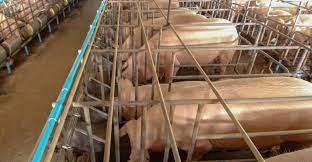 To date challenges to Proposition #12 have been turned down by courts that have rejected the contention that regulations framed in terms of Proposition #12 violate the Interstate Commerce Clause. The Ninth Circuit rejected challenges by the North American Meat Institute in October 2020 and litigation initiated by the National Pork Producers Council and the American Farm Bureau litigation at the end of July 2021. To date challenges to Proposition #12 have been turned down by courts that have rejected the contention that regulations framed in terms of Proposition #12 violate the Interstate Commerce Clause. The Ninth Circuit rejected challenges by the North American Meat Institute in October 2020 and litigation initiated by the National Pork Producers Council and the American Farm Bureau litigation at the end of July 2021.
Some industry organizations intend to appeal to the U.S. Supreme Court and have attempted to revive the dubious King Amendment intended to enjoin any state from restricting methods of livestock production. A proposed bill entitled Exposing Agriculture Trade Suppression Act (EATS) is unlikely to be enacted given conflicts with the Clean Air Act, the Clean Water Act and existing welfare legislation in states.
The pork industry should recognize that with respect to gestation crates, the train has long since left the station. Customers including major QSR and restaurant chains have already decided where and how their money will be spent and both legal and lobbying efforts to turn back the clock will be unsuccessful especially in the age of YouTube and the internet. Perhaps some institutional shareholders of Seaboard representing 18 percent of the equity will question the wisdom of the response to California Proposition #12. Given the 78 percent insider shareholding the Board considers that the Company is immune from criticism or that it can afford to forgo the market in California and many other states with similar legislation pending. Or maybe they are unfamiliar with King Canute.

|
Is the FDA Sidestepping the Health Implications of of Irrigated Produce?
|
12/12/2021 |
|
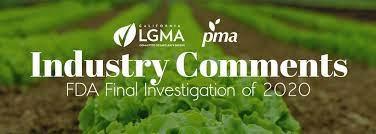 Forced to confront widespread annual outbreaks of foodborne infection associated with leafy greens grown in the Yuma Valley of Arizona and the Imperial Valley of California, the FDA mandated regular assay of irrigation water for the presence of pathogens. These included E.coli O:157 and Salmonella derived from the runoff from CAFOs entering irrigation canals. Growers complained that the testing protocol was expensive and inconvenient. Forced to confront widespread annual outbreaks of foodborne infection associated with leafy greens grown in the Yuma Valley of Arizona and the Imperial Valley of California, the FDA mandated regular assay of irrigation water for the presence of pathogens. These included E.coli O:157 and Salmonella derived from the runoff from CAFOs entering irrigation canals. Growers complained that the testing protocol was expensive and inconvenient.
According to Frank Yiannas, Deputy Commissioner for Food Policy and Response of the FDA, the Agency will develop a new rule based on an annual assessment of risks with implementation of corrective action. The proposed rule will however require monitoring of irrigation water with appropriate mitigation in the event of contamination. Growers will be required to assess risks including potential for contamination by CAFOs, weather patterns, topography, and sunlight in a science-based assessment.
|
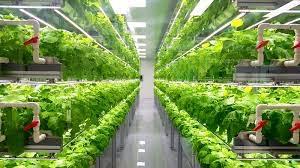
Vertical Farming |
The proposed FDA rule will not address the basic reality that CAFOs and irrigated green produce are spatially incompatible and the problem of contamination of irrigation water cannot be simply eliminated by the frequency of testing. Since the FDA was assigned the responsibility of implementing the Food Safety Modernization Act of 2011, leafy greens producers are now eleven years beyond the intended date of action with every likelihood of repeated outbreaks attributed to field-cultivated leafy greens.
|
|
It is inevitable that more vertical farming using advanced technology including hydroponics will become a greater contributor to national demand. The potential premium for produce devoid of contamination with pesticides and pathogens will offset higher initial capital investment. Advantages of alternatives to row cropping include enhanced sustainability, year-round cultivation and the potential for mechanization and robotics saving labor.
|

|
China Reports HPAI in Migratory Shelducks
|
12/08/2021 |
|
In past months China has repeatedly reported isolation of H5N1 avian influenza from migratory species, including cranes and shelducks. These birds, among others have been implicated in long-distance dissemination of avian influenza.
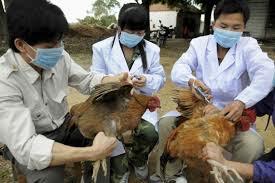 It is considered ironic that China reports outbreaks of avian influenza in free-living species but apparently does not encounter cases in commercial poultry. It is question whether this is due to failure to report outbreaks of H5 and H7 avian influenza, irrespective of pathogenicity, as required by the World Organization for Animal Health or is due to an extraordinarily comprehensive and effective vaccination program to protect both commercial and subsistence flocks. It is considered ironic that China reports outbreaks of avian influenza in free-living species but apparently does not encounter cases in commercial poultry. It is question whether this is due to failure to report outbreaks of H5 and H7 avian influenza, irrespective of pathogenicity, as required by the World Organization for Animal Health or is due to an extraordinarily comprehensive and effective vaccination program to protect both commercial and subsistence flocks.
|
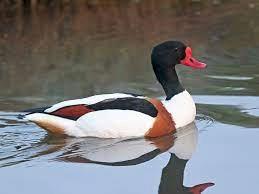
Common Shell Duck. Tadorna tadorna |

|
Dichotomy over COVID in Canadian Mink
|
11/29/2021 |
|
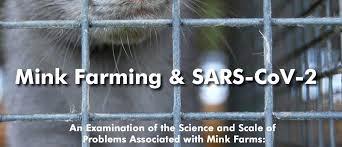 The Province of British Columbia has decided to initiate a phase-out of mink production in April 2023 with complete closure of the industry within two years. The decision was based on public health concerns and will affect nine farms in the Fraser Valley with a collective population of 320,000 mink. The Province of British Columbia has decided to initiate a phase-out of mink production in April 2023 with complete closure of the industry within two years. The decision was based on public health concerns and will affect nine farms in the Fraser Valley with a collective population of 320,000 mink.
In contrast, Nova Scotia is allowing COVID vaccination on a restricted emergency-use basis under supervision of Veterinarians. The Province of Nova Scotia is offering funding to 24 licensed producers with twelve having received U.S. $650,000 in support, despite the fact that profitability of mink production is declining with only China serving as a market for pelts. This demand could evaporate at the snap of President Xi’s finger if wearing mink is regarded as ‘unpatriotic’.
There is considerable opposition to mink farming in Canada that has 70 licensed units. Dr. Scott Weese, a veterinarian specializing in infectious diseases, affiliated to the Ontario Veterinary College at the University of Guelph, supported the decision of health authorities in British Columbia. Dr. Weese maintains that mink that are susceptible to respiratory infections including COVID hav a high probability of developing new strains as has occurred in the EU. He clearly summarizes the situation as “we have a plausible risk and we have pretty minimal benefits apart from a small number of farmers.”
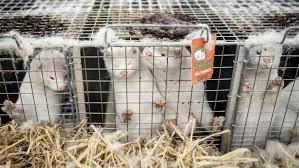 Although the National Mink Association has raised a number of fatuous arguments to support continued mink farming, science is on the side of eliminating this public health risk. The Mink Association pointed to the fact that a number of domestic cats have been diagnosed with COVID and it is well documented that felines in zoos have contracted SARS-CoV-2 from staff. The difference between individual and mostly solitary felines and mink lies in the large number, close proximity, and concentration on a commercial farm. These are conditions that can lead to the emergence of new strains, irrespective of vaccination. There is sufficient clinical and epidemiologic evidence that vaccinated humans can be reinfected, although they do not suffer the extreme clinical effects, such as requiring hospitalization and even death compared to non- vaccinated individuals. Vaccination may well suppress clinical signs in mink housed on farms, but virus will continue to circulate with the potential of mutation and the possibility of a more virulent strain emerging. There are a lot more Greek letters after Omicron! Although the National Mink Association has raised a number of fatuous arguments to support continued mink farming, science is on the side of eliminating this public health risk. The Mink Association pointed to the fact that a number of domestic cats have been diagnosed with COVID and it is well documented that felines in zoos have contracted SARS-CoV-2 from staff. The difference between individual and mostly solitary felines and mink lies in the large number, close proximity, and concentration on a commercial farm. These are conditions that can lead to the emergence of new strains, irrespective of vaccination. There is sufficient clinical and epidemiologic evidence that vaccinated humans can be reinfected, although they do not suffer the extreme clinical effects, such as requiring hospitalization and even death compared to non- vaccinated individuals. Vaccination may well suppress clinical signs in mink housed on farms, but virus will continue to circulate with the potential of mutation and the possibility of a more virulent strain emerging. There are a lot more Greek letters after Omicron!
Clearly the Canadian Mink Breeders’ Association is fighting a rearguard action with lower demand and falling prices for pelts. This is clearly a time to eliminate commercial multiplication of mink and eliminate a potential human health hazard since the product is essentially an unnecessary luxury with few producers involved.

|
Salmonellosis from Backyard Chickens Continues
|
11/22/2021 |
|
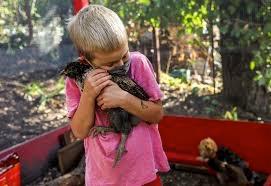 In a November 18th release, the Centers for Disease Control and Prevention (CDC) documented an increase in cases of salmonellosis in the ongoing outbreak attributed to contact with backyard chickens. From January 1st of the current year, 1,135 cases were recorded in 48 states, the District of Columbia, and Puerto Rico. Only 13 cases were confirmed in January and February, but reports rose sharply thereafter from April through August. Of those infected, 273 were hospitalized and two fatalities were attributed to the outbreak. In a November 18th release, the Centers for Disease Control and Prevention (CDC) documented an increase in cases of salmonellosis in the ongoing outbreak attributed to contact with backyard chickens. From January 1st of the current year, 1,135 cases were recorded in 48 states, the District of Columbia, and Puerto Rico. Only 13 cases were confirmed in January and February, but reports rose sharply thereafter from April through August. Of those infected, 273 were hospitalized and two fatalities were attributed to the outbreak.
A variety of serotypes were isolated including S.Enteritidis, Hadar, Indiana, Infantis, Mbandaka, and Muenchen. The CDC noted that the number of actual infections far exceeds the documented level since many affected patients either do not seek medical attention or are treated symptomatically without laboratory investigation. It is noteworthy that 24 percent of the cases occurred in children under five years of age and 12 percent were under 12 months. Of 677 patients interviewed, 66 percent reported direct contact with backyard poultry before onset of symptoms. Chicks and ducklings for backyard flocks are purchased from feed stores or are ordered directly from small hatcheries. The CDC recorded 264 separate purchases from 150 locations with 17 hatcheries involved.
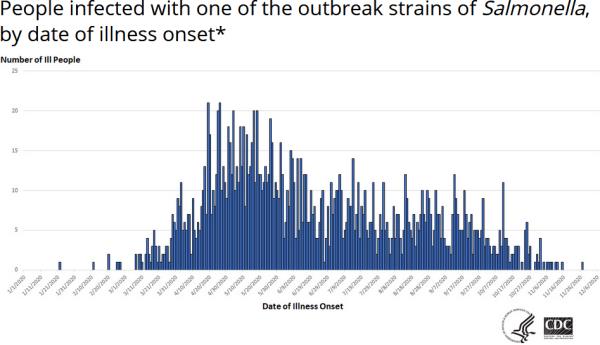 Recovery and collation of data from as many as 48 states, DC, and Puerto Rico is only possible using the PulseNet system to identify cases that are then entered into the national database including the results of whole genome sequencing. State public health officials demonstrated commonality among infective strains in patients and their poultry in Ohio, California, Arizona, and Maryland. Recovery and collation of data from as many as 48 states, DC, and Puerto Rico is only possible using the PulseNet system to identify cases that are then entered into the national database including the results of whole genome sequencing. State public health officials demonstrated commonality among infective strains in patients and their poultry in Ohio, California, Arizona, and Maryland.
Of the 1,112 samples subjected to laboratory examination 35 percent were predicted to be resistant to one or more antibiotics used for human therapy including ampicillin, streptomycin, tetracycline, and trimethoprim-sulfamethoxazole. Despite the CDC publishing advisories and recommending procedures including hand-washing it is impossible to prevent transmission of Salmonella from backyard poultry in their environment to residents of homes including children. Backyard poultry are inappropriate as pets and yield very expensive potentially contaminated eggs.
The cookie-cutter recommendations provided by the CDC to prevent salmonellosis sourced from backyard flocks and eggs are obviously not followed or are inadequate given the increasing incidence of infection.

|
VSD is Probably Unacceptable to Consumers
|
11/18/2021 |
|
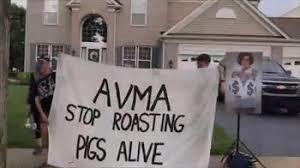 The COVID outbreak disrupted operations of red meat plants during the first quarter of 2020, extending through May with an effective reduction in plant capacity of over 50 percent due to absenteeism among line workers. This resulted in temporary closure of 38 Midwest plants and with reduced throughput after resuming operations. The hog industry was especially impacted with farms unable to consign market-ready animals to slaughter. As a consequence, hog producers resorted to mass euthanasia. Ventilation shutdown with supplementary temperature and humidity was evaluated and documented in a recent peer-reviewed article1. A field trial of ventilation shut-down (VSD) demonstrated that the duration required to achieve death in a herd could be interpreted by a reasonable consumer to represent “extreme suffering”. The American Veterinary Medical Association Guidelines for Depopulation of Animals requires any method of mass-euthanasia such as VSD to achieve 95 percent mortality of a flock or herd within an hour. This is a questionable and somewhat self-serving standard inconsistent with public perceptions of welfare-ethics and humanity. The COVID outbreak disrupted operations of red meat plants during the first quarter of 2020, extending through May with an effective reduction in plant capacity of over 50 percent due to absenteeism among line workers. This resulted in temporary closure of 38 Midwest plants and with reduced throughput after resuming operations. The hog industry was especially impacted with farms unable to consign market-ready animals to slaughter. As a consequence, hog producers resorted to mass euthanasia. Ventilation shutdown with supplementary temperature and humidity was evaluated and documented in a recent peer-reviewed article1. A field trial of ventilation shut-down (VSD) demonstrated that the duration required to achieve death in a herd could be interpreted by a reasonable consumer to represent “extreme suffering”. The American Veterinary Medical Association Guidelines for Depopulation of Animals requires any method of mass-euthanasia such as VSD to achieve 95 percent mortality of a flock or herd within an hour. This is a questionable and somewhat self-serving standard inconsistent with public perceptions of welfare-ethics and humanity.
The authors of the article cannot be criticized in either their attempt to achieve rapid euthanasia under extreme conditions nor with their forthright publication of the documented field trial. The article elicited two contributions in the form of letters to the Editor indicating that VSD was morally unacceptable especially for hogs whether at the nursery or finishing stage together with a response from the authors.
Trials using mature hens were conducted at North Carolina State University in a chamber to determine the physiological effect of various combinations of carbon dioxide, temperature and duration simulating VSD. This work was motivated by the need to euthanize flocks of caged hens during the 2015 highly pathogenic avian influenza epornitic. Anecdotal reports of high mortality in caged hens resulting from accidental power failure or extreme heat suggests that caged flocks are susceptible to hyperthermia with some episodes resulting in up to 70 percent mortality within 90 minutes.
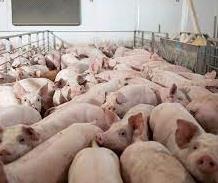 Despite studies on combinations of heat, temperature and carbon dioxide under experimental or small-scale conditions there is no effective, practical or morally acceptable method of mass euthanasia for caged laying flocks. A similar situation would apply to aviary systems irrespective of whether flocks are allowed floor access or are confirmed to modules. The use of carbon dioxide foam is effective and humane in floor housed broiler and turkey flocks. For slat and litter housing producing cage-free eggs it will be necessary to herd and confine hens to the litter area. Despite studies on combinations of heat, temperature and carbon dioxide under experimental or small-scale conditions there is no effective, practical or morally acceptable method of mass euthanasia for caged laying flocks. A similar situation would apply to aviary systems irrespective of whether flocks are allowed floor access or are confirmed to modules. The use of carbon dioxide foam is effective and humane in floor housed broiler and turkey flocks. For slat and litter housing producing cage-free eggs it will be necessary to herd and confine hens to the litter area.
Protests over mass euthanasia required to control highly pathogenic avian influenza in 2015 were relatively muted. It is predicted that in the event of a future outbreak, there will be considerable opposition to VSD for chicken flocks. Recognizing the practical problems of VSD and its relatively inhumane consequences, USPOULTRY has called for proposals to achieve mass euthanasia that would presumably be more acceptable to consumers and regulators. Anecdotal reports suggest that toxic compounds including organophosphates have been added to drinking water to dispose of flocks rapidly and with less stress than would be induced by VSD. Until a suitable compound can be identified, the industry and those responsible for control of catastrophic diseases will be obliged use manual labor and kill-carts or alternatively some mechanized version of hypercapnic euthanasia. Prototype mobile equipment has been demonstrated but application still requires transfer of hens from cages to a receiving hopper.
The application of VSD is fraught with public relations implications. Not only will individual companies be subjected to extensive criticism in this age of the internet and 24-hour news cycle, degradation of brand value and consumer rejection of table eggs will be inevitable. These consequences will have even greater long-term financial impact than that caused by the disease for which Federal compensation is anticipated.
1.Baysinger, A. et al. (2021). A case study of ventilation shutdown with the addition of high temperature and humidity for depopulation of pigs. J. Am Vet Med Assoc. 259: 415-424

|
National Retail Federation Opposing Federal COVID Vaccination Mandate
|
11/08/2021 |
|
 The National Retail Federation has issued a response to the OSHA Emergency Temporary Standard requiring employers with 100 or more employees to ensure workers are either vaccinated or tested weekly for COVID. The National Retail Federation has issued a response to the OSHA Emergency Temporary Standard requiring employers with 100 or more employees to ensure workers are either vaccinated or tested weekly for COVID.
David French the Senior Vice President for Government Relations stated, "as an industry that supports one in four American jobs, retailers have consistently requested that the Administration consider public comment on this new vaccine mandate". The National Retail Federation has adopted a self-serving position opposing mandates and has lobbied intensely against the vaccination requirement. The Federation is a party to a recent petition to the U.S. Federal Appeals Court for the 5th Circuit to stay the implementation of the Administration mandate.
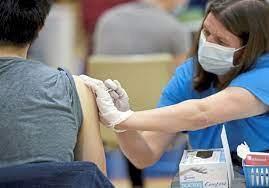
Workers in the retail industry must be protected from infection and at the same time should not be in a position to transmit virus to coworkers and customers. Most retail workers spend their day in air-conditioned stores facilitating transmission of a virus spread by the aerosol route. Although the National Retail Federation cited declining incidence rates of COVID to justify their opposition to vaccination, the disease is far from eradicated, and the U.S. will continue to experience regional spikes in infection. The higher the proportion of immunized individuals in a given population the lower the probability of a resurgence in cases.
The National Retail Federation is obviously concerned over absenteeism and resignations that will impact an already depleted work force. This is no justification to oppose a sound and proven method of protecting communities from a disease that has serious implications for the elderly and the immunosuppressed.
If companies such as Tyson Foods can vaccinate 96 percent of their line workers by offering incentives, bonuses and convenience in receiving the vaccine, the National Retail Federation should look within its membership to determine how best to protect its workers. Surges in COVID will result in even greater absenteeism and were still a stay-at-home response by consumers further impacting retail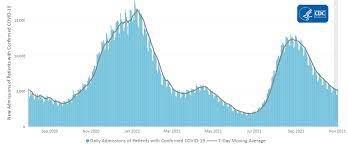 stores and the national economy. It would be appropriate for the executive for the National Retail Federation to carefully consider their position and adopt a more realistic and longer-term perception of this COVID situation. stores and the national economy. It would be appropriate for the executive for the National Retail Federation to carefully consider their position and adopt a more realistic and longer-term perception of this COVID situation.
This said blanket mandates are unfortunately self-defeating in the politicized atmosphere of 2021. Those who are willing to be protected readily submit to vaccination. Employees who are offended by a mandate, considering it a violation of their rights or who are influenced by anti-vax misstatements and falsehoods, will be even less likely to be vaccinated. All citizens are entitled to their opinions but not necessarily their facts. At the end of the day the Courts will decide whether there is a Constitutional right to disseminate an infection to co-workers and the community. This issue was the subject of Jacobson v. Massachusetts: 197 U.S. 11, a 1905 ruling on the right of states to mandate smallpox vaccination for employees of a school system. The suppression of COVID is a public health issue and not a political contest.

|
Avocado Glut in Australia—Lessons for Egg Industry?
|
11/04/2021 |
|
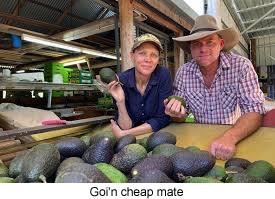 A recent article by Michael Miller, the Sydney correspondent for the Washington Post recently described the plight of farmers in Queensland State who are the victims of concurrent overproduction and diminished demand. During the late-2000s avocados became a staple in salads and as a snack in Australia especially among the young high-income demographic. A recent article by Michael Miller, the Sydney correspondent for the Washington Post recently described the plight of farmers in Queensland State who are the victims of concurrent overproduction and diminished demand. During the late-2000s avocados became a staple in salads and as a snack in Australia especially among the young high-income demographic.
Responding to anticipated growing demand, farmers planted acreage to avocado orchards and invested in irrigation and harvesting equipment. Many of these trees matured over the past four years and yielded bountiful crops in 2020 after a prolonged drought. 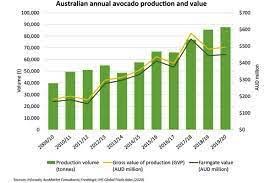 It is estimated that production in 2020 increased by 65 percent over the average of the previous two years. In an unfortunate case of timing, demand crashed as authorities imposed strict COVID shut-down regulations carrying over into 2021. It is estimated that production in 2020 increased by 65 percent over the average of the previous two years. In an unfortunate case of timing, demand crashed as authorities imposed strict COVID shut-down regulations carrying over into 2021.
Farmers are now faced with a glut of ripe and highly perishable fruit with a farm-gate market price of less than 20 percent of unit value pre-COVID. The response by many farmers is to bear losses from current prices and hope for a restoration in future value. We have seen this movie previously. Currently excess fruit is being dumped as surplus to consumer requirements.
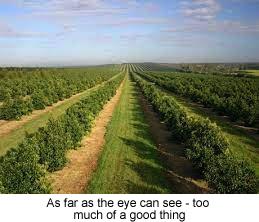 The lessons from the situation in Australia are:- The lessons from the situation in Australia are:-
- To be conservative in predicting demand. Although an event such as COVID could not be foreseen, Australia, as the home of the Black Swan, illustrates the effect of external factors on an industry. Examples for egg producers could be a widespread outbreak of HPAI or END that would raise prices for those avoiding infection. The advent of plant-based alternatives to eggs has not proven to be deleterious and mung-bean products are not even the cygnets of Black Swans
- Further processing adds value. While farmers are squashing harvested fruit onto pasture with tractor tires, considerable value could be recovered by extracting avocado oil or incorporating unsold or unprofitable raw fruit into prepared foods or cosmetics. Innovation is the best response to adversity but requires vision and planning
- Export of avocados and derived products, especially if a brand image is established through promotion of quality. Producers in New Zealand did just this with kiwis. With a small population, producers of avocados in Australia were always vulnerable to any disturbance of the equilibrium between supply and demand. Injudicious expansion was a self-inflicted wound. Producers also took for granted continued domestic demand based on consumption by a demographic subject to trends and fads and with distribution through casual dining restaurants a very restricted end point with respect to volume.
- Accurate data regarding expansion of orchards and hence future production, coupled with transparency in price discovery are critical to rational decisions on investment and allocation of resources to a crop or livestock system.
Without resorting to Schadenfreude, that unique Teutonic capacity to derive comfort from the misfortunes of someone else, our egg industry could apply some lessons from the avocado glut in Australia.

|
Supply Chain Remediation
|
10/18/2021 |
|
 On Wednesday October 13th, the White House convened a meeting of business leaders, directors of major ports and union representatives. The purpose was to review the deteriorating situation in U.S. ports resulting in disruption in supply chains that has now assumed serious proportions with political implications for the Administration. On Wednesday October 13th, the White House convened a meeting of business leaders, directors of major ports and union representatives. The purpose was to review the deteriorating situation in U.S. ports resulting in disruption in supply chains that has now assumed serious proportions with political implications for the Administration.
Following extensive discussions, the White House announced both public and private commitments including 24/7 operation at the ports of Los Angeles and Long Beach. These facilities represent the points of entry for 40 percent of containers to the U.S. Despite moving an additional 25 percent of containers above the volume handled in September 2020, West-coast port facilities are overwhelmed and ships are waiting at anchorage to be berthed. The International Longshore and Warehouse Union has agreed that its membership will work extra shifts to clear backlogs. Major companies will expand hours over which their shipments can be received. Night transport from docks and into distribution centers is invariably more efficient than during daylight hours.
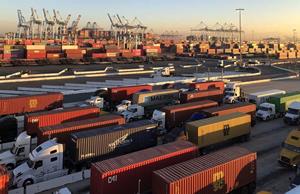 Individual company commitments include Walmart that has accepted night-time operation for distribution centers with UPS committing to 24/7 operation and data sharing. FedEx will increase their night-time operations. Home Depot will move an additional 10 percent of containers using off-peak hours and Target is moving half of its containers at night to enhance delivery rates. It is anticipated that the combined efforts of these companies will move an additional 3,500 containers per week with the initiative extending through the remainder of 2021. Individual company commitments include Walmart that has accepted night-time operation for distribution centers with UPS committing to 24/7 operation and data sharing. FedEx will increase their night-time operations. Home Depot will move an additional 10 percent of containers using off-peak hours and Target is moving half of its containers at night to enhance delivery rates. It is anticipated that the combined efforts of these companies will move an additional 3,500 containers per week with the initiative extending through the remainder of 2021.
Walmart, Home Depot Inc., Costco Wholesale Corporation and Target Corp have each chartered smaller vessels carrying up to 10,000 containers at prices frequently double that for a large container carrier. In 2012 individual companies including Walmart last used chartered vessels during West-coast port strikes. Large companies have the ability to make alternative shipping arrangements but small and intermediate-scale retailers will be deprived of goods for the holiday season.
During the past month freight rates from China to West-coast ports have dropped by almost 50 percent partly due to reduced production attributed to power shortages and cancellation of orders which has taken immediate pressure off shipping companies. The problem of available containers to consign agriculture products including fruit to Asia still exists as shipping companies are retuning empty containers to ports in China and Vietnam. China continues to delay operations in their ports based on the unnecessary requirement to test crew members for COVID before allowing vessels to dock causing delays of up to seven days.
 The 30 percent increase in demand in the U.S. for manufactured products from Asia coupled with inherent inefficiencies exacerbated by COVID has created the supply chain problem. For similar reasons Europe has also experienced congestion in ports and shortages on store shelves. The 30 percent increase in demand in the U.S. for manufactured products from Asia coupled with inherent inefficiencies exacerbated by COVID has created the supply chain problem. For similar reasons Europe has also experienced congestion in ports and shortages on store shelves.
Over the intermediate term the U.S. will have to address inefficiencies in port operations, many of which relate to extortionist union demands. Complementary considerations include the availability of long-distance drivers and vehicles, enhancing coordination and logistics and reducing dependence on just-in-time management of inventory. With higher costs for ocean shipping and land-transport and with the financial consequences of disruptions in supply, it is time for U.S. manufacturers to reconsider on-shoring where possible with greater use of automation and robotics to offset labor costs.

|
Improvement in COVID Data
|
10/11/2021 |
|
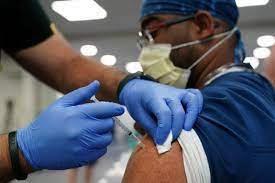 For the week ending Friday October 8th, the seven-day average of new COVID infections fell to 99,669 compared to 152,400 per day for the first week of September. Hospitalizations declined from 101,700 in September to 68,700 during the first week in October. Fatalities, a lagging indicator, were slightly higher with 2,426 dying of COVID per day, compared to 2,226 in early September. To date confirmed cases of COVID have risen to 44.2 million with 710,500 confirmed fatalities. Both figures are in all probability underestimates. For the week ending Friday October 8th, the seven-day average of new COVID infections fell to 99,669 compared to 152,400 per day for the first week of September. Hospitalizations declined from 101,700 in September to 68,700 during the first week in October. Fatalities, a lagging indicator, were slightly higher with 2,426 dying of COVID per day, compared to 2,226 in early September. To date confirmed cases of COVID have risen to 44.2 million with 710,500 confirmed fatalities. Both figures are in all probability underestimates.
Notwithstanding the ongoing unacceptable incidence rate of COVID, at least 35 percent of our population has not been vaccinated with a high concentration of those hesitant or rejecting vaccination resident in southern and northwestern states. COVID is unfortunately now regarded as a political issue whereas it should be a matter of public health concern. Control and eventual eradication should be subject to the application of scientific principles and recommendations by the medical community and not politicians or talk-show media.
It is axiomatic that until COVID is controlled, the economy will be fettered by a patchwork of restrictions of fluctuating intensity. Continual bickering by politicians on both sides of the issue of protective measures including vaccination, masking and common sense precautions has been unproductive. Simply denying the existence of COVID is illogical and an affront to the reality of over 710,000 deaths to date.
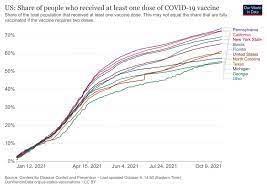 As a nation we are making progress in controlling COVID but the action we have taken to suppress the infection should be intensified in coming months since co-morbidities with possibly influenza and other respiratory viruses including RSV may result in spikes in mortality especially among our fellow citizens with predisposing conditions including the elderly, the obese and the immunosuppressed. As a nation we are making progress in controlling COVID but the action we have taken to suppress the infection should be intensified in coming months since co-morbidities with possibly influenza and other respiratory viruses including RSV may result in spikes in mortality especially among our fellow citizens with predisposing conditions including the elderly, the obese and the immunosuppressed.
Fortunately we will soon have emergency use authorization of mRNA vaccines at an appropriate dose for children aged 5 through 12. As with adult vaccination, the challenge will be to assure parents of the safety and effectiveness of vaccination. Rising incidence rates as children have returned to school, coupled with hospitalization and unnecessary mortality should stimulate acceptance of vaccination demonstrated to be the simplest and most effective method of controlling the infection.

|
Merck Molnupiravir Anti-COVID Drug – An Additional String to the Bow?
|
10/06/2021 |
|
 Merck has developed a specific antiviral drug that prevents the replication of SARS-CoV-2 when administered early in the course of COVID infection. The company announced the results of a clinical trial involving 175 participants in a double-blind study. Recipients of the drug that is administered orally required only half the rate of hospitalization and prevented mortality compared to controls receiving a placebo. In contrast there were eight deaths in the placebo cohort. Merck has developed a specific antiviral drug that prevents the replication of SARS-CoV-2 when administered early in the course of COVID infection. The company announced the results of a clinical trial involving 175 participants in a double-blind study. Recipients of the drug that is administered orally required only half the rate of hospitalization and prevented mortality compared to controls receiving a placebo. In contrast there were eight deaths in the placebo cohort.
Dr. Robert Davis, president and CEO of Merck stated, “With these compelling results, we are optimistic that molnupiravir can become an important medicine as part of the global effort to fight the pandemic.” He added that Merck will expand all possible efforts to increase production” Merck anticipates releasing 10 million courses each of 10 capsules by the end of 2021. With an incidence rate of 125,000 cases per day, the U.S. would theoretically require approximately 12 million courses during the fourth quarter if the drug is widely prescribed.
Wendy Holman, CEO of Ridgeback Biotherapeutics, co-developer of the drug noted, “With the virus continuing to circulate widely, and because therapeutic options currently available require infusion and access to a healthcare facility, antiviral treatments that can be taken at home and that will keep people with COVID-19 out of the hospital are critically needed.”
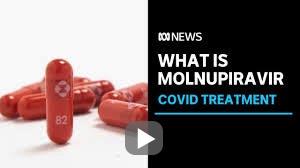 Subject to FDA emergency use approval, the U.S. Government will purchase 1.7 million courses of molnupiravir for $1.2 billion. This computes to $706 per treatment less expensive than monoclonal antibody infusions at about $1,250. Both treatments are still far more expensive than vaccination at approximately $25 per dose. Administration of molnupiravir will require testing that will add to the expense. Subject to FDA emergency use approval, the U.S. Government will purchase 1.7 million courses of molnupiravir for $1.2 billion. This computes to $706 per treatment less expensive than monoclonal antibody infusions at about $1,250. Both treatments are still far more expensive than vaccination at approximately $25 per dose. Administration of molnupiravir will require testing that will add to the expense.
Molnupiravir as an antiviral drug is no panacea for COVID but has a definite application for non-vaccinated individuals, especially in high-risk groups who become infected. In considering both the economic and societal implications of a therapeutic drug, should the U.S. Government pay $750 to protect an individual who declined a $25 vaccination that would have kept them out of a hospital? Other questions relating to an oral virucidal drug include the inevitability of inappropriate or repeated use by the non-vaccinated, the emergence of resistance by strains of influenza virus as occurred with oseltamivir at $100 per course at out-of-pocket cost and strengthening of anti-vaccine sentiment.
Speculators who sold Pfizer (PFE) and Moderna (MRNA) on Friday October 1st driving down share prices by 13.6 and 14.2 percent respectively and boosting Merck (MRK) by 9.6 percent reacted to gut feel and sentiment without thinking through the issue.

|
COVID Vaccination Mandates Increase Compliance
|
10/06/2021 |
|
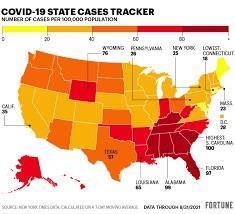 On August 5th the State of California issued an order requiring workers in healthcare facilities including hospitals and long-term care homes to receive an approved vaccination against COVID unless in possession of medical or religious exemption. On August 5th the State of California issued an order requiring workers in healthcare facilities including hospitals and long-term care homes to receive an approved vaccination against COVID unless in possession of medical or religious exemption.
 The response to the order has encouraged vaccine-hesitant healthcare workers to receive protection. Sutter Health based in Sacramento reported a 98 percent compliance rate on September 30th. Approximately 92 percent of all employees and 97 percent of providers were vaccinated comprising a group of 55,000. Dr. William Isenberg, chief quality and safety officer for Sutter Health stated, “Vaccine against COVID-19 is critical to protect healthcare workers, their loved ones and communities they care for and we strongly encourage those who can be vaccinated to do so as soon as possible.” The response to the order has encouraged vaccine-hesitant healthcare workers to receive protection. Sutter Health based in Sacramento reported a 98 percent compliance rate on September 30th. Approximately 92 percent of all employees and 97 percent of providers were vaccinated comprising a group of 55,000. Dr. William Isenberg, chief quality and safety officer for Sutter Health stated, “Vaccine against COVID-19 is critical to protect healthcare workers, their loved ones and communities they care for and we strongly encourage those who can be vaccinated to do so as soon as possible.”
Dr. John Swartzberg of the School of Public Health at the University of California, Berkeley stated, “Mandates are working, if you define this by the percentage of people getting vaccinated and not leaving their jobs.” The California mandate is similar to the New York State requirement issued on September 22nd. The Administration is requiring 17 million healthcare workers and facilities receiving Medicare or Medicaid support to be vaccinated.
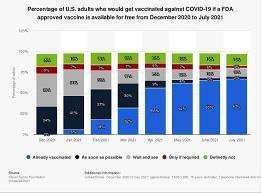 Notwithstanding the scientific justification for vaccination with undeniable proof of effectiveness and safety, a number of healthcare providers have applied for medical, religious and conscientious exceptions from vaccination. Title VII of the Civil Rights Act prohibits employment discrimination on the basis of religion. Accordingly accommodation is required for employees that have sincere religious objections to vaccination. Generally the Equal Employment Opportunity Commission (EEOC) has a broad interpretation of ‘religious belief’. This may include moral or ethical views that are held personally with the strength of traditional religious values. The EEOC has established criteria to determine whether an employee holds sincere views that would support a decision to reject vaccination against COVID. Notwithstanding the scientific justification for vaccination with undeniable proof of effectiveness and safety, a number of healthcare providers have applied for medical, religious and conscientious exceptions from vaccination. Title VII of the Civil Rights Act prohibits employment discrimination on the basis of religion. Accordingly accommodation is required for employees that have sincere religious objections to vaccination. Generally the Equal Employment Opportunity Commission (EEOC) has a broad interpretation of ‘religious belief’. This may include moral or ethical views that are held personally with the strength of traditional religious values. The EEOC has established criteria to determine whether an employee holds sincere views that would support a decision to reject vaccination against COVID.
Data assembled to date does not indicate any appreciable number of resignations from healthcare facilities among employees declining to be vaccinated. Inconvenience and expense associated with proscribed regular testing and peer pressure should encourage compliance. Regrettably any reduction in workforce especially in critical areas of hospital operation will intensify the pressure on existing workers who are dealing with incident and unnecessary cases since more than 95 percent of admissions are in previously non-vaccinated patients.

|
Walmart ESG and Sustainability Goals
|
09/28/2021 |
|
 Walmart announced that a $2 billion green bond will be part of a $7 billion senior unsecured note that the company has successfully closed. Proceeds will be used to advance Walmart sustainability goals that include achieving 100 percent renewable energy by 2035 across global operations, electrifying vehicles to eliminate emissions and to install low-impact refrigeration systems for all facilities by 2040. The current year represent the fourth year of project Gigaton™ that is intended to avoid one billion metric tons of greenhouse gas emissions by 2030. Walmart announced that a $2 billion green bond will be part of a $7 billion senior unsecured note that the company has successfully closed. Proceeds will be used to advance Walmart sustainability goals that include achieving 100 percent renewable energy by 2035 across global operations, electrifying vehicles to eliminate emissions and to install low-impact refrigeration systems for all facilities by 2040. The current year represent the fourth year of project Gigaton™ that is intended to avoid one billion metric tons of greenhouse gas emissions by 2030.
Proceeds from the bond will be directed towards:
- Renewable energy projects to avoid using fossil fuel
- Sustainable transport using electric, hydrogen and hybrid vehicles through the entire supply chain
- Modifying buildings for optimal energy efficiency
- Attaining zero waste including closed-loop material flows
- Conservation of water including monitoring, treatment and recycling
- Restoration of habitat and conservation on all facilities
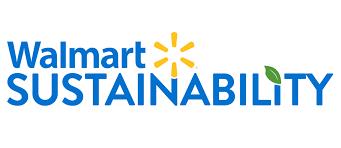 As Walmart does, so follows the industry. As a major retailer, Walmart will influence decisions by competitors. It is self-evident that standards imposed by Walmart will be extended to suppliers. The purchasing power of the company will be applied to first encourage and then demand compliance with company ESG standards. The egg industry is accordingly on notice to monitor Walmart sustainability reports and to mirror innovations and actions by the company. Areas of concentration will include packaging, transport to DCs, evidence of environmental stewardship including water and land resources and the use of renewable energy. As Walmart does, so follows the industry. As a major retailer, Walmart will influence decisions by competitors. It is self-evident that standards imposed by Walmart will be extended to suppliers. The purchasing power of the company will be applied to first encourage and then demand compliance with company ESG standards. The egg industry is accordingly on notice to monitor Walmart sustainability reports and to mirror innovations and actions by the company. Areas of concentration will include packaging, transport to DCs, evidence of environmental stewardship including water and land resources and the use of renewable energy.

|
FACT Sues Wendy's Company Over Cage-Free Claim
|
09/20/2021 |
|
 In 2016, Wendy's along with most restaurants and QSRs were coerced by HSUS into announcing that eggs and egg products served in their restaurants would be derived from non-cage hens by 2020. In 2016, Wendy's along with most restaurants and QSRs were coerced by HSUS into announcing that eggs and egg products served in their restaurants would be derived from non-cage hens by 2020.
On September 9th Food Animal Concerns Trust (FACT) sued the Wendy's company in the D.C. Superior Court claiming misrepresentation by the company that claims is alleged to derive only five percent of eggs from other than conventional cages. The plaintiff FACT is demanding that Wendy's conform to the Consumer Protection Procedures Act with respect to DC consumers. 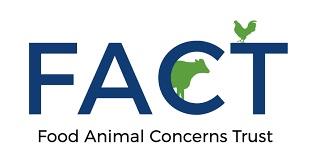 In the complaint, FACT represented by Richman Law and Policy, claimed that Salmonella rates are higher in caged facilities compared to other housing systems. The scientific justification for this assertion is questioned and relates to prw-2010 data before introduction of the FDA Final Rule on Prevention of Salmonella and effective EQAPs. Regrettably epidemiologic data is skewed by the single outbreak perpetuated by Jack DeCoster. The 2010 recall involving eggs derived from his Iowa operation may be regarded as an aberration and not representative of the U.S. egg industry. In the complaint, FACT represented by Richman Law and Policy, claimed that Salmonella rates are higher in caged facilities compared to other housing systems. The scientific justification for this assertion is questioned and relates to prw-2010 data before introduction of the FDA Final Rule on Prevention of Salmonella and effective EQAPs. Regrettably epidemiologic data is skewed by the single outbreak perpetuated by Jack DeCoster. The 2010 recall involving eggs derived from his Iowa operation may be regarded as an aberration and not representative of the U.S. egg industry.
Harry Rhodes, Executive Director of FACT stated, "by representing its animal welfare program is ‘industry-leading’ and claiming its egg suppliers provide space and opportunities for animals to interact with their environment, Wendy's deceives the majority of consumers who care about animal welfare".
 Irrespective of claims relating to consumer policies and safety, FACT is promoting a vegan agenda and uses the legal system to generate funding and to oppose all forms of intensive livestock production. Irrespective of the outcome of the case animal rights activists and vegan organizations will continue to misuse the legal system to threaten the food industry with reputational disparagement to achieve their objectives. Irrespective of claims relating to consumer policies and safety, FACT is promoting a vegan agenda and uses the legal system to generate funding and to oppose all forms of intensive livestock production. Irrespective of the outcome of the case animal rights activists and vegan organizations will continue to misuse the legal system to threaten the food industry with reputational disparagement to achieve their objectives.

|
Would COVID Vaccine Deniers Refuse a Smallpox Vaccine When Faced with an Outbreak?
|
09/15/2021 |
|
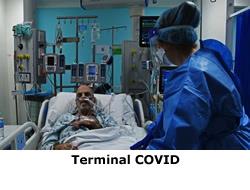 In attempting to understand the reluctance of approximately 20 percent of our population over the age of 12 to receive an FDA-approved COVID vaccine, one is tempted to consider alternative diseases. Notwithstanding the fact that smallpox has been eradicated, repositories of the virus are present in a number of laboratories including in the U.S. Assuming there was a laboratory error and a limited outbreak of the dreaded disease occurred, would citizens in the affected area be as ready to reject a smallpox vaccine as they are to resist a protective dose of COVID vaccine? In attempting to understand the reluctance of approximately 20 percent of our population over the age of 12 to receive an FDA-approved COVID vaccine, one is tempted to consider alternative diseases. Notwithstanding the fact that smallpox has been eradicated, repositories of the virus are present in a number of laboratories including in the U.S. Assuming there was a laboratory error and a limited outbreak of the dreaded disease occurred, would citizens in the affected area be as ready to reject a smallpox vaccine as they are to resist a protective dose of COVID vaccine?
Evidence shows that vaccination effectively prevents hospitalization and certainly death after exposure to the Delta variant of SARS-CoV-2 virus. It is a matter of record that in excess of 90 percent of patients in hospital, and virtually all in ICU wards, were not vaccinated. Those that were have one or more predisposing conditions including age, diabetes, immunosuppression, or other medical circumstances.
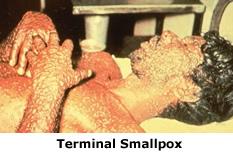 What is the difference between COVID and smallpox? COVID has unfortunately become politicized and strongly associated with the nebulous concept of ‘freedom’ or ‘personal choice’. Obviously with smallpox, self-preservation would be the major motivation to be protected against the disease which at best will produce hideous permanent skin disfigurement and at worse a painful death. For those doubting the effect of COVID, one can point to the 660,000 of our fellow citizens that have succumbed to the disease. We should consider the suffering and cost of those that survived clinical infection and face possibly long-term effects on their renal, respiratory, circulatory, and nervous systems. What is the difference between COVID and smallpox? COVID has unfortunately become politicized and strongly associated with the nebulous concept of ‘freedom’ or ‘personal choice’. Obviously with smallpox, self-preservation would be the major motivation to be protected against the disease which at best will produce hideous permanent skin disfigurement and at worse a painful death. For those doubting the effect of COVID, one can point to the 660,000 of our fellow citizens that have succumbed to the disease. We should consider the suffering and cost of those that survived clinical infection and face possibly long-term effects on their renal, respiratory, circulatory, and nervous systems.
Without question all reasonable people would regard smallpox as a public health issue and readily receive a federally-approved vaccine. So why the reluctance with COVID? Vaccine rejection has nothing to do with science nor a reasonable assessment of risks and consequences. The sooner the reluctant minority are vaccinated the more likely they are to survive but more important, not to pass the disease on to their families and the community. So take the shot and let us restore our pre-COVID economy and lifestyle.

|
High Cost of Vaccine Hesitancy and Rejection
|
08/25/2021 |
|
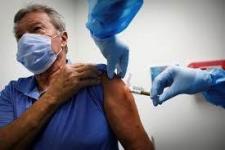 The Kaiser Family Foundation has determined that the cost to the U.S. health system in June and July amount to $2.3 billion as a result of hospitalization of unvaccinated people. Based on data from the Department of Health and Human Services, CDC and other available sources, it was estimated that in the months of June and July, 37,000 and 76,000 preventable hospitalizations occurred respectively. The average cost of hospitalization as a result of uncomplicated COVID amounted to $20,000 per case. The analysis did not take into account outpatient treatments, life costs of mortality nor the cost accruing to COVID infections spread by unvaccinated individuals. On August 25th Delta Airlines stated that the average cost to treat a case of COVID among their employees since the inception of the pandemic amounted to $50,000. The Kaiser Family Foundation has determined that the cost to the U.S. health system in June and July amount to $2.3 billion as a result of hospitalization of unvaccinated people. Based on data from the Department of Health and Human Services, CDC and other available sources, it was estimated that in the months of June and July, 37,000 and 76,000 preventable hospitalizations occurred respectively. The average cost of hospitalization as a result of uncomplicated COVID amounted to $20,000 per case. The analysis did not take into account outpatient treatments, life costs of mortality nor the cost accruing to COVID infections spread by unvaccinated individuals. On August 25th Delta Airlines stated that the average cost to treat a case of COVID among their employees since the inception of the pandemic amounted to $50,000.
The cost of treating unvaccinated people is born by taxpayer funded programs and private insurance premiums that obviously will soar to compensate for health cost that were not predicted prior to 2020. Currently the Affordable Care Act prohibits insurers from claiming higher premiums on unvaccinated people, but it is evident that this situation must change. This is especially the case now that the Pfizer-BioNTech vaccine has received permanent approval by the FDA.
|
CDC data from Los Angeles County in May through July, demonstrated that unvaccinated people were five times more likely to be diagnosed with COVID and 29 times more likely to be hospitalized than vaccinated peers. The sharp increase in the cost of treating unvaccinated patients between June and July suggests that even higher costs will be incurred in August due to the increase in number of cases requiring hospitalization following the emergence of the Delta variant of SARS-CoV-2. Vaccination is a public health issue not a political or freedom concern. Unvaccinated people represent a risk of hospitalization and death not only for themselves but also for their families and the community independently of the financial burden on the healthcare system and society.
|

IC treatment may cost
up to $250,000
|

|
COVID Upsurge Influences Consumer Sentiment Index
|
08/19/2021 |
|
The University of Michigan Consumer Sentiment Index fell 13.5 percent in July to a value of 70.2. The only larger declines in the Sentiment Index over the past 50-years occurred in April 2020 with a fall of 19.4 percent as a result of concern over COVID and during October 2008 at the start of the Great Recession with a fall of 18.1 percent.
Richard Curtin, Chief Economist at the University of Michigan, stated “There is little doubt that the pandemic resurgence due to the Delta variant has been met with a mixture of reason and emotion.” He added, “Consumers have correctly reasoned that the economy’s performance will be diminished over the next several months.” The loss in consumer sentiment was distributed across income, age, and education demographics and related to consumer concerns over personal finances, the economy, inflation, and unemployment.
|

Dr. Richard Curtin |
|
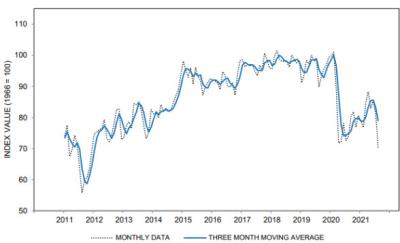
The precipitous fall in the Consumer Sentiment Index illustrates the damage caused by vaccine hesitancy and rejection resulting in ascending incidence rates and hospitalizations for severe COVID. The current trends portend inconvenience and possible shutdowns, irrespective of the misplaced optimism and intransigence expressed by some politicians and science deniers.
|

|
NIH Investigates Routes of COVID Transmission
|
08/18/2021 |
|
 In a published study* scientists affiliated to the NIH National Institute of Allergy and Infectious Diseases, Rocky Mountain Laboratory in Hamilton, Montana, investigated the route of infection associated with SARS-CoV-2 virus responsible for COVID. Experiments involved exposing hamsters, that are susceptible to the virus, to both aerosol and contaminated surfaces. It was determined that aerosol transmission is highly effective and results in virus replication within lung tissue. In contrast, exposure from contaminated surfaces (fomites) involved replication of the virus in the nasal passages without inducing pulmonary damage. In an additional study involving animal-to-animal transmission of virus by the aerosol route it is shown that airborne transmission was more efficient than surface contamination. In a published study* scientists affiliated to the NIH National Institute of Allergy and Infectious Diseases, Rocky Mountain Laboratory in Hamilton, Montana, investigated the route of infection associated with SARS-CoV-2 virus responsible for COVID. Experiments involved exposing hamsters, that are susceptible to the virus, to both aerosol and contaminated surfaces. It was determined that aerosol transmission is highly effective and results in virus replication within lung tissue. In contrast, exposure from contaminated surfaces (fomites) involved replication of the virus in the nasal passages without inducing pulmonary damage. In an additional study involving animal-to-animal transmission of virus by the aerosol route it is shown that airborne transmission was more efficient than surface contamination.
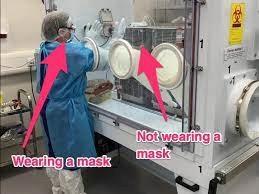
The major conclusions that can be drawn from the study is that masking is effective in reducing spread of COVID by aerosol transmission. Obviously limiting contact by social distancing and providing filtered air in areas where people congregate will also be beneficial. Above all, immunity stimulated by vaccination is the primary means of reducing the incidence rate of COVID in a community, but supportive measures as indicated from the NIH transmission experiments are complementary.
Port, J. et al SARS-CoV-2 disease severity and transmission efficiency is increased for airborne compared to fomite exposure in Syrian hamsters. Nature Communications doi.1038/s4 and 467-021-25156-8 (2021)

|
U.S. Custom and Border Protection Interdict Exotic Beetle Pests
|
08/10/2021 |
|
On July 7th, U.S. Custom and Border Protection (CBP) agricultural specialists at the Pharr International Bridge at Hidalgo, Texas identified an exotic beetle pest in a consignment of jackfruit. The scarab beetle Cyclocephala forcipulata is indigenous to Mexico. Larvae of the pest consume plant roots and adults feed on the foliage of crops.
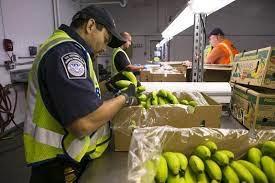 In commenting on the rejection of the consignment, Carlos Rodriguez of the CBP stated, “Our agricultural specialists help protect American agriculture and contribute to the Nation’s economic security by denying entry to invasive species not known to exist in the U.S.” Insect pests although small and reclusive can be identified by examination by trained specialists. Unfortunately bacterial and viral pathogens cannot be detected by physical surveillance. Bans must be imposed on importation of raw poultry products unless subject to specific permits taking into account disease status in exporting countries and relevant risk assessment and OIE regulations. In commenting on the rejection of the consignment, Carlos Rodriguez of the CBP stated, “Our agricultural specialists help protect American agriculture and contribute to the Nation’s economic security by denying entry to invasive species not known to exist in the U.S.” Insect pests although small and reclusive can be identified by examination by trained specialists. Unfortunately bacterial and viral pathogens cannot be detected by physical surveillance. Bans must be imposed on importation of raw poultry products unless subject to specific permits taking into account disease status in exporting countries and relevant risk assessment and OIE regulations.
The U.S. Customs and Border Protection Service frequently identify illegal meat and poultry products deliberately concealed in consignments of otherwise permitted agriculture products. Given the prevalence of avian influenza and African swine fever, funds extended to training of personnel and other detection measures including trained beagles will represent a significant return on investment to prevent introduction of an exotic disease with catastrophic potential. Unfortunately as with illicit drugs, more shipments remain undetected compared to the proportion that is interdicted.
|
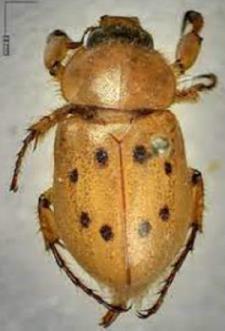
Scarab Beetle, Cyclocephala forcipulata interdicted at border |

|
Joint EPA and Department of the Army Hearings on WOTUS
|
08/04/2021 |
|
 During August, the EPA and the U.S. Department of the Army will organize ‘engagement opportunities’ to allow stakeholders and the public to provide input into rule-making with respect to Waters of the United States (WOTUS). The first rule will define the scope of WOTUS as modified by Supreme Court decisions. The second rule-making process would establish an updated and durable definition of WOTUS. During August, the EPA and the U.S. Department of the Army will organize ‘engagement opportunities’ to allow stakeholders and the public to provide input into rule-making with respect to Waters of the United States (WOTUS). The first rule will define the scope of WOTUS as modified by Supreme Court decisions. The second rule-making process would establish an updated and durable definition of WOTUS.
In commenting on the intended action, Michael S. Regan, Administrator of the EPA stated, "We are committed to crafting an enduring definition of WOTUS by listening to all sides so that we can build on an inclusive foundation".
Acting Assistant Secretary of the Army for Civil Works, Jaime A. Pinkham stated, "The EPA and the Department of the Army recognize the importance of this effort, and we are committed to meaningful engagement with tribes, states, local governments and stakeholders to ensure that a revised definition of WOTUS reflects the experiences and input received from all communities".
T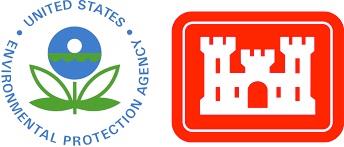 he basis of WOTUS is the Clean Water Act of 1972 that was enacted to "restore and maintain the chemical, physical and biological integrity of the nation's waters". The Act specifically prohibits discharge of pollutants from any point source into navigable waters” currently defined as "the waters of the United States including the territorial seas". Waters of the United States per se is not defined in the Clean Water Act, but this exclusion will now have to be resolved in an amicable and fair manner in order to protect water resources that support public health, the environment, agriculture and economic growth for future generations. he basis of WOTUS is the Clean Water Act of 1972 that was enacted to "restore and maintain the chemical, physical and biological integrity of the nation's waters". The Act specifically prohibits discharge of pollutants from any point source into navigable waters” currently defined as "the waters of the United States including the territorial seas". Waters of the United States per se is not defined in the Clean Water Act, but this exclusion will now have to be resolved in an amicable and fair manner in order to protect water resources that support public health, the environment, agriculture and economic growth for future generations.

|
U.S. in Danger of Foreign Animal Diseases and Plant Pests
|
07/23/2021 |
|
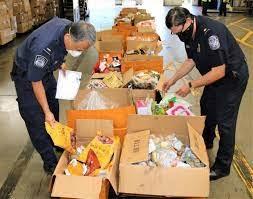 According to a Department of Homeland Security report, agricultural specialists assigned to the U.S. Customs and Border Protection Service (US CBPS) have identified numerous attempts to illegally import consignments of plants and animals that could potentially introduce foreign animal diseases and pests. According to a Department of Homeland Security report, agricultural specialists assigned to the U.S. Customs and Border Protection Service (US CBPS) have identified numerous attempts to illegally import consignments of plants and animals that could potentially introduce foreign animal diseases and pests.
Among the 18,500 pounds of smuggled products intercepted in containers at International Falls, MN, were balut eggs. This Asiatic specialty effectively comprises 15 to 18-day incubated eggs that could potentially transmit avian influenza, exotic Newcastle disease or other pathogens to domestic flocks. Prohibited pork product destined for Asian food markets were also interdicted.
According to U.S. Customs and Border Protection, an attempt was made to import prohibited pork products through the Pembina point of entry in North Dakota.
|
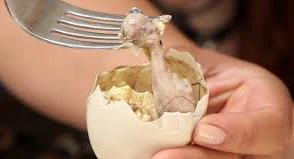
Balut emryos.
A Philippine delicacy |
The issue of concern is the number of illegal importations of poultry and pork products that are not detected. Given statistic and projections of the discrepancy between apprehended and non-detected drug shipments, one can assume that despite vigilance, the sheer volume of imports will permit a high proportion of illegal items to enter the U.S. Since many of the items are destined for food distribution and consumption through Asian food markets, retail surveillance may be an important adjunct to border inspection. Operators of establishments should be required to provide proof that suspicious food products were in fact imported or acquired legally.
And now the Dominican Republic has cases of African Swine Fever and inevitably Haiti will follow given the long and porous border between the two countries. Will Cuba, 50 miles from Haiti at the nearest point be far behind?
|

|
Pre-Harvest Testing of Leafy Greens to Detect Pathogens is Self-Deception
|
07/22/2021 |
|
The California Leafy Greens Marketing Agreement (LGMA) of California will introduce pre-harvest testing for produce grown in fields with "elevated risk factors". The LGMA recognizes that proximity to a concentrated animal feeding operation (CAFO) represents a risk of applying STEC and Salmonella in contaminated irrigation water. Although protocols for testing have not been finalized, the release indicated that it is intended to collect and assay sixty stratified samples from a minimum of three pounds of produce per acre, 4-7 days prior to harvest.
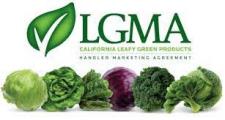
According to Tim York, CEO of the LGMA, "new testing protocols are predicted to provide a 95 percent chance of finding a pathogen in the field even if only one percent of the crop is contaminated". The updates to LGMA testing protocols are intended to convince regulators and customers of the safety of green produce. There was no indication in the press release of the action that growers must take in the event of a positive isolation of a pathogen. Will the crop be harvested? Treated? Ploughed back into the soil? What preventive action will be taken to avert a reoccurrence?
There is a general consensus among food scientist that it is not possible to test-one’s way out of a structural problem. The fact that the LGMA is applying the test protocol only to "suspect fields" is a confirmation that the association is aware of the probability of infection. The assay protocol is a form of ‘pathogen roulette’ intended to create a false sense of security.
 Fields adjacent to or in a location that could be contaminated by a CAFO should not be used for cultivation of green produce since it is inevitable that contamination will occur. In the absence of a positive kill-step in processing, no amount of testing can provide an assurance of safety. Fields adjacent to or in a location that could be contaminated by a CAFO should not be used for cultivation of green produce since it is inevitable that contamination will occur. In the absence of a positive kill-step in processing, no amount of testing can provide an assurance of safety.
Subsequent outbreaks of STEC or salmonellosis attributed to green produce, will generate even greater demand for products grown in greenhouses under controlled conditions or from suppliers using vertical farming. This technology has profound benefits in terms of sustainability, quality, consistency, year-round supply and proximity to urban markets.

|
Cedar Point Nursery Decision by SCOTUS Restricts Union Activities
|
06/30/2021 |
|
 The California Agriculture Labor Relations Board allows union representatives to access farming operations for the purposes of organizing workers. Current regulations allow for up to one hour before and after work and one hour during a lunch break for 120 days per year. In October 2015, members of the United Farm Workers entered the property owned by Cedar Point Nursery disturbing operations and precipitating a protest and walk-off. Cedar Point filed suit against the United Farm Workers for access without required notice. United Farm Workers counterclaimed that Cedar Point committed an unfair labor practice. United Farm Workers organizers attempted to enter the property of Fowler Packing Company in July 2015, an action that was resisted by the company resulting in an unfair labor practice charge. The California Agriculture Labor Relations Board allows union representatives to access farming operations for the purposes of organizing workers. Current regulations allow for up to one hour before and after work and one hour during a lunch break for 120 days per year. In October 2015, members of the United Farm Workers entered the property owned by Cedar Point Nursery disturbing operations and precipitating a protest and walk-off. Cedar Point filed suit against the United Farm Workers for access without required notice. United Farm Workers counterclaimed that Cedar Point committed an unfair labor practice. United Farm Workers organizers attempted to enter the property of Fowler Packing Company in July 2015, an action that was resisted by the company resulting in an unfair labor practice charge.
Lawsuits were accordingly filed by Cedar Point and Fowler against the California Agricultural Labor Relations Board. The Court refused declaratory and injunctive relief and the action against the Board was dismissed. The growers then appealed to the U.S. Court of Appeals for the Ninth Circuit that affirmed the lower court ruling that access did not represent depriving the owners of the beneficial use of their property.
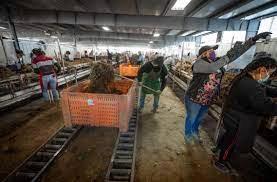
The growers petitioned SCOTUS for certiorari that was granted, and the Court heard oral arguments and then deliberated issuing an opinion in mid-June. Six of the nine justices ruled that the Takings Clause was relevant to the intrusion by the United Farm Workers and that governmental agencies cannot impose regulations that restrict an owner's ability to use his own property. Accordingly, the California law prohibiting employers from interfering with the activities of labor unions on their premises is contrary to the Takings Clause of the Constitution.

|
Reappraisal of Job Opportunities After COVID
|
06/17/2021 |
|
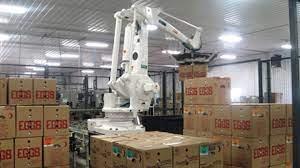 The Federal Reserve incorporates employment data in their decisions regarding interest rates, bond purchases and management of the economy. It is evident that job creation is slowing as denoted by data for March through mid-June. There is a growing realization that many jobs lost during COVID in 2020 may never return. Numerous small businesses that collectively employ a significant proportion of the working population ceased functioning in 2020, despite federal and state support programs. A number of large companies have introduced mechanization in response to a shortage of workers and there has been a general reappraisal of the function and contribution of middle management positions. The Federal Reserve incorporates employment data in their decisions regarding interest rates, bond purchases and management of the economy. It is evident that job creation is slowing as denoted by data for March through mid-June. There is a growing realization that many jobs lost during COVID in 2020 may never return. Numerous small businesses that collectively employ a significant proportion of the working population ceased functioning in 2020, despite federal and state support programs. A number of large companies have introduced mechanization in response to a shortage of workers and there has been a general reappraisal of the function and contribution of middle management positions.
An additional factor relates to both resignations and more importantly retirement, reducing the number of available employees. In May, there was a discrepancy of 7.5 million jobs between current employment and the number of positions available as compared to February 2020. The overhang from COVID is still affecting the number of positions available and the inclination of workers to return to their previous jobs, even if available. It is evident that 2022 will have a different workforce composition compared to pre-COVID 2019.
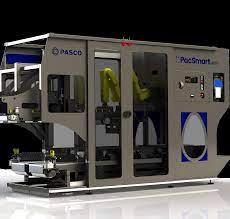 Jobs requiring repetitive manual labor will be replaced progressively by currently available and proven mechanical technology. The most intensive area for labor and the most replaceable in an egg- packing plant involves the transfer of packs to outer containers. Both Sanovo and Moba in addition to independents including Pasco, market case packers that show a beneficial return on capital investment at labor rates that now exceed $15 per hour. Previously egg producers were disinclined to invest in robotics when labor was readily available at lower wage rates than at present. Bar coding, machine vision and integrated IT systems relieve middle management of the pressures of record keeping and aspects of quality control. The design of modern grading and breaking installations lowers manual input for decontamination, as cleaning-in-place is now a feature of most new installations. Jobs requiring repetitive manual labor will be replaced progressively by currently available and proven mechanical technology. The most intensive area for labor and the most replaceable in an egg- packing plant involves the transfer of packs to outer containers. Both Sanovo and Moba in addition to independents including Pasco, market case packers that show a beneficial return on capital investment at labor rates that now exceed $15 per hour. Previously egg producers were disinclined to invest in robotics when labor was readily available at lower wage rates than at present. Bar coding, machine vision and integrated IT systems relieve middle management of the pressures of record keeping and aspects of quality control. The design of modern grading and breaking installations lowers manual input for decontamination, as cleaning-in-place is now a feature of most new installations.
Unfortunately in hen barns, conversion from conventional cage housing to aviaries requires between two to three times the labor requirement and the work performed cannot be easily mechanized. More sophisticated control systems integrating ventilation, lighting, and alarms have reduced reliance on routine decisions on flock management. Advances in technology for injecting vaccines not only enhance the efficiency of administration but also improves accuracy in dosing and consistency in immunizing pullet flocks.
The realization that close to three million in the U.S. workforce have retired following the advent of COVID suggests the need for intensified training to allow workers to advance through the sequential levels of repetitive labor to supervision and then to management. USPOULTRY is providing recruiting grants to universities and colleges to attract new entrants to the industry to replace retirees and to introduce new concepts and skills. Obviously additional personnel with more specific training at all levels will be required as the industry expands and undergoes transition to alternative housing.
The U.S. egg industry underwent changes both in structure and introduction of innovative technology through the first two decades since the millennium. COVID has obviously accelerated this trend and senior management should be attuned to the needs of personnel and their skill sets in planning and capital investment.

|
Task Force on Disruption of Supply Chains a Vehicle of Social Change?
|
06/11/2021 |
|
The Administration has developed a Task Force with Secretary of Agriculture Tom Vilsack as co-chair to evaluate and prevent disruption of supply chains. This initiative is consistent with the Build Back Better approach promoted in pre-election rhetoric. Part of this program will involve investment of more than $4 billion to strengthen the food system through improved production, more efficient processing and distribution and developing marketing opportunities.
|

Secretary USDA |
|
In commenting on the initiative, Secretary Vilsack stated, “The COVID pandemic led to massive disruption for growers and food workers. It exposed a food system that was rigid, consolidated and fragile. Meanwhile those growing, processing and preparing our food are earning less each year in a system that rewards size over all else.” Vilsack added, “The Build Back Better initiative will make meaningful investments to build a food system that is more resilient against shocks and delivers greater value to growers, workers and consumers.”
Areas of investment involving grants, loans and other financing will include:-
- USDA will provide direct assistance, grants, training and technical guidance in food production with special emphasis on farmers and ranchers and agricultural workers who receive a diminishing share of the food dollar.
- USDA will make investments to support new and expanded regional processing capacity to avert future disruptions in supply that may arise from reliance on a few extremely large packing and processing plants.
- USDA will make investments in food system infrastructure including distribution and aggregation to ensure that food is available as and when it is needed. Deficiencies were evident during COVID restrictions.
- USDA will support new and expanded access to markets for a diversity of growers and will emphasize healthy foods given the relative expenditures on healthcare and food.
|
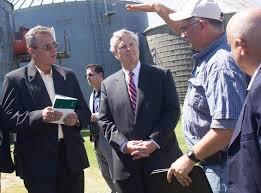
Sec. Vilsack picking up where he left off in 2017. Farmer explaining how high the pile of Dollars should be |
It is evident that agricultural policy under the Administration will prioritize local and regional food production and establish fairer markets for producers. The Administration will focus on minor crops, fruits and vegetables, attempting to limit climate change, increase the income of veterans and traditionally disadvantaged farmers and improve the working conditions of agricultural laborers and plant employees. Clearly the vision for the USDA will to become an agent of social reform consistent with policies of the Administration. This may be to the detriment of large, integrated crop and livestock producers and supporting companies that represent the bulk of our domestic food production and agricultural exports.
|

|
Brazil to Enact Law with Dire Environmental Implications
|
05/21/2021 |
|
 A bill currently approved by the Lower House of the Congress of Brazil has evoked considerable criticism and opposition from both environmental activists in Brazil and the E.U. The bill would relax requirements to license mining, farming projects and infrastructure. A bill currently approved by the Lower House of the Congress of Brazil has evoked considerable criticism and opposition from both environmental activists in Brazil and the E.U. The bill would relax requirements to license mining, farming projects and infrastructure.
A spokesperson for KLP, the largest pension fund in Norway with $80 billion in assets under management stated, "if this dangerous bill passes in the Senate, it will show that the Government is actively seeking to accelerate along its current path towards mass environmental destruction". U.K. supermarkets are also threatening to boycott agricultural products from Brazil if the proposed legislation is approved by the Senate and enacted.
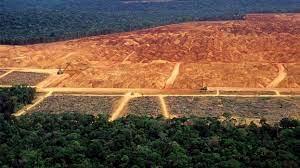 A specific project in contention includes paving a major highway extending into the Amazon. An environmental assessment has shown that this will accelerate deforestation resulting in the clearing of an area equivalent in size to the state of Florida. A specific project in contention includes paving a major highway extending into the Amazon. An environmental assessment has shown that this will accelerate deforestation resulting in the clearing of an area equivalent in size to the state of Florida.
The bill is opposed by nine former Ministers of the Environment in Brazil. It is generally recognized that regulations should be upgraded to facilitate the implementation of responsible projects. Unfortunately given the present Administration and the high level of corruption inherent to politics in Brazil, environmental degradation will be accelerated to the detriment not only to the present and future generations in the nation but to the world at large.

|
Widespread Fraud with Paycheck Protection Program
|
05/20/2021 |
|
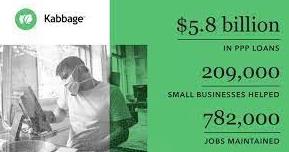 The Paycheck Protection Program signed into law as the CARES Act on March 27th 2020 with $349 billion in funding obviously assisted small businesses to remain in operation but unfortunately attracted fraudsters. Recently ProPublica investigated Kabbage, an online lending platform that was negligent in processing loans for non-existent businesses. Many of the fraudulent applications claimed to be agricultural enterprises. It is estimated that the Small Business Administration approved loans for 55,000 ineligible businesses and that overpayments were extended to 43,000 applicants. The Department of Justice is reviewing the more egregious cases for criminal action. The Paycheck Protection Program signed into law as the CARES Act on March 27th 2020 with $349 billion in funding obviously assisted small businesses to remain in operation but unfortunately attracted fraudsters. Recently ProPublica investigated Kabbage, an online lending platform that was negligent in processing loans for non-existent businesses. Many of the fraudulent applications claimed to be agricultural enterprises. It is estimated that the Small Business Administration approved loans for 55,000 ineligible businesses and that overpayments were extended to 43,000 applicants. The Department of Justice is reviewing the more egregious cases for criminal action.
The ProPublica investigation demonstrated that Kabbage operated with minimal oversight of requests. Their remuneration was based on a fee for each loan processed. This payment structure essentially incentivized the Company into throwing money at any applicant. More conservative and conventional banks declined loans that were advanced by Kabbage and other Fintech enterprises that were lightly regulated. Kabbage and other loan processors received a fee of five percent on loans under $350,000 representing most of the transactions. It is estimated that Kabbage processed 300,000 loans amounting to $7 billion. In August 2020 Kabbage was acquired by American Express.

ProPublica documented questionable practices in evaluating loans, 75 percent of which were approved without review, providing application forms were fully completed. In response to a deluge of applications, Kabbage apparently employed reviewers with inadequate or non-existent training who were provided with incentives to expedite and approve loans. It is unfortunate that a program that was established as an emergency response to a major economic downturn was highjacked by criminals and fraudsters and facilitated by the mendacity of lending institutions acting on behalf of the Federal government.

|
Truck Rates Increasing Sharply
|
05/10/2021 |
|
 The USDA fruit and vegetable truck rates reported on May 4th showed a 70 percent increase compared to the comparable month in 2020. Truck shortages were apparent in California, Colorado, Florida, Michigan, North Carolina and Washington State. Refrigerated produce truck rates were considerably higher as demonstrated by an increase from approximately $6,000 to $10,000 to ship a load from Salinas, CA. to New York State. The increase in cost of a refrigerated load from Vidalia, GA. to New York State was from $3,000 to $5,000. Short-term factors that increased trucking rates included floral imports into Southern Florida for Mother’s Day and a delay in the produce season in the southeast due to unfavorable weather conditions during February and March. There is an obvious shortage of drivers also exacerbated by the Department of Transport Road Check Week over May 4th – 6th when drivers tend to remain off the road. Comparisons between truck rates during March and April 2020 and the current year were also affected by events during the early stages of the COVID pandemic. The USDA fruit and vegetable truck rates reported on May 4th showed a 70 percent increase compared to the comparable month in 2020. Truck shortages were apparent in California, Colorado, Florida, Michigan, North Carolina and Washington State. Refrigerated produce truck rates were considerably higher as demonstrated by an increase from approximately $6,000 to $10,000 to ship a load from Salinas, CA. to New York State. The increase in cost of a refrigerated load from Vidalia, GA. to New York State was from $3,000 to $5,000. Short-term factors that increased trucking rates included floral imports into Southern Florida for Mother’s Day and a delay in the produce season in the southeast due to unfavorable weather conditions during February and March. There is an obvious shortage of drivers also exacerbated by the Department of Transport Road Check Week over May 4th – 6th when drivers tend to remain off the road. Comparisons between truck rates during March and April 2020 and the current year were also affected by events during the early stages of the COVID pandemic.
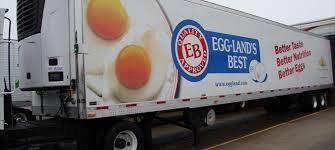 In view of uncertainties, shippers are negotiating contracts of short duration also contributing to higher rates. Some drivers are apparently benefiting from the Federal economic stimulus programs that are a disincentive to work. Additional factors that are influencing the shortage of drivers and hence an increase in rates include competing driver-jobs close to home, failed drug tests and competitive job opportunities in construction. Refrigerated produce transport is also competing with non-refrigerated loads because of delays associated with loading and unloading food products. In view of uncertainties, shippers are negotiating contracts of short duration also contributing to higher rates. Some drivers are apparently benefiting from the Federal economic stimulus programs that are a disincentive to work. Additional factors that are influencing the shortage of drivers and hence an increase in rates include competing driver-jobs close to home, failed drug tests and competitive job opportunities in construction. Refrigerated produce transport is also competing with non-refrigerated loads because of delays associated with loading and unloading food products.
Given the current refrigerated rates between Chicago and Southern California ranging from $7,500 to $8,600 it is estimated that transport represent 3.5 cents per dozen to truck eggs from the Midwest to Southern California.

|
Vaccine Hesitancy Represents a Challenge to the Control of COVID
|
04/29/2021 |
|
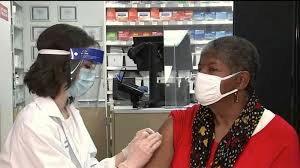 It is axiomatic that without attaining "herd immunity" that involves vaccinating 80 percent of the U.S. population, COVID will persist. The larger the proportion of our population that remains susceptible, the higher is the risk of variants both introduced and arising by spontaneous mutation. Given that children under the age of 14 will probably not be vaccinated until the end of summer, approximately 15 percent of our population will remain susceptible. If a substantial proportion of eligible adults decline to be vaccinated, achieving solid herd immunity will be an unattainable goal. It is axiomatic that without attaining "herd immunity" that involves vaccinating 80 percent of the U.S. population, COVID will persist. The larger the proportion of our population that remains susceptible, the higher is the risk of variants both introduced and arising by spontaneous mutation. Given that children under the age of 14 will probably not be vaccinated until the end of summer, approximately 15 percent of our population will remain susceptible. If a substantial proportion of eligible adults decline to be vaccinated, achieving solid herd immunity will be an unattainable goal.
There are indications that attitudes mitigating against vaccination are softening. During August 2019 before COVID vaccines became available, polls suggested that 70 percent of those surveyed expressed either a wait-and-see response or averred that they were not likely to receive a vaccine. By early April, almost 71 percent of respondents stated that they were either likely to be vaccinated or had received an mRNA vaccine.
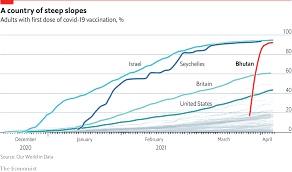 Surprisingly the pause in administration of the Johnson & Johnson vaccine has not apparently created uncertainty or exacerbated hesitancy. Among many respondents, there was no measurable effect arising from the FDA two-week moratorium on administration to review data on post-vaccination clotting reactions attributed to this product in the U.S. and the E.U. The problem that affected approximately eight recipients out of eight million doses in the U.S. strengthened confidence in the regulatory process. With increasing supplies of the two mRNA vaccines (Pfizer and Moderna) and restoration of the J&J single-dose product, it is apparent that availability of vaccines will no longer represent a restraint to achieving broader immunization. Surprisingly the pause in administration of the Johnson & Johnson vaccine has not apparently created uncertainty or exacerbated hesitancy. Among many respondents, there was no measurable effect arising from the FDA two-week moratorium on administration to review data on post-vaccination clotting reactions attributed to this product in the U.S. and the E.U. The problem that affected approximately eight recipients out of eight million doses in the U.S. strengthened confidence in the regulatory process. With increasing supplies of the two mRNA vaccines (Pfizer and Moderna) and restoration of the J&J single-dose product, it is apparent that availability of vaccines will no longer represent a restraint to achieving broader immunization.
Acceptance by communities of color has improved following the efforts of local physicians and making vaccines more readily available to those that lack mobility. The problem now emerging is the demographic that is opposed to the vaccine, citing either religious or political justification. Further outreach will be required to convince deniers of the need to be vaccinated and to assist the hesitant to recognize both the safety and the communal need to establish a high level of protection.
The CDC recommendation issued on April 27th that vaccinated individuals do not have to wear masks while outside is an inducement to be vaccinated. The quicker our population can be immunized the sooner we can restore the economy and return to a semblance of our life before COVID.

|
American Egg Board Financials, Fiscal 2020
|
04/27/2021 |
|
 The American Egg Board (AEB) released the Annual Report for Fiscal 2020 outlining programs, achievements and finances. The AEB posted total assets of $10.9 million, down $1.58 million from Fiscal 2019 attributed mainly to a $1.4 million reduction in cash and certificates of deposit. The decrease was due to the use of cash to offset the $4.18 million excess of expenses over revenue in 2019. Deficits over previous years have resulted in a decline in equity amounting to $2.47 million from 2019 to 2020. The American Egg Board (AEB) released the Annual Report for Fiscal 2020 outlining programs, achievements and finances. The AEB posted total assets of $10.9 million, down $1.58 million from Fiscal 2019 attributed mainly to a $1.4 million reduction in cash and certificates of deposit. The decrease was due to the use of cash to offset the $4.18 million excess of expenses over revenue in 2019. Deficits over previous years have resulted in a decline in equity amounting to $2.47 million from 2019 to 2020.
Total revenue decreased by $5.7 million from 2019 to $23.7 million in 2020. The major contributor to the reduction was the decrease in interest income associated with lower rates and a lower holding of certificates of deposit.
|

Emily Metz CEO AEB |
|
Total program expenses were reduced by 9.9 percent to $24.94 million. Consumer Marketing expenditure was reduced by 22.1 percent to $12.6 million with decreases in the three components, Consumer Marketing, Industry Programs, and State Support. Market Development was relatively stable with a 1.4 percent decline to $7.06 million with increases in Food Service activities offset by reductions in Egg Product Marketing, Exports and Eggs in Schools justified by COVID restrictions.
Total administrative expenses amounted to $1.2 million representing 5.1 percent of revenue. This compares favorably to fiscal 2019 with an expenditure of $1.6 million or 6.3 percent of revenue. The difference was attributed to the lower cost of Board meetings using zoom compared to in-person attendance. Based on the inordinately large Board, the use of remote meetings should be considered for subsequent years as the saving represented $390,000 or close to a third of the administrative expenses category.
The important question is how the individual programs including Consumer Marketing, Market Development and Nutrition actually contributed to increased consumption, thereby benefitting the Industry. This will be the challenge facing the management and the Board as encompassed in the recently devised Strategic Plan. Egg consumption in 2017 was 282.1 per capita. In 2021 it is estimated that consumption will increase to 288.2 eggs, a difference of 6.1 eggs or approximately 1.2 percent per year over the period during which approximately $120 million was expended on programs. We do not know what consumption may have been without the AEB and its activities, given competition from other foods. It is evident that to maintain the confidence and support of the industry, quantitative increases in demand will be required. Since assessment income represents over 99 percent of revenue, it will be incumbent on management to justify programs that will collectively impose a cost of 0.3 cents per dozen over 8.3 billion dozen in 2021.
|

|
Farmers to Families Food Box Program Concluded
|
04/19/2021 |
|
 There have been five rounds of the Farmers to Families Food Box Program initiated by the previous Administration in 2020. Since inception, 157 million boxes have been distributed benefiting farmers and recipients. Unfortunately the program that was implemented as an emergency measure by then Secretary Sonny Perdue, was characterized by inefficient management, high cost, inequitable distribution, waste, and unexplained losses. The program also developed a strong political direction with insertion of flyers in boxes to solicit support for the 2020 Presidential Election. There have been five rounds of the Farmers to Families Food Box Program initiated by the previous Administration in 2020. Since inception, 157 million boxes have been distributed benefiting farmers and recipients. Unfortunately the program that was implemented as an emergency measure by then Secretary Sonny Perdue, was characterized by inefficient management, high cost, inequitable distribution, waste, and unexplained losses. The program also developed a strong political direction with insertion of flyers in boxes to solicit support for the 2020 Presidential Election.
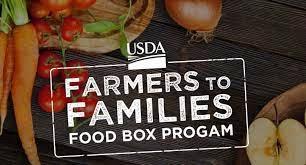
In a recent hearing of the House Appropriation Subcommittee on Agriculture, Rural Development, Food and Drug Administration, Secretary Tom Vilsak promised to take the best of the Farmers to Families Food Box Program to be incorporated in The Emergency Food Assistance Program (TEFAP) that will run through September 30th. The USDA will work closely with food banks and will follow their advice in providing more fresh produce.
Recenly 80 members of the United Fresh Produce Association who participated in the Farmers to Families Food Box Program submitted 30 recommendations to USDA to effect improvements. It is anticipated that boxes of fresh produce will weigh from 10 to 12 pounds, will contain a variety of vegetables with limits on root vegetables, but include fruit with a shelf-life of seven to 10 days once delivered to a distribution point. It is hoped that the benefits of the early Farmers to Families Food Box program will be retained but with improvements in the subsequent version to be developed by the USDA. Given that food banks have the capability to store and distribute eggs donated by producers, could USDA include shell eggs in the new program?

|
Estimate of Non-Diagnosed COVID Cases in the U.S.
|
04/05/2021 |
|
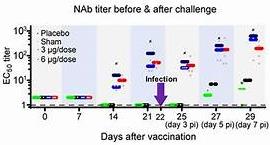 It was evident from the beginning of the COVID outbreak that many individuals were infected with SARS-CoV-2 but did not develop symptoms although they were transmitters of the virus contributing to ascending incidence rates. It was evident from the beginning of the COVID outbreak that many individuals were infected with SARS-CoV-2 but did not develop symptoms although they were transmitters of the virus contributing to ascending incidence rates.
Scientists affiliated with the National Institutes of Health(NIH)conducted a survey on U.S. adults from early May through late July 2020 to determine the prevalence of antibodies in asymptomatic individuals. A total of 9,028 blood samples were examined from 11,382 volunteers reflecting the U.S. population that had previously not been diagnosed with COVID-19. The presence of antibodies was determined in 4.6 percent of these undiagnosed cases. Within this value there was marked regional and ethnic diversity. Younger participants yielded a proportion of 5.9 p ercent, black/African American, 14.2 percent, Hispanic 6.1 percent and urban residents 5.3 percent. The data indicated that there were 4.8 unrecognized cases for every diagnosis of COVID-19 during the period of review. This would correspond to 16.8 million undiagnosed cases in 2020 by late July. ercent, black/African American, 14.2 percent, Hispanic 6.1 percent and urban residents 5.3 percent. The data indicated that there were 4.8 unrecognized cases for every diagnosis of COVID-19 during the period of review. This would correspond to 16.8 million undiagnosed cases in 2020 by late July.
Effective April 4th there have been 30.8 million diagnosed cases with 555,000 fatalities. The NIH data suggest a total of 147 million actual infections.
Daily Trends in COVID-19 Cases in the United States Reported to CDC 7-Day moving average
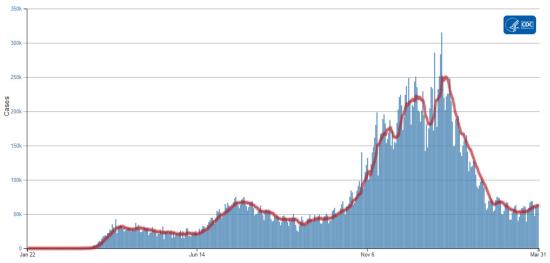
To date 69 million people have received one dose of vaccine and 37 million are fully vaccinated. This implies that approximately 150 of the U.S population have an acceptable level of immunity since many of the undiagnosed individuals were vaccinated. At present 35 percent of the U.S. population is immune, some distance from the desirable 80 percent or 260 million to achieve herd immunity. With a rate of vaccination of 2.8 to 3.0 million doses per day those eligible and willing to receive vaccine will have been protected by mid-June. Those under 18 years of age representing 24 percent of the population will only receive a COVID vaccine in November in decreasing age categories following Phase 3 trials in progress. Those disinclined or hesitant to receive an approved vaccine represent a risk to the entire population as their susceptibility provides an opportunity for the emergence and dissemination of variants of SARS-CoV-2.

|
Pressure Mounting to Recycle Plastics
|
04/03/2021 |
|
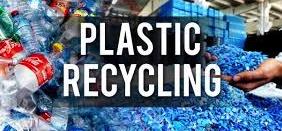 A number of environmental advocacy groups and regional community organizations have petitioned to President Joe Biden to expedite the Presidential Plastics Action Plan. The objective will be to reduce production of single-use plastics and place a moratorium on new manufacturing facilities. A number of environmental advocacy groups and regional community organizations have petitioned to President Joe Biden to expedite the Presidential Plastics Action Plan. The objective will be to reduce production of single-use plastics and place a moratorium on new manufacturing facilities.
Senator Jeff Merkley (D-OR) and Representative Alan Lowenthal (D-CA) have introduced the Breakfree From Plastic Pollution Act into their respective Chambers.
 President Biden has already issued an Executive Order addressing climate change with recycling to be incorporated into the program. It is anticipated that in addition to national action, environmentalists will initiate action at the local level with publicity directed against specific brands, manufacturing plants and incinerators. President Biden has already issued an Executive Order addressing climate change with recycling to be incorporated into the program. It is anticipated that in addition to national action, environmentalists will initiate action at the local level with publicity directed against specific brands, manufacturing plants and incinerators.
It is evident that many of the plastic plants are located in areas with a predominance of minority residents. A case in point is the concentration of petrochemical facilities up-river from New Orleans. Currently there is opposition to a proposed Formosa Plastics complex in St. James Parish LA. Adjacent to the Mississippi River. Community groups are pressing for the concept of environmental justice with local and national politicians involved.
Earthworks, an international group that uses tort law to oppose new and existing plants, is shifting emphasis from oil and gas towards plastics. The organization will strenuously oppose permits for new and expanded plastic facilities. Concurrently the Global Alliance for Incinerator Alternatives will be active in the area of disposal of plastic and will advocate for recycling.
According to Chemical and Engineering News published by the American Chemical Society, the industry has formed the Alliance to End Plastic Waste with membership including Shell, Formosa, and ExxonMobil. The Alliance through its commercial affiliations will raise $1.5 billion over five years to support efforts in education and environmental remediation. Over the past three years member companies of the American Chemistry Council have collectively invested $5.3 billion in 64 recycling projects in the U.S.
Producers of polystyrene and PET egg cartons are encouraged to develop re-cycling programs and to apply emerging technology to reduce dependence on virgin plastic.

|
Iowa House Pass “Ag Gag” Bill
|
03/28/2021 |
|
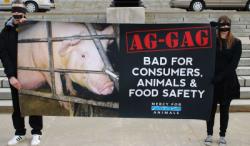 The Iowa House has passed Bill 775 making it illegal to enter private property without consent to obtain samples from the environment or livestock. The Bill has been sent to the State Senate for their consideration, amendment and passage. The Iowa House has passed Bill 775 making it illegal to enter private property without consent to obtain samples from the environment or livestock. The Bill has been sent to the State Senate for their consideration, amendment and passage.
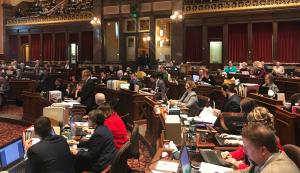 Federal courts have consistently ruled various iterations of all State “Ag Gag” laws, as unconstitutional based on free-speech considerations. House File 775 replaces a previous law enacted over two years ago. This was the subject of a verdict against the State of Iowa with the Plaintiff animal rights group receiving legal fees. Federal courts have consistently ruled various iterations of all State “Ag Gag” laws, as unconstitutional based on free-speech considerations. House File 775 replaces a previous law enacted over two years ago. This was the subject of a verdict against the State of Iowa with the Plaintiff animal rights group receiving legal fees.
To date no challenged Ag-Gag law has been supported by a Federal Court. It is about time legislatures stopped passing "feel-good" laws in response to farmers' associations and corporate lobbying. Lawmakers will either have to enact carefully crafted legislation or alternatively persuade their constituents to become more transparent and media conscious taking the initiative to promote positive aspects of intensive livestock production. I frequently advise clients that if they would be concerned to come to work on a Monday morning to find a 60-Minutes Crew on their doorstep, then they need to do some serious introspection, evaluation and where necessary correction.

|
National Grocers’ Association Calling for Federal Control Over Large Buyers-Implications for Egg Producers
|
03/23/2021 |
|
 The National Grocers’ Association (NGA) representing small independent food stores is calling for federal legislation to limit the ability of major chains and club stores to engage in anticompetitive behavior. The NGA has stated that their membership is at a disadvantage in sourcing products and package sizes when competing with chains including Walmart, Amazon, Costco, Target, and the ‘Dollar’ stores. The NGA maintain that the large chains by virtue of their power obtain lower pricing and preferential supply. The plight of independent grocers was evidenced during the COVID outbreak when restocking problems occurred. The National Grocers’ Association (NGA) representing small independent food stores is calling for federal legislation to limit the ability of major chains and club stores to engage in anticompetitive behavior. The NGA has stated that their membership is at a disadvantage in sourcing products and package sizes when competing with chains including Walmart, Amazon, Costco, Target, and the ‘Dollar’ stores. The NGA maintain that the large chains by virtue of their power obtain lower pricing and preferential supply. The plight of independent grocers was evidenced during the COVID outbreak when restocking problems occurred.
The president of the NGA, Greg Ferrara, noted “Our members compete in markets that are increasingly dominated by a handful of national and international chains who will tremendous economic power to the detriment of America’s food supply.” He added, “Independent grocers are increasingly struggling in the face of the growing influence of so-called power buyers who act as gatekeepers to grocery shelf space and control terms of trade in our industry.”
 It is difficult to see how the federal government could intervene and establish either policies or legislation that could benefit a specific class of retailer. Obviously if there was collusion between major chains constituting anticompetitive behavior, the Department of Justice could act if specific laws were broken. It is difficult to see how the federal government could intervene and establish either policies or legislation that could benefit a specific class of retailer. Obviously if there was collusion between major chains constituting anticompetitive behavior, the Department of Justice could act if specific laws were broken.
The situation regarding the NGA could find a parallel in the egg industry where fewer buyers are responsible for an increasingly higher proportion of the shell egg market. The situation is compounded by the self-fulfilling prophecy of the Urner-Barry quotation. This benchmark frequently places the egg industry in a difficult position since commercial transactions based on the Urner-Barry price discovery service amplifies both extreme rises and significant falls in price distorting markets. The same can be said of machine trading that can markedly affect specific indexes, sectors or even individual equities. At least with respect to the major stock markets, there are circuit breakers that can limit extreme moves. A CME futures contract based on Midwest large would be preferable and more equitable than the current Urner-Barry quotation.

|
Evaluation of Farm to Families Boxes
|
03/17/2021 |
|
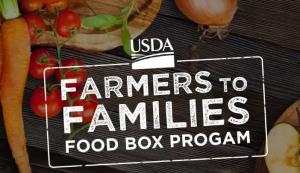 The National Sustainable Agriculture Coalition and the Food Law and Policy Clinic of Harvard Law School recently concluded an evaluation of the Farmers to Families Food Box Program. While acknowledging advantages and benefits, the extensive report incorporated recommendations in the event that USDA continues the program. The National Sustainable Agriculture Coalition and the Food Law and Policy Clinic of Harvard Law School recently concluded an evaluation of the Farmers to Families Food Box Program. While acknowledging advantages and benefits, the extensive report incorporated recommendations in the event that USDA continues the program.
It is acknowledged that millions of boxes of fresh produce were distributed to people in need. The program did assist job retention among distributors and benefited some small and medium-size farms. With experience, Administration of the program that was initiated as an emergency, progressively improved.
The evaluation disclosed failure to support minority and women-owned farms and disproportionately excluded small and mid-sized farm. The program was extremely expensive in relation to the value of produce and food items distributed especially with the early rounds of the program. In certain areas, the program contributed to food waste, ironically the program was established to preserve produce through an efficient chain of distribution.
|
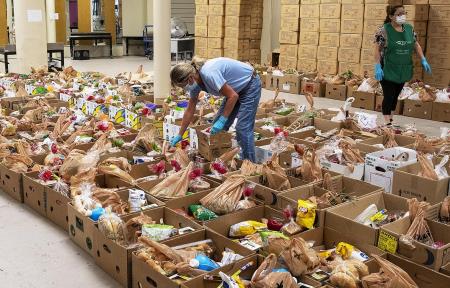 |
Many observers at the time the program was initiated regarded it as a political boondoggle. Food assistance could have been rendered to the needy more simply by expanding the SNAP and EBT programs. In late 2020, the Farmers to Families Food Box Program was misused for political purposes with pro-Administration flyers inserted into boxes.
Recommendations for any future program include:-
- Distribution of produce-only boxes
- Establish best practice guidance to ensure equity in distribution
- Improve management of the program including a requirement that contractors submit plans to address food waste
- Allow specific tax benefits to encourage donations
- Evaluate bid prices based on reasonable cost
- Ensure that best practices in food distribution and supply chain management are incorporated into the program.
|

|
FDA Responds to Congressional Report on Contaminated Baby Food
|
03/10/2021 |
|
 On February 8th EGG-NEWS editorialized on the report from the Sub-Committee on Economic and Consumer Policy for the House Committee on Oversight and Reform, relating to revelations of arsenic and other heavy metal contamination of baby food. The report included recommendations to the FDA with respect to standards and mandatory testing for the presence of these contaminants. On February 8th EGG-NEWS editorialized on the report from the Sub-Committee on Economic and Consumer Policy for the House Committee on Oversight and Reform, relating to revelations of arsenic and other heavy metal contamination of baby food. The report included recommendations to the FDA with respect to standards and mandatory testing for the presence of these contaminants.
 On March 5th the FDA Center for Food Safety and Applied Nutrition issued a letter to manufacturers of baby and infant food under signature of the Director, Dr. Susan Mayne, emphasizing the need to comply with Current Good Manufacturing Practice, Hazard Analysis and Risk-Based Preventive Controls for Human Food issued on September 17th 2015. On March 5th the FDA Center for Food Safety and Applied Nutrition issued a letter to manufacturers of baby and infant food under signature of the Director, Dr. Susan Mayne, emphasizing the need to comply with Current Good Manufacturing Practice, Hazard Analysis and Risk-Based Preventive Controls for Human Food issued on September 17th 2015.
The FDA will issue guidance to identify action levels for contaminants in key foods. The Agency will increase inspections resulting in compliance and enforcement actions. FDA will also increase the frequency of sampling of foods for babies and young children.
 Cooperation will be extended to other government agencies, academia, and industry to support research and development and will disseminate additional safety information on toxic elements in foods for babies and young children. An action level for inorganic arsenic in infant rice cereal will be finalized. The FDA will soon convene a public workshop to discuss the science surrounding exposure and health impacts. The agency is committed to reducing exposure to toxic elements in foods and will motivate efforts to achieve this objective. Cooperation will be extended to other government agencies, academia, and industry to support research and development and will disseminate additional safety information on toxic elements in foods for babies and young children. An action level for inorganic arsenic in infant rice cereal will be finalized. The FDA will soon convene a public workshop to discuss the science surrounding exposure and health impacts. The agency is committed to reducing exposure to toxic elements in foods and will motivate efforts to achieve this objective.

|
Emergence of New COVID Variant
|
02/25/2021 |
|
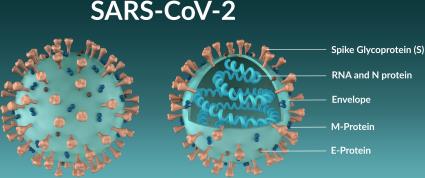 The B.1.525 variant that was detected in December 2020 in the U.K. and Nigeria is now present in 11 other nations including the U.S., Australia and in the E.U. The B.1.525 variant that was detected in December 2020 in the U.K. and Nigeria is now present in 11 other nations including the U.S., Australia and in the E.U.
The B.1.525 lineage includes a number of mutations involving the spike protein with a specific change designated E484K (colloquially referred to as ‘EEEK’!). This mutation is also common to the South African B.1.351 and the Brazilian P.1 variants and is similar to the now dominant B.1.1.7 variant responsible for extensive transmission in the U.K. According to preliminary studies, the B.1.525 variant may be more transmissible and may express greater pathogenicity compared to the 2019 conventional strain.
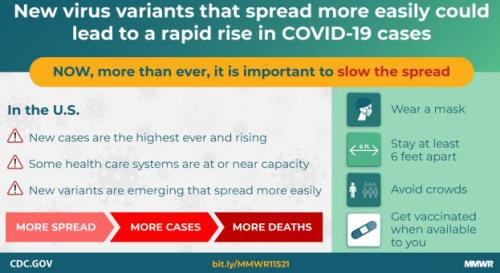 Evidence from South Africa and Brazil suggests that B.1.525 in common with B.1.351 may be able to evade antibodies against the SARS-Cov-2 conventional strain. Accordingly both Moderna and Pfizer are working on modifications to their vaccines to immunize against the E484K mutation. It is emerging that as with other coronaviruses, variants will continually emerge in susceptible populations. Accordingly annual or semi-annual booster vaccinations may be required for high-risk demographics or for more general administration. Evidence from South Africa and Brazil suggests that B.1.525 in common with B.1.351 may be able to evade antibodies against the SARS-Cov-2 conventional strain. Accordingly both Moderna and Pfizer are working on modifications to their vaccines to immunize against the E484K mutation. It is emerging that as with other coronaviruses, variants will continually emerge in susceptible populations. Accordingly annual or semi-annual booster vaccinations may be required for high-risk demographics or for more general administration.

|
WHO Investigation Panel Reports on the Origin of COVID in China
|
02/15/2021 |
|
An international team assembled by the World Health Organization (WHO) reported on February 9th on their investigations into the origins of COVID-19. The four-week evaluation included two weeks of quarantine, allowing Zoom consultation with counterparts in the China National Health Commission followed by site visits and direct discussions.
The Blue-Ribbon Panel chaired by Dr. Peter Embarek advanced a hypothesis that COVID arose by extension from an animal host passing through an intermediary species and then to humans. This hypothesis corresponds to an understanding of the emergence of Nipah and Hendra viruses, SARS and MERS. After visits to the Wuhan Institute of Virology, the Hunan Seafood Market, the Wuhan Center for Disease Control, various hospitals where interviews were conducted with scientists and clinicians, there is as yet no certainty as to the specific hosts or mechanism for the adaptations or when they occurred.
|

Dr. Peter Ben Embarek Leader
of the WHO Investigation Panel |
|
The WHO panel determined that 174 confirmed cases were diagnosed in early December 2019 in Wuhan, presuming many thousand infected individuals at this time. There were 13 different variants of the SARS-CoV-2 virus identified by genome sequencing suggesting circulation of the virus for a prolonged period prior to December. China is currently examining 200,000 retention serum samples from blood banks to ascertain the temporal and spatial presence of specific antibodies against SARS-CoV-2. 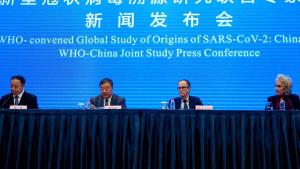 It is noted that research extending over a number of years was required to identify the origin of SARS and that the source of Ebolavirus has yet to be determined. It is noted that research extending over a number of years was required to identify the origin of SARS and that the source of Ebolavirus has yet to be determined.
The Commission clearly rejected the unfounded speculation that the virus "leaked" or was deliberately released from the Wuhan Institute of Virology. This canard is regarded as unjustified Sinophobic rhetoric for domestic U.S. political purposes.
A recent publication notes that viruses similar to SARS-CoV-2 have been actively circulating in bats in Southeast Asia for some time. A recent study demonstrated a related coronavirus in Rhinolophus bats in a cave in Southern Thailand. This virus was isolated from a pangolin in the same area. The Thai bat virus is similar to a bat virus isolated in Yunnan Province in China. The geographic extent of the related bat viruses includes Japan, China and Thailand encompassing a 3,000-mile range.
It is understood that China was relatively cooperative with the WHO panel despite sensitivity to international criticism arising from an obvious true-to-form initial cover-up of the emerging infection. Health authorities in China did not provide an opportunity for the Panel to review raw data on cases that would have been important in determining when and where the infection emerged.
Rejoining the WHO will be to the benefit of the U.S. both with respect to COVID-19 but also in anticipation of the next emerging disease that is considered inevitable.
|

|
Unions Leverage COVID to Negotiate Pay Rises and Benefits
|
02/03/2021 |
|
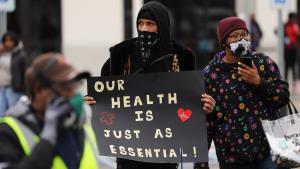 Concern over COVID-19 and its impact on essential, relatively low-paid workers has enabled the Teamsters Union and other unions including the United Food and Commercial Workers Union to negotiate increased pay, benefits, and protection during the ongoing COVID-19 pandemic. Concern over COVID-19 and its impact on essential, relatively low-paid workers has enabled the Teamsters Union and other unions including the United Food and Commercial Workers Union to negotiate increased pay, benefits, and protection during the ongoing COVID-19 pandemic.
On January 23rd, Teamsters Local 202 settled with the management of the Hunts Point Terminal Produce Market  following a two week strike. This facility is the largest wholesale produce market in the world and is located in the South Bronx, the epicenter of COVID-19 in New York City. The market serves a population of 22 million, and is responsible for 20,000 direct jobs including approximately 10,000 unionized workers. The union demand for a $1 per hour rise was eventually negotiated to a minimum raise of 70 cents per hour in 2021, rising to $1.85 over three years. following a two week strike. This facility is the largest wholesale produce market in the world and is located in the South Bronx, the epicenter of COVID-19 in New York City. The market serves a population of 22 million, and is responsible for 20,000 direct jobs including approximately 10,000 unionized workers. The union demand for a $1 per hour rise was eventually negotiated to a minimum raise of 70 cents per hour in 2021, rising to $1.85 over three years.
Apart from the Hunts Point Market strike, a number of facilities employing workers represented by the Teamsters Union have organized strikes and demonstrations. United Natural Foods Inc. was impacted by work stoppage at their Ft. Wayne, Indiana distribution center. U.S Foods was able to prevent strike action by Teamsters Local 104 in Tucson, AZ by negotiating over the issue of COVID protection. Unionised nurses and hospital employees initiated work action in Chicago based on a 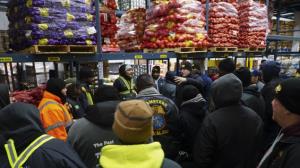 shortage of PPE. shortage of PPE.
It is evident that the threat of COVID among workers has created insecurity and uncertainty in addition to obvious financial loss and hardship for those infected. Unions have gained prominence nationally as apparent protectors of their membership. The problems involving Unions would not have been as severe had OSHA and CDC been more forceful in issuing standards and had relevant federal agencies cooperated with individual states to provide PPE and other resources. COVID-19 in 2020 was a wakeup call and it is hoped that the lessons learned will be applied to prevent future outbreaks and to alleviate the health and financial effects of any subsequent widescale disease.

|
HSUS Crowing Over Conversion to Cage Free
|
01/29/2021 |
|
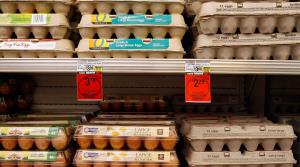 In a January 28th release, Kitty Block, CEO of the Humane Society of the United States (HSUS) listed companies converting entirely to cage-free sourcing of eggs. These include Nestle, Mondelez, both manufacturers; Aramark, a food service company; QSR chain Arby's and coffee chains under JAB ownership. In a January 28th release, Kitty Block, CEO of the Humane Society of the United States (HSUS) listed companies converting entirely to cage-free sourcing of eggs. These include Nestle, Mondelez, both manufacturers; Aramark, a food service company; QSR chain Arby's and coffee chains under JAB ownership.
Collectively these companies represent a small proportion of total shell egg and egg liquid demand. Unlike retailers with narrow margins and faced with competition these users of eggs are in a position to pass on increased costs to customers.
Other companies including Compass Group, a food service supplier; General Mills, a food producer and Blooming Brands, operator of casual dining restaurants anticipate conversion by 2023.
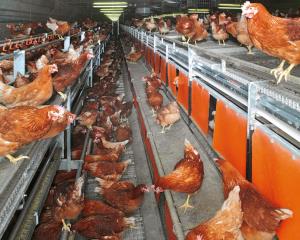 It is a matter of record that currently 79.8 million hens out of a total population of a nominal 320 million in production are housed in alternative systems to cages including barns and aviaries. This represents 25 percent of the production flock, but 35.2 percent of a presumed flock of 224 million producing for the shell egg market. In reality progress in converting from cage to cage- free slowed in the second half of 2020 mainly due to depressed prices associated with the retraction in the food service and restaurant sectors. Eat-at-home has increased demand for shell eggs, but prevailing economic conditions favor generic eggs based on price. The HSUS should recognize that while most people would support cage-free production, they are not willing to back this sentiment with their wallets. It is a matter of record that currently 79.8 million hens out of a total population of a nominal 320 million in production are housed in alternative systems to cages including barns and aviaries. This represents 25 percent of the production flock, but 35.2 percent of a presumed flock of 224 million producing for the shell egg market. In reality progress in converting from cage to cage- free slowed in the second half of 2020 mainly due to depressed prices associated with the retraction in the food service and restaurant sectors. Eat-at-home has increased demand for shell eggs, but prevailing economic conditions favor generic eggs based on price. The HSUS should recognize that while most people would support cage-free production, they are not willing to back this sentiment with their wallets.
EGG-NEWS is in favor of the principle of choice with a range of products reflecting housing systems as diverse as traditional cages, colony modules, barns, aviaries through to pasture with consumers exercising their best judgment in selection applying trade-offs with concern over “welfare” and price.
Organic production that represents approximately 17 million hens or 20 percent of non-caged flocks are by definition non-caged with nominal outside access. Apart from this category ballot initiatives in California and New England states and State agreements have driven conversion to cage-free housing. The initial efforts by HSUS and kindred organizations to coerce food service companies, retailers and manufactures to convert to cage-free under the direction of Wayne Pacelle, erstwhile CEO of HSUS appear to have lost impact.
Reconciliation of USDA monthly cage-free reports and retail data suggests that as many as a third of organic and cage-free eggs may in fact be down-marketed and sold as generics given the disparity between supply and consumers’ willingness to pay. The rate of conversion to cage-free housing is now out of the control of the HSUS and has devolved into a rational marketing situation. Some affluent demographics with disposable income will be willing to pay a premium for eggs derived from a specific system. The bulk of consumers with budget constraints should not be forced to pay a “Pacelle Tax” by being deprived of lower priced eggs on the shelf.

|
Hunger in America
|
01/14/2021 |
|
 According to the U.S. Census Bureau, Household Survey released during the first week of January, approximately18 percent of adults living with children reported their household did not get sufficient food to eat over the previous seven-day period. This is four times the level recorded by surveys conducted in 2019. The survey covering the period December 9th to 21st, 2020 determined that 29 million adults reported that their household sometimes did not get enough to eat over the past seven days; approximately 2 million more households were in need of food during November with 7 million adults since August. Approximately 90 million adults or 38 percent of those surveyed reported that it was difficult for their households to pay for usual expenses including rent and utilities over a seven-day period. This figure was 13 million more than in August 2020. According to the U.S. Census Bureau, Household Survey released during the first week of January, approximately18 percent of adults living with children reported their household did not get sufficient food to eat over the previous seven-day period. This is four times the level recorded by surveys conducted in 2019. The survey covering the period December 9th to 21st, 2020 determined that 29 million adults reported that their household sometimes did not get enough to eat over the past seven days; approximately 2 million more households were in need of food during November with 7 million adults since August. Approximately 90 million adults or 38 percent of those surveyed reported that it was difficult for their households to pay for usual expenses including rent and utilities over a seven-day period. This figure was 13 million more than in August 2020.
Despite passage of the CARES Act, millions of families are in need including unemployment benefits, food assistance and help with rent payment. Jobless benefits expire during March 2021 and aid to states and tribal nations is currently insufficient to provide assistance. The Census Bureau anticipates that the undesirable health and economic situation in the Nation will persist through mid-2021.
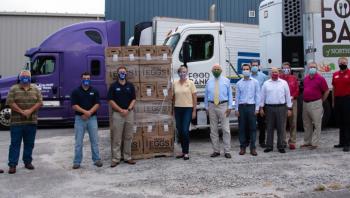 There are indications that an additional CARES support package will be placed before the 117th Congress by the incoming Administration incorporating additional supplementary checks, intensified vaccination to restore the economy and protection from eviction. There are indications that an additional CARES support package will be placed before the 117th Congress by the incoming Administration incorporating additional supplementary checks, intensified vaccination to restore the economy and protection from eviction.
In 2020 egg producers were actively generous in donating shell eggs and products to local food banks to assist the needy. This civic activity will continue in our current year of challenge.

|
Reversing the Relocation of USDA ERS and NIFA?
|
01/06/2021 |
|
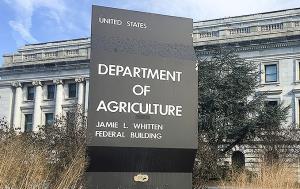 EGG-NEWS previously commented extensively and forcefully on the negative aspects of the USDA action to transfer the Economic Research Service (ERS) and the National Institute of Food and Agriculture (NIFA) from Washington D.C. to Kansas City. EGG-NEWS previously commented extensively and forcefully on the negative aspects of the USDA action to transfer the Economic Research Service (ERS) and the National Institute of Food and Agriculture (NIFA) from Washington D.C. to Kansas City.
USDA Secretary, Dr. Sonny Perdue claimed that the motivation was to place USDA personnel "near their constituency-the farmers". This is arrant nonsense. Economists and specialists involved in the activities of the ERS and the NIFA are not involved in walking fields or interacting on a day-to-day basis with farmers. Informed observers in academia and industry and veterans of the Agencies regarded the action by the Administration, dutifully implemented by USDA Secretary Dr. Perdue, as an effort to deemphasize studies on sustainability, climate change and trade policy. By uprooting the Agencies from their D.C. location the Administration shed senior economists and scientists who expressed views and published research contrary to prevailing policy and “alternative facts”.
As expected, key personnel with years of experience were disinclined to move from Washington and resigned en masse finding opportunities in academia, think-tanks, producer-associations and industry. Replacements of equivalent calibre were not hired and critical research and reports on studies relating to conservation, nutrition and economics have been delayed or cancelled. Former USDA Chief Economist, Dr. Joseph Glauber stated, "it's hard to pretend it never happened". He added, "you've uprooted everyone's lives, you had all these people quit and it’s a tough situation".
Remedying the situation by moving relocated employees and new hires back to Washington will be an expensive and disruptive process antithetical to the second justification that the move would save money, a position that at the time was discredited. At the request of USDA, the states of Missouri and Kansas invested in incentives to host the relocated agencies that will require some form of reimbursement in the event of a return to Washington D.C.
The question facing the incoming administration and Secretary-designate Tom Vilsack will be to either retain the agencies in their current location with recruitment of suitable personnel or to allocate funds for the move back to Washington, DC.
The previous commentary on the issue is repreoduced for the benefit of subscribers.

|
Dairy Industry Subject to Negative Publicity on Welfare: Implications for Egg Production
|
12/31/2020 |
|
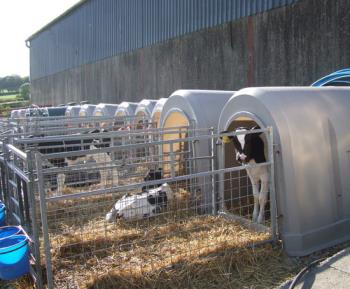 The U.S. dairy industry, impacted by declining sales of liquid milk and competition from alternatives is now coming under scrutiny for alleged violation of welfare standards. Having achieved a measure of success in forcing egg producers to transition to alternative housing systems, animal rights advocates have transferred their opposition to milk production. The U.S. dairy industry, impacted by declining sales of liquid milk and competition from alternatives is now coming under scrutiny for alleged violation of welfare standards. Having achieved a measure of success in forcing egg producers to transition to alternative housing systems, animal rights advocates have transferred their opposition to milk production.
As with eggs, pork and beef production there will always be “bad actors” that provide activists with images that are disseminated on the internet. It is axiomatic that management practices that cause pain and stress reflect adversely on performance. In competitive livestock industries achieving genetic potential is critical to both margin and ultimately survival. Accordingly dairy farmers should practice sound stockmanship and provide housing consistent with the needs of their herds.
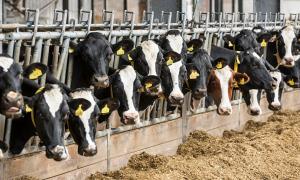 Practices which are coming under scrutiny include debudding and castration without anesthesia; rearing in calf crates; artificial insemination; confinement in barns frequently with shackling. The most extreme of animal rights activists consider any form of farming including gathering of eggs or collection of milk as “species exploitation”. Practices which are coming under scrutiny include debudding and castration without anesthesia; rearing in calf crates; artificial insemination; confinement in barns frequently with shackling. The most extreme of animal rights activists consider any form of farming including gathering of eggs or collection of milk as “species exploitation”.
Animal scientists are now evaluating management systems based on the analysis of behavior displayed by dairy cattle and are providing recommendations especially in the area of group housing of calves and abolishing invasive procedures. Given the benefits of improved housing and management, adoption of recommendations by progressive farmers is evident. Current financial realities in addition to innate resistance to changing practices considered standard by generations of farmers are impediments to progress.
The dairy industry would be well served to heed the experience of egg producers since activists influence politicians and consumers. Given the internet, immense funding and media support, the decline in consumption of dairy products based on negative welfare perceptions will continue. Ballot initiatives primary directed against egg production have included housing practices used in both pork and veal production. Restrictive legislation will be a reality except in the most intensive dairy-production states, although a trend towards more concerted opposition is evident.
|
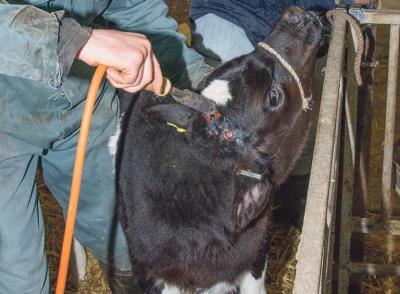
Disbudding calf following administration of local anaesthetic |
The dairy industry is advised to intensify their responses to unjust demands but also to recognize deficiencies and implement corrective action on a national scale. A number of progressive dairymen are leading the way and should serve as ambassadors for change. The U.S. egg industry has changed for the better over the past two decades and has made strides in improving sustainability, welfare, product quality and image. The pork and dairy segments of livestock agriculture should follow.
|

|
Spread of HPAI in the U.K.
|
12/23/2020 |
|
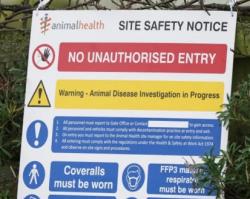  The extent to which migratory birds can disseminate avian influenza virus is indicated by an outbreak in a backyard flock on the island of Sanday in the Orkney Isles of Scotland. Thirty-nine of fifty-two free range chickens died of H5N8 avian influenza in a case documented on ProMed Mail on December 18th. The extent to which migratory birds can disseminate avian influenza virus is indicated by an outbreak in a backyard flock on the island of Sanday in the Orkney Isles of Scotland. Thirty-nine of fifty-two free range chickens died of H5N8 avian influenza in a case documented on ProMed Mail on December 18th.
On December 14th, the Chief Veterinary Officer of Scotland, Dr. Sheila Voas advised that all commercial poultry should be confined to housing. Avian influenza has not been recorded in Scotland for four years, but recently England has encountered H5N8 in swans, near the coast of Hampshire, on the Isle of Wight and in the counties of Warwickshire and Worcestershire. Commercial outbreaks have occurred in East Anglia and North Worcestershire.
According to the National Farmers Union of Scotland, "it is now a legal requirement for all bird keepers whether they have one hen in the back garden or a large poultry business, to keep their birds indoors and to follow strict biosecurity measures to limit the spread of avian influenza and keep out the disease". Animal Health Policy Manager for Scotland, Dr. Penny Middleton stated, "it is crucial that everyone remain vigilant to report any signs of disease both in domestic birds and wild birds at the earliest opportunity.
|
|
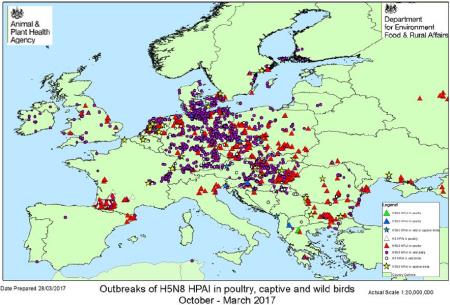
What may be facing the EU in 2020/2021
|
A joint statement from Britain's three Chief Veterinary Officers included "whether you keep just a few birds or thousands, from December 14th, 2020 onwards you will be legally required to keep your birds indoors. We have not taken this decision lightly, but it is the best way to protect your birds from this highly infectious disease". Since late November H5N8 HPAI has been reported from poultry, captive non-poultry birds and free-living species in France, Netherlands, Ireland, Belgium, Germany, Sweden, Slovenia, Croatia and Poland in addition to reports from Israel. Between August 15th and December 7th, 561 HPAI detections were reported in the fifteen EU/EEA nations of which 510 were in wild birds including geese, swans, and raptors including buzzards and falcons. Of the 43 outbreaks in commercial poultry, contact with wild birds was regarded as the primary means of introduction of infection. In addition to H5N8 the predominant strain, 17 isolates of H5N5 and six of H5N1 have been identified suggesting multiple virus introductions into Europe.
|
| Although authorities are emphasizing the fact that H5N8 is not transmissible to consumers, zoonotic H5N1 and H9N2 cases were reported in two individuals.
The implications for the U.S. are that surveillance of free-living birds is necessary as an early warning for the emergence of avian influenza in commercial flocks. In 2014, the first cases of HPAI were diagnosed in California during late December and the major epornitic commenced in March 2015 in the northern regions of the Mississippi valley. We should all look to our biosecurity. |

|
Contrast in Approach to COVID-19 in Mink between the U.S. and the EU
|
12/21/2020 |
|
Following outbreaks of commercially farmed mink in Holland and Denmark, authorities initiated strict quarantine followed by depopulation of affected farms as a public health measure. It is not surprising that mink are susceptible to SARS-CoV-2 given that a close relative, ferrets are used as a laboratory animals to study coronavirus infections. Scientists in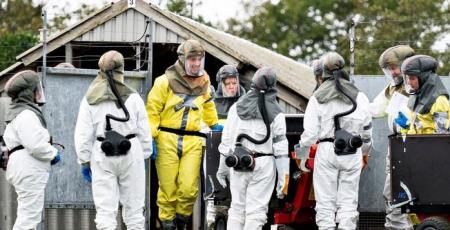 the E.U. clearly established that mink transmit COVID infection to humans and vice-versa. The U.S. has recorded outbreaks of COVID in Utah, Wisconsin, Michigan and Oregon, the states with significant mink production. the E.U. clearly established that mink transmit COVID infection to humans and vice-versa. The U.S. has recorded outbreaks of COVID in Utah, Wisconsin, Michigan and Oregon, the states with significant mink production.
The introduction of a new pathogen into a dense population of susceptible animals will result in rapid dissemination of the infectious agent. The higher the density of susceptible individuals in a population, the greater will be the rate of spread and multiplication of an infective virus. Depending on the structure of the virus, a high concentration of infected hosts will increase the probability of point mutations resulting in potentially enhanced or alternatively reduced pathogenicity or infectivity. A mutation has apparently occurred in the SARS-CoV-2 virus affecting mink in the dense location of farms on the Island of Jutland in Denmark. The mink strain has been isolated from humans in contact with mink but more worrisome, also among humans in urban centers far removed from the mink farms with evidence of community transmission. In mid-December a mutant mink strain emerged in farms in Greece.
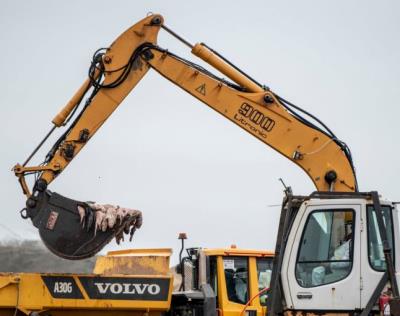 The high probability of the escape of infected mink from farms infected with COVID is an important justification to rapidly deplete populations. In Denmark, trappers frequently capture feral mink suggesting that COVID infection could be transmitted to other wild mustelids including weasels, badgers, and otters. The high probability of the escape of infected mink from farms infected with COVID is an important justification to rapidly deplete populations. In Denmark, trappers frequently capture feral mink suggesting that COVID infection could be transmitted to other wild mustelids including weasels, badgers, and otters.
The International Society for Infectious Diseases has notified the World Organization for Animal Health (OIE) of the isolation of SARS-COVID-2 from feral mink in the vicinity of farms in Utah. The Society commented, “To our knowledge this is the first free-ranging native wild animal confirmed with SARS-COVID-2.” The investigators were unable to determine the presence of the virus in other wildlife species surveyed. At this time it is known that a variety of felidae are susceptible to COVID ranging from domestic cats in households usually with an infected human, in addition to tigers, lions and leopards in zoos infected by keepers. Since mink are solitary animals, widespread infection of wildlife is unlikely. It is not known how long infected mink will shed the virus so it is uncertain whether a wildlife reservoir of COVID-19 could be established.
In the absence of an effective vaccine that will suppress both clinical signs and shedding, mink farms with their high concentration of animal in close proximity will represent a risk for the development of mutant strains of SARS-CoV-2. There is some debate as to the legal justification for complete depletion of unaffected mink populations as in Denmark. The Netherlands had in any event banned commercial mink production after 2024 and has advanced the date of depletion on a national basis with compensation.
Since mink are not food animals it is questioned whether perpetuation of commercial farming is justified given the risks of COVID-19. Maintaining animals such as mink in cage housing virtually identical to layer cages for hens is regarded as inhumane. Obviously the susceptibility of mink to COVID-19 will be used by animal rights groups to justify ending commercial fur production.
There is concern that state departments of agriculture in Utah and Oregon are minimizing the problem of COVID in mink. To date the only action taken has been to quarantine affected farms, a strategy that appears to be ineffective given the spread of infection over a short period. Misleading placatory statements have been issued by the spokespersons for departments of agriculture in Oregon and Utah. The assurance that COVID in mink does not represent a danger to public health lacks a scientific basis. We have seen this movie before!
COVID-19 has clearly focused public concern over how mink are housed and there are questions as to the ethics and morality of the industry, its contribution to society and its reason for existence in an advanced industrialized nation such as the U.S. or in E.U. counterparts.

|
Dicamba Emerges as an Environmental and Legal Liability for Monsanto and Bayer
|
12/14/2020 |
|
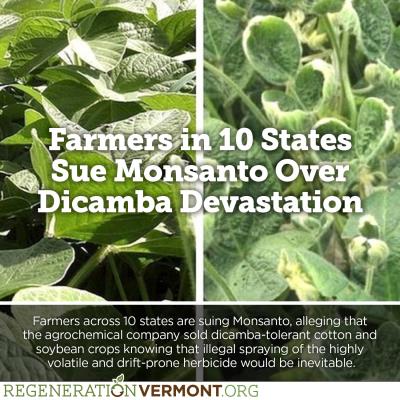 Reeling from expensive claims alleging carcinogenicity of glyphosate the active ingredient in RoundUp™, Bayer is now facing extensive liability as a result of damage caused by the application of Dicamba, a chlorphenoxy herbicide. Bayer acquired Monsanto in 2018 with Dicamba marketed in various formulations since 2015. The compound was developed jointly with BASF and marketed in response to weeds developing resistance to glyphosate. Accordingly, cotton and soybean cultivars resistant to both glyphosate and Dicamba were developed. Reeling from expensive claims alleging carcinogenicity of glyphosate the active ingredient in RoundUp™, Bayer is now facing extensive liability as a result of damage caused by the application of Dicamba, a chlorphenoxy herbicide. Bayer acquired Monsanto in 2018 with Dicamba marketed in various formulations since 2015. The compound was developed jointly with BASF and marketed in response to weeds developing resistance to glyphosate. Accordingly, cotton and soybean cultivars resistant to both glyphosate and Dicamba were developed.
On December 4th Jonathan Hettinger, affiliated with the Midway Center for Investigative Reporting published and exposé of the Dicamba situation. The article confirmed that Dicamba will damage or destroy non-resistant crops by both drift after application and by volatilization, a second and more serious mechanism. Dicamba can persist in the air over a treated field for hours and can spread for as much as two miles depending on atmospheric conditions.
By 2018, approximately forty percent of all soybeans planted in the U.S. were genetically modified to withstand both RoundUp™ and Dicamba. By the following year seventy percent of cotton planted was genetically modified to withstand both herbicides. The problem arises with non-resistant cotton and soybean seeds and other crops that have not be subjected to genetic modification. A number of cases have appeared before the courts resulting in jury verdicts awarding both direct and punitive damages. Damage has been caused to orchards and soybean fields including non-GMO certified organic crops susceptible to Dicamba.
|
|
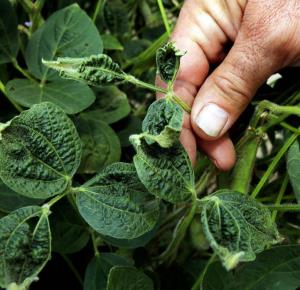
Dicamba damage to non-resistant soybean plant
|
Internal Monsanto and BASF memorandums discovered in the process of litigation indicate that scientists and managers at Monsanto were aware of the risks associated with the compound. It is evident that EPA has been complicit in approving and reapproving Dicamba through 2020 despite cautions from independent agronomists and those at Land-Grant institutions and Agency scientists. One of the allegations raised is that Monsanto deliberately re-worded the statutory labels specifying restrictions on use to shift responsibility for damage from the company to individual farmers and commercial applicators of Dicamba. |
| The conclusions from the Hettinger article are that Monsanto and BASF released Dicamba in various formulations knowing that damage to nonresistant soybean and cotton crops would occur. Hettinger alleges that Monsanto conducted testing to generate data that would expedite EPA approval but the company failed to disclose potential problems relating to drift and volatilization. It is alleged that field investigations of damage to non-resistant crops were conducted in a manner intended to exculpate Monsanto and to limit compensation to farmers. |

|
Shareholders Invoke Climate Change as a Risk in Addressing Corporate Governance
|
12/03/2020 |
|
 In an article in the November 21st edition of The Economist it is apparent that shareholder groups, including fund managers, are now scrutinizing the contribution of companies to global warming and climate change. Based on events in Australia, individual investors are resorting to legal action claiming failure to disclose risks that may prejudice future profitability and hence share value. In an article in the November 21st edition of The Economist it is apparent that shareholder groups, including fund managers, are now scrutinizing the contribution of companies to global warming and climate change. Based on events in Australia, individual investors are resorting to legal action claiming failure to disclose risks that may prejudice future profitability and hence share value.
Quoted in The Economist article, Peter Barnett, a lawyer with ClientEarth, an advocacy group, stated “Unless the corporate sector switches quickly to meet investor expectations, I think we are inevitably going to see increasing shareholder litigation. The Retail Employee Superannuation Trust of Australia, a pension fund, was successfully sued and agreed to settle with plaintiffs acknowledging that “climate change is a material, direct and a current financial risk.”
|

Coal-fired Power Plant |
|
A similar approach has been taken by a Swedish pension fund that intends litigating as a means to pressure management to engage in climate-friendly use of assets. ClientEarth sued Enea, a major power utility in Poland, over a plan to erect a coal-fired power plant. ClientEarth claimed that the plant would become an unprofitable stranded asset, representing a financial risk. Following a court ruling in favor of the plaintiffs, the project was abandoned. So much for the myth of “beautiful clean coal”
It is apparent that companies failing to disclose climate risk to shareholders and with management following activities prejudicial to the environment will be subject to legal action in the future. This will have a direct effect on share value and the willingness of institutions to purchase corporate bonds.
|

|
Estimate of the Proportion of the U.S. Population Infected with COVID-19
|
12/01/2020 |
|
 It is generally accepted that actual cases of COVID-19 are under-reported. This is due the large number of asymptomatic infections and chronic and profound deficiencies in testing and availability of diagnostic resources, especially in rural areas and for the economically disadvantaged demographic. In a report* published on November 25th, epidemiologists affiliated with the Centers for Disease Control and Prevention estimated that 53 million people in the U.S had been infected by the end of September 2020. Official reports placed the number of cases at 6.9 million, suggesting that only one in eight cases were actually diagnosed and recorded. It is generally accepted that actual cases of COVID-19 are under-reported. This is due the large number of asymptomatic infections and chronic and profound deficiencies in testing and availability of diagnostic resources, especially in rural areas and for the economically disadvantaged demographic. In a report* published on November 25th, epidemiologists affiliated with the Centers for Disease Control and Prevention estimated that 53 million people in the U.S had been infected by the end of September 2020. Official reports placed the number of cases at 6.9 million, suggesting that only one in eight cases were actually diagnosed and recorded.
The CDC group evaluated available data on symptomatic illness, hospitalizations and incidence rates for COVID-19 with reference to available serologic data. It was estimated that through the end of September, only one out of 2.5 cases that were hospitalized and one out of every seven non-hospitalized cases were nationally reported. It is therefore estimated that 2.4 million hospitalizations and 44.8 million symptomatic illnesses occurred from February 27th through September 30th 2020.
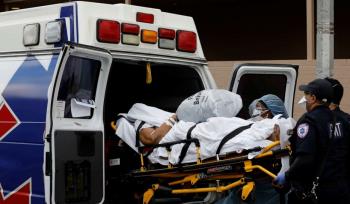 It is emphasized that the report covers data to the end of September with 6.9 confirmed cases at this time. During the past two months, the number of confirmed cases has almost doubled to 13.3 million cases suggesting as many as a 100 million among the U.S. population have been infected with COVID-19. The report noted the disparity in age among reported cases which may be due to the fact that children were infrequently tested or presented for treatment. It is emphasized that the report covers data to the end of September with 6.9 confirmed cases at this time. During the past two months, the number of confirmed cases has almost doubled to 13.3 million cases suggesting as many as a 100 million among the U.S. population have been infected with COVID-19. The report noted the disparity in age among reported cases which may be due to the fact that children were infrequently tested or presented for treatment.
The report estimates that 13 percent of cases were documented through the end of September.
This figure should be compared to an estimate provided by Dr. Robert Redfield, Director of the CDC, in May 2020 suggesting with prescience that the U.S was recording only 10 percent of actual cases. The CDC data reflecting September indicated that between one and twenty percent of the U.S. population carried antibodies against SARS-COV-2, depending on location and occupation, with an estimated average ten percent prevalence of antibody.
The fact that as many as one million people have been infected and only 10 percent carry antibodies effectively demolishes the “herd immunity” theories propagated by Dr. Scott Atlas and his adherents. Failure to establish widespread immunity was confirmed by serologic surveys conducted in Stockholm mid-year.
By December 8th there were 285,000 documented fatalities attributed to COVID-19. Mortality rose to between 1,000 and 2,000 per day over the last half of November with over 100,000 hospitalized. Over 15.1 million cases have been diagnosed with as many as 170,000 to 200,000 incident cases per day prior to the anticipated surge following Thanksgiving travel and interaction.
*Reese, H. et al Estimated Incidence of COVID-19 illness and hospitalization – United States, February-September 2020 Clinical Infectious Diseases doi.org/10.1093/cid/ciaa 1780 November 25, 2020

|
Grow-NY Prize Awarded to Soos Technology for Regulation of Chick Gender
|
11/30/2020 |
|
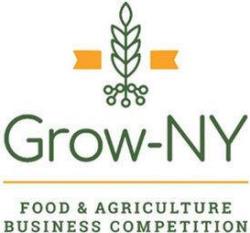 Soos Technology claims that they have developed a method to regulate the gender of chick embryos by manipulating incubation variables. The Company was awarded the $1 million grand prize by Grow-NY an international business competition administered by Cornell University and funded by the state of New York. The prize was awarded on the basis of a ten-minute presentation followed by 10-minutes for questions. Presumably the presentation included preliminary data to demonstrate proof of concept. Soos Technology claims that they have developed a method to regulate the gender of chick embryos by manipulating incubation variables. The Company was awarded the $1 million grand prize by Grow-NY an international business competition administered by Cornell University and funded by the state of New York. The prize was awarded on the basis of a ten-minute presentation followed by 10-minutes for questions. Presumably the presentation included preliminary data to demonstrate proof of concept.
Temperature is an important variable in determining the gender of tortoises and some desert-living reptiles and the mechanism of gender development in these species has been extensively studied. Soos Technology claims to have developed specific parameters for humidity, temperature, carbon dioxide level and sound vibrations during early incubation to modify sex determination. If successful, the technology would eliminate the hatching and destruction of cockerels in the egg production segment of the poultry industry. Despite preliminary studies to determine gender at various stages of incubation there has been no commercial applications of any of the emerging technologies in chickens. Since the commercial benefit of an effective system to eliminate destruction of cockerels is so large the challenge has attracted both legitimate scientists and charlatans to the field.
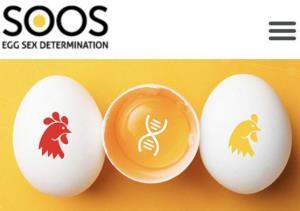 The acid test would be to subject 1,200 eggs to the Soos process and rear the 1,000 hatched (presumably) pullet chicks and determine whether their subsequent performance is consistent with strain standard. To produce a pullet chick that is capable of subsequent reproduction with respect to peak production and persistence would confirm the validity of the process. The acid test would be to subject 1,200 eggs to the Soos process and rear the 1,000 hatched (presumably) pullet chicks and determine whether their subsequent performance is consistent with strain standard. To produce a pullet chick that is capable of subsequent reproduction with respect to peak production and persistence would confirm the validity of the process.
In commenting on the competition, New York Governor Andrew Cuomo stated, "innovation companies have help drive creating a lasting economic impact on New York's agribusiness as we continue our work to build our economy".
CEO of Soos Technology, Yael Alter stated, "with our Grow-NY prize money we plan to create over twenty high-paying research and engineering jobs in the next two years by building the NY Poultry Research Hub which will connect academic research with poultry startups and corporations to commercialize validated research. We are thrilled to put down roots in the Grow-NY region".
The Soos Technology website provides scant detail on the operation of the system and is devoid of specific data or references to peer-reviewed publications to support their claim. If the technology is valid and reproducible under commercial conditions, the industry will benefit. Soos Technology has a year in which to demonstrate commercial applicability. In the interim additional details on how the system functions and the effects on hatchability, the capital cost of modifying equipment and reliability would add to the creditability of the company and its technology.
Until the technology is shown to be commercially viable the Company and its technology will have to be regarded with a degree of scientific skepticism as we have unfortunately ‘seen this movie before’.

|
California Leads in Establishing Workplace Standards to Prevent COVID-19
|
11/25/2020 |
|
 The Board of the California Division of Occupational Safety and Health (CAL/OSHA) has voted to implement protocols to protect employees from COVID-19 in the workplace. In the absence of clearly defined recommendations from the Federal OSHA, California has proactively established standards to guide employers in agriculture, food production and industrial operations. The Board of the California Division of Occupational Safety and Health (CAL/OSHA) has voted to implement protocols to protect employees from COVID-19 in the workplace. In the absence of clearly defined recommendations from the Federal OSHA, California has proactively established standards to guide employers in agriculture, food production and industrial operations.
|
|
 Under emergency regulations, employers not currently covered by the Aerosol Transmissible Disease Standard must:- Under emergency regulations, employers not currently covered by the Aerosol Transmissible Disease Standard must:-
- Establish and commit to writing a COVID-19 prevention program for employees appropriate to the facility
- Identify COVID-19 hazards with relevant input from employees
- Investigate cases of COVID-19 and establish an effective program of tracing and quarantine
- Report all cases of COVID-19 to public health departments.
- Special provisions are required to transport workers involving screening, separation and the use of face masks
In the event of an ascending incidence rate in a facility, regular testing of all employees will be required. This is based on the recognition that asymptomatic carriers can be responsible for dissemination of virus.
It is anticipated that the incoming Administration will issue nationwide rules to enhance workplace safety. Politco reported that introduction of a National Emergency Temporary Standard will be vigorously opposed as has occurred in California. The California Chamber of Commerce and the California Restaurant Association have already raised objections claiming infeasibility and cost to enforce the proposed regulations.
It is evident that unless the incidence rate of COVID can be reduced to more acceptable levels through workplace safety and concurrent precautions applied in communities, restoration of the economy and resumption of what might be considered a ‘new normal’ will be impossible.
Despite the statistics that confirm at least 13 million diagnosed cases and more than 260,000 fatalities and as many as 100,000 in hospital there are many in our society that believe COVID-19 is a hoax or accept that it will simply "go away". We are now past the time for political rhetoric and misinformation disseminated on the internet. Action by state agencies such as California and the anticipated standards to be issued by the incoming Administration will be instrumental in reducing morbidity and mortality from COVID until an effective vaccine is widely administered.
In the interim, it is necessary to practice proven preventive measures including masking, avoiding large gatherings and social distancing. According to some models the simple expedient of universal masking in public could potentially save 150,000 lives by the beginning of March.
|

|
Wearing Masks Will Save Lives
|
11/17/2020 |
|
According to a commentary by Dr. A. L Komaroff, in the November 5th edition of the New England Journal of Medicine, wearing masks universally in public could over 100,000 U.S. lives over the next four months.
Komaroff, founding editor of the NEJM Journal Watch, General Medicine cited a model developed by the Institute for Health Metrics and Evaluation (IHME) of the University of Washington*. Based on data from all states since the onset of the COVID-19 pandemic it is calculated that universal mask use could save 130,000 lives between September 22, 2020 and February 28, 2021. In his article Komaroff stated, "disease modeling is sometimes disparaged as just a model, not reality. That surely is true, but future reality can only be estimated using models”. He advances the reality that predictions by the IHME have been accurate with respect to incident cases of COVID, hospitalizations and fatalities.
Reducing incident cases to ‘flatten the curve’ will again be necessary as universal administration of an effective COVID vaccine may only be a reality by the middle of 2021. This is based on predicted logistic problems in distribution of vaccines requiring a cold chain and the current reluctance to receive the vaccine.
|

Dr. Anthony Komaroff |

Masked personnel on USS Theodore Roosevelt |
It is hoped that with the inauguration of a new Administration there will be a relaxation of social pressures against masking. The use of face covering is a simple and inexpensive precaution to limit aerosol transmission should be accepted irrespective of demographic or political inclination as a sound public health measure. Reducing the incidence rate of COVID will expedite reopening of the economy. |
|
The value of masks is demonstrated by a series of investigations on outbreaks in situations where the benefits could by quantified
- Two hair stylists with COVID symptoms served 139 clients over an eight-day period with an interaction of 15 minutes. None of the 67 clients subsequently interviewed and consenting for testing developed COVID infection. In accordance with company policy and local ordinances, stylists and clients wore masks in the salon.
- A retrospective case-control study conducted in Thailand involving 1,000 subjects showed that there was a 70 percent reduced risk of acquiring COVID infection compared to individuals who did not wear masks.
- A study of the outbreak onboard the USS Theodore Roosevelt demonstrated that face covering onboard was associated with a 70 percent reduced risk of infection. This COVID outbreak involved 1,271 diagnosed crew-members comprising 27 percent of the personnel on the vessel, 77 percent were asymptomatic at the time of diagnosis. Twenty-three crew-members were hospitalized with one fatality.
- A study of 124 households in Beijing with one or more laboratory-confirmed cases of SARS-CoV-2 infection showed that use of masks by the index patient and family contacts before symptoms developed reduced secondary transmission within the household by 79 percent.
- Structured experiments involving transmission of SARS-CoV-2 in passenger aircraft demonstrated the beneficial effects of wearing masks combined with frequent air exchange and HEPA filtration. Studies on passengers undertaking flights longer than ten hours wearing masks demonstrated the absence of infection in both crew and passengers over a 14-day period following potential exposure.
- Based on studies in fifteen U.S. states and in a German city, it was calculated that universal masking could reduce the need for lockdowns and advert losses of up to $1 trillion or five percent of GDP.
*IHME. COVID-19 Forecasting Team. Modeling COVID-19 scenarios for the United States. Nat. Med. October 23, 2020. doi.org/10.1038/s41591-020-1132-9
|

|
Prominent Food Safety Lawyer Questions Inaction By South Africa Over Listeriosis
|
11/07/2020 |
|
Bill Marler, a prominent advocate for food safety and a leading plaintiff’s attorney, questions the inaction by the South African Department of Justice over the 2017-2018 outbreak of listeriosis. A polony (sausage) product, widely consumed by lower income demographics, was responsible for over 1,000 laboratory-confirmed cases of listeriosis from January 2017 through July 2018. The outbreak involved 216 documented deaths with many survivors enduring permanent disability. The outbreak was extensively investigated by both local epidemiologists and international experts and was ascribed to an ST6 strain of Listeria monocytogenes isolated from patients and product and the environment of an implicated plant operated by Tiger Brands in Polokwane.
Despite a class action civil lawsuit, there has been no compensation for victims. South African authorities have yet to bring criminal charges against those considered responsible for the outbreak. This action is urged by Marler who addressed a video conference demanding government response. He cited criminal action brought against companies and individuals involved in significant foodborne disease outbreaks. These include:-
|

Bill Marler |
- The Odwalla apple juice outbreak of STEC in 1998, resulting in a fine of $1.5 million.
- The owners of Jensen Farms were each fined $1.5 million in 2012 as a result of unknowingly distributing cantaloupe infected with Listeria.
- Jack and Peter Decoster responsible for an extensive 2010 SE outbreak, each served three months in jail and their company, Quality Egg, paid a $6.8 million fine. The outbreak, extending from May to November 2010, resulted in close to 2,000 confirmed infections and based on statistical projections up to 62,000 consumers may have been affected.
- The 2014 case against the Parnell Brothers operating the Peanut Corporation of America resulted in two-decade prison terms as a result of the 2008 Salmonella outbreak with 714 diagnosed cases and nine fatalities.
- Conagra Foods paid an $11 million fine in 2015 following distribution of contaminated peanut butter in 2006 related to the Peanut Corporation of America case.
- Blue Bell Creameries paid a $17 million fine following distribution of ice cream containing Listeria. Criminal charges are pending against the then CEO, Paul Kruse.
- Chipotle Mexican Grill paid a $25 million fine following a series of foodborne outbreaks involving Salmonella, norovirus, and E.coli infections.
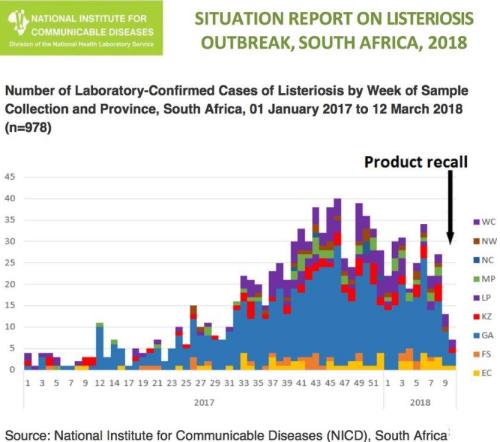
It is obvious that the FDA, FSIS, and the DOJ in the U.S. consider foodborne disease as a serious threat to public wellbeing. In the U.S. any evidence of suppression of microbiological data, criminal negligence, fraud, knowingly distributing adulterated products constituting depraved indifference will result in severe penalties including the possibility of incarceration for managers and executives. Marler together with his colleagues in South Africa is seeking justice for the Listeria victims and their families.
|

|
Biofuels Industry Concerned Over Conversional to Electric Vehicles
|
10/31/2020 |
|
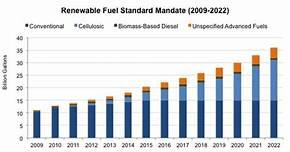 A recent study entitled Economic Impacts to U.S. Biofuels, Agriculture and the Economy from Subsidized Electric Vehicle Penetration was released by the Agricultural Retailers Association. The authors, Dr. Daniel Ugarte and Ken Ditzel are affiliated with the University of Tennessee. The conclusions of the study were that conversion from internal combustion engines to electric propulsion by 2035 would reduce consumption of ethanol by 90 percent and biodiesel by 61 percent to quantities of 1.1 billion gallons and 0.8 million gallons respectively. Decreased use of biofuels would reduce annual corn demand by 2.0 billion bushels and soybeans by 470 million bushels. This could result in a 50 percent drop in the price of corn to $1.74 per bushel and soybeans would fall 44 percent to $4.92 per bushel. Collectively reduced demand for biofuels would decrease net farm income by $27 billion annually. A recent study entitled Economic Impacts to U.S. Biofuels, Agriculture and the Economy from Subsidized Electric Vehicle Penetration was released by the Agricultural Retailers Association. The authors, Dr. Daniel Ugarte and Ken Ditzel are affiliated with the University of Tennessee. The conclusions of the study were that conversion from internal combustion engines to electric propulsion by 2035 would reduce consumption of ethanol by 90 percent and biodiesel by 61 percent to quantities of 1.1 billion gallons and 0.8 million gallons respectively. Decreased use of biofuels would reduce annual corn demand by 2.0 billion bushels and soybeans by 470 million bushels. This could result in a 50 percent drop in the price of corn to $1.74 per bushel and soybeans would fall 44 percent to $4.92 per bushel. Collectively reduced demand for biofuels would decrease net farm income by $27 billion annually.
 Although the figures developed in the study project the situation from 2035 through 2050, it is evident that currently the livestock industry and other users of corn and soybeans are currently supporting row-crop agriculture and biofuel producers through the Renewable Fuel Standard mandate. Although the figures developed in the study project the situation from 2035 through 2050, it is evident that currently the livestock industry and other users of corn and soybeans are currently supporting row-crop agriculture and biofuel producers through the Renewable Fuel Standard mandate.
EGG-NEWS has consistently maintained that the entire biofuels system supported by corn and soybean state legislators represents an indirect tax on all who eat and drive. Since the U.S. is self-sufficient in energy and is no longer dependent on potentially adversarial supply nations, it would now be appropriate to phase out mandates. This would allow a structured transition of the artificially created ethanol and biodiesel industries to adapt to the realities of electric-powered passenger vehicles and trucks.

|
USDA Criticized Over the Farmers to Families Food Box Program
|
10/21/2020 |
|
The $2.7 billion Farmers to Families Food Box Program initiated in May has come under intense criticism for inefficiency and inequity. Although it is acknowledged that the program was established in an emergency, there was evidently lack of planning and defective execution by the USDA, especially with regard to accepting bids from unqualified distributors, an overt lack of physical and financial control and failure to recognize and respond to emerging problems. Many of the contractors selected were either unable or disinclined to deliver boxes to remote regions with a high proportion of needy citizens. It took until September for USDA to recognize that there were serious inconsistencies in distribution leading to the designation of Opportunity Zones to receive special attention.
|
|
While the USDA was implementing the first phase of the program, the need for supplemental food assistance became greater as the economic effect of COVID-19 intensified especially in low-income areas of our nation. Many of the operators of food banks and faith-based organizations complained of the quality of food provided. The discrepancy between what was delivered and prevailing prices suggested that there was both inefficiency and over charging in both states and territories including Alaska, Puerto Rico and Maine.
The entire program was unnecessary as the objective of feeding could have been achieved by simply increasing appropriations and lifting barriers to enrollment in the Supplemental Nutrition Assistance Program (SNAP). Alternatively by providing block grants, food banks would have been able to buy food and vegetables directly from farmers within their own areas of operation. This would have shifted the benefits to farmers rather than contract distributors serving as middlemen.
|
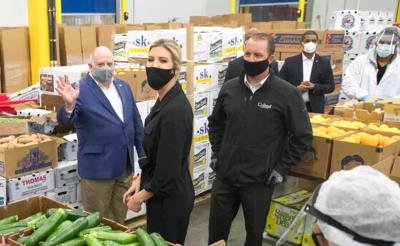
The Box Program generated "photo-opps" |
|
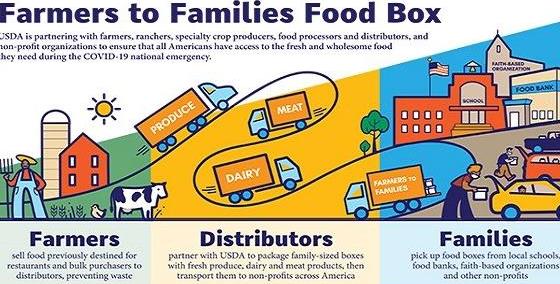 The USDA failed to recognize the importance of free school meals to children subjected to food insecurity concurrent with the progress of COVID-19 during the second and third quarters. It was only in August that the USDA announced that schools could continue serving free meals throughout the end of 2020 subject to availability of funding. The USDA failed to recognize the importance of free school meals to children subjected to food insecurity concurrent with the progress of COVID-19 during the second and third quarters. It was only in August that the USDA announced that schools could continue serving free meals throughout the end of 2020 subject to availability of funding.
A justifiable criticism of the program was that politically fliers were included in boxes, an action considered to be inconsistent with a humanitarian program.
|

|
Farmers Accused of Indifference to COVID-19 Among Migrant Workers
|
10/01/2020 |
|
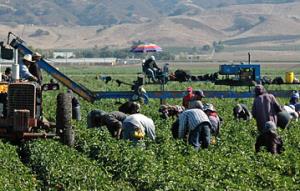 Investigative journalists have reviewed county data on prevalence rates of COVID-19 among migrant workers in Northwest States and Florida. The Columbia University, Brown Institute for Media Innovation undertook interviews with county officials and agricultural workers in ten states during the 2020 harvest season for fruit in the northwest and produce in Florida. Investigative journalists have reviewed county data on prevalence rates of COVID-19 among migrant workers in Northwest States and Florida. The Columbia University, Brown Institute for Media Innovation undertook interviews with county officials and agricultural workers in ten states during the 2020 harvest season for fruit in the northwest and produce in Florida.
The investigation disclosed that farm and food-plant workers continued in their labor despite the risk of exposure to COVID-19 as they were designated "essential" in terms of the Presidential Executive Order on April 28th. In addition, migrant farm workers on H-2A visa programs are in reliant on daily labor for survival and for remittances to their families in their home countries.
Problems that were uncovered in the investigation included:-
- Failure to maintain social distancing when transporting workers from temporarily accommodation to fields
- Failure to provide even the most basic PPE
- Failure to undertake testing followed by isolation of infected individuals
- Allowing workers to live in accommodation with primitive hygiene facilities conducive to infection
- Deliberate obstruction of county and state officials investigating outbreaks of COVID-19
- Reluctance to cooperate with county officials and non-profit healthcare organizations to provide counseling on protection against COVID-19
- Prompt dismissal of workers complaining of COVID-like symptoms or requesting protective measures
Epidemiologic studies confirm that the prevalence rate of COVID-19 among migrant farm works far exceeded the level in the general population in counties with intensive agriculture that employed a large number of workers for seasonal cultivation or harvesting. Investigations demonstrated instances of collusion between county and state officials and large employers with respect to testing workers and reporting results. State agencies in California distributed masks to H-2A visa workers picking strawberries and other crops.
COVID-19 will be a fact of life for the foreseeable future in cultivation of fruit and produce, even with deployment of an effective vaccine in the U.S. Since H-2A workers come from nations where vaccination programs will not be carried out, it will be necessary to vaccinate and test workers before entry to the U.S.
Irrespective of protective modalities, no industry, irrespective of Presidential executive orders can ignore the realities of disease and to subject H-2A workers to exposure resulting in illness and in some cases, death. Individual family-owned and corporate farms supply packers with brand name products that are sold in supermarkets. These chains are vulnerable to adverse publicity in the court of public opinion and will be implicated in class action litigation. Ultimately producers will be subject to Federal or state mandates on protection from COVID-19 and other communicable diseases. It would be preferable to adopt a more realistic and proactive approach to preventing COVID-19 among migrant workers in 2021.

|
Economies of Scale in Dairy Operations—Parallels for Eggs?
|
09/17/2020 |
|
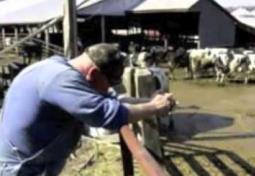 The dairy industry as with egg production undergoes periods of oversupply relative to demand. Recent economic surveys have shown that dairies milking more than a thousand head generate profits far exceeding small herds. The USDA-Economic Research Service recently published Consolidation in U.S. Dairy Farming. Small herds ranging from 50-100 cows and those from 100-200 milking animals are not able to cover costs and effectively they generate a negative return. Labor is apparently the limiting factor with smaller farms surviving through the use of unpaid family labor. The dairy industry as with egg production undergoes periods of oversupply relative to demand. Recent economic surveys have shown that dairies milking more than a thousand head generate profits far exceeding small herds. The USDA-Economic Research Service recently published Consolidation in U.S. Dairy Farming. Small herds ranging from 50-100 cows and those from 100-200 milking animals are not able to cover costs and effectively they generate a negative return. Labor is apparently the limiting factor with smaller farms surviving through the use of unpaid family labor.
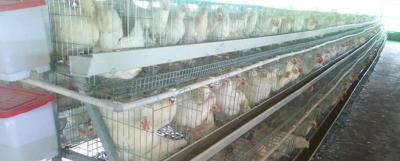 We read consistently of small dairy farms in Wisconsin, Pennsylvania and Ohio going out of business with the survivors requiring greater levels of federal support and protection. The economic pressures on small dairy farms are relentless. Progressively similar trends are evident in the egg industry with a similar diversity between large and small operations. We read consistently of small dairy farms in Wisconsin, Pennsylvania and Ohio going out of business with the survivors requiring greater levels of federal support and protection. The economic pressures on small dairy farms are relentless. Progressively similar trends are evident in the egg industry with a similar diversity between large and small operations.
The number of licensed U.S. dairy herds fell by more than half between 2002 and 2019 with an upturn in both 2018 and 2019 despite a slight increase in milk offtake after successive years of falling demand as a result of competition from substitutes.

|
Concern over the Farmers to Families Food Box Program
|
09/14/2020 |
|
The Farmers to Families Food Box program was initiated in haste in response to market disruptions caused by COVID-19. The program was 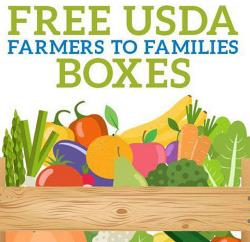 conceived by Secretary of Agriculture Dr. Sonny Perdue in response to the fact that there was an accumulation of produce and other agricultural products on farms and a pressing need to alleviate hunger among families that had lost income. The initial program was funded at approximately $2.7 billion and an additional extension of $1 billion was recently approved using emergency authority. conceived by Secretary of Agriculture Dr. Sonny Perdue in response to the fact that there was an accumulation of produce and other agricultural products on farms and a pressing need to alleviate hunger among families that had lost income. The initial program was funded at approximately $2.7 billion and an additional extension of $1 billion was recently approved using emergency authority.
The plan was for USDA to select contractors to source produce and assemble the food boxes with distribution to food banks and faith-based organizations to be supplied to those in need. It is understood that as many as 75 million boxes have been distributed.
The program was recently reviewed by journalists Jessica Fu and H. Claire Brown, followed by an article in The Counter. This non-profit organization investigates social issues and although considered somewhat left-of-center many of the findings have been confirmed by mainstream media.
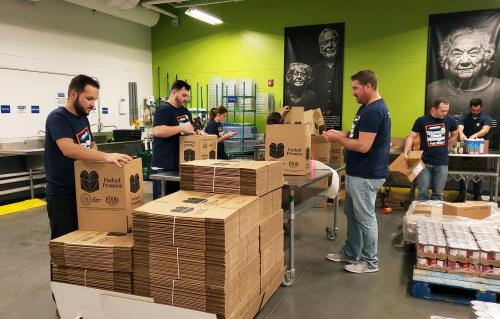 Despite the self-congratulatory releases by USDA and personal visits by Secretary Perdue to distribution centers it is apparent that the program has operated with inadequate oversight and control. As with many hastily implemented projects the Farmers to Families Box initiative is associated with wastage and possibly fraud. The program was the subject of an acrimonious hearing by the House Agriculture Sub-committee on Nutrition, Oversight and Department Operations on July 31st in which the chairperson Representative Marcia L. Fudge (D-OH) castigated the responsible Undersecretary of Agriculture for lack of oversight. Despite the self-congratulatory releases by USDA and personal visits by Secretary Perdue to distribution centers it is apparent that the program has operated with inadequate oversight and control. As with many hastily implemented projects the Farmers to Families Box initiative is associated with wastage and possibly fraud. The program was the subject of an acrimonious hearing by the House Agriculture Sub-committee on Nutrition, Oversight and Department Operations on July 31st in which the chairperson Representative Marcia L. Fudge (D-OH) castigated the responsible Undersecretary of Agriculture for lack of oversight.
A statement issued subsequent to the hearing included:-
Because USDA has rushed this program out the door, there is very little quality control with regard to who gets these contracts and who is qualified to actually meet the need. Tens of millions of dollars have gone to inexperienced contractors that still haven’t delivered anywhere near what they’ve promised.
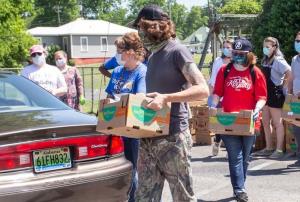 The article in The Counter notes that boxes distributed in Puerto Rico, assembled by a Caribbean produce exchange cost as much as $100 per unit. Commentators with experience in handling and distribution of produce claim that the cost to taxpayers represents a three-fold overcharge. There were numerous complaints regarding quality of products packed and their selection. Nationwide over 200 contractors were involved in the program many of whom had no experience in sourcing and assembling boxes. Recipient agencies including food banks were underwhelmed by service and quality. Informed observers consider that the approximately $3.7 billion expended would have been more beneficial had it been injected into the Supplementary Nutrition Assistance Program using existing mechanisms and allowing recipients to directly purchase what they needed for their families by selecting from participating groceries and supermarkets. The article in The Counter notes that boxes distributed in Puerto Rico, assembled by a Caribbean produce exchange cost as much as $100 per unit. Commentators with experience in handling and distribution of produce claim that the cost to taxpayers represents a three-fold overcharge. There were numerous complaints regarding quality of products packed and their selection. Nationwide over 200 contractors were involved in the program many of whom had no experience in sourcing and assembling boxes. Recipient agencies including food banks were underwhelmed by service and quality. Informed observers consider that the approximately $3.7 billion expended would have been more beneficial had it been injected into the Supplementary Nutrition Assistance Program using existing mechanisms and allowing recipients to directly purchase what they needed for their families by selecting from participating groceries and supermarkets.
While the program has benefited both farmers and those subjected to hunger, a considerable amount of taxpayer money was wasted through insufficient planning and oversight. It is hoped that lessons will have been learned from the exercise.

|
Michigan State University Evaluated the Effect of COVID on the Egg Industry
|
09/14/2020 |
|
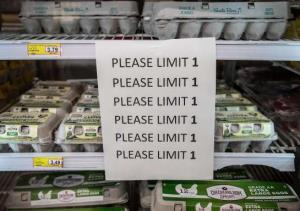 A study* by agricultural economists at Michigan State University and Perdue University quantified the effects of COVID on prices and volumes of shell-egg and egg-liquid sales by segments of the U.S. industry. A study* by agricultural economists at Michigan State University and Perdue University quantified the effects of COVID on prices and volumes of shell-egg and egg-liquid sales by segments of the U.S. industry.
The study documented the profound shift from eating out to at-home preparation. This change in purchasing and consumption of food disrupted both segments of the egg market. Panic buying in March and extending into April resulted in farm-gate and retail price increases of 140 percent and 180 percent respectively. In contrast breaking stock value fell by close to 70 percent. Specialty eggs including cage-free, organic and nutritionally-enhanced products lost premiums as consumers purchased generic eggs at the lowest possible cost.
Prior to the onset of COVID-19, consumers spent 54 percent of their food expenditure away from home representing a third of all food purchased. As the economy closed down, the food service sector using dedicated shell eggs and egg liquid collapsed and 75 percent of food expenditure comprised the purchase of groceries for at-home consumption.
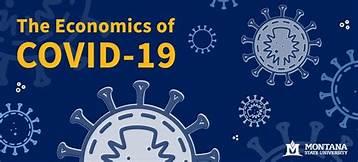 Following representations to the Food and Drug Administration and supported by United Egg Producers, restrictions were relaxed allowing shell eggs that would otherwise have been broken to be diverted to retail sales. Initially this resulted in high demand for egg cartons with suppliers forced to triple-shift plants to satisfy demand. Following representations to the Food and Drug Administration and supported by United Egg Producers, restrictions were relaxed allowing shell eggs that would otherwise have been broken to be diverted to retail sales. Initially this resulted in high demand for egg cartons with suppliers forced to triple-shift plants to satisfy demand.
The research team noted that preventing future disruptions will involve relaxation of barriers preventing interaction between the two segments of the egg industry. The study failed to demonstrate evidence that either heightened demand or the FDA relaxation of regulations “had a meaningful impact on the marketing margin for table eggs sold at grocery stores.”
It is anticipated that the findings of the study will be reviewed in current litigation relating to alleged price gouging by egg producers in actions initiated by States Attorneys General.
Malone, T., Schaefer, A., and Lusk, J., Unscrambling COVID-19 Food Supply Chains (August 10, 2020). http://dx.doi.org/10.2139/ssrn.3672018

|
International Cooperation on Vaccines Necessary to end Global COVID Pandemic
|
09/05/2020 |
|
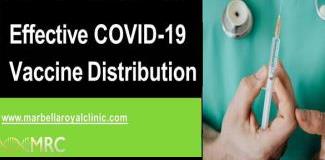 It is evident that if COVID-19 is to be eradicated, an effective vaccine will be necessary and should be applied to all of the world’s population with priority extended to frontline workers, the elderly and vulnerable individuals willing to participate in an immunization program. Even if citizens in industrialized nations are protected, the persistence of infection in less-developed countries will represent a risk to all populations, given the volume and speed of international travel. It is evident that if COVID-19 is to be eradicated, an effective vaccine will be necessary and should be applied to all of the world’s population with priority extended to frontline workers, the elderly and vulnerable individuals willing to participate in an immunization program. Even if citizens in industrialized nations are protected, the persistence of infection in less-developed countries will represent a risk to all populations, given the volume and speed of international travel.
Recognizing the need to distribute vaccines equitably in an expeditious manner in the early stages of manufacture and with priority for the most vulnerable, the World Health Organization organized the Global Access Unitiative [COVAX] involving 170 nations. The Coalition for Epidemic Preparedness Innovations and the Gavi Vaccine Alliance are also involved in the initiative backed by Japan, Germany, and the EU.
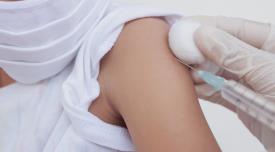 It is noted that the U.S. will not participate based on the refusal of the Administration to participate in any endeavor involving the WHO. Judd Deere expressed the policy of the White House as, “The United States will continue to engage our international partners to ensure we defeat the virus, but we will not be constrained by multilateral organizations influenced by the corrupt World Health Organization and China.” It is noted that the U.S. will not participate based on the refusal of the Administration to participate in any endeavor involving the WHO. Judd Deere expressed the policy of the White House as, “The United States will continue to engage our international partners to ensure we defeat the virus, but we will not be constrained by multilateral organizations influenced by the corrupt World Health Organization and China.”
The policy of unilateralism is criticized by established global health authorities, including faculty at the Dartmouth Geisel School of Medicine, Georgetown University, and other institutions. Dr. Suerie Moon, co-director of the Global Health Center at the Graduate Institute of International and Development Studies in Geneva stated, “It is a real blow when the U.S. says that it’s not going to participate in any sort of multilateral effort to secure vaccines”.
Smerconish, in his Saturday, September 5th CNN program surveyed the attitude of viewers by posing the question as to whether it would be more advantageous to distribute available vaccine in limited supply on a priority basis internationally or to retain U.S. vaccines only for U.S. residents. As an indication of how far the Administration is from public sentiment, 80 percent of the 18,000 responding considered that an international prioritized approach would be preferable to a unilateral policy since it would do more to end the global pandemic.

|
NIAID to Fund Research on Emerging Diseases
|
08/31/2020 |
|
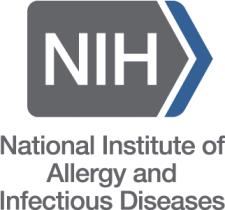 Based on outbreaks of SARS, MERS, Ebola and now COVID-19, the National Institute of Allergy and Infectious Diseases (NIAID) has established the Centers for Research and Emerging Infectious Diseases (CREID). This entity will comprise a global network concentrating on emerging pathogens associated with wildlife. The initial funding will amount to $17 million in 2020 and will extend to $82 million over five years. Based on outbreaks of SARS, MERS, Ebola and now COVID-19, the National Institute of Allergy and Infectious Diseases (NIAID) has established the Centers for Research and Emerging Infectious Diseases (CREID). This entity will comprise a global network concentrating on emerging pathogens associated with wildlife. The initial funding will amount to $17 million in 2020 and will extend to $82 million over five years.
In announcing the establishment of CREID, Dr. Anthony S. Fauci stated, “The impact of COVID-19 pandemic serves as a potent reminder of the devastation that can be wrought when a new virus infects humans for the first time.” He added, “The CREID network will enable early warning of emerging diseases wherever they occur which will be critical to rapid response. The knowledge gained through this research will increase our preparedness for future outbreaks.”
RTI International in Research Triangle Park, NC. in association with Duke University will serve as the coordinating center to provide data management, outbreak research response and quality control. Prominent scientists at major universities and research institutes will be responsible for regions of the world or categories of disease. Collaborating institutions include Scripps Research Institute, University of California, Washington State University, University of Texas, Washington University and the EcoHealth Alliance.
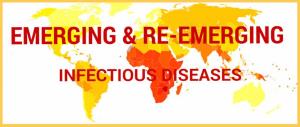 It is noted that Dr. Peter Daszak a world-renowned investigator with a specific interest in viral disease carried by bats was unjustly deprived of NIH funding at the direction of the Administration due to his long-term collaboration with the Wuhan Viral Research Institute. As a collaborating entity of CREID it is presumed that research support has been reinstated. He will be involved in emerging viral infectious diseases of wildlife and human populations in Southeast Asia, his traditional area of involvement. It is noted that Dr. Peter Daszak a world-renowned investigator with a specific interest in viral disease carried by bats was unjustly deprived of NIH funding at the direction of the Administration due to his long-term collaboration with the Wuhan Viral Research Institute. As a collaborating entity of CREID it is presumed that research support has been reinstated. He will be involved in emerging viral infectious diseases of wildlife and human populations in Southeast Asia, his traditional area of involvement.
The need to monitor emerging diseases is considered critical given the worldwide impact of SARS-COV-2 the virus responsible for COVID-19. Knowledge of the molecular biology, methods of transmission and epidemiology of emerging diseases is critical to proactive development of appropriate detection and preventive measures.

|
Yet Another Teaser From Josh Tetrick
|
08/21/2020 |
|
Reuters citing various food-interest publications reported that Josh Tetrick the CEO of Eat Just Inc. is considering an IPO. Obviously stimulated by the July 31st debut of Vital Farms, Tetrick seized the opportunity to capitalize on demand for vegetable-based protein. EGG-NEWS previosly commented on the surge in promotion articles extolling the business accumen of Tetrick and questioned the value of his egg substitute. The appearance of adulatory articles relating to his company are interpreted as “setting bait” for private venture capital investors although he now is suggesting an IPO. As a lawyer he should realise the scrutiny to which he and his Company will be subjected in the event of a filing.
|

Josh Tetrick Founder of JUST |
Over the past decade Tetrick has made unsubstantiated claims of imminent production of cell-cultured meat, his intention of displacing the entire 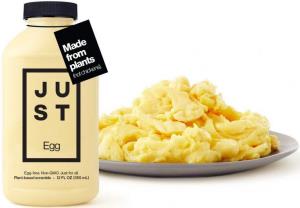 shell egg industry and extensive market demand for mayonnaise and other products throught the various iterations of his company. The past history of Tetrick and his companies can be retrieved from the web or by entering “Tetrick” or “Just” in the search feature of this website. shell egg industry and extensive market demand for mayonnaise and other products throught the various iterations of his company. The past history of Tetrick and his companies can be retrieved from the web or by entering “Tetrick” or “Just” in the search feature of this website.
His major product appears to be an ersatz egg substitute extracted from mung beans imported from East Africa and Asia. Industry observers suggest that sales of Just Egg liquid product through the first six months of 2020 have not exceeded $7 million with approximately a million units sold, representing a retail price of $7 per pack. Unfortunately prices have not been verified since despite visits to numerous supermarkets neither Just Egg liquid nor Just Mayonnaise were available for review.
A significant comment by Tetrick is that he hopes to “hit operating profitability sometime before the end of 2021.” Operating profit and net profit can be widely different especially with start-ups” that burn capital on R&D and G,A&S at a prodigious rate. In the event of an intended IPO filing analysts and underwriters will naturally look at market growth and profitability, along with other parameters including “character” as used to evaluate an enterprise. It is doubtful that Tetrick would care for the questions and disclosure associated with an IPO.
For the record, Vital Farms (VITL) priced at $22 and by close of trading on July 31st rose to $34. VITL peaked at $43.30 and closed at $35.87 on August 20th. Analysts consider the share to be “overpriced”. Vital Farms has a market capitalization of $1.41 billion. In contrast, Cal-Maine Foods, the largest egg producer in the world, has a market capitalization of $2.04 billion and has traded in a 52-week range of $30.74 to $46.66 with a 50-day moving average of $44.55.

|
Third-Party Food Delivery Unprofitable
|
08/17/2020 |
|
 EGG-NEWS has frequently commented on the extreme competition and low profit associated with third-party food and grocery delivery. Extreme competition has inevitably resulted in consolidation. Recently GrubHub operating in the U.S. was acquired by Just Eat Take Away of the EU. Uber Technologies then acquired Postmates, their second choice, for $2.65 billion in an all-stock transaction. Uber Technologies has also integrated Corner Shop to establish a foothold in Latin America. EGG-NEWS has frequently commented on the extreme competition and low profit associated with third-party food and grocery delivery. Extreme competition has inevitably resulted in consolidation. Recently GrubHub operating in the U.S. was acquired by Just Eat Take Away of the EU. Uber Technologies then acquired Postmates, their second choice, for $2.65 billion in an all-stock transaction. Uber Technologies has also integrated Corner Shop to establish a foothold in Latin America.
Uber Technologies recently restructured, establishing the “Mobile” segment representing ride hailing and “Delivery” responsible for food and grocery services, previously operated as Uber Eats. A third segment “Freight” will operate in parallel with the two major company segments.
The relative non-profitability of food delivery is illustrated by the Q2 results posted by Uber Technologies. For the most recent quarter, the Delivery segment lost $232 million on revenue of $885 million. In contrast, Mobility showed a net contribution to EBITDA of $50 million on revenue of $793 million. The Freight segment lost $49 million on revenue of $167 million. For Q2 of 2020, Uber Technologies lost $1.775 Billion on revenue of $2.241 billion with an EPS of $[1.02]. For the corresponding second quarter of  2019, Uber Technologies lost $5.24 billion on revenue of $3.166 Billion with a negative EPS of $[4.72]. It is to the credit of CEO Dara Khosrowshahi that expenses were sharply reduced over the past year. For Q2 of FY 2019, expenses for the categories of Research and Development, Sales and Marketing and General Administration amounted to $5.92 Billion. For the most recent quarter the company reduced expenditure in the three categories to $1.89 Billion. 2019, Uber Technologies lost $5.24 billion on revenue of $3.166 Billion with a negative EPS of $[4.72]. It is to the credit of CEO Dara Khosrowshahi that expenses were sharply reduced over the past year. For Q2 of FY 2019, expenses for the categories of Research and Development, Sales and Marketing and General Administration amounted to $5.92 Billion. For the most recent quarter the company reduced expenditure in the three categories to $1.89 Billion.
Uber Technologies has a market capitalization of $53.4 billion and has traded over the past 52 weeks in a range of $13.71 to $41.86 with a 50-day moving average of $31.80. Twelve-month trailing return on assets was a negative 10.0 percent with a negative 52.7 percent on equity. Operating margin attained negative 34.7 percent and the profit margin negative 51.0 percent. As of June 30th, 2020 total assets amounted to $28.24 billion with long-term debt of $9.67 billion.
Uber and other ride hailing companies have a significant problem in California. The company recently lost a court challenge to AB5, legislation that designated drivers as employees eligible for benefits rather than independent contractors. A California court denied a request for a moratorium in implementing AB5 until the results of Proposition 22 on November 3rd are known. This ballot initiative effectively parallels AB5 in intent. Accordingly, the company will have to meet an August 20th deadline for compliance. Both Lyft and Uber will incur higher costs if they are obliged by law to provide drivers with benefits including sick leave, insurance, and PPE.
Recovery of the casual dining and white-tablecloth segments of the restaurant industry is reliant on third-party delivery either provided by services such as Uber Eats or direct delivery by restaurants. In the event that California Proposition 22 is adopted which is most likely, Uber and Lyft together with their clones will not be able to pass on increased costs to consumers and restaurants. It is generally accepted that trends that emerge in California eventually spread eastward to take root on the opposite coast and eventually encompass the entire nation. Financial prospects for third-party restaurant and grocery delivery do not appear promising. Obviously, there is a need for this service, but providers cannot make a profit with prevailing rates.

|
Comments By ENC Director Dr. Mickey Rubin to the Dietary Guidelines Advisory Committee
|
08/14/2020 |
|
On August 11th Dr. Mickey Rubin, Executive Director of the Egg Nutrition Center (ENC) presented comments on the Final Report of the USDA Dietary Guidelines Advisory Committee.
|
|
He stated:-
“Significantly, the Committee highlighted science supporting eggs as a FUNDAMENTAL first food for infants and toddlers. Eggs provide several nutrients noted as important during this time of rapid brain development, including high-quality protein, choline, and iodine. The Committee’s thorough review of the science recognized eggs’ role in providing these critical nutrients, including eggs in recommendations from the very moment infants are ready for solid foods.
While choline is under-consumed by most Americans, the Committee noted that this poses special challenges for infants, toddlers, and pregnant women. A recent survey commissioned by ENC showed low levels of awareness of choline, among both new and expecting mothers and the health professionals who care for them. Over 70 percent of these moms and over 40 percent of OBGYN’s and pediatricians were unfamiliar with choline. With less than 10% of pregnant women meeting the Adequate Intake, this lack of knowledge represents a barrier to adequate choline consumption. These data suggest that the recommendations for choline within the Report must be amplified with education and outreach.
|

Dr. Mickey Rubin ENC |
|
Related, the Report highlighted iodine as a nutrient of public health concern for pregnant women, and as a nutrient important for infant brain development. While the Report lists several foods that contain iodine, eggs - which contain 20% of the daily value – were not listed as a food to help close this nutrient gap.
 As an excellent source of BOTH choline and iodine, new and expecting moms would benefit greatly from education and outreach on including eggs in their diets to achieve recommendations and support brain development. As an excellent source of BOTH choline and iodine, new and expecting moms would benefit greatly from education and outreach on including eggs in their diets to achieve recommendations and support brain development.
The Report also recommended early introduction of eggs to reduce the risk of egg allergy. This conclusion aligns with previous recommendations from the American Academy of Pediatrics. Given older, contradictory guidance to AVOID early introduction of allergens, it will be especially important to provide clear guidance and education on this new recommendation.
The Report recognized that eggs can help Americans move towards healthier diet patterns and meet nutrient needs at ALL ages. In children, the Committee identified the diet quality benefits if energy were to be redistributed from added sugars to the Protein group – highlighting eggs as a preferred nutrient- dense option. In pre-teens and adolescents – particularly girls – eggs were encouraged for their protein and choline content. Older adults were noted for poor nutritional status related to protein and vitamin B12, two nutrients for which eggs provide greater than 10% of the daily value. Eggs also were identified as one of the few natural food sources of vitamin D, a nutrient of public health concern for all Americans.
This Report represents a tremendous step forward in helping Americans build healthy diets at every age. Egg Nutrition Center stands ready to be a partner in educating the public about the Dietary Guidelines and how eggs, as a nutrient-dense food, contribute to health and wellbeing at every age and life stage in a variety of ways”.
|

|
Are Consumers Ready to Pack Pantries Again Following a COVID-19 Resurgence
|
08/10/2020 |
|
Market survey company Acosta recently determined that consumers will initiate a new cycle of stockpiling in the event that COVID-19 restrictions are reimposed. Two thirds of those responding consider that a lockdown is either extremely or somewhat likely and that this cohort is extremely concerned over the current incidence and mortality rates of the infection. More than a third of those surveyed indicated that they stocked up at the beginning of the COVID outbreak in March and intend once again to fill their pantries. Fifteen percent did not stock up in March, but are inclined to do so should circumstances change. Only a quarter of respondents did not stock up in March and have no intention of buying more than short-term requirements if restrictions are re-imposed.
|
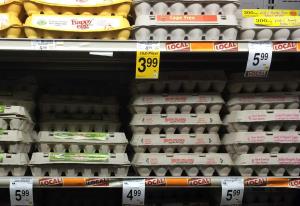
Surge Pricing in March |
|
Darian Pickett, CEO of Acosta stated, "as COVID cases continue to rise most shoppers believe we're heading for another shutdown and plan to respond accordingly so retailers should be prepared for a new surge". He added "hand sanitizer, masks and gloves will be the most in-demand items in additional to basic school supplies and many will opt for online shopping with delivery options". The level of concern is illustrated by the fact that only 25 percent of those surveyed opined that they are looking forward to the holidays and do not plan to celebrate as usual. An equal proportion is apparently in denial with no forward planning for the holiday season. The remainder of respondents accepts that the holiday season will be disrupted and subject to restrictions.
 The important question is whether purchasing patterns influenced by COVID will or will not influence the seasonal increase in demand during the fourth quarter. If demand is moderated downward, given the size of the national flock, prices will be lower than production cost with a negative impact on annual profit. On balance there will be probably not be any lock-down given the timing of the 2020 election and the prevailing political climate. Recession and unemployment will however limit non-essential expenditure on consumables and gifts with inexpensive food, including eggs benefitting. The important question is whether purchasing patterns influenced by COVID will or will not influence the seasonal increase in demand during the fourth quarter. If demand is moderated downward, given the size of the national flock, prices will be lower than production cost with a negative impact on annual profit. On balance there will be probably not be any lock-down given the timing of the 2020 election and the prevailing political climate. Recession and unemployment will however limit non-essential expenditure on consumables and gifts with inexpensive food, including eggs benefitting.
|

|
Prospects for Pfizer-BioNTech and other Vaccines
|
07/26/2020 |
|
The Department of Health and Human Services has announced an agreement to purchase 100 million doses of a candidate COVID-19 vaccine for $1.95 billion ($20 per dose) subject to efficacy.
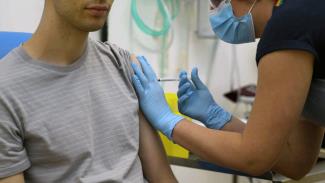
Pfizer recently announced that one of the candidate vaccines produced using technology developed by BioNTech of Germany stimulated antibody production and has now progressed to Phase Two evaluation. Similar announcements have been made for the Astra-Zeneca Oxford vaccine and other candidates.
If development proceeds as planned, one of the various candidate vaccines might be approved by the end of October and could be supplied in commercial quantities during the first quarter of 2021.
The announcement follows new concern as to the actual protective ability of antibodies against SARS-CoV-2 and also the durability of antibodies. This is based on studies demonstrating decay of antibody as measured by ELISA assay in patients recovering from COVID-19 and anecdotal reports of re-infection. It is also possible that mutations in the SARS-CoV-2 genome may require 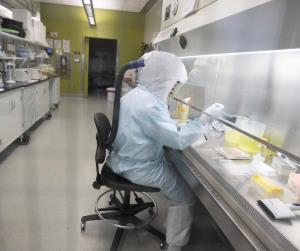 periodic modification of vaccines although the basic technology and manufacturing capacity would be in place to effect modifications to maintain efficacy. periodic modification of vaccines although the basic technology and manufacturing capacity would be in place to effect modifications to maintain efficacy.
Even if a suitable vaccine is available in early 2021 the current social climate poisoned by misinformation and political polarization will detract from attaining the level of herd immunity required to suppress the incidence rate of infection. The population of the World will be obliged to continue preventive measures that have proved successful in nations such as Taiwan, Germany and South Korea for many years with or without effective vaccines.
Operation Warpspeed supports research, development and manufacturing capability of pharmaceutical companies with promising vaccine candidates.

|
Germany Closing in on Cockerel Disposal
|
07/17/2020 |
|
Well here we are in mid-2020 with no practical solution to the problem of gender sorting to avoid depletion of hatched layer-strain cockerels. Three years ago research institutes and startups were actively soliciting and obtaining funding for technology to offer a solution. Techniques requiring breaking of shells to visualize embryonic development, extraction of fluids for hormone assay at 16 days of incubation, sophisticated spectroscopy, and other proof-of-concept experiments were offered. On even superficial examination, none of these approaches had the potential to differentiate between fertile eggs containing male or female embryos at a rate that would be commercially and financially acceptable.
Naturally along with the science-based contenders, there were a host of charlatans offering gee-whiz blackbox come-ons, only to disappear with funding. One especially egregious contender was developed by an engineer who since has divested his LED light company who patented claimed technology to not only differentiate between male and female-bearing eggs during incubation, but could also influence the gender of embryos. To his credit this was not a scam, but merely a delusion.
|
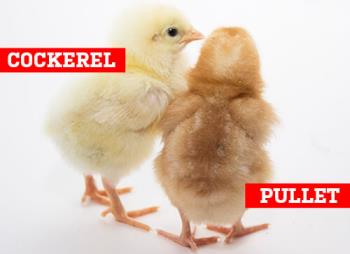
|
|
|

Federal Minister of Agriculture, Julia Kloeckner |
And now we come to the righteously indignant. The Green Party in Germany, in many EU nations, has gained power. Julia Klockner, Federal Minister of Agriculture, now realizes that what was promised four years ago is still half a decade in the future. In a recent interview with the Neue Osnabrücker Zeitung, an influential newspaper in a dense poultry-producing area, she opined “as I have not been able to see that the industry is using the existing alternatives to end chick killings across the board by the end of 2021, I am proposing a law.” Over the past two years, attempts have been made to demonstrate the feasibility of raising unwanted layer-strain cockerels using sentiment to buttress a high price due to inappropriate genetics. Attempts to breed dual-purpose strains representing a retrograde back-to-the future compromise approach that has been financially unsuccessful. Farmers are generally more discriminatory and capable of assessing the value of livestock than urban liberals in Birkenstocks, especially a tenth- generation Niedersachsen bauer.
|
|
If a law banning disposal of layer-strain cockerels in Germany is enacted, hatcheries distributing pullet chicks would close. If the law were extended to importation of pullets derived from hatcheries in other EU nations that disposed of cockerels, the layer industry in Germany would cease. All table eggs would have to be imported, placing considerable strain on egg producers in Holland already constrained by environmental regulations. It seems that Klockner’s intentions would do little other than enrich producers in Spain and Italy and add to food inflation in Germany. The bottom line would be that just as many cockerels would be euthanized.
Until an accurate, rapid and practical method of gender determination and segregation is developed, the industry will have to use all appropriate technology to render unwanted cockerels insensible before disposal.
There may never be a solution that will satisfy opponents of intensive livestock production. It was suggested that any system of differentiation should be effective before the fifth day of incubation. Even if this were to be achieved, purists would claim that removal and destruction of fertilized eggs containing male embryos would be gender discrimination. Germany is hypersensitive over mass killing, especially by gas, and disposal of cockerels represents an acceptable atonement for past injustices.
|

|
Progress on COVID-19 Vaccine
|
07/14/2020 |
|
 In the midst of pessimistic data on the increasing incidence rate of COVID-19 in the U.S., Latin America and the Middle East, some good news on vaccine development was released that should buoy optimism. Pfizer in partnership with BioNTech SE announced that two candidate vaccines will receive “Fast Track” designation from the FDA. The Pfizer- BioNTech consortium is competing with Moderna Inc. working with AstraZeneca PLC. In the midst of pessimistic data on the increasing incidence rate of COVID-19 in the U.S., Latin America and the Middle East, some good news on vaccine development was released that should buoy optimism. Pfizer in partnership with BioNTech SE announced that two candidate vaccines will receive “Fast Track” designation from the FDA. The Pfizer- BioNTech consortium is competing with Moderna Inc. working with AstraZeneca PLC.
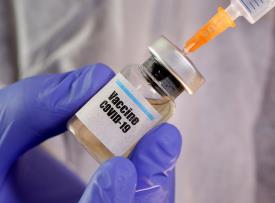 The BioNTech and Moderna alternative vaccines have delivered promising preliminary results in human trials by stimulating an antibody response. More extensive trials will be required to confirm that antibody level actually correlates with protection and that there are no undesirable side effects and that long-term protection is stimulated. The BioNTech and Moderna alternative vaccines have delivered promising preliminary results in human trials by stimulating an antibody response. More extensive trials will be required to confirm that antibody level actually correlates with protection and that there are no undesirable side effects and that long-term protection is stimulated.
Although there is a dire need for an effective, but safe vaccine, regulatory agencies worldwide are aware of both political and economic pressure to grant approval, but this imperative is tempered by their collective knowledge of past vaccine failures. At best an ineffective vaccine will cause no harm but will be a costly exercise and will require resources to administer. Despite raising false hopes an ineffective vaccine may prejudice the adoption of a subsequent product. It is however possible that deleterious side effects of a successful vaccine may only be determined following large-scale administration. Previously examples of difficulties encountered include an inactivated Cutter vaccine against poliomyelitis in the 1955, RSV vaccines (1967), swine flu vaccine in the U.S. (1976) initial administration of rotavirus vaccines in developing nations in 2012, and dengue vaccine in 2017. Problems were only encountered after field deployment, leading to modification in the way vaccines were prepared, total withdrawal or replacement with an improved product.

|
Obligations of Employers with Regard to COVID-19
|
07/09/2020 |
|
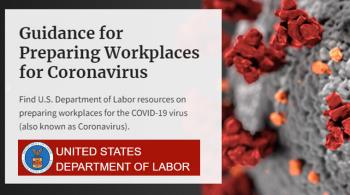 It is highly probable that individuals employed on farms or in packing plants will contract COVID-19. Employers are obliged in terms of the Occupational Safety and Health Administration (OSHA) General Duty Clause to maintain a safe environment to take action to suppress infection. Employers are also enjoined from releasing the identity of infected employees in terms of the American with Disabilities Act. Results of screening or other diagnostic procedures must be held as confidential medical information. It is highly probable that individuals employed on farms or in packing plants will contract COVID-19. Employers are obliged in terms of the Occupational Safety and Health Administration (OSHA) General Duty Clause to maintain a safe environment to take action to suppress infection. Employers are also enjoined from releasing the identity of infected employees in terms of the American with Disabilities Act. Results of screening or other diagnostic procedures must be held as confidential medical information.
The supervisor of an employee learning of a positive COVID-19 diagnosis is obligated to report the diagnosis to the company Human Resources Director or designated manager.
It is incumbent on the employer to take immediate action to determine the extent of infection in the workplace. The following information can be requested from the employee:
- A list of co-workers with close contact during the 14-day incubation period prior to establishing the diagnosis.
- The affected employee should describe areas visited in the plant including workstation, breakroom and change rooms during the 14-day incubation period preceding the diagnosis.
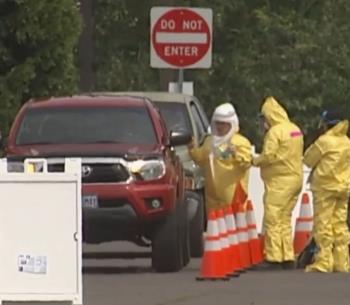 Co-workers should be informed of the diagnosis without identifying the individual other than to authorize HR personnel to obtain epidemiologic information. Affected workers or those in direct contact should be quarantined and contact should monitor for clinical symptoms and submit to testing in the event that they are concerned or develop symptoms. Co-workers should be informed of the diagnosis without identifying the individual other than to authorize HR personnel to obtain epidemiologic information. Affected workers or those in direct contact should be quarantined and contact should monitor for clinical symptoms and submit to testing in the event that they are concerned or develop symptoms.
A general notice to the effect that an employee has tested positive for COVID is permissible without identifying the worker. `Businesses are not obligated to disclose the existence of COVID-19 within the workforce but in the event of contact between the affected employee and third parties, it would be prudent to discuss preventive measures and subsequent monitoring of contacts. Contractors assigning employees to a complex can be informed of the diagnosis on an affected employee noting the date which the diagnosis was confirmed.
HR departments in large companies should be familiar with requirements of the Americans with Disabilities Act and OSHA regulations. Legal advice can be obtained in advance of a possible outbreak.
Companies should take preemptive measures to prevent introduction of COVID-19 into farms and packing plants including:
- Health screening each day
- Encouraging the use of masks
- Intensive decontamination at the end of the working shift
- Insulation of dry hydrogen generators in breakrooms, offices and change rooms
- Regular education sessions concerning protection from COVID-19 both in the community and the workplace

|
Status of Trade with China
|
06/24/2020 |
|
 In interviews with the media on Monday June 26th White House Advisor Dr. Peter Navarro, a confirmed Sinophobe, implied that the Phase One Trade Agreement with China “was over”. This remark sent the stock market and commodity prices into a tailspin with the Dow dropping 400 points before a retraction was issued. Navarro claimed he was misinterpreted and his comment referred to the “lack of trust we now have of the Chinese Communist Party after they lied about the origins of the China virus and foisted a pandemic upon the world.” In interviews with the media on Monday June 26th White House Advisor Dr. Peter Navarro, a confirmed Sinophobe, implied that the Phase One Trade Agreement with China “was over”. This remark sent the stock market and commodity prices into a tailspin with the Dow dropping 400 points before a retraction was issued. Navarro claimed he was misinterpreted and his comment referred to the “lack of trust we now have of the Chinese Communist Party after they lied about the origins of the China virus and foisted a pandemic upon the world.”
Without commenting on the validity of this questionable assertion, it is evident that the Administration now displays a considerable animosity towards China. Whether this is based on the public health ramifications of the COVID-19 outbreak or the pandemic situation is being misrepresented as a diversionary tactic for political reasons is a question of speculation. It is considered significant that President Trump tweeted on Monday evening that the agreement is still in place and expressed the wish that China will comply with commitments. This sentiment was reinforced by Larry Kudlow, Director of the Economic Council who praised Beijing for their action on trade.
 In recent weeks, China has placed orders for soybeans consistent with their purchase pattern in previous years, requiring deliveries from September onwards representing the new market year. The USDA data confirmed that exports of soybeans to China attained 208,000 metric tons in March followed by 424,000 metric tons in April. Commitments amounting to $10 billion in terms of the Phase One Agreement have already been completed. In recent weeks, China has placed orders for soybeans consistent with their purchase pattern in previous years, requiring deliveries from September onwards representing the new market year. The USDA data confirmed that exports of soybeans to China attained 208,000 metric tons in March followed by 424,000 metric tons in April. Commitments amounting to $10 billion in terms of the Phase One Agreement have already been completed.
Currently there are delays on shipments of poultry now subject to an unjustified testing procedure for COVID-19 virus. Product from one plant in Springdale, Arkansas has been embargoed based on the prevalence rate of COVID-19 among workers. Whether this action is based on a distorted and highly sensitive concern over COVID-19 and the recent upsurge in Beijing, or whether it is yet another one of the not-so-subtle messages sent by the Central Government is unknown at this time. Traders report that the action, also directed against Brazil is the initiative of the General Administration of Customs.
It is evident that China will be hard pressed to achieve the targets for agricultural imports required in terms of the Phase One Agreement. The volume of commodities actually delivered would have to increase by $10 billion for each of the succeeding quarters of 2020 to attain the promised $36.5 billion for the current calendar year. Informed agricultural economists project that China may not even meet the 2017 baseline of $24 billion.

|
Functional Microbiome Critical to Suppress Antibiotic Resistance
|
06/16/2020 |
|
Dr. Richard Murphy Director of Research for the Alltech European Bioscience Center considered the modulation of antimicrobial-resistance in a presentation in the poultry session at the recent Alltech ONE Virtual Experience. Murphy stressed that the microbiome is involved in multiple functions including suppression of pathogens, modulating the immune system and influencing intestinal morphology. The intestinal microbiome may be considered as an additional organ enhancing digestion and contributing to health and productivity.
Numerous factors influence the composition of the microbiome including feed ingredients, and in the case of poultry, ingestion of litter, pH of water and medication including antibiotics. It is generally conceded that a functional and beneficial microbiome is characterized by diversity. Unfortunately antibiotics severely reduce diversity and thereby depress the beneficial effects of a normal balanced flora. Reducing diversity permits the proliferation of pathogens resulting in deleterious changes within the intestinal tract. The use of antibiotics for growth promotion or therapy is associated with excretion of non-absorbed antibiotic and metabolites into the environment. It is estimated that with respect to some antibiotics, 90 percent may be excreted in urine and 75 percent in feces. Injudicious use of antibiotics on a specific farm will inevitably result in the emergence of antibiotic resistance. This will contribute to dissemination of antibiotic-resistant organisms through infected soil, water ansd products. Studies conducted in Europe and especially in Denmark show that antibiotic resistance can persist in livestock on a specific farm for prolonged periods.
|

Dr. Richard Murphy |
 Murphy suggests that strategies to rehabilitate the intestinal microbiome can reverse the deleterious effect of administration of growth-stimulating antibiotics and antibiotic therapy. Prebiotics that demonstrate efficacy can reintroduce diversity to the intestinal microbiome with beneficial effects on health and productivity. There are number of feed additives that can influence the microbiome including prebiotics, active live probiotics, enzymes that assist in degradation of nutrients, botanicals and short-chain fatty acids. Murphy suggests that strategies to rehabilitate the intestinal microbiome can reverse the deleterious effect of administration of growth-stimulating antibiotics and antibiotic therapy. Prebiotics that demonstrate efficacy can reintroduce diversity to the intestinal microbiome with beneficial effects on health and productivity. There are number of feed additives that can influence the microbiome including prebiotics, active live probiotics, enzymes that assist in degradation of nutrients, botanicals and short-chain fatty acids.
First generation prebiotics comprising extracts from the cell wall of the common yeast (Saccharomyces cerevisiae) including mannanoligosaccharides, were introduced over 30 years ago and marketed as Bio-Mos™. Subsequent research demonstrated that an extract from MOS termed the mannan-rich fraction (MRF) demonstrated higher activity and induced a more pronounced beneficial response in the microbiome. Both MOS and MRF prebiotics have the ability to adsorb pathogenic bacteria with Type-1 fimbriae including Salmonella and E. coli. By modulating the microbiome, intestinal integrity may be improved together with stimulation of the immune response by the intestine.
Murphy stressed that the greatest benefit in broilers is derived from administration of the MRF prebiotic early in the growing cycle to establish a beneficial flora that persists through to depletion.
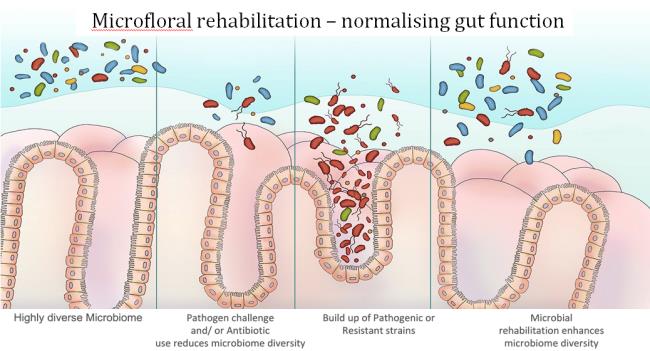
Murphy noted that in addition to diversity, as a result of including MRF in feed, the microbiome became more balanced with a move away from a Gram-positive over-predominance. A balanced microbiome is generally more resistant to colonization by pathogens than a microflora that is biased in favor of a particular bacterial grouping. In flocks with a balanced and diverse microbiome, positive effects on intestinal morphology are evident from the duodenum extending through to the cecum.
Recently attention on rehabilitation of the microbiome in monogastric livestock has focused on antimicrobial resistance. There are multiple classes and types of antibiotics many of which were previously administered to poultry, resulting in the emergence of drug-resistant pathogens. Bacteria can extend antibiotic resistance either through exchange of plasmids, chromosomal transfer or indirectly by phages. Newer research has identified the presence of more than one-hundred gene markers in the broiler cecum conferring resistance to multiple individual antibiotics. This overall group of resistance genes is referred to as the resistome and can be further categorized into the so-called core and accessory groupings. Resistance in flocks can either be represented by widespread dissemination within the flock referred to as core resistance. In contrast when only a few birds in a flock carry particular antibiotic-resistant genes a state of accessory resistance pertains.
Inclusion of effective prebiotics in diets suppresses the intensity of core resistance. This has implications for public health as it enhances the ability of the microbiome to suppress antibiotic resistant pathogens. Studies conducted in Brazil over extended periods demonstrated a significant and progressive decrease in the recovery of antibiotic-resistant bacteria from the intestinal tract. A broiler complex processing 1.5 millions per week over a two-year period experienced a four-fold decrease in recovery of drug-resistant pathogens of human health significance attesting to the value of a diverse microbiome.

|
Organic Food Sales Attained $50 Billion in 2019
|
06/14/2020 |
|
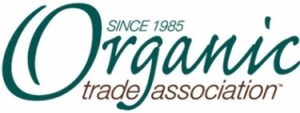 According to the Organic Trade Association (OTA), sales of USDA-certified organic foods attained $50 billion, approximately five percent above 2018. Laura Batcha, CEO and Executive Director of the association, noted “A 2020 survey shows that consumers were increasingly seeking out the organic label in the first quarter to feed their families the healthiest food possible.” She added “The pandemic has only increased our desire for clean, healthy food.” According to the Organic Trade Association (OTA), sales of USDA-certified organic foods attained $50 billion, approximately five percent above 2018. Laura Batcha, CEO and Executive Director of the association, noted “A 2020 survey shows that consumers were increasingly seeking out the organic label in the first quarter to feed their families the healthiest food possible.” She added “The pandemic has only increased our desire for clean, healthy food.”
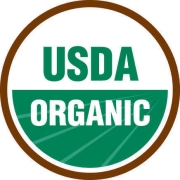 EGG-NEWS strongly deprecates the frequent pronouncements of the Organic Trade Association implying that generic foods are in some way less “clean and healthy” compared to certified organic products. COVID-19 is not a food borne infection and attempts by the OTA to suggest otherwise is devoid of any scientific justification. EGG-NEWS strongly deprecates the frequent pronouncements of the Organic Trade Association implying that generic foods are in some way less “clean and healthy” compared to certified organic products. COVID-19 is not a food borne infection and attempts by the OTA to suggest otherwise is devoid of any scientific justification.
Consistently, analytical stdies fail to show any superior nutritional benefit from certified organic foods compared to generic equivalents. Organic certification is based on documentation, unsupported by laboratory procedures to quantify nutrient content or pesticide residues and does not address freedom from potential pathogens. The differential in cost between organic and generic food products is justified on the basis of misinformation, perception, sentiment and fear.

|
Beth Ford Comments on a Post-COVID Future:
|
05/31/2020 |
|
 Beth Ford, CEO of Land O' Lakes (LOL) recently commented on the effects of COVID on her company and projected future trends in a post-COVID market environment. As with many food companies Land O'Lakes, the world's largest co-operative, was faced with a collapse of the food service sector. Many of Land O' Lakes farmer members producing hogs have been impacted by plant shutdowns and reduced capacity. Concurrently dairy-producing members have had to dump milk and others have destroyed produce as a result of disruption in supply chains. Beth Ford, CEO of Land O' Lakes (LOL) recently commented on the effects of COVID on her company and projected future trends in a post-COVID market environment. As with many food companies Land O'Lakes, the world's largest co-operative, was faced with a collapse of the food service sector. Many of Land O' Lakes farmer members producing hogs have been impacted by plant shutdowns and reduced capacity. Concurrently dairy-producing members have had to dump milk and others have destroyed produce as a result of disruption in supply chains.
Ms. Ford commented on the upsurge in retail buying compensating in part for the decline in food service sales. In common with other food industry leaders, Ford noted a restoration in food service commenting that at the end of May, LOL was back to approximately 90 percent of pre-COVID sales. This is reinforced by the statement by Joe F. Sanderson Jnr. addressing analysts last week stating that Sanderson Farms food service business is approaching 80 percent of the volume prior to COVID-19. Beth Ford questions whether the upsurge in sales reflects actual increased demand or is only a temporary phase of "filling the pipeline".
As with many food processors and manufacturers Land O' Lakes encountered difficulty in converting plants configured for food service products to supply the retail market. Although possible, conversion is both expensive and time-consuming and neither Ford nor Sanderson see any significant change in relative production capacity for these markets.
 In predicting the future of food, Ford emphasized the move to home cooking. This is reflected in increased demand for butter and similar products used for baking. Recent IRI data and observations in club stores and supermarkets confirmed increased sales of flour. Ford noted that current consumer purchases are reminiscent of the patterns before Mother's Day, Thanksgiving and Christmas. In predicting the future of food, Ford emphasized the move to home cooking. This is reflected in increased demand for butter and similar products used for baking. Recent IRI data and observations in club stores and supermarkets confirmed increased sales of flour. Ford noted that current consumer purchases are reminiscent of the patterns before Mother's Day, Thanksgiving and Christmas.
It is questioned whether home cooking will persist after consumers emerge from COVID confinement. This commentator believes that rediscovering the benefits of home preparation of meals both in terms of cost and a sense of fulfillment will outweigh the advantages of convenience from consuming QSR and restaurant meals. This will be especially evident among Boomers but there will be differences among age demographics in the U.S. There are obviously new opportunities for prepared meals and meal kits providing they deliver quality and variety at appropriate cost. Traditional TV dinners that resemble airplane food will certainly not displace restaurant dining in the context of eating at home. The cost of home-delivery over the intermediate term will also be a disincentive to purchasing restaurant meals.
In the context of changes in U.S. preferences for eating there is obviously a place for eggs in the post-COVID diet. Initiatives established by the American Egg Board to position eggs as an every-meal ingredient should be extended emphasizing both convenience and nutritional value. In a post-recession period following COVID-19 the cost per unit of protein compared to red meat and vegetable substitutes should be advanced as a consumer benefit.

|
Senate Democrats Propose Increased Funding for Food Production
|
05/29/2020 |
|
In a Bill under consideration by the Senate Agriculture Committee, over $7.5 billion would be made available in grants, loans and guarantees to improve distribution of food to the needy. The Bill proposes $5.5 billion for producers to upgrade equipment, expand facilities and make available new products. An allotment of $1 billion would assist organizations involved in emergency feeding. Approximately $1 billion would be made available to subsidize storing and distribution of perishable foods by food banks.
According to Senator Debbie Stabenow (D-MI), Ranking Member on the Senate Agriculture Committee "the COVID-19 crisis is testing the strength of our nation's food supply chain creating a ripple effect that’s harming our families, farmers and workers". She added "this bill will help strengthen our food supply by redirecting food to families and helping farmers and processors retool their operations".
|

Sen Stabenow |
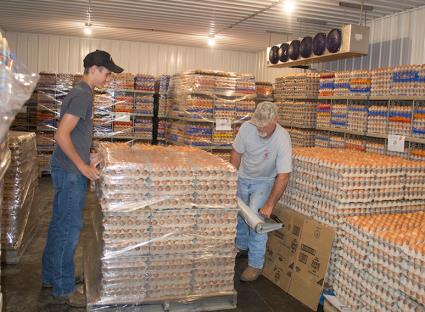 It is apparent that despite the best intentions and actions of Congress, making money available to the designated recipients does not necessarily relieve the stresses and hunger among families who have been impacted by COVID-19. This is especially the case with children deprived of meals that would have been provided at their now-closed schools. It appears that between the Federal and state bureaucracies they collectively are unable to effectively even give away money! (see item on child hunger in this edition). It is apparent that despite the best intentions and actions of Congress, making money available to the designated recipients does not necessarily relieve the stresses and hunger among families who have been impacted by COVID-19. This is especially the case with children deprived of meals that would have been provided at their now-closed schools. It appears that between the Federal and state bureaucracies they collectively are unable to effectively even give away money! (see item on child hunger in this edition).
The egg industry is especially generous in donating and delivering products to local food banks. The inherent nutritional value of eggs, especially for children, ease of preparation and low cost for storage and distribution should be recognized by relief agencies that could purchase and supply more eggs to needy families given current needs.

|
Nebraska to Cease Releasing COVID-19 Data on Meat Packing Plants
|
05/15/2020 |
|
 Governor Pete Ricketts stated on Wednesday May 6th that the state would not release specific incidence data for COVID-19 infections in plants in Nebraska. This decision was apparently justified on the basis of “privacy”. County health departments have previously issued periodic reports on the incidence of COVID-19 at major plants in the state including the Tyson plant in Madison, and the Smithfield plant in Crete. Governor Pete Ricketts stated on Wednesday May 6th that the state would not release specific incidence data for COVID-19 infections in plants in Nebraska. This decision was apparently justified on the basis of “privacy”. County health departments have previously issued periodic reports on the incidence of COVID-19 at major plants in the state including the Tyson plant in Madison, and the Smithfield plant in Crete.
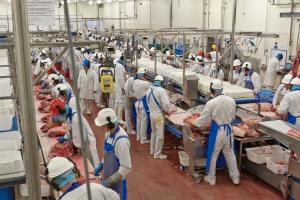 COVID-19 incidence rates should be made available since workers interact in their communities and often plants are the major employer in a county or region. Differences among plants could indicate more effective protective measures or the existence of specific risk factors that should be addressed. Suppressing data creates the impression of a cover-up and is a reflection of a totalitarian mentality, foreign to the principles of U.S. democracy. In the absence of official figures speculative and unfounded rumors circulate leading to greater concern than from the expedient of withholding data, COVID-19 incidence rates should be made available since workers interact in their communities and often plants are the major employer in a county or region. Differences among plants could indicate more effective protective measures or the existence of specific risk factors that should be addressed. Suppressing data creates the impression of a cover-up and is a reflection of a totalitarian mentality, foreign to the principles of U.S. democracy. In the absence of official figures speculative and unfounded rumors circulate leading to greater concern than from the expedient of withholding data,

|
Rhetoric on Phase-One Trade Agreement Should Be Toned Down
|
05/14/2020 |
|
 Both China and the U.S. have issued inflammatory statements recently hinting at reneging on the Phase-One Trade Agreement, signed in mid-January. Statements by semi-official organizations in China have urged that the Nation walk away from the agreement. Given the tight control over communications in China, nothing relating to international affairs is issued, printed or posted on news media without some form of central government approval. Both China and the U.S. have issued inflammatory statements recently hinting at reneging on the Phase-One Trade Agreement, signed in mid-January. Statements by semi-official organizations in China have urged that the Nation walk away from the agreement. Given the tight control over communications in China, nothing relating to international affairs is issued, printed or posted on news media without some form of central government approval.
Statements by those opposed to the U.S. are aggrieved over unsubstantiated accusations that China either deliberately engineered SARS-CoV-2 virus or negligently allowed it to escape from the Wuhan National Institute of Virology. Scientists in the U.S. have refuted Administration accusations, which in past days appear to have been muted. China suffered from COVID-19 and inherent in the concept of ‘face” it is understandable that they are deeply offended by assertions that they were responsible for the pandemic. The culpability of regional authorities in suppressing information on the outbreak, even from their own government is an established fact but should be interpreted in the light of how officialdom operates in China.
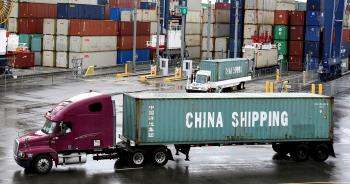 Failing to interpret the response from China in its context, the President has threatened to “tear up the Phase-One Trade deal if China reneges on its purchase obligations.” This would be mutually destructive, since China needs pork and by early summer, soybeans. The U.S. certainly needs the export potential given partial restoration of hog slaughter and a 2020 soybean harvest estimated at 4.13 billion bushels estimated to be 15 percent higher than in 2019. Failing to interpret the response from China in its context, the President has threatened to “tear up the Phase-One Trade deal if China reneges on its purchase obligations.” This would be mutually destructive, since China needs pork and by early summer, soybeans. The U.S. certainly needs the export potential given partial restoration of hog slaughter and a 2020 soybean harvest estimated at 4.13 billion bushels estimated to be 15 percent higher than in 2019.
It is acknowledged that China was slow in implementing the agreement, partly due to COVID-19 but also by purchasing soybeans from Brazil as is normal during the first half of a calendar year. The agreement did allow for competitive pricing and sourcing and did not specify quantities of specific agricultural commodities to be purchased. Starting a new trade war, while attempting to negotiate Phase Two of a trade agreement, appears a self-defeating strategy. Certainly both parties recognize that from a political perspective President Xi does not have to face his electorate in November.

|
Increased Mechanization Predicted Post-Covid
|
05/05/2020 |
|
 In recent essay in the Financial Times Carl Frey noted that COVID-19 and its effects on industry will hasten mechanization as a response to both availability and the direct and indirect components of the true cost of labor. Frey noted that from 2013 to 2017, approximately 12 million line production jobs in China were replaced by mechanization In recent essay in the Financial Times Carl Frey noted that COVID-19 and its effects on industry will hasten mechanization as a response to both availability and the direct and indirect components of the true cost of labor. Frey noted that from 2013 to 2017, approximately 12 million line production jobs in China were replaced by mechanization 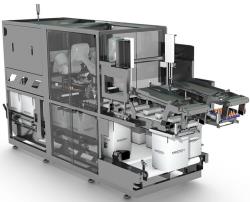 and robotics. Frey also noted that in a post-COVID era, decoupling of world economies is inevitable with re-shoring of manufacturing capacity back to the U.S. Now is the time to prepare by evaluating alternative systems and to consider installing robotic and mechanical alternatives to repetitive labor. and robotics. Frey also noted that in a post-COVID era, decoupling of world economies is inevitable with re-shoring of manufacturing capacity back to the U.S. Now is the time to prepare by evaluating alternative systems and to consider installing robotic and mechanical alternatives to repetitive labor.

|
Congressional Call to Eliminate Wet Markets in Asia
|
04/19/2020 |
|
Legislators in both House and Senate have called for closing wet markets worldwide that offer both live and dead exotic animals and reptiles as food. A resolution introduced by Rep Steve Chabot (R-OH) representing the first district of Ohio also calls into question the disinformation spread by the Government of China regarding the origin of COVID-19.
In a separate action senators Cory Booker (D-NJ) and Lindsey Graham (R-SC) and four other Senatorial colleagues from both sides of the aisle have addressed a letter to the World Health Organization urging a global shutdown of wet markets that are a potential source of zoonotic infections.
Given that the wet market system is a fact of life in Asia, Africa and the Middle East, legislators should not anticipate a rapid response and compliance. In some respects their well-intentioned action may be regarded as quixotic.
|

Rep Steve Chabot (R-OH) |
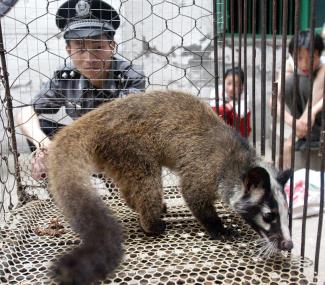
Civet, A known reservoir of SARS virus |
In February 2020 the Government of China banned breeding, transporting and sale of exotics recognizing the risks associated with holding and slaughtering non-conventional species in markets selling meat from domestic livestock together with other food items.
This ban will be virtually impossible to enforce. The edict from the central government made an exception for traditional Chinese "medicine" creating a significant loophole to continue exploitation of wildlife and perpetuating a potential means of transmission of animal viruses to humans.
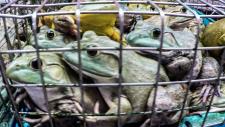 From the perspective of the U.S. it would be more practical to ban our wet markets that operate in many urban centers. From the perspective of the U.S. it would be more practical to ban our wet markets that operate in many urban centers.
|

|
Unemployment? Positions Open? Welfare?
|
04/17/2020 |
|
  CHICK-NEWS has consistently questioned the need for foreign agricultural workers under the H-2A program when the nation supports a large number of non-working citizens. With the sudden increase in unemployment, and the prospect that some of the jobs will not return after the COVID-19 crisis is resolved, it is time that chronically unemployed should seek work in agriculture. CHICK-NEWS has consistently questioned the need for foreign agricultural workers under the H-2A program when the nation supports a large number of non-working citizens. With the sudden increase in unemployment, and the prospect that some of the jobs will not return after the COVID-19 crisis is resolved, it is time that chronically unemployed should seek work in agriculture.
History confirms the mass movement of displaced farmers from the Dust Bowl during the Great Depression, westward to California where they found employment. This was necessary in the absence of liberal Federal and state “safety nets.”
 Aid should be directed at temporary resolution of problems such as the current COVID-19 crisis. It is undesirable to perpetuate multi-generational populations with dependency as a way of life. The chronically unemployed need retraining and should be assisted to migrate to areas where both skilled and unskilled labor is in demand. Aid should be directed at temporary resolution of problems such as the current COVID-19 crisis. It is undesirable to perpetuate multi-generational populations with dependency as a way of life. The chronically unemployed need retraining and should be assisted to migrate to areas where both skilled and unskilled labor is in demand.
SNAP benefitted 40 million of our population at an annual cost of $60 billion in 2019. We need to provide opportunities to assist the unemployed, especially in urban areas, and create an environment where they can be productive and to establish a sense of self-worth and acievement.

|
HSUS to Sue USDA-APHIS over HPAI Program
|
04/15/2020 |
|
 Never wishing to waste a crisis or calamity, the Humane Society of the United States will initiate a lawsuit over the published USDA-Animal and Plant Health Inspection Service (APHIS) plan to control and eradicate highly pathogenic avian influenza (HPAI) Never wishing to waste a crisis or calamity, the Humane Society of the United States will initiate a lawsuit over the published USDA-Animal and Plant Health Inspection Service (APHIS) plan to control and eradicate highly pathogenic avian influenza (HPAI)
The HSUS conflates HPAI, a disease of avian species with COVID-19, an ongoing human infection, noting “The factory farm industry represents an imminent threat of a pandemic resulting from zoonotic pathogens associated with the intensive confinement of animals.”
 The HSUS lawsuit characterizes the HPAI program as “short-sighted and dangerous”. The HSUS lawsuit characterizes the HPAI program as “short-sighted and dangerous”.
Kitty Block CEO of the HSUS stated, “Our federal government should require producers to agree to end their intensive confinement of chickens in cages and shift to cage-free systems that give the birds dramatically more space and ability to engage in healthy, natural behaviors.” Ms. Block is reminded that an isolated outbreak of AI in the Carolinas occurred in barn-housed turkeys and was rapidly controlled and eradicated by the USDA-APHIS. The Agency effectively implemented the same “short-sighted and dangerous” program alluded to in the HSUS lawsuit in association with state officials and the turkey industry in the Carolinas.
It is a matter of record that the initiative to establish a common federal standard for housing laying hens foundered in the face of Congressional reluctance to enact a proposed “egg bill”. Individual states have voted to impose cage-free standards that have been upheld by Federal courts.
COVID-19 as with other recently emerged coronavirus infections including SARS and MERS are by definition, zoonoses but have no relationship with intensive production of livestock. It is generally accepted that the coronaviruses responsible for each of the three infections was derived from bats and transmitted to humans in all probability through an intermediate mammalian host. After undergoing mutation, infection has spread among human populations as a result of specific epidemiologic circumstances including air travel in the case of SARS, high density of population in case of COVID-19 and contact with camels in the case of MERS.
HSUS is perverting science and reality to create legal mischief in pursuit of their vegan agenda. Obviously Wayne Pacelle left the playbook in his desk drawer when he was ousted from HSUS for alleged sexual harassment and financial irregularities.

|
POET and other Ethanol Refiners Shutter Plants
|
04/08/2020 |
|
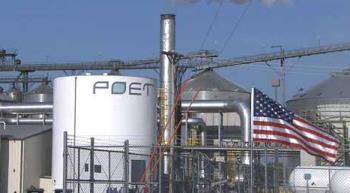 Warren Buffet maintains that only when the tide goes out does one discover who was swimming without a costume. So it is with the ethanol industry that has recently shuttered 41 ethanol plants. This industry has lurched along at the expense of consumers and taxpayers support since its inception by government mandates and ongoing Congressional protection from corn-producing states. Warren Buffet maintains that only when the tide goes out does one discover who was swimming without a costume. So it is with the ethanol industry that has recently shuttered 41 ethanol plants. This industry has lurched along at the expense of consumers and taxpayers support since its inception by government mandates and ongoing Congressional protection from corn-producing states.
Since the advent of the current Administration, exemptions have been granted to small (and not so small) refiners representing a significant proportion of the 15 billion gallons of ethanol used to dilute gasoline at the level of 10 percent to produce E-10 fuel. The EPA action is currently under litigation.
COVID-19 restrictions came out from left field in March and sharply reduced gasoline consumption and hence the requirement for ethanol. The Energy Information Agency anticipates that consumption of gasoline in the U.S will reach the lowest level in 20 years during the second quarter of 2020. This reality coupled with the precipitous drop in the price of crude and reduced export demand has curtailed markets for ethanol.
 POET will cease production at three facilities in Iowa and one in South Dakota and will postpone the opening a fourth plant scheduled to come on line in Indiana. Jeff Broin CEO of POET stated, “across the board biofuel producers and our partners in the farm community face an unprecedented challenge”. He added “our company is working hard to ensure that every biorefinery remains well positioned to support a strong and swift recovery once daily life returns to normal.” POET will cease production at three facilities in Iowa and one in South Dakota and will postpone the opening a fourth plant scheduled to come on line in Indiana. Jeff Broin CEO of POET stated, “across the board biofuel producers and our partners in the farm community face an unprecedented challenge”. He added “our company is working hard to ensure that every biorefinery remains well positioned to support a strong and swift recovery once daily life returns to normal.”
In their press release POET stated that ethanol producers across the country are reducing production proportional to the predicted reduction in demand for automobile fuel. This is estimated to amount to 55 percent of pre-COVID-19 requirements and represents an annualized drop in ethanol demand of approximately 8 billion gallons produced from 2.7 billion bushels of corn. The USDA WASDE forecast #598 released on March 10th estimated that 5.4 billion bushels of corn, equivalent to 34 percent of the projected 2020 harvest would be used for ethanol. Given the lower production of ethanol, it can be presumed that DDGS will also be reduced proportionately and that the poultry and swine industries will purchase corn at lower prices.
Ethanol has decreased in price by 38 percent since the beginning of 2020 and on April 7th was trading at $0.86 per gallon. On June 16th 2019, ethanol traded at $1.62 per gallon. At close of trading on April 7th, May corn closed at $3.32 per bushel. There has been no positive effect from either the Phase-One trade agreement with China or from the USMCA that will officially come into effect June 1st.

|
Dollar Discount Stores Must Offer Fresh Foods to Avoid Restrictions
|
03/28/2020 |
|
 A number of jurisdictions have placed restrictions on the number of dollar-style discount stores based on what is regarded as predatory pricing and a limited range of foods. The biggest concerns relate to the trend that proliferation of these chain stores drive small groceries out of business. This effectively deprives low-income consumers of access to fresh fruit, vegetables and perishable foods. The rise in dollar-style stores creates the phenomenon of "food deserts" since residents of these areas, frequently without transport, do not have convenient access to full-service supermarkets A number of jurisdictions have placed restrictions on the number of dollar-style discount stores based on what is regarded as predatory pricing and a limited range of foods. The biggest concerns relate to the trend that proliferation of these chain stores drive small groceries out of business. This effectively deprives low-income consumers of access to fresh fruit, vegetables and perishable foods. The rise in dollar-style stores creates the phenomenon of "food deserts" since residents of these areas, frequently without transport, do not have convenient access to full-service supermarkets
Dollar stores are strategically located and clustered in areas with low income and also in rural areas without competition from major chains. Dollar discount stores including Dollar General and Dollar Tree, with its subsidiary Family Dollar, operate as many as 30,000 stores in the U.S. This volume represents a 10,000-unit increase over the past ten years with plans to increase units by an additional 20,000 within a decade.
Since stores are in the region of 7,000 square foot in extent compared to 40,000 square foot for a medium-sized Supermarket, capital costs are low favoring proliferation. It is estimated that there are as many as 100 dollar discount stores located within a five-mile radius in moderate to low-income metropolitan areas.
 According to a CNN Business report by Nathaniel Meyersohn, Birmingham, AL, Oklahoma City, OK, Mesquite, TX and Cleveland, OH have all introduced zoning rules that limit the location of dollar stores. According to a CNN Business report by Nathaniel Meyersohn, Birmingham, AL, Oklahoma City, OK, Mesquite, TX and Cleveland, OH have all introduced zoning rules that limit the location of dollar stores.
In response Dollar General is introducing fresh fruit and vegetables in 500 stores and is now stocking a range of "good & smart" nutritious items. Although criticized for the limited initial approach it is evident that Dollar General and Dollar Tree will eventually provide a wider array of health foods.
With the advent of COVID-19 consumers are favoring smaller-format units including Aldi, and convenience stores for essentials including bread, milk and eggs. Dollar discount stores may be a valuable outlet for eggs, making them available across a wide geographic area and specifically to lower-income consumers.
Unfortunately, this may create problems of distribution given obvious logistic challenges. Local producers may be able to service dollar-style discount stores using smaller vehicles and regular deliveries to maintain stock held in small store coolers. Dollar stores should be regarded as a new and possibly beneficial retail channel to increase consumption.

|
Stefan Pohlmann Sentenced in Germany over Salmonella Outbreaks
|
03/26/2020 |
|
Stefan Pohlmann, son of Anton Pohlmann was found guilty as the responsible manager of an egg production enterprise responsible for a serious Salmonella Enteritidis (SE) outbreak in 2014. He was sentenced to one year and nine months, suspended, after being detained for eight months awaiting trial. He was found guilty in190 cases of commercial fraud relating to distribution of eggs known to have been infected with SE and negligent bodily harm in 26 cases. He was fined $375,000 and his company Bayern-Ei (‘Bavarian Egg’) was ordered to pay $1.27 million in compensation. The 2014 SE outbreak occurred in 2014 and involved cases in Austria, France, Germany and the U.K. In a subsequent outbreak of salmonellosis during the summer of 2019 Salmonella was traced back to the Aiterhofen Farm operated by the Pohlmann family. In these cases, Salmonella was detected on the surface of eggs that were not washed as is the practice in most nations in the EU.
|

Anton Pohlmann (left) and his son Stefan (right) |

Prison for the Animal torturer |
As part of his plea bargain, Pohlmann will no longer be eligible to manage commercial livestock in Germany. This penalty was imposed on his father Anton in 1996 when evidence of gross deviations from welfare standards was documented on farms he operated.
For perspective relating to the U.S., Anton Pohlmann established egg production operations in Ohio in 1980 when he purchased land near Croton. By 1984 his operations had 56 layer houses, 21 pullet houses, four egg packing plants, a hatchery, feed mill and support facilities for five million hens. Eventually his Buckeye holdings included complexes in Marseilles, Goshen and Mt.Victory, OH. with a combined total of 11 million hens.
|
In September 2000, a tornado ripped through the Croton complex destroying 12 barns housing about one million hens. The cleanup program was delayed and both Buckeye Egg Farm and the industry were subject to adverse publicity as hens trapped in cages died of starvation and dehydration. Depopulation was impeded by the danger of removing hens from damaged cages in unstable buildings.
The Pohlmann operations were characterized by a series of complaints, lawsuits and citations relating to contamination of streams and groundwater with manure in addition to odor and fly nuisance. These problems resulted in increasing intervention by the Ohio Department of Agriculture and the Ohio Environmental Protection Agency. A major contamination episode occurred in April 1999 from the LaRue Complex causing an extensive fish kill.
Facing punitive action by the State of Ohio involving revocation of permits and adverse judgments on numerous nuisance lawsuits, Pohlmann sold his interest in the Ohio operations to a company with Orland Bethel as a front man for Jack DeCoster in 2003. Following the revelation that DeCoster was the de facto owner and taking into account the problems experienced over ten years the Director of the Ohio Department of Agriculture recommended closure of the entire enterprise. Following a series of contempt of court charges and noncompliance with environmental regulations, Buckeye was ordered to implement a shutdown program involving two barns each week followed by divestment.
The Ohio complexes originally established by Pohlmann have been extensively reconstructed and now function in compliance with environmental and welfare regulations under family management as Versova Holdings LLC. This company formed in 2016 involves equity participation among the Dean, Henning and Boomsma families with farms in Iowa and Ohio. Their origins extend back to 1978 with the establishment of the Center Fresh Group with Central Valley Farms and Trillium Farms combining to form Versova.

|
Time to Separate Ruminant CAFOs from Leafy Green Cultivation
|
03/12/2020 |
|
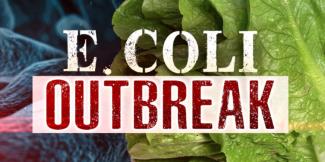 Dr. Timothy D. Lytton a Distinguished University Professor of law at Georgia State University recently published an opinion on aspects of FDA oversight of leafy green production. There is a long history of outbreaks of Shiga toxin producing E.coli (STEC) attributed to leafy greens with successive Federal administrations attempting to devise regulations and performance standards focusing on testing procedures rather than practical preventive modalities. Dr. Timothy D. Lytton a Distinguished University Professor of law at Georgia State University recently published an opinion on aspects of FDA oversight of leafy green production. There is a long history of outbreaks of Shiga toxin producing E.coli (STEC) attributed to leafy greens with successive Federal administrations attempting to devise regulations and performance standards focusing on testing procedures rather than practical preventive modalities.
The Leafy Greens Marketing Agreement was initiated in 2006 following outbreaks of food-borne infection associated with spinach. Various incidents occurred in subsequent years with the most recent extensive series of cases in 2017 and 2018, traced back to romaine lettuce cultivated in the costal region of California and the Yuma Valley of Arizona. We are now in an era of whole-genome sequencing and FoodNet and other databases. Multistate outbreaks of food-borne infection can be rapidly recognized and traced back to source given intensity of diagnostic and epidemiologic procedures.
It does not take much imagination and perspective to recognize that the source of STEC contamination is the intestinal tract of ruminants housed on concentrated animal feeding operations (CAFOs). Run-off results in contamination of both surface and ground water used to irrigate fields of leafy greens. Growers of lettuce and spinach have been attempting to separate their operations from CAFOs under the guidance of both academia and government agencies but their efforts may be too little and too late.
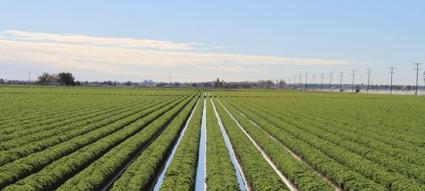 There is no guarantee that measures adopted in 2019 and extending into 2020 will eliminate the inherent problem of contamination. Growers will have to recognize that proximity to a CAFO is incompatible with food safety given that they are cultivating and distributing a product that is consumed raw. In the absence of a practical method of decontaminating green produce there can be no assurance that measures adopted to date will prevent subsequent seasonal outbreaks among U.S. consumers. Monitoring a small proportion of produce using insensitive protocols does not eliminate pathogens. Identifying produce by farm or even field only facilities trace-back after the effect. These palliative measures create the illusion of control. There is no guarantee that measures adopted in 2019 and extending into 2020 will eliminate the inherent problem of contamination. Growers will have to recognize that proximity to a CAFO is incompatible with food safety given that they are cultivating and distributing a product that is consumed raw. In the absence of a practical method of decontaminating green produce there can be no assurance that measures adopted to date will prevent subsequent seasonal outbreaks among U.S. consumers. Monitoring a small proportion of produce using insensitive protocols does not eliminate pathogens. Identifying produce by farm or even field only facilities trace-back after the effect. These palliative measures create the illusion of control.
If the farmers cultivating leafy greens cannot devise a simple and effective method of decontaminating their product at a packing plant using advanced technology such as electron beam treatment then they will be obliged to segregate their fields and irrigation systems from potential contamination by CAFOs.
For too long the FDA has ignored reality and issued vague suggestions for incremental improvement. The Agency has issued well-meaning but unconvincing statements pledging to "prioritize work with leafy greens stakeholders to develop better water standards and testing protocols."
Dr. Lytton notes that progress is slow and unlikely to yield quick answers. Either realistic measures will be adopted, or consumers will continue to be subject to reoccurring outbreaks of STEC infection.

|
Bureau of Land Management to Relocate DC Employees
|
03/11/2020 |
|
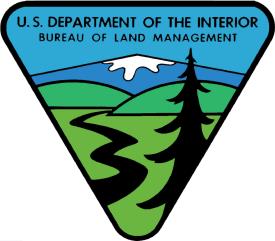 In a strategy reminiscent of the transfer of the USDA-Economic Research Service from DC to Kansas City, the Bureau of Land Management is relocating employees this summer to a western location. According to an article by Rebecca Beitsch in The Hill on March 5th 25 employees will work at the new headquarters in Grand Junction, CO. and 150 additional workers would be dispersed among other western locations. Eighty employees have agreed to move but eighty-seven in the DC office have indicated that they will resign and eighteen previously left the Department of Interior after the plans for the relocation were announced. In a strategy reminiscent of the transfer of the USDA-Economic Research Service from DC to Kansas City, the Bureau of Land Management is relocating employees this summer to a western location. According to an article by Rebecca Beitsch in The Hill on March 5th 25 employees will work at the new headquarters in Grand Junction, CO. and 150 additional workers would be dispersed among other western locations. Eighty employees have agreed to move but eighty-seven in the DC office have indicated that they will resign and eighteen previously left the Department of Interior after the plans for the relocation were announced.
The move was criticized by retirees from the Agency and also by Democratic lawmakers who predicted that career employees with experience would leave the Agency.
Interior Secretary David Bernhardt told a Senate Committee with oversight on Wednesday March 6th that the Agency would find qualified candidates to replace those who have resigned. A retired senior administrator Steve Ellis stated “the relocation removes the Bureau of Land Management from the direct influence in the Nations capital and would critically weaken the Agency’s ability for career leadership and their staff to collaborate across disciplines and work closely with other key Agencies.” He added “the Administration is solving a problem that does not exist while creating new ones”.
 Chairman of the House Natural Resources Committee Rep. Raul Grijalva (D-AZ) stated, “the Trump Administration is destroying the Bureau of Land Management by mistreating its staff and politicizing its mission and then lying to Congress and the public about the damage it is causing. This is what happens when you put fossil-fuel industry lobbyist and anti-public land extremist in charge of government Agencies”. Chairman of the House Natural Resources Committee Rep. Raul Grijalva (D-AZ) stated, “the Trump Administration is destroying the Bureau of Land Management by mistreating its staff and politicizing its mission and then lying to Congress and the public about the damage it is causing. This is what happens when you put fossil-fuel industry lobbyist and anti-public land extremist in charge of government Agencies”.
The Department of the Interior believe that relocation of the Bureau will improve services since most of the land administered by the Agency, 250 million acres in extent , is located in western states. The Bureau is charged with managing recreation, grazing and energy production on public land estimated to cover one eighth of the Nation’s land area.

|
Nothing Positive for U.S. Agriculture From Presidential Visit to India
|
03/03/2020 |
|
 A posting on EGG-NEWS on Friday February 28th echoed the sentiments of Dr. Gregg Doud, Chief Agricultural Negotiator in the Office of the U.S. Trade Representative, “that India was the most protectionist of nations in the world”. This is demonstrated by the fact that President Trump returned from his recent visit to India without a trade agreement. Prospects of a deal were dampened by the news that U.S. Trade Representative Ambassador Robert Lighthizer had cancelled plans to visit the nation in advance of the visit by the President. A posting on EGG-NEWS on Friday February 28th echoed the sentiments of Dr. Gregg Doud, Chief Agricultural Negotiator in the Office of the U.S. Trade Representative, “that India was the most protectionist of nations in the world”. This is demonstrated by the fact that President Trump returned from his recent visit to India without a trade agreement. Prospects of a deal were dampened by the news that U.S. Trade Representative Ambassador Robert Lighthizer had cancelled plans to visit the nation in advance of the visit by the President.
Following negotiations in New Delhi, a joint statement was issued confirming that President Trump and Prime Minister Modi had “agreed to promptly initiate ongoing negotiations which they hope could become Phase-One of a comprehensive bilateral trade agreement that reflects the true ambition and full potential of bilateral commercial relations, advancing prosperity, investment and job creation in both countries”.
During the visit of President Trump, farmers protested against imports of U.S. chicken and ethnic riots occurred.
India may lose benefits under the Generalized System of Preferences that favors the nation enjoying a positive trade balance. During 2018-2019 India exported $38.8 billion in goods to the U.S. while importing $26.3 billion in value. The U.S. is India’s second trading partner after China and exports to our nation could exceed $50 billion in 2020. Are they willing to risk tariffs and other punitive measures?

|
Budget Cuts for USDA-ERS?
|
02/27/2020 |
|
 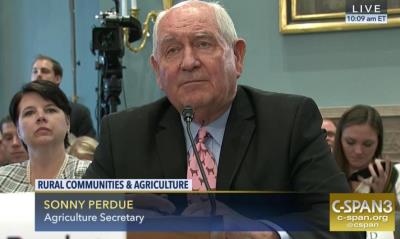 The proposed Federal budget for fiscal 2021 includes a 27 percent reduction for the USDA-ERS from $85.3 million in fiscal 2020 to $62.0 million in fiscal 2021. The reduction would impact research, publications and staff. The proposed Federal budget for fiscal 2021 includes a 27 percent reduction for the USDA-ERS from $85.3 million in fiscal 2020 to $62.0 million in fiscal 2021. The reduction would impact research, publications and staff.
It is noted that USDA-ERS was subjected to a forced relocation from Washington, DC. to Kansas City resulting in considerable attrition of personnel in 2019.
It is hoped that Congress will restore funding to a level that allows the ERS to maintain their high level of service and to conduct research, irrespective of whether the results may conflict with current White House policy.

|
Lettuce Growers Striving to Eliminate Foodborne Bacterial Contamination
|
02/07/2020 |
|
 In 2018 and 2019, the Centers for Disease Control determined that Romaine lettuce from the Yuma Valley, CO. and from coastal regions of California were responsible for E. coli and Salmonella infections. In 2018 and 2019, the Centers for Disease Control determined that Romaine lettuce from the Yuma Valley, CO. and from coastal regions of California were responsible for E. coli and Salmonella infections.
It was apparent that runoff from concentrated animal feeding operations contaminated with Shiga-toxin producing E.coli (STEC) was used to irrigate lettuce fields resulting in infection of consumers. Industry groups in collaboration with Land-grant universities, consultants and federal agencies developed programs to improve the safety of leafy greens. The following action was taken:-
- Untreated surface water is no longer used for irrigation.
- Distances from CAFOs have been increased in accordance with guidelines established by the LGMA.
- Farmers in California and Arizona are now provided with guidance and training relating to practices for cultivation and packing that contribute to food safety. In this respect the Western Growers and the Growers’ and Shippers’ Association of Central California are involved in field extension and training activities.
- The FDA will conduct a structured surveillance program to determine the presence of STEC and Salmonella during 2020. It is hoped that early detection will enable federal and state agencies to divert contaminated product from the market.
- Concurrently the Center for Product Safety is funding research to the value of $29 million on 72 research projects with the involvement of the University of Arizona Cooperative Extension Service. Following the November 2018 outbreak the Romaine Task Force was established to investigate aspects of supply contributing to potential infection and prevention.
The Leafy Greens Safety Coalition includes major chains and QSRs focusing on prevention, traceability, labeling and investigation of food-borne outbreaks from produce.
It remains to be seen whether producers in Western states can effectively prevent food-borne infections through their improvements. The incidence of outbreaks attributed to leafy greens in 2020 will be a measure of the efficacy of various practices introduced since the 2018 harvest season.
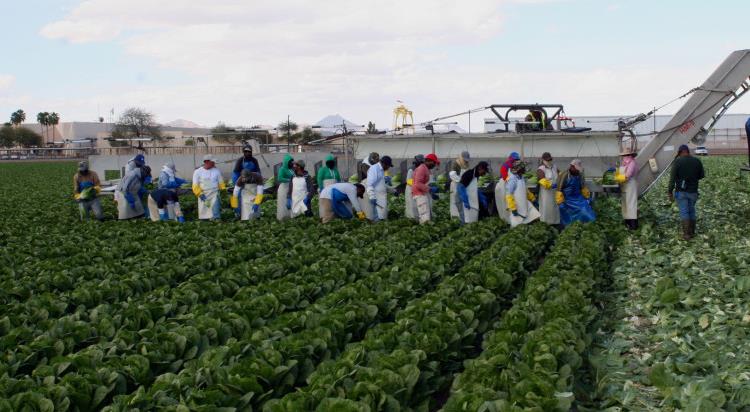

|
Influenza a Greater Concern in the U.S. than Coronavirus
|
02/06/2020 |
|
 The Centers for Disease Control and Prevention estimate 19 million cases of influenza this season. The exposure to various 2019/2020 influenza strains has resulted in 180,000 hospitalizations and at least 10,000 fatalities among all ages. In contrast to date the U.S. has confirmed 11 cases of Hunan coronavius, all associated with travel from China. The Centers for Disease Control and Prevention estimate 19 million cases of influenza this season. The exposure to various 2019/2020 influenza strains has resulted in 180,000 hospitalizations and at least 10,000 fatalities among all ages. In contrast to date the U.S. has confirmed 11 cases of Hunan coronavius, all associated with travel from China.
During the present season influenza B has emerged as a predominant serotype. According to Dr. Andi L. Shane, Professor and Chief of Pediatric Infectious Diseases at Emory University School of Medicine, the strain has not been seen in the U.S. for 27 years. This means that those born during this century have had no previous exposure and therefore do not carry antibodies unless vaccinated.
Public health authorities involved in selection of influenza strains for the current season inclu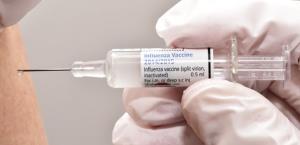 ded H1N1 and H3N2 strains of influenza A and an influenza B strain for this season. The B component is only 60 percent homologous with the Victoria-origin virus in circulation. In the 25 to 65 year age group, influenza B is responsible for 43 percent of cases diagnosed, but only 23 percent of the cases in the age group above 65. Fortunately, there are fewer cases of influenza A H3N2 strain, which is responsible for severe complications in the elderly. ded H1N1 and H3N2 strains of influenza A and an influenza B strain for this season. The B component is only 60 percent homologous with the Victoria-origin virus in circulation. In the 25 to 65 year age group, influenza B is responsible for 43 percent of cases diagnosed, but only 23 percent of the cases in the age group above 65. Fortunately, there are fewer cases of influenza A H3N2 strain, which is responsible for severe complications in the elderly.
Generally, experience and surveillance of circulating strains by the WHO allows the incorporation of appropriate strains into vaccines. Occasionally nature throws a curveball with the emergence and dissemination of either an influenza A or B strain different from those incorporated into the vaccine.
EGG-NEWS has repeatedly advised producers to implement preventive influenza vaccination for all personnel in early fall, especially those in direct contact with flocks. In the unlikely event that a worker infected with a human strain comes into contact with a flock incubating low pathogenicity avian influenza, a recombinant event might take place resulting in the emergence of an avian strain transmissible to humans. Influenza vaccination reduces absenteism and reduces medical costs especially with complications.

|
Origin of the Wuhan Coronavirus Under Investigation
|
02/06/2020 |
|
While the number of infected individuals in China now exceeds 60,000 with over 1,000 fatalities, scientists continue to investigate the source of the infective agent termed COVID-19 formerly 2019-nCoV. Based on sequencing, it was concluded that an animal reservoir, possibly a snake, was the reservoir of the virus.
Epidemiologic data implicated the Hunan Seafood Wholesale Market in Wuhan with early cases identified in late December leading to the closure of the facility on January 1st 2020. Recently The Lancet published a report that the index case may have been identified on December 1st and that the individual had no connection to the seafood market.
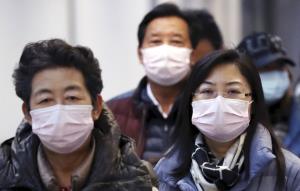 There is no question that the SARS outbreak, also caused by a coronavirus in 2003, was initially a zoonosis with bats serving as a reservoir transmitting the infection to palm civets that are consumed as a delicacy in China and are sold in wet markets. It is possible that a complex host interaction has led to the emergence of the Wuhan coronavirus that may by now be transmissible among humans following mutation. There is no question that the SARS outbreak, also caused by a coronavirus in 2003, was initially a zoonosis with bats serving as a reservoir transmitting the infection to palm civets that are consumed as a delicacy in China and are sold in wet markets. It is possible that a complex host interaction has led to the emergence of the Wuhan coronavirus that may by now be transmissible among humans following mutation.
The Washington Times reported on a conspiracy theory that the virus escaped from a presumed Wuhan national biosafety laboratory. A mildly pathogenic coronavirus, hardly more deadly in its effect than influenza, would most certainly not be a candidate for a biological weapon and without obvious substantiation, the theory is soundly rejected.
The actual incidence rate of Wuhan coronavirus in China is, in all probability, 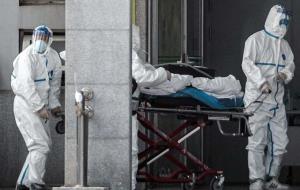 underestimated. On February 12th authorities in Hubei Province with a population of 59 million changed the definition of the disease to include clinically affected cases not confirmed by antigen detection. This led to a surge in reported cases but not necessarily an increase in actual incidence. Dr. Scott Gottleib former Administrator of the FDA noted in a CNBC interview on February 3rd that scarcity of testing reagents and kits is probably limiting confirmation of a diagnosis to the most seriously affected patients showing atypical pneumonia. It is also presumed that most of the fatalities occur in the elderly or those with predisposing conditions. Notwithstanding this reality the mortality rate , depending on divisor, is apparently far higher in Wuhan than other areas of China or in Japan and Korea underestimated. On February 12th authorities in Hubei Province with a population of 59 million changed the definition of the disease to include clinically affected cases not confirmed by antigen detection. This led to a surge in reported cases but not necessarily an increase in actual incidence. Dr. Scott Gottleib former Administrator of the FDA noted in a CNBC interview on February 3rd that scarcity of testing reagents and kits is probably limiting confirmation of a diagnosis to the most seriously affected patients showing atypical pneumonia. It is also presumed that most of the fatalities occur in the elderly or those with predisposing conditions. Notwithstanding this reality the mortality rate , depending on divisor, is apparently far higher in Wuhan than other areas of China or in Japan and Korea
The real impact of Wuhan Coronavirus infection lies in the economic disruption associated with quarantine of 16 metropolitan areas involving over 50 million people concurrent with and subsequent to the Lunar New Year. Disruption of international travel and breakdown of supply chains will most certainly reduce the GNP of China and will surely spill over to other nations in Asia, Europe, and the Americas.
Economists are basing predictions on the 2003 outbreak of SARS, a condition which was less infective but more virulent than the Wuhan Coronavirus. Commentator Dr. Steve Liesman a contributing economist for CNBC noted that in 2020 China is a more important global force than it was in 2003 and the disruption of trade and supply chains will reduce GNP in China by as much as two percent and will have knock-on effects on China’s trading partners.

|
Navigable Waters Protection Rule Replaces WOTUS
|
01/26/2020 |
|
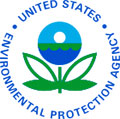 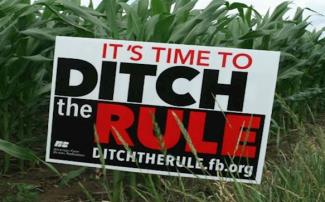 The Navigable Waters Protection Rule has officially superseded the Waters of the United Stares (WOTUS) Rule introduced in 2015 by the previous Administration. The Navigable Waters Protection Rule has officially superseded the Waters of the United Stares (WOTUS) Rule introduced in 2015 by the previous Administration.
According to Andrew Wheeler, Administrator of the EPA, “After decades of landowners relying on expensive attorneys to determine what water on their land may or may not fall under Federal regulations, the new Navigable Waters Protection Rule strikes the proper balance between Washington and the states in managing land and water resources, while protecting our nation’s navigable waters, and it does so within the authority Congress provided.”
The Navigable Waters Protection (NWP) Rule defines four categories of waters regulated under the Clean Water Act. These comprise:
- The territorial seas and traditional navigable waters
- Perennial and intermittent tributaries
- Lakes, ponds, and impoundments
- Wetlands adjacent to jurisdictional waters
The rule contains twelve exemptions from jurisdiction under the Clean Water Act and specifically in relation to farmland “features that only contain water in direct response to rainfall, farm and roadside ditches, stock watering ponds and waste treatment systems.”
Publication of the new rule was welcomed by farm groups with Senator Pat Roberts (R-KS) who opined, “the original WOTUS rule was nothing but a severe regulatory overreach.”
The rule will face legal challenge by environmental advocacy organizations including the Natural Resource Defense Council that claims, “the NWP rule neglects established science and poses substantial new risks to people’s health and the environment.”

|
Georgia Appeals Court Supports OSHA on Injury Citation
|
01/19/2020 |
|
 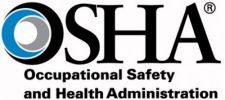 The U.S. Court of Appeals in Atlanta denied a petition by Packers Sanitation Services, a cleaning contractor in a case involving injury of a worker in a broiler processing plant. An employee of the company contracted to perform cleaning services was injured in the course of duties. The Occupational Safety and Health Administration [OSHA] cited the contractor for two violations involving safe walking-working space and inadequate guards on machinery. The U.S. Court of Appeals in Atlanta denied a petition by Packers Sanitation Services, a cleaning contractor in a case involving injury of a worker in a broiler processing plant. An employee of the company contracted to perform cleaning services was injured in the course of duties. The Occupational Safety and Health Administration [OSHA] cited the contractor for two violations involving safe walking-working space and inadequate guards on machinery.
The decision in this case has relevance to egg packing operations:-
- Equipment should be locked-out before cleaning commences.
- Workers should be appropriately trained and supervised in their cleaning activities.
- Equipment should never be operated without protective covers.
- Appropriate personal protective gear must be issued and worn by cleaners including bump caps.
- Supervisors and managers should consistently review equipment and operations to preempt accidents.
- Worker committees are often helpful in maintaining awareness of safety and identifying defects and hazards that are frequently evident to those performing cleaning tasks.
- Any injury or accident must be documented in conformity with OSHA requirements.
The OSHA will investigate injuries resulting in referral to medical facilities. Irrespective of whether a victim of an accident involved in cleaning is employed by the company or a contractor negative publicity could accrue to the egg-packer and lawsuits will be an inevitable consequence of an incident.
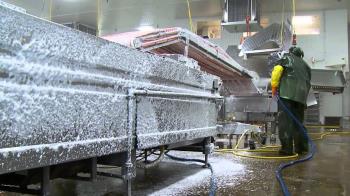

|
Supermarket Chains Investing in Technology
|
01/14/2020 |
|
 In order to implement effective click-and-collect and curbside pickup programs, supermarkets are adopting packaged technology from specialist developers. In order to implement effective click-and-collect and curbside pickup programs, supermarkets are adopting packaged technology from specialist developers.
Lowes’ Foods has partnered with Radius Networks for the FlyBuy Pickup Service using proprietary AI technology. FlyBuy Pickup allows customers to communicate with the store to facilitate collection. Shoppers are notified when an order is ready and customers can indicate their proximity to a store and the time to collect an order.
Jeff Baskin, Executive VP of Global Partnerships at Radius Networks, noted “Our goal at Radius Networks is to help our partners improve the customer and staff experience with the growth of click-and-collect programs.” He added “We have built our solution to provide customers with location updates along their journey and provide accurate updates to Lowes’ Foods so that they can be as efficient as possible.”
It is understood that H-E-B and Whole Foods have similar efficient systems limiting customer waiting time.
Weis Markets and Brookshire Grocery Company have established relationships with Mercatus to improve online grocery shopping. The Mercatus Aisle One system has designed a “personalization intelligence engine” to analyze customer data including dietary preferences and demographics,  providing services to the shopper. There are obvious advantages to Weis and Brookshire, who operate a Mercatus integrated commerce platform. Aisle One will be integrated to achieve faster check-out and make more optimal a use of in-store associates preparing orders. It is noted that Savemart, WinCo Foods, Piggly Wiggly, and Giant Tiger use the Mercatus E-commerce platform. providing services to the shopper. There are obvious advantages to Weis and Brookshire, who operate a Mercatus integrated commerce platform. Aisle One will be integrated to achieve faster check-out and make more optimal a use of in-store associates preparing orders. It is noted that Savemart, WinCo Foods, Piggly Wiggly, and Giant Tiger use the Mercatus E-commerce platform.
It is evident that to be successful in the retail food market, supermarket chains have to provide superlative service on multiple levels. This requires the application of advanced technology including remote sensing and robotics but with integration of systems that benefit the chain

|
Potential Impact of Listeria Outbreak on Hard Cooked Peeled Egg Sales
|
01/02/2020 |
|
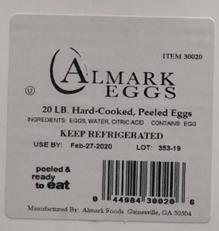 The recent recall of hard-cooked peeled eggs and products (HCPE) followed trace-back of a total of seven cases of listeriosis diagnosed in 2017 and in 2019 among five states. Although the Georgia plant implicated in the outbreak has been closed, production has been shifted to a sister facility in Arizona maintaining company output. There are numerous plants processing hard cooked peeled eggs in the U.S. and total supply should not be adversely impacted. The obvious question is whether negative publicity might influence consumption in either the short or the intermediate term. The recent recall of hard-cooked peeled eggs and products (HCPE) followed trace-back of a total of seven cases of listeriosis diagnosed in 2017 and in 2019 among five states. Although the Georgia plant implicated in the outbreak has been closed, production has been shifted to a sister facility in Arizona maintaining company output. There are numerous plants processing hard cooked peeled eggs in the U.S. and total supply should not be adversely impacted. The obvious question is whether negative publicity might influence consumption in either the short or the intermediate term.
 Data assembled by Neilson and circulated by the American Egg Board on December 27th 2019 reflected the first eleven months of 2019. This data includes retail sales and presumably excludes the food service sector. Consumption of HCPE and derived salad products during the eleven months of 2019 should represent the basis of future comparisons as we move through the first quarter of 2020. Based on the data for January through December it is calculated that HCPE represented 1.0 percent of the volume of eggs sold at retail amounting to 33.8 million egg equivalents or 2.8 million dozen out of a total of 3.35 billion shell egg equivalents or approximately 0.3 billion dozen. It is significant that HCPE sales grew at an 8.7 percent rate in 2019 compared to the previous year. Shell egg sales in comparison increased by 1.5 percent and egg products sold at retail declined by 2.9 percent. Data assembled by Neilson and circulated by the American Egg Board on December 27th 2019 reflected the first eleven months of 2019. This data includes retail sales and presumably excludes the food service sector. Consumption of HCPE and derived salad products during the eleven months of 2019 should represent the basis of future comparisons as we move through the first quarter of 2020. Based on the data for January through December it is calculated that HCPE represented 1.0 percent of the volume of eggs sold at retail amounting to 33.8 million egg equivalents or 2.8 million dozen out of a total of 3.35 billion shell egg equivalents or approximately 0.3 billion dozen. It is significant that HCPE sales grew at an 8.7 percent rate in 2019 compared to the previous year. Shell egg sales in comparison increased by 1.5 percent and egg products sold at retail declined by 2.9 percent.
The dollar value of HCPE at retail was $167.4 million, three percent of the $6.1 billion for all retail sales of shell eggs and products. The average unit value of $2.96 per dozen for HCPE increased by 9.1 percent in 2019 compared to a 10.7 percent decline for shell eggs and a 4.2 percent drop for retail egg products. For the eleven-month reporting period, Neilson calculated that six-count packs represented 55 percent of sales followed by two-count packs at 23 percent. These categories increased by 12.0 percent and 16.1 percent respectively compared to 2018.
In reviewing retail channels for HCPE, conventional supermarkets and groceries represented 56 percent of volume, up by 5.3 percent from 2018. Convenience stores accounted for 16 percent of sales in 2019, up by 3 percent from 2018. The combination of club stores and dollar stores accounted for 27 percent of sales, up by 18.8 percent compared to the first eleven months of 2018.
In February 2020, EGG-NEWS will compare volumes, prices and trends in an attempt to determine whether the Listeria recall and consequential but muted adverse publicity had had any effect on consumption of HCPE.

|
|
|
Top
|
|